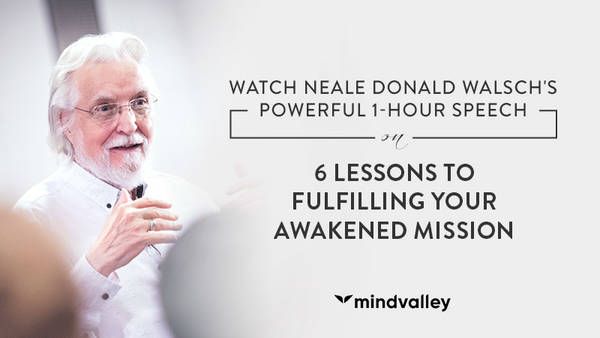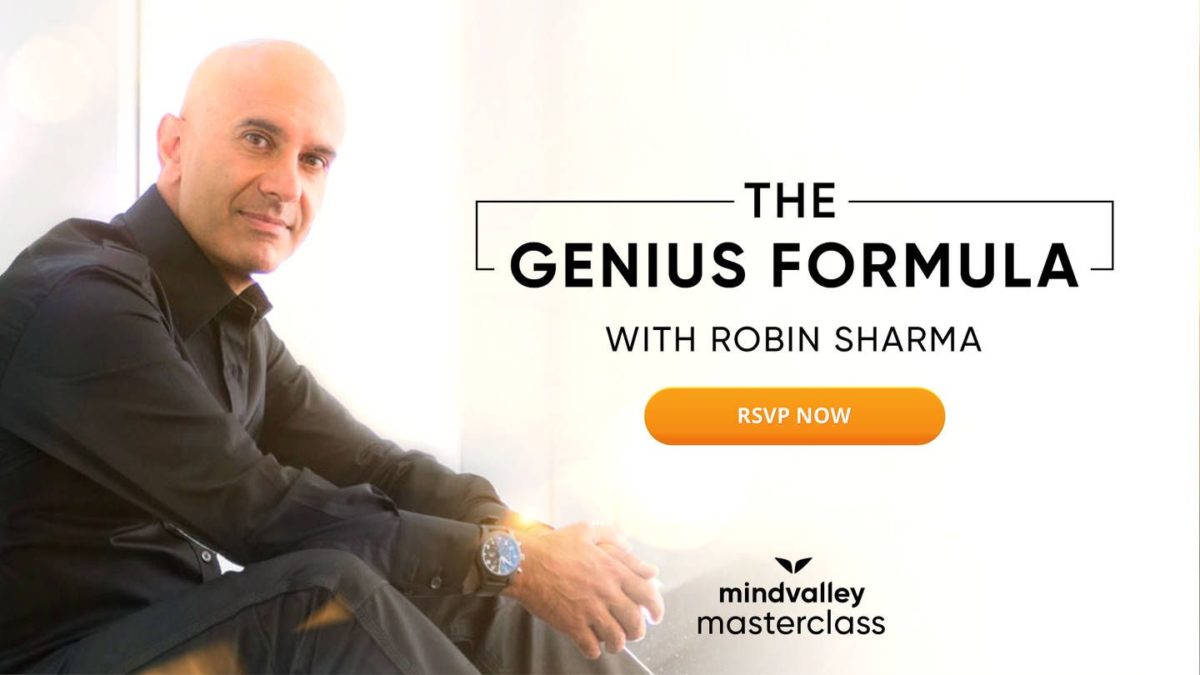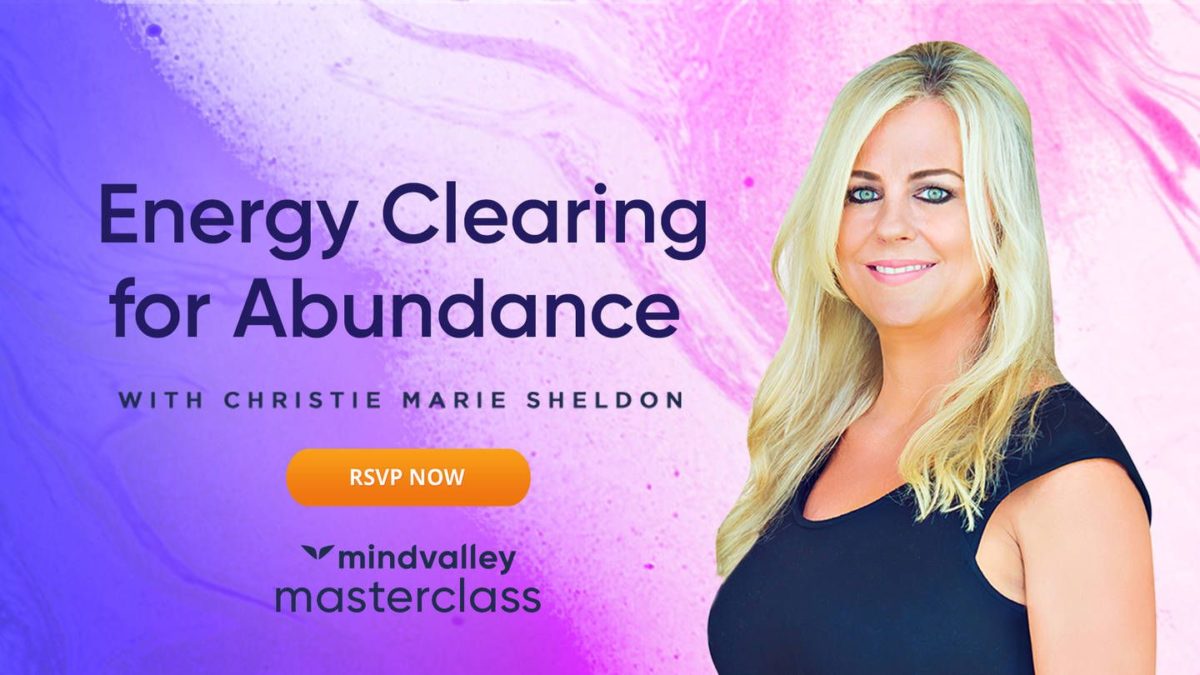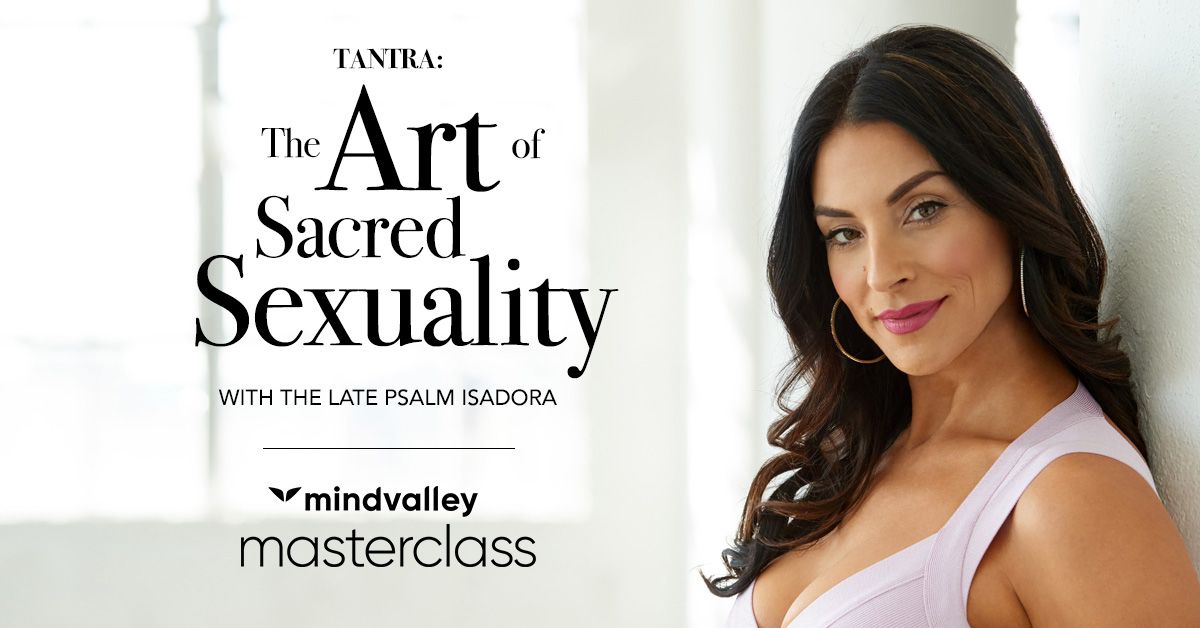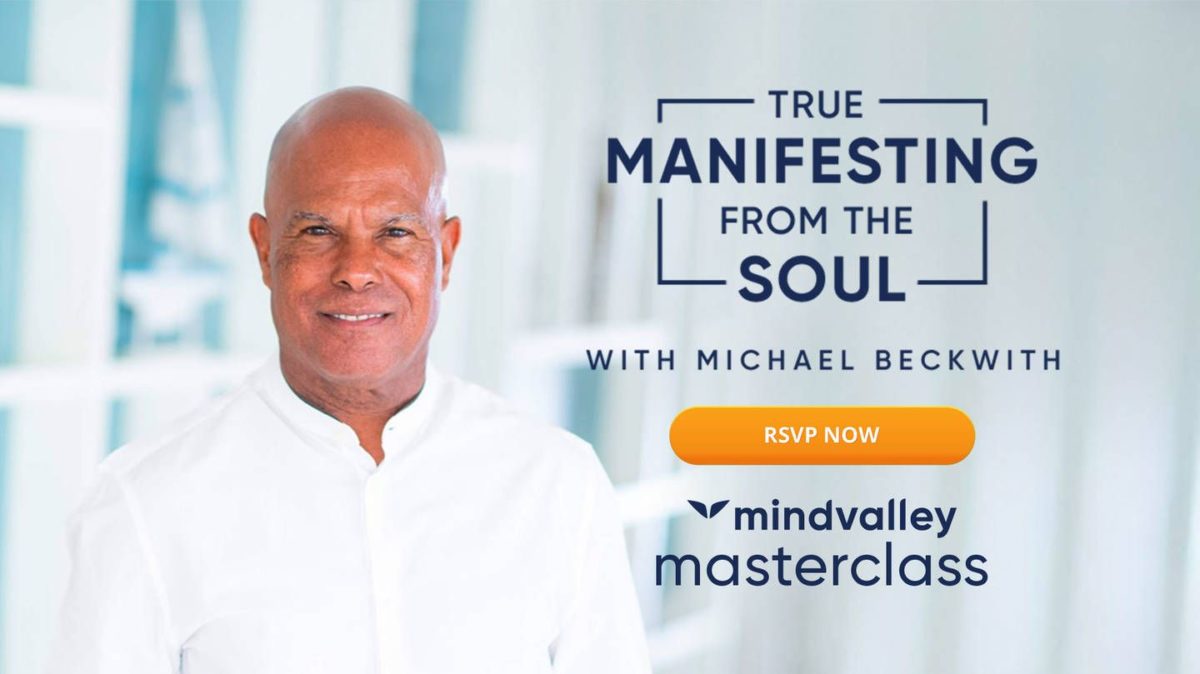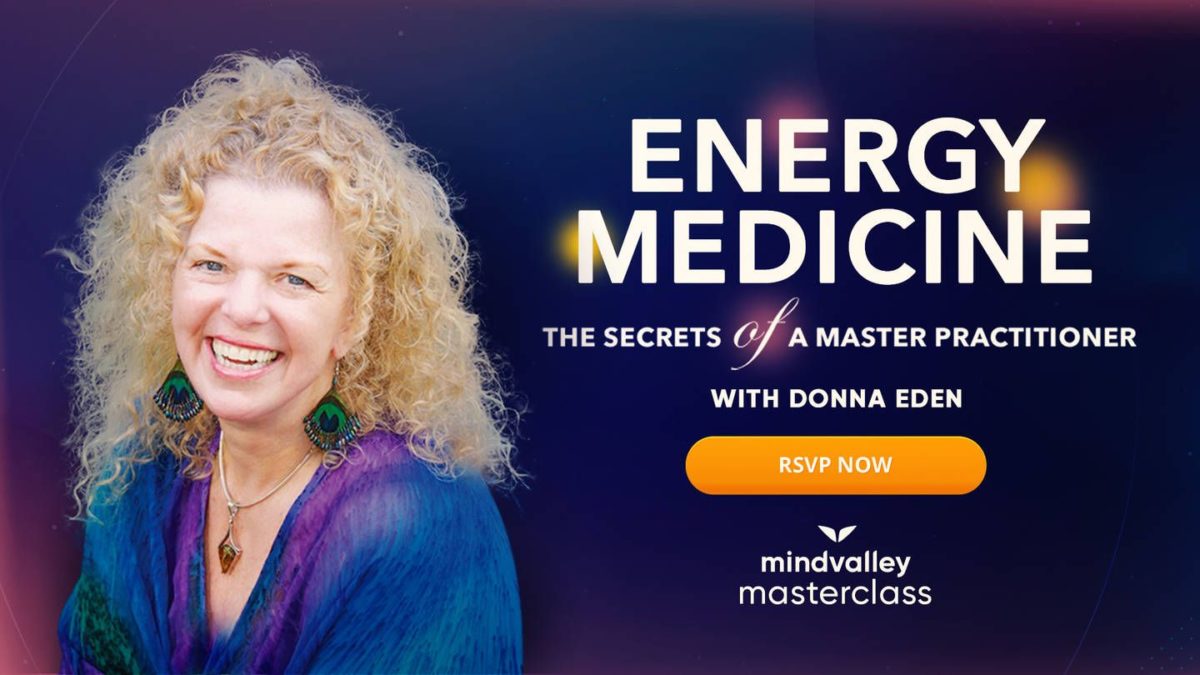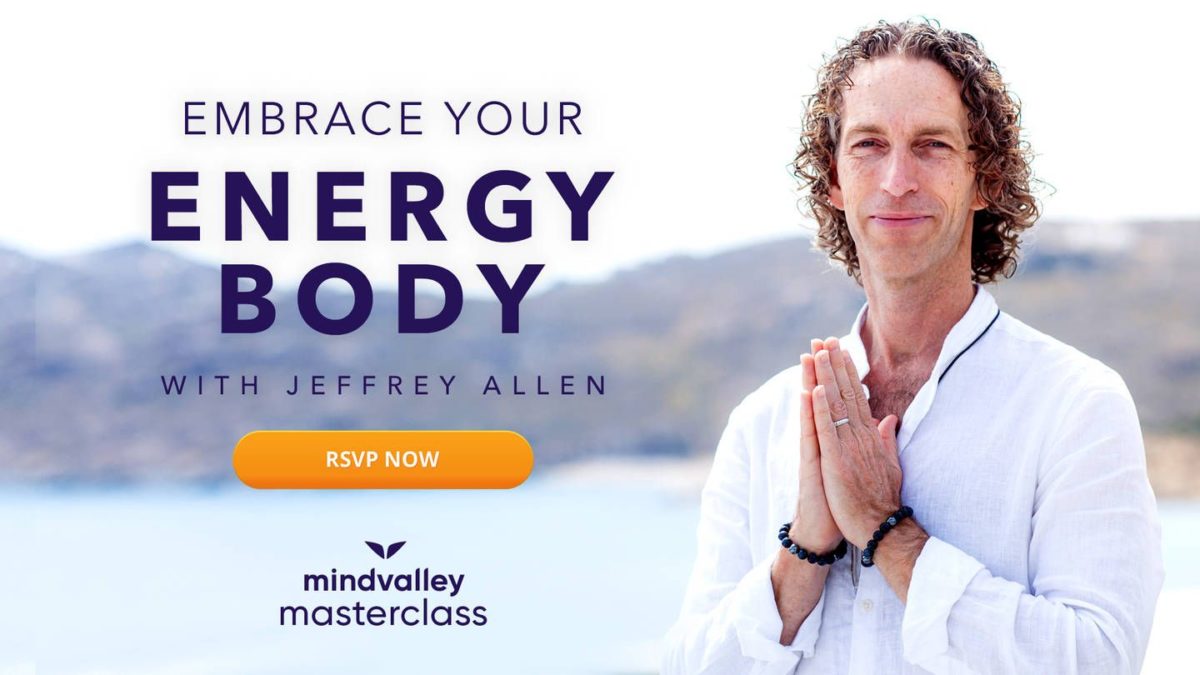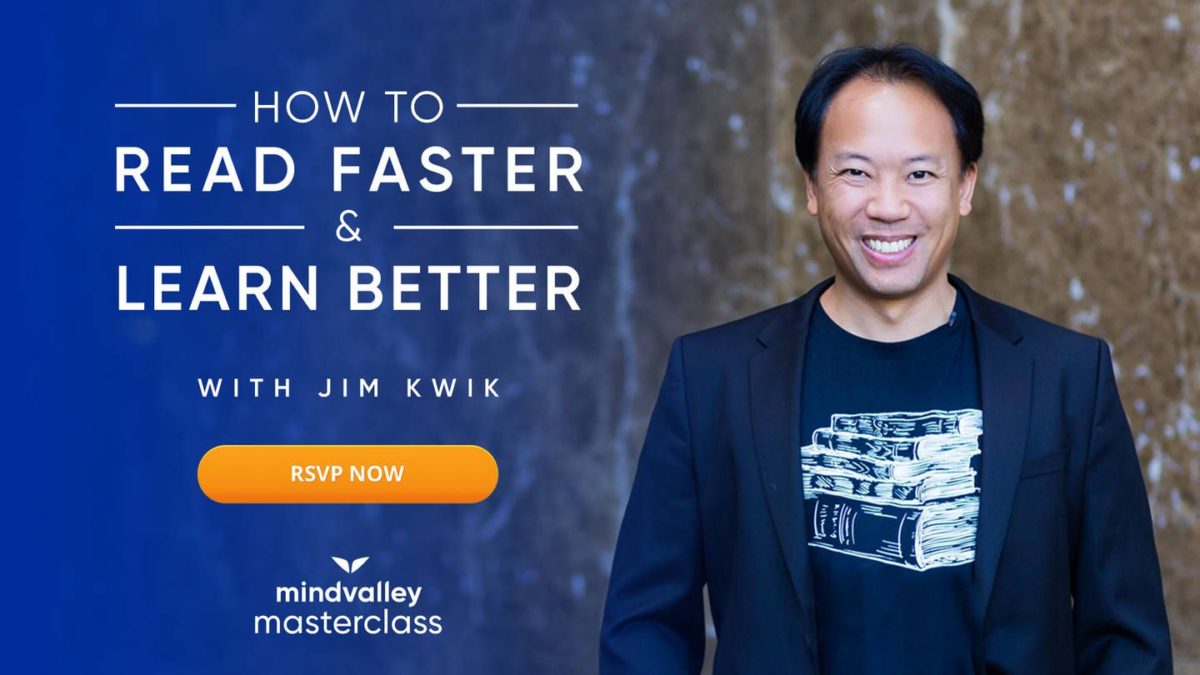3 Steps to Successful Personal Growth & Goal-Setting in the New Year 25 Dec 2019 11:18 AM (5 years ago)
There are a lot of New Year’s plans we make, only to break them come February. This may be a result of thinking short-term and setting unrealistic goals that are easy to shrug off when they aren’t met.
Strategic long-term planning allows you to shoot for personal and professional goals within reach.
As we continue into this New Year, reassess your resolutions that you have made for this year. Determine whether or not they are obtainable. Reserve some time to sit with yourself to figure out if those resolutions will truly best serve you and what new ones you can set that will.
The goals you set for yourself are meant to truly benefit you, not to fulfill expectations of what society thinks will make you happy.
Here are some ideas for successful goal planning
1. Short-Term Views to Reach Big Goals
Starting the year off by stating that you are going to accomplish a vague or unmeasurable goal will make it feel unobtainable.
 For instance, let’s say you tell yourself that this is the year that you are going to write a book. It may be easier to go the whole year being afraid even to start the book.
For instance, let’s say you tell yourself that this is the year that you are going to write a book. It may be easier to go the whole year being afraid even to start the book.
Why? Because of the feeling that if you don’t finish it, you haven’t accomplished the goal.
Instead, try telling yourself you will write a chapter a month this year. Or sign up for a writer’s workshop to fine-tune your ideas with others.
If you have a large life event coming up that requires a large amount of attention, set out a timeline of benchmarks for yourself, so you continue to make progress.
If you are unable to keep up, enlist the help of others to make sure that it all gets done on time.
Discover the powerful tools you need to bend reality so you can achieve your life goals, in this FREE Masterclass>>
2. Personal Growth
Take a moment to ask yourself some of the following questions:
- What is my current lifestyle situation?
- How solid are my mental health and physical well-being?
- Do I find my professional life fulfilling?
Not all goal-setting should focus on a specific reward or financial gain. Evaluating what other realms of your life could use your attention to help you feel more fulfilled is a worthwhile activity. Committing to acts of service, adopting a spiritual practice, or an exercise routine in your daily schedule can all be rewarding in their own ways.
 Allow yourself to set goals that are fun and help to create long-lasting, healthy lifestyle changes. Daily practices, such as journaling, painting, or crafting, help to alleviate stress and are a creative outlet most people fail to give themselves in their busy schedules.
Allow yourself to set goals that are fun and help to create long-lasting, healthy lifestyle changes. Daily practices, such as journaling, painting, or crafting, help to alleviate stress and are a creative outlet most people fail to give themselves in their busy schedules.
Finding time seems too often to be a hindering factor but it is possible. For instance, a commitment to daily exercise will prolong your life, and you may improve both your mood and sleep.
3. Continuing Professional Education
It is possible that this is the year you finally set your sights on the promotion that you have been eyeing for years.
 Set SMART (specific, measurable, attainable, relevant and time-bound) goals to motivate you to move in the direction to make them come true.
Set SMART (specific, measurable, attainable, relevant and time-bound) goals to motivate you to move in the direction to make them come true.
If possible, set a meeting with your supervisor to discuss the direction you see yourself evolving with the company. See what you can do to get there.
Continuing your education within your professional field is a way to make yourself more competitive. It also garners experience by continuing to work within your current role.
Acquiring additional education can open up a new realm of opportunities and aid in broadening your career options.
Making Your Goals a Year-Long Process
You can still set goals for the year after the first month has come and gone. Ask yourself some prodding questions to help you to focus your goals that can add value to your life.
Don’t place unneeded stress upon yourself by making them unobtainable. Write down realistic goals and take pleasure in checking them off throughout the year.
Gain Instant Clarity On What You Really Want In Life – And Have It All
There’s a reason that so many brilliantly talented, naturally creative, intelligent and capable people never reach their potential, and it is, quite simply, a lack of direction.Even if you have a vague goal in mind, you still need a plan, a process to get you there.
You can have the most expensive, fastest car in the world, but if you set off without a clear idea of where you’re going, then the rusty old Beatle with a map and compass will beat you there every time.
If You're Ready To Experience The Extraordinary Life Design System That Gives YOU The Power To Author Your Ultimate Life, Then Join Jon & Missy Butcher's Free Masterclass
Where You will Learn:
 Are you stuck on the hamster wheel of life, instead of rushing towards your fullest potential? Discover how to escape the 3 soul-crushing reasons most people unknowingly cheat themselves of their greatest lives.
Are you stuck on the hamster wheel of life, instead of rushing towards your fullest potential? Discover how to escape the 3 soul-crushing reasons most people unknowingly cheat themselves of their greatest lives.
 Do you always set goals and rarely achieve them? It’s not your fault – traditional goal-setting is seriously incomplete! Discover how Lifebook empowers you to rapidly and consistently take charge of your life, and realize your every dream.
Do you always set goals and rarely achieve them? It’s not your fault – traditional goal-setting is seriously incomplete! Discover how Lifebook empowers you to rapidly and consistently take charge of your life, and realize your every dream.
 Experience the ‘Instant Clarity’ exercise: a powerful visualization exercise that guides you through your ideal day – and gives you instant clarity on who you really are, and what kind of life you really want to be living.
Experience the ‘Instant Clarity’ exercise: a powerful visualization exercise that guides you through your ideal day – and gives you instant clarity on who you really are, and what kind of life you really want to be living.
Step Into The New Year With A Crystal-Clear Vision For Your Ultimate Life
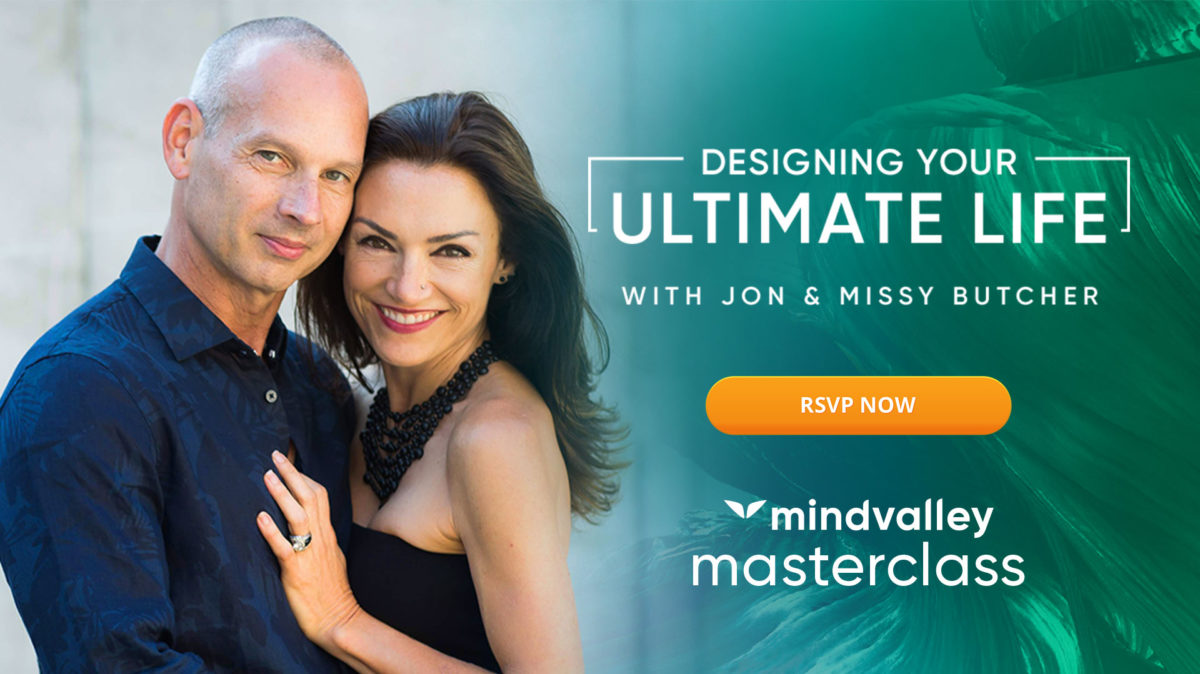
The post 3 Steps to Successful Personal Growth & Goal-Setting in the New Year appeared first on FinerMinds.
How Intuitive Are You? Take Our Intuition Test Today And Find Out! 7 Aug 2019 9:23 AM (5 years ago)
Do you ever wonder if you can rely on your intuition? Or even, whether you’re intuitive at all?
This is an important question as trusting our “6th sense” becomes more popular and sought after in work and relationships.
Are you someone who goes by the book relying solely on logic or do you follow your hunches and go with your gut feelings? Did you recently have a strong intuition about someone?
This quiz may not be as magical as the “Which Harry Potter Character Are You?” quiz but it’s way more beneficial, exciting, and will give you a quick glimpse of how you make decisions in your everyday life.
Some of you may not be 100% sure about what intuition is, so here the definition from Wikipedia: Intuition is the ability to acquire knowledge without recourse to conscious reasoning.
It’s a quick test and after you’re done share your thoughts and how did you score. Don’t worry, this isn’t a competition ;)
The Intuition Quiz for Women and Men
Get a piece of paper (or your phone) out and make sure to note down how many times you gave each answer. You can answer each of the questions with one of the 3 answers below:
- Never (1 point)
- Sometimes (2 points)
- Often (3 points)
Let’s get started!
1.) You are more of a spontaneous and ‘go with the flow’ type of individual, rather than a planner or an organizer.
2.) You evaluate your decisions on certain situations based on your gut feelings, which often produces the right outcome even if it’s not always practical or logical.
3.) When you meet someone new, you get an instant strong negative/positive vibes, which proves itself true in the long run.
4.) You have used your intuition to successfully invest in the stock market or enter contests and win.
5.) You know your life purpose or mission in this world
6.) Whenever you ignore a strong intuitive or gut feeling that’s trying to tell you something, you’ll tend to regret it later on.
7.) You rely on your intuition when making career-based decisions. This causes confusion among your co-workers as you always make the right decisions even with incomplete facts.
8.) You’re a creative person, and you have dreams of brilliant ideas for your art/plans/designs which you often execute to much success.
9.) You often feel worried/excited before something bad/good happens without prior knowledge that this incident was going to happen.
10.) You have had creative ideas for art/books/writing come to you from seemingly nowhere which you’ve acted on and gave you tremendous success.
11.) You can feel when a loved one is hurting, even if you don’t know yet that they are in pain.
12.) Your friends often describe you as “creative”.
13.) You often make major decisions against the advice of “experts” or your loved ones based on what you’ve “sensed”, which always worked out perfectly for you.
14.) You immediately know when someone is lying to you or telling the truth.
15.) You’ve had prior knowledge of a disaster, negative event, illness, or death that later came to pass.
16.) Whenever you feel confused about a direction you need to take or you need to make a big decision in life, you meditate, knowing that the right answers will come to you quickly through this.
17.) You feel a strong sense of connection with people you’ve never met or places you’ve never been to.
18.) You are a highly empathetic person and often ‘take on’ the feelings of those around you, whether you want to or not.
19.) You’ve had a premonition that saved you from danger.
20.) When lost, you’ve found the right path back or direction by using your intuition.
Your Intuition Score
After you’ve done the quiz, tally your score and read below for a full explanation of each of the 4 levels of intuition. You’ll discover what level of intuition you’re currently at – and if you’re below Level 4 – what you can aspire to be when you reach higher levels above you.
Discover How to Bend Reality and Create The Life You Want, Effortlessly in this FREE masterclass>>>
Level 1 – Warning System Intuition (Scores between 20-30)
 At this Level, your intuition will usually warn you when your life is at stake.
At this Level, your intuition will usually warn you when your life is at stake.
Let’s take the September 11th incident as an example. On this particular day, an unusually high number of people have claimed that they experienced dread going to work at the World Trade Centre.
Other examples include those who’ve experienced overwhelming feelings of dread just before making a journey. If you take a look at the results of the intuition contest on our blog post, you’ll see that 60-70% of all stories were at Level 1 – Warning System Intuition. This is where most people’s intuition stand.
While intuition is something we’re all are born with, many people, including yourself, do not get the chance to develop it. Your intuition has saved you from emergency situations, but you generally do not listen to your ‘gut feelings’ which you’re paying dearly for.
Don’t worry though, it’s never too late to start training and growing your intuitive abilities. If you do, you’re in for some amazing insights and a whole new level of well-being.
Level 2 – Social Intuition (Scores between 30-40)
 You mainly use your intuition to tap into the feelings of those around you and those whom you have close relationships with. You are a highly empathetic person and can easily understand those around you.
You mainly use your intuition to tap into the feelings of those around you and those whom you have close relationships with. You are a highly empathetic person and can easily understand those around you.
People at this Level have been known to finish the sentences of those they’re close to, sense danger that’s approaching them like a mother senses danger for her child and are even affected by the moods of their spouses or those close to them.
This Level intuition is common in close groups, but you are more attuned to it than others. Being on this Level is greatly beneficial for leaders, families and those in close relationships.
While you use your intuition to relate to those around you, you may also be ignoring it within other areas of your life. You have to keep training and enhancing your intuition skills if you want to experience the great benefits that come with it. If you keep ignoring these ‘gut feelings’ then they will no longer happen.
However, it’s not too late to get back in touch with your intuition. With a little practice and training, you’ll be able to hear and trust that “little voice” inside your head in no time and progress in other aspects of your life, such as your career, life purpose, and wealth.
Level 3 – Creative Intuition (Scores between 40-50)
 Thomas Edison once said, “Ideas come from space”.
Thomas Edison once said, “Ideas come from space”.
Many scientists and investors get their ideas and knowledge from having Level 3 intuition.
Look at the case of Elias Howe, the inventor of the sewing machine. He was struggling for years to come up with the design for the sewing machine needle. One night he had a dream where he was surrounded by cannibals who were holding spears with holes in them. This gave him the idea that the thread hole for the sewing needle had to be at the tip of the needle and not at the top. That was how the sewing machine was invented.
History is filled with countless stories of how Creative Intuition has aided in the creation of inventions, art, and designs. Even businesses have grown and flourished because of intuition.
As a Level 3 Intuitive, you are very attuned to your feelings as well as the world around you, which is an amazing skill. Being able to access your intuitive knowledge has helped not only you, but those around you get ahead in life as well.
You most likely use your intuition to not only improve on your relationships but also your career. Therefore you use intuition to creatively solve problems, make the right business decisions or create beautiful art, music or design.
You are most likely a very creative person who is successful in business or the arts.
Level 4 – Higher Purpose Intuition (Scores between 50-60)
 This is the most useful and the most amazing level of intuition. At this level, your subconscious mind works with you and your intuition guides you to move towards your life purpose.
This is the most useful and the most amazing level of intuition. At this level, your subconscious mind works with you and your intuition guides you to move towards your life purpose.
People with this ability are amazingly successful in the stock market or business. Take a look at Sir Richard Branson; he works with over 300 partners, yet he knows within 60 seconds of meeting a person whether to establish a professional relationship or not.
As a Level 4 intuitive, you already know that you should never doubt your inner voice, which guides you through all areas of your life. Therefore, you know the importance of honing and fine-tuning your intuitive skills and listening to your inner voice. You meditate daily, which helps you make all important decisions in your life instantly – from love to business to health.
You always listen to your intuition.
Do you ever wonder if you can rely on your intuition? Or even, whether you’re intuitive at all?
This is an important question as trusting our “6th sense” becomes more popular and sought after in work and relationships.
Are you someone who goes by the book relying solely on logic or do you follow your hunches and go with your gut feelings? Did you recently have a strong intuition about someone?
This quiz may not be as magical as the “Which Harry Potter Character Are You?” quiz but it’s way more beneficial, exciting, and will give you a quick glimpse of how you make decisions in your everyday life.
Some of you may not be 100% sure about what intuition is, so here the definition from Wikipedia: Intuition is the ability to acquire knowledge without recourse to conscious reasoning.
It’s a quick test and after you’re done share your thoughts and how did you score. Don’t worry, this isn’t a competition ;)
The Intuition Quiz for Women and Men
Get a piece of paper (or your phone) out and make sure to note down how many times you gave each answer. You can answer each of the questions with one of the 3 answers below:
- Never (1 point)
- Sometimes (2 points)
- Often (3 points)
Let’s get started!
1.) You are more of a spontaneous and ‘go with the flow’ type of individual, rather than a planner or an organizer.
2.) You evaluate your decisions on certain situations based on your gut feelings, which often produces the right outcome even if it’s not always practical or logical.
3.) When you meet someone new, you get an instant strong negative/positive vibes, which proves itself true in the long run.
4.) You have used your intuition to successfully invest in the stock market or enter contests and win.
5.) You know your life purpose or mission in this world
6.) Whenever you ignore a strong intuitive or gut feeling that’s trying to tell you something, you’ll tend to regret it later on.
7.) You rely on your intuition when making career-based decisions. This causes confusion among your co-workers as you always make the right decisions even with incomplete facts.
8.) You’re a creative person, and you have dreams of brilliant ideas for your art/plans/designs which you often execute to much success.
9.) You often feel worried/excited before something bad/good happens without prior knowledge that this incident was going to happen.
10.) You have had creative ideas for art/books/writing come to you from seemingly nowhere which you’ve acted on and gave you tremendous success.
11.) You can feel when a loved one is hurting, even if you don’t know yet that they are in pain.
12.) Your friends often describe you as “creative”.
13.) You often make major decisions against the advice of “experts” or your loved ones based on what you’ve “sensed”, which always worked out perfectly for you.
14.) You immediately know when someone is lying to you or telling the truth.
15.) You’ve had prior knowledge of a disaster, negative event, illness, or death that later came to pass.
16.) Whenever you feel confused about a direction you need to take or you need to make a big decision in life, you meditate, knowing that the right answers will come to you quickly through this.
17.) You feel a strong sense of connection with people you’ve never met or places you’ve never been to.
18.) You are a highly empathetic person and often ‘take on’ the feelings of those around you, whether you want to or not.
19.) You’ve had a premonition that saved you from danger.
20.) When lost, you’ve found the right path back or direction by using your intuition.
Your Intuition Score
After you’ve done the quiz, tally your score and read below for a full explanation of each of the 4 levels of intuition. You’ll discover what level of intuition you’re currently at – and if you’re below Level 4 – what you can aspire to be when you reach higher levels above you.
Discover How to Bend Reality and Create The Life You Want, Effortlessly in this FREE masterclass>>>
Level 1 – Warning System Intuition (Scores between 20-30)
 At this Level, your intuition will usually warn you when your life is at stake.
At this Level, your intuition will usually warn you when your life is at stake.
Let’s take the September 11th incident as an example. On this particular day, an unusually high number of people have claimed that they experienced dread going to work at the World Trade Centre.
Other examples include those who’ve experienced overwhelming feelings of dread just before making a journey. If you take a look at the results of the intuition contest on our blog post, you’ll see that 60-70% of all stories were at Level 1 – Warning System Intuition. This is where most people’s intuition stand.
While intuition is something we’re all are born with, many people, including yourself, do not get the chance to develop it. Your intuition has saved you from emergency situations, but you generally do not listen to your ‘gut feelings’ which you’re paying dearly for.
Don’t worry though, it’s never too late to start training and growing your intuitive abilities. If you do, you’re in for some amazing insights and a whole new level of well-being.
Level 2 – Social Intuition (Scores between 30-40)
 You mainly use your intuition to tap into the feelings of those around you and those whom you have close relationships with. You are a highly empathetic person and can easily understand those around you.
You mainly use your intuition to tap into the feelings of those around you and those whom you have close relationships with. You are a highly empathetic person and can easily understand those around you.
People at this Level have been known to finish the sentences of those they’re close to, sense danger that’s approaching them like a mother senses danger for her child and are even affected by the moods of their spouses or those close to them.
This Level intuition is common in close groups, but you are more attuned to it than others. Being on this Level is greatly beneficial for leaders, families and those in close relationships.
While you use your intuition to relate to those around you, you may also be ignoring it within other areas of your life. You have to keep training and enhancing your intuition skills if you want to experience the great benefits that come with it. If you keep ignoring these ‘gut feelings’ then they will no longer happen.
However, it’s not too late to get back in touch with your intuition. With a little practice and training, you’ll be able to hear and trust that “little voice” inside your head in no time and progress in other aspects of your life, such as your career, life purpose, and wealth.
Level 3 – Creative Intuition (Scores between 40-50)
 Thomas Edison once said, “Ideas come from space”.
Thomas Edison once said, “Ideas come from space”.
Many scientists and investors get their ideas and knowledge from having Level 3 intuition.
Look at the case of Elias Howe, the inventor of the sewing machine. He was struggling for years to come up with the design for the sewing machine needle. One night he had a dream where he was surrounded by cannibals who were holding spears with holes in them. This gave him the idea that the thread hole for the sewing needle had to be at the tip of the needle and not at the top. That was how the sewing machine was invented.
History is filled with countless stories of how Creative Intuition has aided in the creation of inventions, art, and designs. Even businesses have grown and flourished because of intuition.
As a Level 3 Intuitive, you are very attuned to your feelings as well as the world around you. Being able to access your intuitive knowledge helps not only you, but those around you get ahead in life as well.
You most likely use your intuition to not only improve on your relationships but also your career. Therefore you use intuition to creatively solve problems, make the right business decisions or create beautiful art, music or design.
You are most likely a very creative person who is successful in business or the arts.
Level 4 – Higher Purpose Intuition (Scores between 50-60)
 This is the most useful and the most amazing level of intuition. At this level, your subconscious mind works with you and your intuition guides you to move towards your life purpose.
This is the most useful and the most amazing level of intuition. At this level, your subconscious mind works with you and your intuition guides you to move towards your life purpose.
People with this ability are amazingly successful in the stock market or business. Take a look at Sir Richard Branson–he works with over 300 partners. However, he knows within 60 seconds of meeting a person whether to establish a professional relationship or not.
As a Level 4 intuitive, you already know that you should never doubt your inner voice, which guides you through all areas of your life. Therefore, you know the importance of honing and fine-tuning your intuitive skills and listening to your inner voice. You meditate daily, which helps you make all important decisions in your life instantly – from love to business to health.
You always listen to your intuition. Hence, the reason why you are where you are today, and know that what you are doing now is your divine purpose. By finding your life purpose, you fully contribute to the betterment of society.
Your subconscious mind gives you momentum and the push you need to help you complete your life purpose. You are a highly intuitive being that is making a maximum impact on the world.
The post How Intuitive Are You? Take Our Intuition Test Today And Find Out! appeared first on FinerMinds.
12 Healthy Snacks That Are Actually Delicious (with Recipes) 7 Aug 2019 7:48 AM (5 years ago)
Trying to resist the temptation of snacking in between meals is extremely hard. If you have skipped dinner or had an early bite, grabbing a sandwich or chips late at night is also something many of us do. But going for traditional favorite snacks like pizza, French fries, crisps, and other greasy and unhealthy foods may be very harmful to the organism.
Not only will you put on a few extra pounds, but you are at risk of getting high blood pressure, increased cholesterol levels, and potential diabetes. Luckily, there is a solution to the negative snacking habit, and that is making and preparing your very own healthy snacks.
Don’t be fooled. Many healthy snack options are actually quite tasty, savory, and juicy, and you can easily prepare them in a split of a second. What is more, by making healthy snacks by yourself, you know what you have put in the recipe, therefore you are aware of the nutritious benefits it has.
Here are some marvelous ideas on how to make healthy snacks that won’t cause you to pack on the pounds and that will help you satisfy your cravings.
1. A handful of nuts
Nuts are a fantastic nutritional boost. You can get nuts in every convenience store or greengrocer’s store, so even when you desire a quick snack during your break at work or at night you can easily get them.
Nuts are rich in healthy fat, protein, and fibers making them a perfect snacking option. Scientists have even proven that eating a handful of nuts per day is linked to reducing numerous heart conditions, prevents certain cancers, and may even help you shed pounds.
Almonds, cashews, hazelnuts, pine nuts, pistachios, and others are as delicious as nutritious.
2. Creamy hummus
Long enjoyed across the Middle Eastern and North African countries, hummus is a creamy, thick spread made out of mashed chickpeas or other types of beans.
This tasty dip is ideal for late-night snacking, or for any other time of the day for that matter. By eating hummus on a regular basis it will help you lower your cholesterol and triglycerides levels, and lessen the chances of developing cardiovascular diseases. Due to its healthy ingredients, you can combine hummus with other foods and not worry about getting fat.
The basic recipe includes chickpeas, garlic, olive oil, lemon juice, sea salt, and tahini. But you can add peppers, feta cheese, and cucumber to enhance the taste even more.
3. Powerful strenuous snacks

After hard and powerful training you need to eat quality food in order to fuel your organism and re-energize your muscles. Any type of protein snacks is great for keeping the organism strong as long as you input healthy ingredients.
Vanilla protein powder is a perfect ingredient for many delicious desserts and snacks. You can mix the protein powder with coconut flour, eggs, and chopped dark chocolate and make chocolate chip protein cookies. Then, you can make vanilla raspberry and cacao slices by adding protein powder, almonds, cashews, and frozen raspberries and blending it all in a juicer.
Amongst other ideal protein snacks recipes to munch on after your training these may be the yummiest, but you can experiment however you desire as long as you use quality ingredients.
4. Greek yogurt smoothie
Once the smoothie machines were introduced to the world, it completely revived the notion of making healthy and nutritious snacks. The process of preparing healthy snakes became much easier and quicker.
You can put almost anything in a smoothie, but maybe the best snacking option that will satisfy your hunger and sweet tooth at the same time is mixing fruit with Greek yogurt. Plain Greek yogurt is a delicious, nutrient-dense snack, rich in potassium, proteins, and calcium. And by adding antioxidant fruits like blueberries, raspberries, or cranberries and a little bit of honey, you have a perfect meal.
5. Fruit
Let’s face it, there is nothing healthier and more nutritious than fruit. Whenever you are feeling hungry and when there is nothing concrete in the fridge, you can always grab some fresh fruit in your pantry. And healthy snacks don’t need to be complicated at all. Bananas, kiwis, and grapes are perfect sources of magnesium, protein, vitamins and quality fats.
If one banana or kiwi cannot substitute your crave for snacking, you can make oatmeal. Oatmeals are magnificent to indulge in before crawling into bed. Just add warm water and milk, lots of fruit and there you have a great snack.

6. Flaxseed pudding
Sweets can be our worst enemy by being so delicious but unhealthy, especially when we desire to eat an abundance of it. It can be hard to make something that is both tasty, sweet and that have impressive health benefits, or can’t it? Actually, yes.
Flax seeds are first beneficial for weight loss and for controlling blood sugar levels, but in combination with cinnamon and cheese, it can be made into a delightful pudding.
Use 80 grams of cottage cheese, a tablespoon of cinnamon, a tablespoon of flax seeds, and there you have it.
7. A Caprese avocado toast
Caprese salad is a mix of mozzarella cheese, fresh tomatoes, basil leaves and drizzled over with olive oil. Even that can be a yummy snack, but you can boost up a little bit in order to make it more solid and help you to survive until lunch or dinner.
Use a whole grain bread, toast it, then cut fresh avocado, mozzarella cheese and tomatoes. Layer everything on the toast, and sprinkle it with sea salt. You can also roast turkey meat slices and add it to the mix.
This might sound like a complete meal, but it truly represents a refreshing snack that will keep you going throughout the day.
8. Crackers and cheese

You won’t find a person who doesn’t like to snack on these regardless of the time of the day because they are simply that delicious. Crackers are actually a type of snack that offers a balanced intake of proteins and carbs, whilst cheese keeps consistent blood sugar level in balance. However, a healthier version is with whole wheat crackers and low-fat cheese.
Other options are with multigrain or low-fat mini toast. Snacking on healthy crackers will also help you stay energized throughout the day without caffeine if you are one of those persons who has fallen in caffeine trap.
9. Pumpkin seeds
Pumpkin seeds should be your number one choice if you like to have a late night snack. Besides being rich in magnesium, low in calories, they are also rich in something called tryptophan that supports quality sleep.
Try adding apples or raisins with pumpkin seeds and your body will automatically route tryptophan to your brain encouraging it to make melatonin faster and making you really sleep like a baby.
Aside from improving your sleep disorder, pumpkin seeds will satisfy your cravings just enough to get your body ready for nutritiously packed breakfast.
10. Hard-boiled eggs

Eggs are definitely one of the foods that first pop up to our mind when we talk about foods rich in proteins. Eggs can be literally mixed every single food possible, therefore they are also quite often used in snacks. But have you ever thought of eating solely a hard-boiled egg for a snack? Yes, it might sound peculiar, but one hard-boiled egg replaces 6 grams of protein, enabling you to fight off cravings towards other food instantly.
If you are not keen on eating eggs in that way, you can slice it and make lettuce and cucumber salad, or make delicious scrambled-egg muffins. Eggs are generally incredibly filling and may reduce the number of calories you eat for many hours.
11. Kale chips
A member of the cabbage family, Kale is one of the healthiest and most nutritious plant foods on the whole planet. Kale leaves are loaded with fiber and antioxidants like quercetin and kaempferol which are responsible for decreasing your blood pressure and may reduce the risk of colon cancer.
What is more, a single cup of kale contains vitamins A, K, C, B6, calcium, copper, potassium, magnesium, and manganese, and very little fat. If that is not a super snack, then you will rarely find some veggie that can top that up. They may not be so enjoyable to eat raw, so make kale chips.
You will need one cup of bite-sized kale leaves, one tablespoon of olive oil, and three grams of salt. Mix all the ingredients in a bowl, use a spoon and gently place them on a tray and roast for 15 minutes.
12. Peanut butter

A true classic. Peanut butter may not be the healthiest snack there is, but if you opt for the unsalted version it is a true delight.
Two tablespoons of peanut butter contain seven grams of protein making it the ideal breakfast choice. But when you are in a need of a quick snack, it would be advisable to grab a whole grain toast and spread it with peanut butter rather than opening a bag of chips.
Basically, this snack is a good source of “healthy” fats because it contains a lot of unsaturated fats and it is also good fuel for the muscles after a demanding training.
Stock up your pantry and fridge with only healthy food options. Next time when you are in a need for a quick snack, resort only to some of these delicious and nutritious snacks and in no time will your mood be uplifted, feel happier and healthier.
The post 12 Healthy Snacks That Are Actually Delicious (with Recipes) appeared first on FinerMinds.
8 Effective Yoga Asanas To Keep Your Bones Healthy 1 Aug 2019 10:04 AM (5 years ago)
Yoga is a practical treatment option that is thought to have a lot of health benefits for those who practice it. Numerous studies have shown that regular yoga asanas can improve strength, balance, muscle mass, coordination, agility, and energy level. All these benefits can counter as Extra resources on the effects of osteoporosis in older adults.
Regular practice of a few simple yoga asanas can go a long way in keeping young and aging bones healthy. Certain yoga poses can stimulate vital physiological processes and you can learn this here now and cure dozens of ailments. Today, we will focus on eight effective yoga asanas to keep your bones healthy, yoga is one the most healthy practices, but even that it looks simple is important that you visit a professional in sports medicine to check that everything will be right with your muscle.
1. Standing Forward Bend (Hasta Padasana)

Also known as Uttanasana, the standing forward bend is a powerful yoga asana that stretches, strengthens, and tones the bones in the lower hips, legs, and spine. It also oxygenates and balances all parts of the body. This asana keeps an eye on the reproductive system to adjust the hormonal imbalances.
2. Side Angle Pose (Utthita Parsvakonasana)

The side angle pose is another useful asana which works to strengthen the bones. It also rectifies the hormonal imbalances by massaging the reproductive system and abdominal organs. This type of yoga pose tends to enhance blood circulation, consequently increasing the absorption of calcium and vitamin D in the bones. To find more supplements to boost your health, visit http://www.fennomedical.fi/paamiehet.
3. Locust Pose (Salabhasana)

Also known as the grasshopper pose, the locust yoga asana is another excellent exercise that strengthens your bones. It mostly focuses on the back and the legs. It is known to help relieve back pain. You can combine these exercises with some fitness products you’ll find on Healthcarebusinesstoday.com website.
Bridge Pose (Setu Bandhasana)
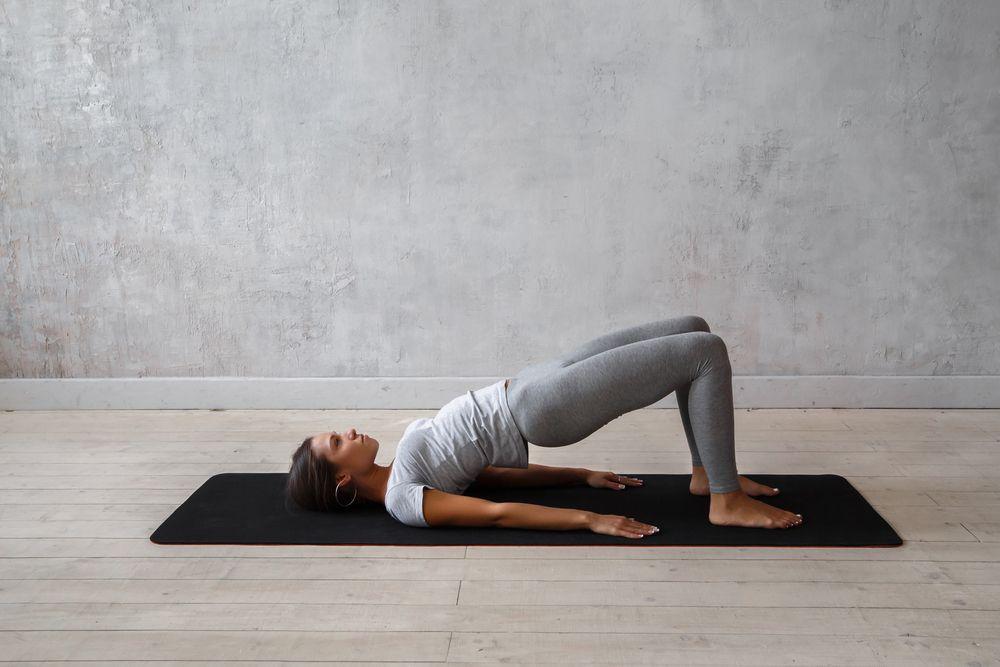
The bridge pose works primarily on strengthening the back and improving blood circulation. This asana is largely significant for women because it rectifies the estrogen level in their reproductive system. This therapeutic exercise also stretches the neck and chest.
5. Dolphin Pose (Ardha-Pincha-Mayurasana)

This yoga asana does a decent job when it comes to strengthening your spine. Not only does it lengthen your spine, but it also removes all the strain in it. It also stretches the bones and hamstrings, hence strengthening the legs.
6. Seated Twisting Pose (Ardha Mayurasana)

The seated twisting pose is one of the best yoga poses for stronger and healthier bones. It helps exert pressure on the spine while stimulating bone production. This one is exceptionally effective when it comes to relaxing the back and neck as well as promoting bone health.
7. Tree Pose (Vriksasana)

The tree pose is one of the most iconic yoga asanas for vigorous bones. It is classified as one of the most insanely popular yoga illustrations available today. Performing this yoga pose for at least one minute can help stretch the major muscle groups, build stronger bones, and calm your mind.
8. Half Moon Pose (Ardha Chandrasana)
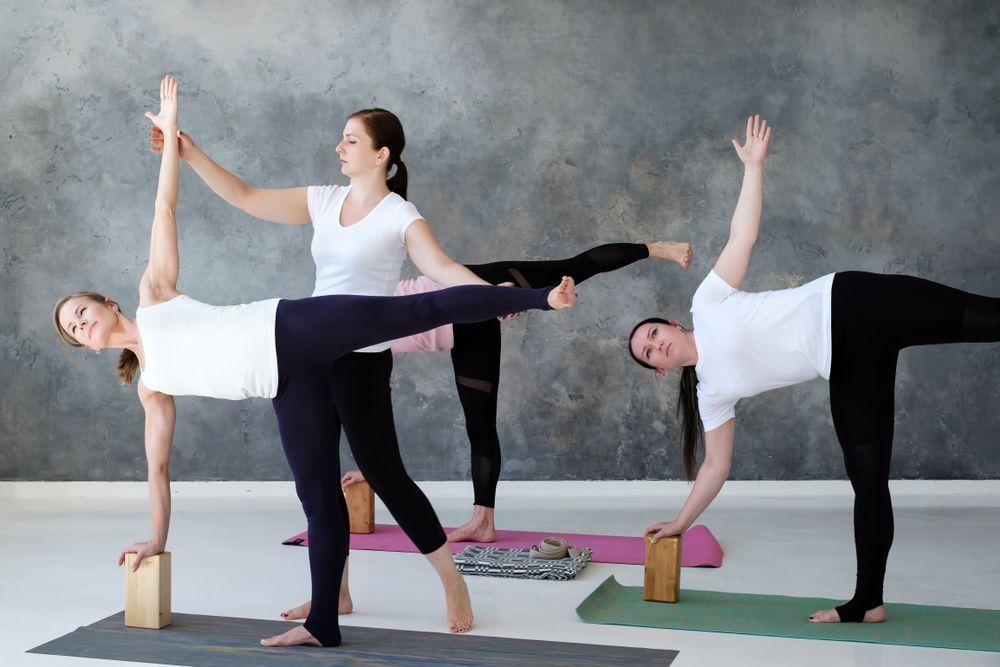
The last of the yoga asanas on our list is the half-moon pose, which improves your capability to balance with weak bones. It does help tone the spine, legs, and abdomen. This pose strengthens the bones and cures osteoporotic pain. It equally improves blood circulation and nutrient absorption.
The post 8 Effective Yoga Asanas To Keep Your Bones Healthy appeared first on FinerMinds.
Positive and Negative Relationship Traits of the 12 Zodiac Signs 25 Jul 2019 9:33 AM (5 years ago)
“You are a typical Leo!”, “Well, you are certainly a real Scorpio.” You have probably heard people saying sentences like these, and you couldn’t help but wonder what is a typical Leo like, a Virgo, a Scorpio or any zodiac sign. Well, the zodiac signs of astrology have unique traits that people identify with.
All signs of the zodiac have positive and negative traits, and it seems that people are most interested in them when it comes to love relationships. People love analyzing the compatibilities of the zodiac signs and decide whether their love interest is worth the time.
If you belong to the same group of people who think that astrological compatible signs are fun and say a lot about the persona, here is a complete overlook of their traits.
Aries (March 21 – April 19)
People born under this sign are enthusiastic, passionate, courageous and creative. They love living their life on their own terms. They are not afraid to be direct, physical and assertive. The most positive thing about them is that they are positive and lively people and always up for experiencing new things.
On the other hand, Arians can be really immature, domineering and a lot of the times, insensitive. In relationships, they can show their arrogant side, be stubborn and impulsive. And worst of all, they are often confrontational.
Zodiac signs that are compatible with them are Aries, Leo and Sagittarius and least compatible are with Scorpio and Virgo.
Taurus (April 20 – May 20)
The Taurus has a good-natured behavior making them hardworking, resourceful and sometimes reserved. They don’t like change very much and like to take time and reflect on things in life. They are peaceful people who enjoy life and its pleasures, are very generous and patient. Also, they are down to earth, polite and pleasant to spend time with.
However, they can be stubborn, lazy (which is a result of dedicating too much time to themselves and their indulgences). Sometimes their materialistic side can pop up mainly because they deem their future extremely important. Perhaps the worst of all is their possessiveness which often leads to jealousy and resentment.
They are most compatible with Taurus, Virgo and Capricorn and least compatible with Libra and Sagittarius.
Gemini (May 21 – June 20)
Gemini people are very curious and versatile individuals. You can talk about everything with them and the conversation will flatter you a lot as they like to entertain other people’s viewpoints. They are also friendly, communicative and straightforward. Their humor and wittiness if off the charts. In addition, they are clever and sharp which makes them great intellectuals.
What is bad about them is that they can be very superficial and inconsistent. They are not really the relationship type as it is hard for them to stay dedicated to one thing for a longer period.
Gemini, Libra, and Aquarius are their most compatible partners whereas Scorpio and Capricorns are the least compatible.
Cancer (June 21 – July 22)
Cancerians are very sensitive people who love sharing their feelings with their partner. They easily control and channel their emotions which makes them great relationship material. Plus, they are supportive, empathetic and always ready to help. Faithfulness is their major positive characteristics and the fact they are really spontaneous can spice up any relationship.
When it comes to their negative characteristics they can be moody and sometimes pessimistic. Also, they can hold on to things that no longer exist which makes them clingy and hard to get over a break-up. Plus, they can be too emotional and suspicious.
The relationship between them and another Cancer, Scorpio or Pisces can succeed whereas one with a Sagittarius or Aquarius is doomed to failure.
Leo (July 23 – August 22)
Leos are people who are very often loved, praised and admired, They love the center of attention and being in the spotlight is what fuels their energy. They are kind and helpful, energetic, optimistic, and most importantly, loyal.
On the other hand, they can be rather egoistic which often is their obstacle to success; also possessive, dominating and very impatient. Their self-centredness usually transforms into arrogance.
So, another Leo, Aries or Sagittarius can cope with their good and bad sides whereas Capricorns and Pisces can’t imagine being in a relationship with them.
Virgo (August 23 – September 22)
Who is more detail-oriented in life than Virgo? No one. Virgos are the perfectionists of the zodiac world and they are very hard on themselves because they want everything to be done the perfect way. They are very intelligent, practical and watchful as well as analytical, reliable and trustworthy.
However, they can be overcritical to other people, about something that is normal to be done as it is for them and they can also get fussy. They are rather conservative and judgemental.
Virgos are best compatible with other Virgos, Taurus and Capricorns whereas they are least compatible with Aries and Aquarius.
Libra (September 23 – October 22)
The most cool-headed individuals of the zodiac signs. They are great in relationships and always strive to maintain peace and harmony. They are even diplomatic and are patient when other people are talking. Add to the list tactful, romantic, charming and just.
Now, their bad side: sometimes superficial, detached and unreliable, lazy and indecisive.
They can build a successful relationship with other Libras, Geminis or Aquarians and should stay away from people born under Taurus and Pisces zodiac signs.
Scorpio (October 23 – November 21)
If you are a Scorpio, you must be aware that you are pretty extreme when it comes to emotions. Your passions are what drive you and you don’t like boring and mundane things. Still, Scorpions are very brave, focused and balanced people and rather faithful. They are also ambitious and intuitive.
The fact that they are secretive and jealous and sometimes even resentful makes them a bit difficult when it comes to relationships and their worst ability to manipulate is very often the deal-breaker in the relationship.
Sagittarius (November 22 – December 21)
Open-minded, philosophical and restless spirits – these are the qualities of the Sagittarius sign. They are very generous and intellectual and straightforward when it comes to telling the truth.
On the other hand, carelessness, tactless and impatient as well as inconsistent and overconfident is their negative traits.
A great partner would be another Sagittarius, Aries or Leo and a bad one would be the Cancer and the Taurus.
Capricorn (December 22 – January 19)
The most hardworking sign of the zodiac is the Capricorn. Hence, they are the most respected sign. Their independence, resourcefulness, and ambitions place them on top of the list of most powerful signs. They are wise, disciplined and cautious and very patient.
Nevertheless, they can be rather pessimistic, stubborn and, believe it or not, shy.
Their dream partner hides in Capricorns, Taurus and Virgo whereas Geminis and Leos should stay away.
Aquarius (January 20 –February 18)
Aquarians are the campaign people – always raising awareness and working for a cause. They are excellent team members and highly intellectual individuals, very tolerant of others. They are humanitarian, creative and loyal.
But, they can be very unpredictable, inconsistent and stubborn. Aloofness is another weakness that makes them distant for no particular reason. Also, their motto is All or Nothing!
They are most compatible with Aquarius, Gemini and Libra and least compatible with cancer and Virgo.
Pisces (February 19 – March 20)
The dreamers and chameleons of the zodiac. They are very creative personas, kind and gentle. They are also compassionate and sensitive as well as intuitive. Selflessness is another great characteristic of theirs.
However, they can be idealistic in a bad way, escapist and over-sensitive over things they can’t control. Laziness is another of their weak spots.
They can work things out well with Pisces, Cancer and Scorpio but not with Leos and Libras.
The post Positive and Negative Relationship Traits of the 12 Zodiac Signs appeared first on FinerMinds.
How to Positively Deal with Stress to Help Avoid Addiction 18 Jul 2019 2:54 PM (5 years ago)
Everyone has stress in their lives, and everyone has some way of dealing with that stress. Some people choose positive activities like meditation, yoga or positive thinking while others choose to deal with it in a more negative way.
Some others prefer to buy online CBD product to reduce the stress and avoid anxiety and panic attacks.
Sometimes those negative avenues can include activities like drinking alcohol or abusing drugs and when people go too far down those avenues, it can turn into a full-blown addiction. With a drug epidemic raging around the country, fueled in large part by opioid painkillers, it is important to have positive ways to deal with stress in your life.
Even highly successful people who never thought they’d have to deal with drug addiction can get caught in its web, particularly if they’ve suffered some kind of injury and have been prescribed opioid painkillers.
Follow these five guidelines for dealing with stress to help you avoid the scourge of drug addiction.
1. Try to Find Alternate Means of Dealing with Pain
Physical pain naturally causes stress for a person. Whether it is temporary due to some kind of injury or surgery or it is chronic, physical pain can cause people to seek treatment with powerful opioid painkillers. The problem with that is opioid painkillers are highly addictive.
While severe pain might necessitate strong medication to deal with, you should try your best to find other ways of dealing with pain that don’t involve taking highly addictive drugs for long periods of time.
Some alternatives, recommended by Harvard Medical School, that you may want to consider are:
- Cold and heat
- Exercise
- Physical therapy and occupational therapy
- Mind-body techniques like meditation, mindfulness, and breathing exercises
- Yoga and tai chi
- Biofeedback
- Music therapy
- Therapeutic massage
2. Have a Vigorous Hobby
We hear a lot about things like meditation to deal with stress, but the thing about stress is that it causes tension in your body and that tension can become built up energy that sometimes needs an outlet. Taking part in a sport or hobby that allows you to spend some of that energy is a good idea. Not only will it keep you moving and healthy, it will allow you to physically deal with stress.
Exercise reduces the body’s stress hormones like adrenaline and cortisol and increases the production of endorphins, which are your body’s natural painkillers and mood elevators. Virtually any type of exercise helps — even brisk walking — but the more vigorous the exercise, the more endorphins you release.
Who needs drugs when you can get a stress-relieving “high” from exercise? Hit the gym, join a sports league or do something else that gets your blood pumping and the sweat flowing.
3. Get Out
Although it may be difficult, try to get outside into a green space as much as you can. The more natural the environment, the better. If you can manage it on a regular basis, you should go on a hike or even just sit in a completely natural place. If you are more stuck in an urban area, at least try to find the closest park.
Being in nature is a natural destressor and is just good for your soul. When you can get out into nature and replace sirens and traffic with bird calls and breezes, there is an unmistakable calming effect for people. Communing with nature is an easy and affordable way to introduce stress management into your life.
4. Catch those ZZZs
Sleep is finally getting its due, as people are slowly turning away from so-called “hustle culture” where people actively try to get as little sleep as possible and embrace their pillows and blankets. Consistent and sufficient sleep helps to fight against mental fatigue and stress.
You’ll need to pair sleep with some other stress reducing activities because being stressed will affect your ability to sleep. So, if you are able to get some exercise in a natural environment, that should help you get a good night’s sleep, which will, in turn, help you reduce your stress levels.
5. Always be Creating
There is an old saying that idle hands are the devil’s playground and that can be extrapolated to the mind. Boredom may not seem like a dangerous thing, but when people feel they have nothing to do, that can lead to stress and they can sometimes turn to drugs to alleviate that feeling of helplessness and hopelessness.
That is where having a creative outlet can be helpful. If you have a way that you can be expressing your creativity, you won’t ever be without something to do. Whether you paint, make music, woodworking or love fixing up old cars, having a creative outlet helps to relieve boredom and keeps you engaged in a positive activity.
As we’ve seen with the opioid epidemic and its origins in prescription drugs, addiction can sneak up on even the most successful people. Dealing positively with the pain and stress in your life can ensure it never has a chance to sneak up on you.
What way do you deal with stress in your life? Share it with us in a comment below.
The post How to Positively Deal with Stress to Help Avoid Addiction appeared first on FinerMinds.
7 Science-Backed Methods for Easy Stress Relief 18 Jul 2019 9:56 AM (5 years ago)
Stress is something that everyone feels at one time or another, but for some people, it’s a daily problem. Not only is stress extremely unhealthy for your mind and body, but it also leads to many other diseases like hypertension, heart disease, and diabetes. Additional, it can lead to premature aging, and weaken your immune system.
In recent decades, stress has become quite common. According to a recent survey, over 54% of Americans feel that they need to reduce their stress levels.
There are many ways to reduce stress. Some people opt to use pills or allopathic drugs to fix the problem. But before you go for these drugs, you should check out MarTech Series and some of the other natural remedies and tips that have been proven by science to help provide stress relief. Like for example check this list to find the best cbd products in the market.
1. Try Working Out Regularly
Working out is a very effective method to reduce and counter stress. When a person works out, their body releases hormones and endorphins like dopamine, also known as “the pleasure hormone.” Due to the release of this hormone, we feel a rush of happiness and excitement. This can be very effective in decreasing your stress levels. There are many symptoms that come along with these health issues and imbalances, many of which can be resolved with hormone replacement therapy (HRT), which is a modern way of correcting hormone imbalances in both men and women.
An important thing to remember while working out to manage stress is that moderation is the key. When our body works too hard, it also releases a hormone called cortisol. Cortisol is mainly known as a stress hormone, and it can increase your stress levels. So try not to work out too hard and increase your workouts gradually so that your body can get used to the amount of activity.
2. Avoid Sleep Deprivation

Sleep deprivation is one of the leading causes of stress. It is very important that you get at least 6 to 8 hours of sleep every day. Many people use sleeping pills to help them sleep at night, but these pills have side effects, and your body gets conditioned to using these pills. So try to avoid these pills unless necessary.
3. Organize Your Schedule

A great way to combat stress is to organize your schedule and create a time table. Many people feel stress because of their jobs and professions when they aren’t able to meet deadlines and do their tasks on time. Creating a time table will help you greatly in managing your time properly, and it will reduce the time that you waste.
Recently, a study was conducted by the Harvard University in which 3000 people participated from the US and 29 other countries. In this study, the stress management skills of the participants were gauged by how the participants agreed with different stress management techniques. The stress management skill that was found to be the most effective by most people was planning and organizing their life.
4. Use Natural Remedies
Many natural remedies can combat stress. The use of medical marijuana is growing increasingly popular in many American states as it has also been legalized for recreational use. Medical marijuana has a lot of health benefits, the most prominent of which is stress relief.
Unlike other allopathic drugs, using medical marijuana for stress relief does not have any long term adverse side effects on the body. If you don’t want to use marijuana strains you can also opt for other options like CBD oil which is also quite useful for stress relief
5. Meditate or Start Practicing Yoga
According to many studies and experiments, meditation is a very effective stress management technique. Meditation and yoga encourage the utilization of many relaxation techniques that can significantly reduce your stress levels and can make you more calm and composed. The breathing techniques in yoga are also quite effective in reducing stress.
A study conducted by the New York Academy of Sciences showed that certain techniques enable us to relieve stress quickly and compassionately. Yoga and meditation will help you get away from the busy stress-inducing schedule of your work. They will teach you techniques that will really help you manage your day to day stress easily.
6. Listen To Some Soothing Music
Many studies show that music has a very positive effect on the stress levels of a person. These days music is even used as a therapeutic treatment for many mental and psychological diseases. Scientific studies show that listening to light and soothing music can reduce depression, anxiety, and stress by making the body release hormones such as dopamine.
Also, remember that the kind of music you are listening to has a lot of effect on your stress levels. Music genres like heavy metal and hardcore EDM can actually increase your anger and stress levels instead of decreasing them. So, try to find the right kind of music like; some classical music to listen to when you are feeling stressed.
7. Take Some Time Off
A great way to combat stress in your daily life is to change up your lifestyle for a little while. If you are feeling a lot of stress, take a break from your busy schedule.
Go for a vacation and relax and enjoy yourself. This will reduce your stress levels significantly. It will also ensure that you are more productive when you come back from vacation. If you can’t afford a big vacation, just hanging out with your friends on the weekend can significantly reduce your stress levels.
You can also reduce your stress levels by taking simple breaks, watching your favorite movie or listening to your favorite music. In simple words, don’t spend all your time working. Take small breaks, and do something fun like watching a funny video to refresh your mind.
Taking a break will allow you to get away from the stress of your work for a while; it will enable you to be more productive in your work as well after your break. Good Luck!
Most people think that learning is the key to self-development.
It’s how we were raised – when we were young, we studied algebra, read history, and memorized the names of elements on the periodic table.But once you grow up and experience life, you realize that you can’t ‘learn’ certain things – like personal growth.
Vishen Lakhiani, founder of Mindvalley and New York Times Bestselling author, discovered that the key to self-development was not to ‘learn’, but rather, to ‘transform’.
If You Want To ‘Transform’ And Are Ready To Accelerate Your Own Personal Growth, Then Join Vishen Lakhiani's FREE Masterclass, Where You’ll Learn:
 The Framework For Flow: The 3 Big Pillars of Life which will help you to rapidly grow on autopilot, so personal development happens naturally.
The Framework For Flow: The 3 Big Pillars of Life which will help you to rapidly grow on autopilot, so personal development happens naturally. How you can harness the energy surrounding you to automatically attract the tools you need to unlock your true potential, allowing you to easily make transformative shifts in your life.
How you can harness the energy surrounding you to automatically attract the tools you need to unlock your true potential, allowing you to easily make transformative shifts in your life. Apply the #1 principle to eliminate obstacles in your life, and subsequently show up as your best self and make a positive impact on the world.
Apply the #1 principle to eliminate obstacles in your life, and subsequently show up as your best self and make a positive impact on the world.Discover The Proven Framework for Extraordinary Transformation and a Brand New You in 2020

The post 7 Science-Backed Methods for Easy Stress Relief appeared first on FinerMinds.
10 Habits To Boost Your Self-Confidence 13 Jul 2019 6:03 AM (5 years ago)
Boosting your self-confidence is a tough task that many of you could have stumbled upon in life. There is no unique recipe, but there are lots of positive habits that can affect your lifestyle and help you up to your self-confidence game. We genuinely believe that trying to apply these habits may change the way people see you and the way you feel about life in general as well.
Let’s cut to the chase and learn how to boost your self-confidence and change our lives together!
1. Take risks, don’t always play it safe
Playing safe can be the worst idea that your mind can deliver. It can stop you from trying something risky, just because it sounds risky. But the reality is that only through tackling risky ideas, you’ll be able to create something meaningful in life.
A self-confident person will never be afraid of taking his chances. Your number one priority is to make sure you’re ready to make tough decisions.
2. Do not compare yourself to others
Comparing yourself to others is not the healthiest way of making yourself better. Compete with yourself and improve your character day by day. You can learn from your own mistakes and learn from the mistakes of other people. However, you shouldn’t compare what you’ve got with things that your friend accomplished at your age and consider yourself a winner or a loser.
Find your way and passion and follow your dreams and aspirations.
3. Watch your personal hygiene and nutrition
Watching your hygiene is a part of a healthy lifestyle that you should follow to feel more confident. People who do sports and have a healthy nutrition plan will always be a few steps ahead. But before we talk about sports, we should pay more attention to the health itself.
Visiting your dentist, keeping your teeth healthy, making a healthy nutrition plan, and taking a shower two times a day will help you not only remain confident but feel better in general. If you do have the budget and truly care for your dental health, you can check out composite bonding glasgow or visit their clinic known as Southside Dental Care Glasgow.
Consider alternative and cheap ways to get alternative treatments like this professional dental whitening system.
4. Remember that saying ‘No’ is not bad
Being self-confident means knowing what you want and taking it. When we talk about non-confident people, we tend to see that they really care about people liking them. Those who care about this, usually, do not know how to say ‘no’ to something they don’t want to do or discuss.
As a result, people become miserable. Please remember that you’re the king of your life and you’re entitled to saying ‘yes’ and ‘no’ according to your needs and personal desire.
5. Speak clearly and calmly
Do not mumble, speak clearly, and keep your emotions under control. The most devastating things about those who do not have self-confidence are their nervous talking habits. People love to listen to those who speak confidently, calmly, and clearly.
6. Never judge others
Judging others is just a waste of time that you shouldn’t practice. Make sure you’re watching your life and your decisions. Your energy is needed here. Judging others is not only a non-productive activity but also makes you look unconfident.
7. Listen
A confident person doesn’t care about being in charge of the conversation. Smart and confident people are great listeners, cause they know that they can learn something from the communication itself. Of course, you’ve got to know how to keep the discussion alive, but you shouldn’t be nervous about always talking and staying on top of the conversation.
8. Stand up straight
It may sound just like a tip from your mom, but seriously… Your posture is also sending signals to people you talk to and interact with. Stand up straight and be in charge of your gestures.
9. Lift weights and do sports
Doing sport is crucial if you want to be self-confident. It’s not just about muscles. It helps you restart your mind, start or finish the day. Lifting weights can also make you more attractive, which can make a significant impact on your confidence.
Don’t just do sports because it’s hip. Do sports to keep your brain and body machine running. It’s up to you how to look, act, and feel, and sports is the best way to affect your look.
10. Remember what you’ve already done
You may face tough times while working on your self-confidence. Times when you’ll think of whether it’s worth it or shouldn’t you stop this whole game. Don’t forget what you’ve already done. Remember your achievements, remember to stop and remember that you’re doing great, and you’ve got to keep it up to become a genuinely self-confident person.
Most people think that learning is the key to self-development.
It’s how we were raised – when we were young, we studied algebra, read history, and memorized the names of elements on the periodic table.But once you grow up and experience life, you realize that you can’t ‘learn’ certain things – like personal growth.
Vishen Lakhiani, founder of Mindvalley and New York Times Bestselling author, discovered that the key to self-development was not to ‘learn’, but rather, to ‘transform’.
If You Want To ‘Transform’ And Are Ready To Accelerate Your Own Personal Growth, Then Join Vishen Lakhiani's FREE Masterclass, Where You’ll Learn:
 The Framework For Flow: The 3 Big Pillars of Life which will help you to rapidly grow on autopilot, so personal development happens naturally.
The Framework For Flow: The 3 Big Pillars of Life which will help you to rapidly grow on autopilot, so personal development happens naturally. How you can harness the energy surrounding you to automatically attract the tools you need to unlock your true potential, allowing you to easily make transformative shifts in your life.
How you can harness the energy surrounding you to automatically attract the tools you need to unlock your true potential, allowing you to easily make transformative shifts in your life. Apply the #1 principle to eliminate obstacles in your life, and subsequently show up as your best self and make a positive impact on the world.
Apply the #1 principle to eliminate obstacles in your life, and subsequently show up as your best self and make a positive impact on the world.Discover The Proven Framework for Extraordinary Transformation and a Brand New You in 2020

The post 10 Habits To Boost Your Self-Confidence appeared first on FinerMinds.
9 Top Wellness And Health Trends Of 2019 11 Jul 2019 7:56 PM (5 years ago)
There has been an increase in the number of people who are advocating for health and wellness. Individuals, businesses, and organizations are all adopting practices that help to boost your overall health, mental health, financial wellness, and more. Here are the nine top wellness and health trends of 2019.
1. Diets Free From Oil
Have you ever consumed an oil-free diet? If no, you would be surprised by the health benefits that come with this diet.
Many people are adopting diets that don’t have oil. This is because all oils have high levels of calories and the process of making them removes all the nutrients.
Moreover, the fat that is left is not as healthy as before processing. Oil can impact blood vessels and result in heart disease.
Therefore, avoid using olive, coconut, flaxseed, and avocado oils to cook and eat your foods in whole forms. To prevent your food from sticking on the pan, add a dash of vegetable broth or water.
2. Mindfulness
Mindfulness is not a revolutionary concept but more individuals will adopt its practice in their daily living. People are emphasizing on the health of their brains more than before and doing minor mindful practices will have a significant difference in their general wellbeing.
What are mindful practices? Some of these practices include chewing food properly and keeping the phone away during meals, sparing time for meditation, and more.
3. Tongue Scraping
This is the new kind of dry-brushing. It is an oral hygiene practice and Ayurvedic self-care ritual that you can carry out every day to eradicate toxins, dead cells, food debris, and bacteria.
When you are asleep, the gut eradicates undigested toxins from the body and brings them to the surface of your tongue.
Hence, it is crucial to scrape away the toxins on your tongue prior to doing anything else after waking up. If you don’t, these toxins will experience reabsorption by the body and can result in digestive issues as well as a compromised immune system.
4. Fertility Tracking Based on Technology
For a long time, women have been taking control of their fertility options and family planning. A big trend to result from this movement is fertility tracking based on technology.
These trackers assist in tracking your stress levels and sleep, resting pulse rate, skin temperature, and more. Women as opting for this birth control method and it will grow some more this year.
5. Online Workout Subscriptions and Virtual Training
Do you work out through online tutorials and apps? If yes, then you are doing virtual training.
Virtual training is among the biggest 2019’s trends. It allows individuals to receive personal training and guidelines remotely at home.
It is assisting beginners to obtain the benefits of working out without having to visit the gym. Additionally, online workout subscriptions are more convenient and cheaper as compared to attending studio classes.
If you would prefer working out with a sport, basketball is a high-intensity sport that you can also train with using online tutorials. There are many apps and YouTube videos that guide you on exercising with Basketball.
6. Comprehending the Circadian Rhythm for Better Sleep
The circadian rhythm is the biological clock of the body. This cycle involves two vital hormones called melatonin and cortisol.
The cortisol hormone is normally high in the morning, which assists you to wake up, feel alert, and get ready to take on your day. On the other hand, melatonin peaks at the end of the day when you require resting.
What happens when these hormones are unstable? You will feel tired throughout the day and active at night when you are supposed to sleep.
Failure to stick to this rhythm can lead to weight gain, high blood pressure, diabetes, and other conditions. The rhythm is disrupted by the blue light produced by screens of computers and mobile devices.
The melatonin hormone is suppressed by this blue light, the same way it is suppressed by light during the day. Hence you will find trouble getting some sleep.
Hence mobile devices and computers should be kept away during the night to make it easy to get sleep. You can even spend time in nature or wear blue-light-blocking glasses if you have to use these devices.
7. Financial Wellness
In 2019, Millennials are adopting self-driven strategies of financial wellness as they learn from their past and work with the present to create their financial future. People are interested in learning the management of credit and debt, forming a goal-oriented investment portfolio, budgeting, and more.
People are learning that they are in control of their financial culture and responsible for their financial wellness.
8. Plant-based Fish
The market for plant-based meat is booming and revenue has increased by 23 percent in 2018. On the other hand, plant-based dairy makes 13 percent of all milk revenue.
Companies are now offering plant-based alternatives to canned and raw tuna. For instance, Good Catch is a company that is already offering shelf-stable tuna fish that is created from beans and consists of up to 15 grams of proteins per serving.
The rise of this industry is attributed to the overexploitation of marine fish stocks as well as the negative impacts of ocean fishing. The product is also ideal for health-conscious vegans and vegetarians.
9. Regenerative
The regenerative movement involves supporting initiatives that do more good and less harm. When farmers grow through the use of regenerative methods, they take back nutrients to the soil that can assist in absorbing carbon dioxide from the air.
This shift is required by the farmland, especially because 33 percent of the planet’s topsoil has already been lost according to a 2014 study. The same study revealed that the topsoil could be fully eradicated by 2075.
Many individuals, companies, and organizations are collaborating around regeneration. For instance, Weleda is a natural beauty brand that sources ingredients grown through biodynamic and regenerative farming practices.
A recent study has revealed that 60 percent of people would prefer buying regenerative products that combat climate change.
Conclusion
If you are looking to improve your health and wellness this year, then be sure to adopt some or all these nine trends. You will not only improve your lifestyle, but you will also have an impact on your economy and environment.
The post 9 Top Wellness And Health Trends Of 2019 appeared first on FinerMinds.
5 Stress-Reducing Activities to Get You Outside 28 Jun 2019 8:39 AM (5 years ago)
With hectic days and busy work schedules, stress is becoming an almost inevitable part of our lives. We all have different ways of coping with it, but spending time in nature is inarguably one of the best ways for reintroducing balance into our lives. Let’s take a look at five stress-reducing activities that will get you outside and help you start feeling better.
1. Give yoga a try
Yoga is by far one of the best activities for reducing stress. Numerous scientific studies have shown that by doing yoga, you can actually reduce the secretion of cortisol – the hormone responsible for stress. It is a powerful way to cope with feelings of anxiety, as it requires you to be present, forgetting about the past and the future, and focusing on the now. Yoga also leads to mindfulness, which helps us see the world from a different perspective and live in the moment, becoming aware of our thoughts and feelings.
A wide range of asanas can help your body stay limber, increase flexibility, as well as strengthen your body. The best thing about yoga is that everyone can do it, and there are no age or fitness level limitations. Therefore, when warm, sunny days arrive, grab your mat and practice yoga out in the open.
2. Try your hand at water sports

After a long week filled with work and stress, all we want is to get our minds off of our job and school and spend our weekends in peace. Sports, in general, are a great way to lower the stress levels. Other than being a fun activity, playing sports can also boost your mood and help you cope with stress more easily.
When it gets warm and the temperatures rise, water sports are a great way to have some fun and do something good for both your body and your mind.
One of the activities you should definitely try this summer is snorkeling. It’s a unique form of cardiovascular activity that doesn’t require too much equipment. A quality full face snorkel mask is all that you need to have some fun out in the open, thus keeping your mental health in check. You can also read on campingfunzone.com all about kayaking and enjoy the calm waters.
3. Go camping with your friends
Feeling overwhelmed at work or school? Camping is the perfect way to escape your mundane routines and do something new for a change.
Hectic life in urban areas can sometimes take the best of us, and sometimes all we need to do is spend some time in nature. If you’re looking for a fun and easy way to fight stress and recharge your batteries, set some time aside to go camping with your friends.
Hanging out and sharing stories with your best friends is a great way to reduce stress, as well as increase oxytocin levels in the brain. Camping is a great way to distance yourself from the technology and step out of your comfort zone, giving you a sense of freedom you can seldom find in the city.
4. Walk your dog

Owning a pet is a sure way to lower your stress levels. Pets, especially dogs, can help increase the production of the feel-good chemical in our bodies, which is important for preserving our mental health. All you need is to find a shoe of your comfort and choice on shoe hero, and you are set for a lifetime of good physical and mental health.
Dogs need to be walked, which means that dog owners are more likely to spend time out in the fresh air. By doing so, they are reducing their chances of suffering from cardiovascular disease, as well as improving their immune system.
Devoting as little as thirty minutes of exercise a day will help you be stronger and live longer. What’s more, because they tend to be more active than non-dog owners, people who walk their dogs are less likely to suffer from depression and other chronic diseases.
5. Use your bicycle to go to work
Other than being eco-friendly means of transportation, riding a bicycle can help you a lot when you’re looking for a way to remove the stress from your life. Using your bike to get from one point to another is similar to doing cardio exercises, which can help you on your path of achieving your desired weight. What’s more, biking will help boost your confidence and improve your mood.
Other health benefits that come with regular cycling include decreased amount of body fat as well as strengthened bones and improved joint mobility. Consider committing to a day of bike riding and use your free time to explore new areas and improve your overall fitness levels.
Reintroducing balance into our lives may seem difficult, especially when we’re dealing with stress on a daily basis. That is why it is important to find a way to cope with all the negative emotions and keep them at bay.
By using some of the tips above, you’re sure to reduce the amount of stress present in your life and become a happier and healthier individual.
The post 5 Stress-Reducing Activities to Get You Outside appeared first on FinerMinds.
Career Success: 10 Tips to Excel in your Career 24 Jun 2019 2:32 PM (5 years ago)
Finding a well-paying job after completion of education is what many youngsters strive for. However, in this competitive age, landing a great job just does not cut it anymore. You need to find something that leads you down a well-defined career path with no end in sight.
If you struggle with finding career success and need some help, here are 10 tips, implementation of which will set you up for good and to excel in career!
1. Be ready to pitch new ideas
In today’s time, organizations prefer individuals who are always ready to try their hand at something new. By being ready for new challenges and by bringing new ideas to the table, you are indirectly showing other people that you are ready for any opportunity that helps your career evolve.
Even if it is something as small as pitching new ideas for PDF editing software, always take an initiative approach since that is what most employers appreciate.
2. Constantly evaluate your performance

You need to be your own harsh critic because it will allow you to see your weaknesses. This step is necessary since it will help you design a working strategy that will not only aid you in overcoming your weaknesses but will also improve your performance.
The best way of approaching this is by setting short-term goals along with the time needed to achieve them. This will help you set achievable goals which will make it easy for you to constantly evaluate your performance.
3. Learn from mistakes
When setting short-term/long-term goals, individuals often set unrealistic goals that are impossible to accomplish. This could lead to failures; however, learning and moving past them is the kind of attitude you need to adopt.
Have committed some mistake? Do not worry too much about it! Instead, learn from it so that if something similar arises in the future, you will be better equipped to deal with it. The same goes for your triumphant moments. Celebrate them but also remember to assess them so that you can apply your winning strategies to future problems as well.
4. Stick with a positive attitude

A positive attitude can turn any nasty situation into a manageable one. On the other hand, a manageable hurdle may seem insurmountable with a pessimistic attitude. That is the difference between the two attitudes and you need to stick with the former one because a positive attitude can lead to positive outcomes in your career.
5. Be ready to learn new things
To achieve a successful career, you need to have the willingness to learn or try something new every day. Remember, professional life is extremely different from university life. So, no matter how many certificates you have earned, nothing will be helpful in achieving a great career.
For a successful career, experience matters which you can gain by being open to newness. So, watch tutorials, ask a million questions, and have lunches with other professionals.
Learning something new may seem a daunting task, but once you get the hang of it, everything will be a breeze!
6. Work on your communication skills

Great communication is the key to success. In order to show to your employers that you are willing to take your career path to the next level, you need to communicate well.
If a task is bothering you, communicate your needs. If you have completed a task, communicate it with your employer so that you can discuss the next task in line. The point is, adopt a proactive communication approach and quickly act on what is expected from you pretty early on to make space for new experiences.
7. Define clear goals
Having defined goals is a great way of realizing where you are and what you need to do in order to attain the position that you want in your career.
Since goals provide individuals with a chance to define a career path, you need to set realistic goals that are challenging yet achievable. It can be both short-term or long-term goals and ones that can improve your career path.
Do not limit yourself, the sky is the limit! With this in mind, set whatever goals you think are necessary for helping you and your career evolve.
8. Learn from feedback

No matter how much of an expert you are on any given subject, there is always going to be someone with a unique perspective to offer. If you encounter such people who are willing to lend a few professional yet helpful words regarding anything, consider it a blessing! This is because there will always be someone who does not want to see you succeed. So, if someone offers feedback, consider it as a great opportunity to hone your professional skills even further.
9. Never be afraid to ask for help
If you are stuck somewhere, swallow your ego and ask for help! It does not get much easier than that! The only problem is that you need to find the right professionals who can provide you with the right kind of help. So, identify such people in your network and form professional bonds with them. If you like, you can also seek a mentor since they are experienced enough to share valuable insights that could help you get ahead in your career.
Additionally, a mentor can provide assistance in choosing a career path by providing you with a complete breakdown of all the ups and downs associated with it. So, if you are still stuck at choosing a career, a mentor can help you with that!
10. Learn to be thankful
It does not hurt to acknowledge the help of others. Trust us, a simple ‘thank you’ note can open various doors for you that will take your career to unimaginable heights.
Showing gratitude is a genuine gesture and few people are considerate enough to actually thank other people for their help. Remember, each of your professional associates is in touch with many other professional individuals and if you are thankful to them, they may help you find attractive opportunities that may help your career evolve.
Wrapping Up
Feeling stuck in a career is a familiar emotion which everyone goes through once in their lives. However, no career in this world leads to a dead end. Each of them leads to a new yet exciting opportunity; however, it all comes down to how well you treat your career.
Remember, each career path is waiting to be explored; you just need to implement the right strategies to unlock its true potential. On the other hand, if you are not willing to do anything about your career, then you are just bored and need to look into other careers that interest you!
The post Career Success: 10 Tips to Excel in your Career appeared first on FinerMinds.
5 Household Ideas to Make Your Home More Mindful and Relaxing 24 Jun 2019 4:16 AM (5 years ago)
Your home is your sanctuary. It’s where you and your family can relax and feel comfortable. Your home should be a place of safety and should allow your mind to be at ease.
A relaxing and mindful home environment can do wonders for your mental health and can help recharge you for life outside of your sanctuary. However, not everyone feels so relaxed in their home.
In order to create a home that feels comfortable, it’s important to not only make changes that focus on creating a positive environment but to do so in a mindful way.
5 Ways to Create a Mindful Home You Love
1. Make Energy Efficient Choices
Energy efficiency is a choice that benefits you, your wallet, and the environment all at the same time. By making a few energy-efficient changes in your home, you can create a more positive and relaxing environment for everyone.
This summer, try opening more windows instead of relying so much on the air conditioner. Fresh, circulating air in your home feels more refreshing, and it’s energy-efficient. You can also try installing a ceiling fan or blocking the sun with better shades.
Making a change like using a clothesline instead of a dryer is also a great idea to increase mindfulness and relaxation in the warmer months. Not only does it get you outside, but the process is also calming and saves on electricity — which, in turn, saves you money and is better for the environment.
Learn Five Unique Techniques from Feng Shui & Apply Them To Enhance Your Life, Health & Wealth In This FREE Masterclass>>
2. Plan Mindful Family Activities
It can be easy to sink into the same routine when it comes to family activities, but some of them may be more draining than rejuvenating for a person.
For example, relying on television or electronics for family activities usually doesn’t promote mindfulness. Instead, make a conscious effort to try to implement more mindful activities into family time.
Find some child-safe craft paint and plan an arts and crafts day. Plan an outing each week to do something outside with your family, like going on a walk or spending time in the park. Spend less time with electronics and more time outside, and it’ll allow your time at home to be more tranquil.
3. Declutter and Organize
Decluttering and organizing your belongings is a beautifully mindful way to increase your home’s peaceful energy.
Tidying expert Marie Kondo has a lot of tips for doing this in a way that helps to appreciate the things you’re getting rid of and how to store the things you decide to keep. It’s about decluttering in a way that helps you live the life you want to live while keeping the things that spark joy for you.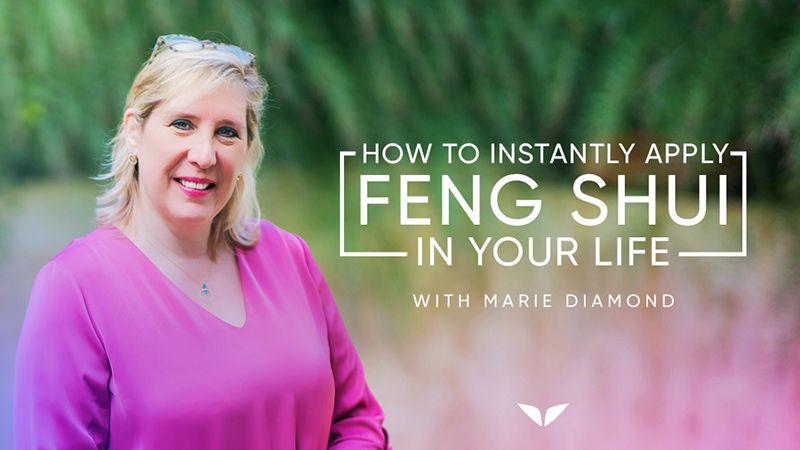
Extra items around your home only create more “noise” that makes it hard to feel relaxed. However, you can be more mindful about decluttering by choosing to donate, recycle, or upcycle items.
There are plenty of ways to create art from recycled car parts or to use old furniture to make shelves and other storage. Otherwise, make sure to donate or recycle what you can.
4. Mindful Decorating
There’s a way to decorate your home in a way that fosters mindfulness and relaxation. Use color to create the energy you want for a room by using paint or fabrics. Utilize as much natural light as you can in order to let some of the outside world in.
 Focus on comfort, utility, and simplicity. Don’t overdo a space with too many standout pieces, and instead focus on a few things you really love. Utilize sentimental items, plants, and comfort to help make your home a more mindful and relaxing space.
Focus on comfort, utility, and simplicity. Don’t overdo a space with too many standout pieces, and instead focus on a few things you really love. Utilize sentimental items, plants, and comfort to help make your home a more mindful and relaxing space.
If you have a lot of items to store, utilize some storage furniture pieces to create more storage space. It’s less about being trendy or fashionable and more about creating a simple and beautiful space for your family to enjoy.
5. Remember All of Your Senses
Creating a relaxing and mindful home isn’t just about what it looks like, it should encompass all of your senses. Think about what your home smells like, feels like, sounds like, and even what it tastes like.
A clean home will make your home smell better, but you can also implement aromatherapy, candles, and incense to help increase your mindfulness and relaxation.
Choose comfortable and soft fabrics to increase the positive textures that you touch in your home. Clean carpets, soft sheets, fluffy towels, and comfortable couches will do wonders for your relaxation.
Be mindful of your home’s sound by eliminating noisy items, creaky floorboards, or squeaky hinges. By focusing on home-cooked meals and healthy food, you can create a sense of health and rejuvenation in the taste department.
The Home of Your Dreams
Your home should make you and your family feel mindful and relaxed, and it should be the place where you feel most at ease. However, a cluttered and overwhelming household can create feelings of stress and restlessness instead.
In order to increase the positive vibes of your home, work to make it a place that’s comfortable. By increasing your energy-efficient choices, planning mindful family activities, decluttering and organizing your home, decorating mindfully, and remembering all of your senses through it all, you can work to create a mindful home that leaves you feeling at peace.

The post 5 Household Ideas to Make Your Home More Mindful and Relaxing appeared first on FinerMinds.
Aya… Huh? 7 Ayahuasca Benefits You Didn’t Know About 22 Jun 2019 3:24 PM (5 years ago)
It seems that trends go in cycles and ayahuasca is having its moment in the sun again. Interest first surged in the 60s and has picked up again once again as more people seek to experience it for themselves.
Pronounced “ah ya wah ska”, this potent drink causes hallucinations. Allegedly, it causes spiritual awakening and deep introspection.
Perhaps this is why people are searching for it. It seems like an option that allows people to get in touch with their soul and find emotional guidance.
But are there other positives, possibly medicinal, besides visions and emotions? Let’s learn about seven alleged and little-known ayahuasca benefits that might have a big impact on your life.
What is Ayahuasca?

Before we talk about what benefits you might get from taking ayahuasca, let’s look at what it is and what are the ayahuasca benefits. Ayahuasca tea has a long history in many different cultures and is used for various rituals.
The drink itself is made from a combination of two psychedelic plants, Psychotria viridis and Banisteriopsis caapi. The stems and bark of the two plants are boiled together to produce the tea.
This drink was traditionally used by the native peoples of South America in religious ceremonies. Because of the religious nature of the ayahuasca tea, it’s legal for spiritual purposes in the United States but not for recreational use.
Ayahuasca Side Effects
Taking ayahuasca produces different hallucinogenic sensations. Ayahuasca effects are reported as but are not limited to:
- Hallucinations
- Emotional awakening
- Spiritual introspection
- Excitement and positivity
- Mood stabilization
- “Out of body” sensations
- Fever
- Nausea
- Increased heart rate
- Vomiting
As you can see, there are many different experiences you can have when taking ayahuasca. Everybody is different and you should always be mindful when ingesting any new substance.
As far as how long does ayahuasca last, it depends on your dosage and on the purity of the product. Users report side effects lasting from four to eight hours.
Now you know what it is and what it can do. Let’s take a look at some little-known benefits attributed to ayahuasca.
1. Manage Depression
Ayahuasca affects the parts of your brain that manage moods and emotions. It also helps stimulation your serotonin, the feel-good hormone, receptors.
When you drink the brew, blood starts pumping to the areas of your brain that process your emotions. A chemical in ayahuasca, DMT, also turns on your serotonin receptors so that even if you don’t have much, it’s more effective.
Short term, this might be able to help people suffering from anxiety and/or depression.
2. Boost Creativity
This is one of those claims that might not work for everyone. It’s easy to see how a plant that can produce elevated moods and hallucinations can help inspire creative types.
If you’re a writer, artist, musician, or another creative type, an ayahuasca ceremony might open up any creative block you had. Even if you didn’t paint, dance, sing or write before, you might find yourself inspired to take up a creative pursuit after drinking the tea.
3. Reduce Inflammation
Studies show that ayahuasca might have physical therapeutic benefits. While more research is needed, there are elements of the chemical makeup that point to potential medicinal use.
Ayahuasca has shown in certain trials that its chemical properties reduce oxidative stress, lowering free radicals, and reduces inflammation. More trials are being conducted and hopefully, there will be a medical breakthrough to help those who are suffering from chronic pain.
4. Control Addiction
The Ayahuasca’s effects on a user aren’t just physical. People report a profound change in their thinking and in the way they feel about life.
Because it has the ability to break habitual thoughts and patterns, researchers are looking into using it to combat drug addiction. It’s not widely used as a treatment for substance abuse just yet, but there seems to be hope on the horizon.
5. Help Heal PTSD
PTSD hurts so many people, especially veterans and those who have suffered a deeply traumatic event in their life. Taking ayahuasca might be a treatment option in the future.
Because of the way it interacts with the mind, ayahuasca can help those processing subconscious feelings and thoughts associated with PTSD. Users have reported gaining a new perspective on their situations and feeling as if they can better cope with heavy emotions.
6. Spiritual and Conscious Awakening
Many users report feeling emotionally, spiritually, and mentally awakened after their ayahuasca experience. Because of the journey one goes on when taking it, shifts in perceptions occur that can lead you to have a different, more positive outlook.
Along with any visions you might see, the chemicals in ayahuasca work with your brain chemistry. Some people report feelings of euphoria or emotional cleansing.
Often these feelings of inner awakening happen during sacred ceremonies, rituals, or retreats. Look into further details regarding the spiritual use of ayahuasca if you’re curious about trying it out for yourself in a safe, controlled environment.
7. Purging Parasites
This last benefit isn’t as fun as getting out of a creative rut or boosting your mood. You might find that it’s physically restorative all the same.
Ayahuasca can cause you to purge. Just like it increases serotonin in your brain, it also does so in the gut, which leads to evacuation.
The chemical anti-parasitic and anti-microbial agents in ayahuasca then clear your gut of anything harmful without hurting you. It’s definitely not a pleasant experience but those who have gone through it claim they feel like brand new afterward.
Ayahuasca Benefits
These are just a few of the upsides to trying this psychotropic drink. Whether in a clinical setting or a religious ceremony, there are many ayahuasca benefits you can use.
Because everyone’s physical and chemical makeup is different, no two experiences will be the same. If you’re going to try ayahuasca tea, make sure you do so in a respected ceremony or in a clinical trial to ensure you’re getting a safe product.
Are you interested in other ways to get in touch with your higher consciousness? Read our guides to spirituality and improving your life and feel inspired today!
The post Aya… Huh? 7 Ayahuasca Benefits You Didn’t Know About appeared first on FinerMinds.
5 Reasons You Should Reconsider Having a 9-5 Job 19 Jun 2019 8:29 PM (5 years ago)
Back in 1890, it wasn’t uncommon for manufacturing employees to work 100 hours each week — more than 14 hours a day. That left a measly 10 hours to commute to your job, take a shower, eat, spend time with your family, and sleep. It’s no surprise workers began to protest.
Today, working conditions are much cushier in comparison, with full-time employees working an average of 8.56 hours each day. However, that doesn’t mean we have to settle, especially with the rigid guidelines of the 9-5 job lifestyle. In some cases, the standard workday doesn’t even make sense.
1. You’re Not As Productive
Not everyone is at peak productivity in the morning. We all have a different chronotype, a sleep time preference that determines what time of day our energy levels are most heightened.
Most people fall within two categories: morning types and evening types. Studies show your chronotype is linked to genetics, meaning it’s not easily altered.
If you want to be more productive, adjust your work schedule to coincide with your body’s natural rhythm rather than fight it. If you naturally prefer to wake up at 10 a.m., change your schedule to work 11-to-seven. The goal is to determine when you feel most active and plan your schedule accordingly.
2. You’re Always Being Monitored
Employees want to make a good impression on the boss, meaning they’re the first in the office and the last out. However, this constant monitoring also creates unnecessary pressure. Workers may feel they’re being judged or condemned for taking a 15-minute break or grabbing a granola bar. With a flexible deadline, employees show higher rates of engagement and retention.
People who come and go as they please still hit deadlines and produce a high-quality end-product, but now they have an avenue for finding a work-life balance they can be satisfied with. Parents can spend time with kids, digital nomads can travel the world, and students can focus on school.
3. You Can’t Always Take Breaks
Most workers don’t have the freedom to take a breather whenever they feel like it. Employers aren’t required to give you snack breaks or 15 minutes to spend in the sun, and the average American only takes 36 minutes away from work for lunch. That’s a short amount of time to relax and recharge.
A flexible schedule that breaks away from the 9-to-5, like remote work, allows employees to allocate break time the way they want. If you feel tired or unable to concentrate, you can step away from your computer and focus on yourself. Maybe you want to take a bicycle ride and boost your energy, or perhaps you want twenty minutes for a much-needed power nap.
4. You Don’t Need to Be There
Many 9-to-5 jobs are structured on the idea that all employees need to be in the same building at the same time to complete tasks. You gather in meeting rooms and work together to hammer out solutions. However, a well-intentioned meeting can do more harm than good, acting as a distraction and time-sink. Most work can now be accomplished without employees physically stepping foot in the office.
Employees collaborate remotely and across time zones with digital tools like email, text chat, video conferencing, and cloud-based document sharing. These communication methods are easy to utilize and more efficient than searching for a manager in a busy office building.
5. Your Brain Can’t Focus That Long
If you’re working the standard 9-5 job, you’re spending eight hours of your day in the workplace. Are you taking advantage of those hours as much as possible? Probably not. According to research by the best survey sites, employees spend the majority of the workday on nonproductive tasks like checking email, reading news articles, and chatting with co-workers.
It’s not our faults — it’s simply not how we are wired to perform. Our brains can only focus for a few hours at a time, with the average employee working for just two hours and 53 minutes out of an eight-hour workday. One employer found that cutting hours to 32 per week led to happier and more productive staff.
An End to the Standard Workday?
Breaking away from the standard 9-5 job comes with a lot of benefits. Not only are employees happier and better able to achieve a work-life balance, but they can also boost productivity and complete more work in a shorter amount of time.
While some office-based employers allow workers this type of flexibility, many are seeking remote work options to accommodate their needs. According to one study, 3.9 million Americans work from home half of the time. That number is only expected to increase as more people realize the benefits of breaking out of the 9-5 lifestyle.
The post 5 Reasons You Should Reconsider Having a 9-5 Job appeared first on FinerMinds.
Smoothies vs Shakes: Which Is Better For Your Fitness Goals? 19 Jun 2019 6:14 AM (5 years ago)
Most people think that working out hardcore, running long distances, or doing activities that will make you sweat are what it takes to become fit and healthy. While these physically exerting activities play a role in well-being, another important factor is diet.
Most nutritionists and gym trainers say that working out is just 20% when it comes to reaching your fitness goal. They say that 80% of being fit and healthy will rely on diet since this is what will power up your body for whatever activity is ahead of you. This is the reason why hundreds, if not thousands, of eating plans have become popular such as Protein Diets, Ketogenic Diet, Intermittent Fasting, Liquid Diet, Calisthenics Diet, Juicing, and many more.
In many of these diets, two items that are commonly incorporated are shakes and smoothies. Of course, you probably know that both are icy cold concoctions that will help you quench your thirst before, during, or after a workout.
They are also a meal or a snack alternative that offers benefits such as weight loss or muscle gain. While most people who are into fitness have taken them before, many are still confused about what the differences between these two drinks are. According to this site another helpful aid in the weight loss race
To better understand the similarities and differences, let’s compare these two beverages side by side.
Tale of the Tape: Smoothies VS Shakes
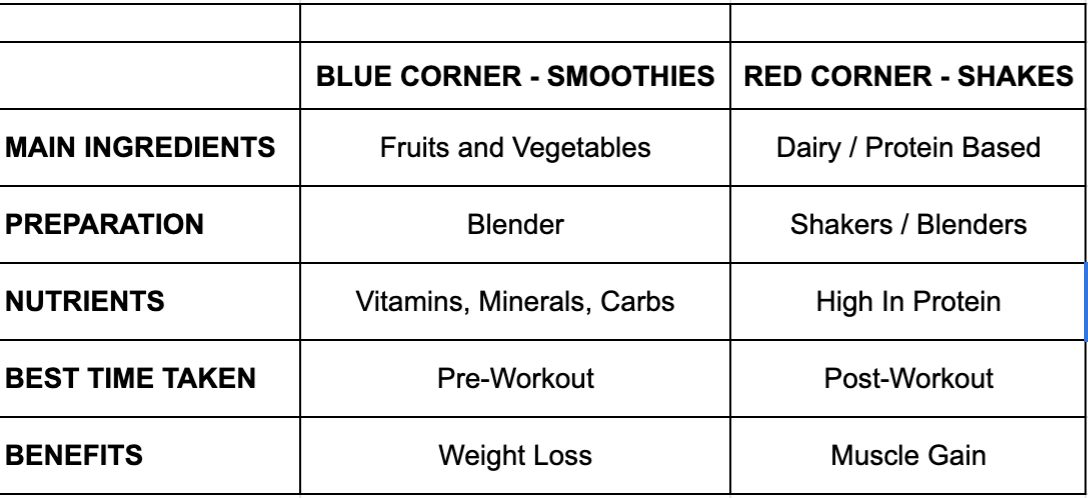
What’s in a name?
The term “smoothie” comes from the smooth texture of the concoction after all the fruits, vegetables, and other ingredients are blended. The texture somehow resembles a sorbet.
Shakes are associated with the old-time favorite “milkshake.” But now, shakes can be made without milk. The most prevalent version in the fitness world are protein shakes made with protein powder.
The Ingredients

Smoothies are made out of a variety of fresh ingredients like fruits and vegetables. People who are following clean diets such as the Calisthenics Diet prepare them to increase their intake of fresh produce. Nowadays, many people following this diet also include protein powders in their smoothies to get that added boost. Some even opt to add ingredients such as flaxseeds, chia, and wheatgrass.
Shakes, on the other hand, are made-out of dairy or other protein-based ingredients like protein powder. Most protein shake powders are already flavored. However, there are still people who prepare it with the milk of their choice like cow’s milk, almond milk, or soy milk; then they add flavoring ingredients such as chocolates, peanut butter, caramel, and fruits. But even with the added ingredient or flavor, the dominant ingredient is still the dairy or protein powder.
The Preparation
While blending smoothie ingredients only requires a press of a button, the challenge is actually having the fresh ingredients available every time. People who live busy lifestyles do not always have the time to actually buy the ingredients, clean, and prep them for use. Of course, you can always get one from a smoothie shop, but unless you know the shop owner personally, you’re not really sure if you’re getting fresh ingredients in your smoothie.
Shakes are much easier to prepare than smoothies. All you need is your protein powder, water, and a shaker bottle. You don’t need a blender or electricity to prepare one. This makes it convenient, especially if you’re on the go. This is not possible with smoothies and fresh ingredients.
The Taste
Because smoothies are made with fresh produce, it follows that they have a fresh taste to them as well. People who like sweeter drinks can go with fruit-filled smoothies. Others love the taste of the “green smoothie,” mainly made with vegetables. Of course, most fruit smoothies taste sweeter or more palatable than one made out of kale, but the sugar content on a fruit smoothie will also be higher.
Shakes typically have that old-fashioned milkshake taste and consistency. The most popular flavors of protein shake powders are the same as milkshake flavors too: chocolate, vanilla, and strawberry!
The Nutrients

Smoothies are high in vitamins, minerals, and fiber, but it still really depends on what you’re putting in your blend. If you’re putting more fruits with higher sugar content like mango, banana or pineapple, although you’re getting lots of nutrients, the carbohydrate content will be higher. However, if your main ingredients are vegetables like cucumber, kale, spinach, and celery, then the sugar content will be low or almost non-existent. You will usually get more benefit when choosing vegetable-based smoothies than one made with more fruits.
Most traditional shakes pack a lot of protein and fats, but now, most protein powders are manufactured without sugar and fat. Unlike smoothies, you’re not getting the bountiful amount of other nutrients with most protein shakes unless the one you’re having is specially fortified with vitamins, minerals, and fiber.
Recommended time of consumption and benefits
Smoothies are best consumed as a pre-workout snack since they are lighter in the stomach and can burn faster. The carbohydrates you get from smoothies turn into sugar, which gives you that needed energy during your workout.
Shakes are rich in protein, which means they are best consumed as a post-workout snack because protein turns into amino acids used to rebuild muscle fibers after a workout. Shakes can also give you that fuller feeling that will keep you running throughout the day.
The Verdict
Smoothies and shakes play a different role in your diet. What you choose depends on what your fitness goals are and your personal preference.
If you like a fresh burst in your drink and want to incorporate more fresh produce in your diet, go for smoothies. If your main goal, on the other hand, is to ramp up your protein intake (or you cannot simply bear the taste of a smoothie), then choosing a shake may be better for you.
The post Smoothies vs Shakes: Which Is Better For Your Fitness Goals? appeared first on FinerMinds.
Move Higher: A Holistic Guide on How to Boost Your Spiritual Health 18 Jun 2019 8:08 AM (5 years ago)
What’s your definition of wellness?
Some think of wellness in terms of how physically fit they are. But wellness is more than that. Personal wellness encompasses one’s physical, emotional, social, intellectual, and spiritual health.
Now, you probably know how to work on the first four aspects. You know the importance of working out and expressing your feelings. You also understand why it’s important to connect with other people, as well as the need to engage in activities that stimulate your mind.
But what about your spiritual health? Do you know how to nourish your spirit?
Here, we’ll talk about why you need to develop your spiritual wellbeing and the ways to do it.
Looking Inward: Why Your Spiritual Health Matters
If you’re finding it difficult to have a spiritual wellness routine, you’re not alone. There are people who feel the same because spirituality is a personal matter.
You have to look deep within and figure out what gives your life meaning and purpose. For some, this means religion. So for them, being spiritual involves going to church, mosque, synagogue, and so on, and practicing their religious beliefs.
Others though don’t associate spirituality with a specific religion. They connect with their spiritual side through other means (e.g., meditation, yoga, affirmations, etc.).
No matter how you choose to get on the path of spirituality, one thing’s for sure: spiritual practices come with many benefits. These include increased compassion, empathy, and attention; stronger relationships (through participation in spiritual fellowship); better health outcomes, and more.
How to Improve Spiritual Wellness
What you want to achieve when choosing spiritual wellness activities is a life filled with purpose and meaning. That’s why if you’re still working out what spirituality means for you, it’s best to do a lot of self-reflection.
Ask yourself, “Who am I? Where is my life headed? What do I value most?” The more you connect with your inner self, the more you’ll see your place in this universe. This will allow you to check your actions and how they affect your life in the long term.
Introspection will also help you make better decisions and come up with a plan to achieve harmony within yourself. Other than introspection, you can increase your spirituality through:
1. Meditation
You don’t have to be a monk to meditate. That’s the beauty of meditation – anyone can do it. And you don’t even need hours to do it.
You can do it when you wake up, during breaks, or before you go to sleep. 5 to 10 minutes daily is enough for anyone to meditate.
Now, if you don’t know how to do it, you can start with the basics. First, find a comfortable place where you can sit still for a few minutes. Next, focus on your breath. If your mind wanders, don’t stress about it.
Just get back to focusing on your breathing and try to let it stay there for 5 minutes. You’ll get better with practice, and you can even try other types of meditation such as body scan or progressive relaxation, transcendental meditation, and so on.
2. Yoga
One of the best ways to increase spirituality, yoga isn’t just a series of poses to help you achieve a leaner body. Yes, practicing yoga offers physical benefits. But there are mental and spiritual rewards, as well.
These include reduced stress, improved focus, and self-healing, etc. Like meditation, anyone can practice yoga. You can join a class, work with a personal yoga trainer, or self-practice (e.g., you can follow yoga videos on YouTube, or do further research on its history).
To reap the spiritual benefits of yoga though you have to do it regularly. You can’t just attend one class and say you didn’t reach spiritual enlightenment and therefore it’s not effective. You have to find ways to fit it into your life.
And you have to set your intention and be sincere about practicing it. If your only goal is to get a thin yoga body, sooner or later you’ll get tired of it. To get the most out of yoga, try to see it as a way to cultivate awareness and connect deeper with yourself.
3. Prayer
Did you know that even non-believers turn to prayer in times of crisis?
The fact is you don’t have to be religious to pray. It’s something you can engage in daily like meditation or yoga. And you can do it by yourself or with a group.
Now, if you haven’t prayed in a long time there, try to explore your options. Visit a non-denominational church, read about other religions, join a prayer group, and so on. You don’t have to join anything if you feel it isn’t right for you.
As for believers, if you see your religion as the way to boost your spiritual health, make sure you don’t become a passive member. Reflect on your beliefs and don’t be afraid to question them. Doing this will either help you become more firm in your faith or put you on another track to spirituality.
4. Travel
You don’t have to see the world to connect with your inner self. But being in a new place, especially one that’s far away from distractions will help you reflect and recharge your spiritual health.
One way to do this is to go on hikes and walks that allow you to see more of nature. Spending quiet time, feeling gratitude for everything you see, will do a lot for your spiritual wellness.
In some ways, travel is the ultimate spiritual journey. It will help you broaden your perspectives, letting you place more value on experiences rather than things.
Need More Tips and Advice on Spirituality?
Now that you understand the importance of cultivating your spiritual health and the ways to do it, you should find it easier to develop a spiritual wellness routine.
And if you need more tips and advice on spirituality, feel free to check out the rest of our blogs. We recommend 8 spiritual quotes to inspire your week ahead and 6 practical ways to have a spiritual awakening and radiant life.
The post Move Higher: A Holistic Guide on How to Boost Your Spiritual Health appeared first on FinerMinds.
5 Steps to Create a Love Revolution 18 Jun 2019 6:55 AM (5 years ago)
“All you need is Love.”
“What the world needs now, is Love, Sweet Love.”
At first glance, these words might seem like corny song lyrics, but upon further exploration, you may also find an innate truth. A truth that is “up” for your and my assessment so that we can hear the deeper call of recent world events.
Albert Einstein told us long ago a wise truth: that the definition of insanity is doing the same thing over and over again all the while expecting a different result.
And yet that’s precisely what we often see time and again on the world stage. Hatred, anger, violence, and pain projected out in violent acts and events and with it a response of outrage, judgment, and blame.
So it begs the question: what would happen if instead of doing what we’ve always done (which we’ve already established is pure insanity), we, as a collective, hit a tipping point where more of us were choosing another option and living in a new way, free of the insanity that has been our reality for eons?
What if after all of this time, we chose to follow the wise counsel of the likes of Martin Luther King Jr., Mahatma Gandhi, and Jesus Christ?
Each of these wise men told us to love our “enemies,” and to let our anger move us forward into loving action that is love revolution.
So, imagine what would happen if instead of projecting our pain, anger, and hatred back at those carrying those very energies that we finally followed the guidance from these wise ones and put into action a love-centered way of living?
Are you game?!
If so, check out the following 5 ways that you can begin today to support a mass tipping point for a revolution – not of continued violence, war, and pain – but Love:
1. Commit to ending all intake of violent media, which advocates and perpetuates a vibration of violence.
When we watch crime dramas or violent films or play violent video games or sing along to violent, degrading lyrics in a song as a form of entertainment we are literally saying to the Universe and to film, TV, video game and music creators, “yes, I want more of this in my life and thus in this world.”
Let’s slow this down for a minute and think about it more fully. Why would we think that watching other people “pretend” to kill and harm one another was a form of entertainment? Sounds a little bit like the insanity that Einstein was talking about before, right?
Not to mention the message it sends to young boys and girls as well as adult males and females in this country and abroad about how to treat one’s fellow human. The “good versus evil” storyline is one that we and the entertainment industry have been focused on for a long time (you know, doing the same thing we’ve always done and then expecting that people won’t act out in violence – that’s insanity!). These distorted forms of “entertainment” keeps us in a perpetual cycle of war, violence, and hatred.
It’s time to send a strong message to all entertainment creators – unless it’s filled with peace and Love – we’re not having anything to do with it.
2. Get involved with an organization – in your local community, preferably – that promotes peace and love and empowerment.
I have a list of Peace, Love & Empowerments organizations listed on my blog here for inspiration:
Make it your commitment to 1-2 times a month be actively involved in joining forces with this organization to spread more peace and love to your and our planet.
3. Wear the love and peace message in every way you can.
Get clothing and/or jewelry and/or tattoos that carry messages of Love and peace, and wear it proudly whenever you’re out and about.
4. Speaking of when you’re out and about, smile at that person walking past you or in front of you, tip generously, compliment those you come into contact with.
If someone looks like they need a hug, ask them if you can give them one. Turn “random” acts of kindness into your daily experience. In addition, you can pray each day for peace and love in your part of the world and the entire world at large. Use everything you’ve got to create a vibration of love and peace for yourself and all those in the world.
5. Clean up the way you talk and think about yourself and those around you. Especially those that you perceive as “different” from you.
This is where a good therapist, healer, or mentor comes into play. The only way we get to a world with love as its primary operating system is if we have people in the world who are actively dedicated to living as love and peace while on this planet.
To do that, you have to clean up the violent ways you think about yourself and those around you. A trained, healing professional can support you in doing so. Why bring someone else on your team? Think of athletes or anyone who is a master at what they do. They have a team – sometimes filled with a vast entourage – of support people.
Why? Because they know there are things they can’t see about themselves that is tripping up their ability to be the master they know they were born to be. The same is true in life.
To be a master, you must begin to live as a master. Every master has an incredible team supporting him/her to embody his/her Destiny fully. A Love Revolution requires nothing less as well.
At this time in our world’s history, in the evolution of human beings, we are each presented with an incredible opportunity to break out of the collective insanity of blame, judgment, war, hatred, and violence.
But only if we will take consistent and focused action to bring more love into the world.
Let’s start right now!
I’ll go first:
I love you. And I want you to have the best life you can possibly can truly. And I want to do everything in my power to cheer you on so that you and I can each create this and therefore create space and inspiration for even more beings to do the same.
So, how can I support you in this? How can I support YOU in living your most Love-filled, peaceful, prosperous life?
Okay, now your turn…
The post 5 Steps to Create a Love Revolution appeared first on FinerMinds.
8 Surprising Benefits Of Early Morning Walks 14 Jun 2019 4:52 PM (5 years ago)
Waking up a little earlier and motivating yourself to go for a morning stroll may seem like an irritating chore. But, going for a walk in the morning is a great way to keep fit and according to the author someone who adds CBD to their weight loss plan without also exercising and eating healthfully may not see any benefits.
Walking is safe and effective for everyone. Here are the benefits of early morning walking for overall health.
1. More Energy
Morning Walks helps to improve blood circulation and give lasting energy for busy days. Regular morning walkers feel full of energy, tend to be in better moods and more fit than those who sleep in and head right to work. People who don’t go on morning walks feel lethargic throughout the entire day and become tired at night.
Walking releases positive hormones called endorphins to feel good. Morning walks help reduce stress and improve mental clarity.
Morning walks are best for time management, as you are free to carry out other activities. You will feel more comfortable once you have finished your morning walk and will be ready to take on any challenges for the rest of the day. A positive mindset will help you overcome difficult obstacles due to feeling more energized and strong from daily morning walks.
Walking is useful because it contributes to a balanced lifestyle and more energy. Waking up earlier to incorporate a walk into your busy schedule may seem like trouble. However, daily morning walks serve you well in the long run. Walking is free of cost and risk.
An active lifestyle involving regular morning walks promotes many benefits such as an improved mood, an increased quality of sleep, and a decreased chance of disease.
2. Strengthens The Heart And Prevents Strokes
Walking helps increase cardiovascular health because you are improving your oxygen intake by moving in the morning. Don’t worry if you can’t fit a gym session. Morning walks burns calories, strengthens bones, and helps with fitness. It is manageable to do regularly, and you can control the pace and duration. Daily walks contribute to better blood circulation and help protect against heart disease.
Walking for about 30 minutes every morning can help you lower blood pressure and also reduces the risk of heart diseases and stroke. If you make a morning walk as a part of your routine, you can strengthen your heart and controls blood pressure.
3. Keeps Away Stress

Morning walks help bring peace of mind. Walking reduces stress and anxiety. Regular walks contribute to a sense of accomplishment and help improve mental health. You will have a positive outlook, increased self-esteem, and ward off mild depression. You can cope with stress better.
Morning walks can keep you away from stress. Walking improves blood circulation to the brain and also improves mood. It keeps you away from stress, depression, anxiety, etc.
You should still seek out medicine and treatment for specific health conditions because walking is not an appropriate substitute.
4. Build Muscles And Endurance
Walking helps build muscles and endurance by daily using them to strengthen the body. Habitual morning walkers have high muscle strength and can physically exert themselves for a long time without symptoms of fatigue.
Walking in the morning helps your muscles will experience more blood flow and You will be more inclined to become a morning person if you have an incentive to wake up early to feel stronger. Feeling better about your health from daily morning walks will likely make you stick with this healthy habit to improve your muscle tone.
Brisk walks are a form of light aerobic exercise which contribute to more oxygen and the movement of glucose to cells. Regular morning walks improve brain and body functions. Free your mind by getting up and walking around to feel better and relax more. Taking a break outside to walk around is particularly helpful if you are feeling mental fog or want to calm down.
5. Promote Weight Loss

People who begin their day by walking tend to help speed their metabolisms. Food lovers and those who overeat can manage their weight by deciding to get moving in the morning.
Instead of skipping breakfast because you’re running late, you can wake up early to go for a brisk walk to build up your appetite. After going for a walk and eating a proper breakfast, you will feel fuller for longer. Walking burns calories and helps keep a healthy weight.
6. Improved Sleep

Getting enough sleep every night is essential to ensure good health. Morning walks contribute to positive moods, stronger muscles, and properly working circulatory system. They bring relaxation to the mind.
Habitual walks are useful for the beginning and end of the day. Your quality of sleep will increase from them.
7. Improved Overall Well-Being
Enhance your well-being by walking. Getting some fresh air in the morning will help you more energy, free time to plan out the rest of your day and a fresh start.
Morning walks help calm your mind from thinking about upcoming obligations instead of sleeping and having to rush off to other commitments. Walking allows you to feel revitalized, sharpens your mind, and makes you feel more active.
8. Lowers The Risk Of Diabetes
Diabetes is one of the most prevalent lifestyle-related diseases these days. But you can tame this metabolic disorder if you walk in the mornings. According to research, 30-minute morning walk can help improve blood sugar control as well as aid the management of insulin in Type II diabetes
Morning walks manages and prevents diabetes hypertension by improving blood flow in the body. Proper blood circulation results in the maintenance of blood pressure. Regular morning walks alleviate stress and prevent disease. You will be in control of managing blood pressure to prevent hypertension. Daily walks raise insulin sensitivity, improves levels of blood sugar, and reduce body mass, which helps people with diabetes.
The post 8 Surprising Benefits Of Early Morning Walks appeared first on FinerMinds.
8 Easy Ways To Get Rid of Migraines and Get Back to Living 14 Jun 2019 4:47 PM (5 years ago)
Curing migraines is not as hard as you think it is, but you must be certain that you have figured out how you can use home remedies to make your life better.
Someone who is trying to get their migraines under control has to do something that will be good for them. They also need to be certain that they can use these remedies when they are moving around town, going to the office, or even traveling.
Each of the 8 things listed here will change your approach to migraines, and as a result, make you feel much better.
1. Tea

You could use chamomile tea for the relaxation effect, and you might beat back your migraines because of the fact that you are drinking this tea regularly. Be sure to have the tea as hot as possible in order to get the steam into your nostrils and lungs.
Consider adding honey to this tea, and that will help your body even more. Honey is a natural painkiller, and it could help you make the migraine less painful while you are waiting for it to just go away.
2. Daith Piercing
This is a special ear piercing that is used by many people to help make contact with a pressure point near the center of your ear. This piercing is for the little flap right over your ear canal, and many people have used it to great success.
You might want to talk to other people to see if they have done this, and you could learn how successful they were when they tried it. This might be painful, but it could be a small price to pay for you to get rid of your migraines.
3. CBD Oil
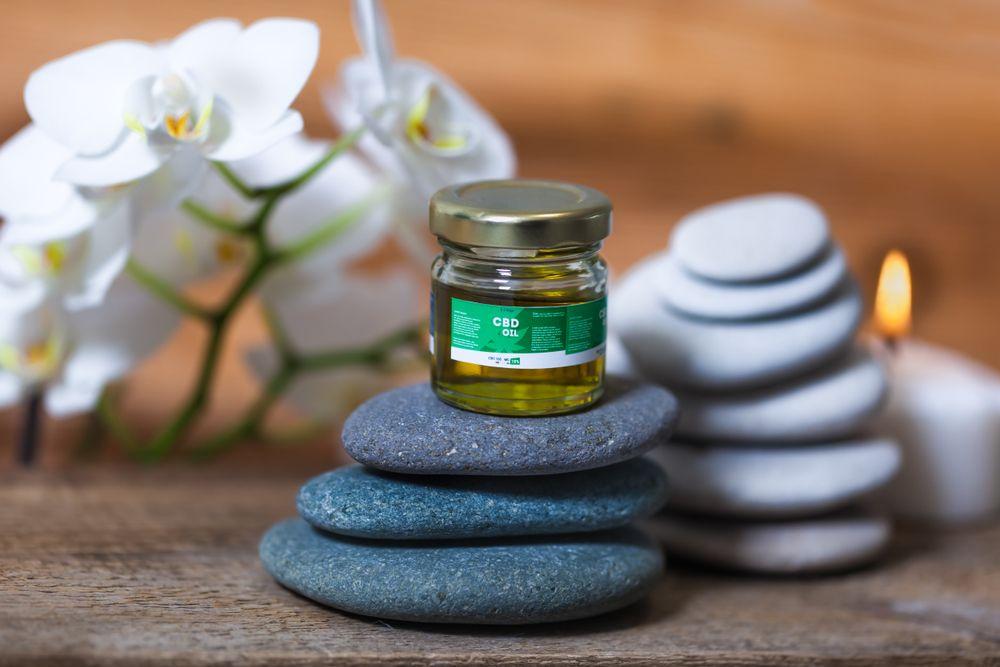
What is CBD oil? CBD is one of many compounds, known as cannabinoids, in the cannabis plant. Researchers have been looking at the possible therapeutic uses of CBD. CBD oils are oils that contain concentrations of CBD. Organic CBD Nugs has some really good varieties of CBD tinctures that are used for ailments. Currently, you can find a lot of wax pens for sale online to use with your CBD.
The concentrations and the uses of these oils vary. You could use this if you want to see your migraines start to disappear. You cannot be sure that they will go away just because you used CBD oil, but you can be assured that you have a much better chance of making them go away when you have used this remedy.
This is a safe thing to use even for kids, and it will make you feel much better about yourself because you are using something that is so simple it could be deployed in a candy.
4. Temple Treatments

You could rub the same CBD oil you were using above on your temples, and that might make it much easier for your body to cope. You have this stinging pain near your temples, and you will treat it with an oil that gets into the skin very fast. Because of this, you will see them go away much faster in many cases.
5. Meditation
 You must use meditation so that you can get your body to respond in a way that you feel is best for you. You need to be in a space where you can get the meditation done in the quiet, and you need to think of ways to focus on something other than the migraine.
You must use meditation so that you can get your body to respond in a way that you feel is best for you. You need to be in a space where you can get the meditation done in the quiet, and you need to think of ways to focus on something other than the migraine.
6. Visualization
 You might go to a visualization exercise that will help you imagine a place where you do not experience these migraines. That is very powerful for you, and it can help you when you are trying to make the pain go away naturally.
You might go to a visualization exercise that will help you imagine a place where you do not experience these migraines. That is very powerful for you, and it can help you when you are trying to make the pain go away naturally.
7. A Glass Of Wine

Some people believe that a glass of red wine can help your migraines go away. You must plan to drink one every night as something of a preventative measure for your chronic condition. This works well for heart disease, too.
Conclusion
You could use any of these remedies, however, be thoughtful about it because you cannot deploy all of your remedies at once. Make sure you’re in a place where you can use the thing that you think is best for you. Also, remember that not everyone responds to these treatments in the same way. If you feel like you can do better with one over the other, start using that remedy the most.
You are welcome to try everything, and most of these things are safe for kids if they get migraines like you.
Disclaimer: These statements and products have not been evaluated by the FDA. They are not intended to diagnose, treat, cure, or prevent any disease or condition. If you have a health concern or condition, consult a physician. Always consult a medical doctor before modifying your diet, using any new product, drug, supplement, or doing any new exercises.
The post 8 Easy Ways To Get Rid of Migraines and Get Back to Living appeared first on FinerMinds.
Make Healthy Decisions Easy With This Incredible Kitchen Overhaul 13 Jun 2019 11:22 PM (5 years ago)
Many struggle and fail to maintain a healthy diet because of the common misconception that a good diet and making healthy decisions is solely achieved through willpower. In order for a person to achieve and maintain a healthy lifestyle, one must be too passionate and have a heart of willingness to learn more about making healthy choices in everyday lives. Willpower requires constant focus and effort which is simply unsustainable, not to mention unenjoyable.
There is a better way. You wouldn’t try to swim across a rapidly flowing river if you knew there was a bridge just around the bend, would you?
The secret to maintaining a healthy diet is to be healthy by design, not by willpower. Many external factors such as environment, relationships, employment, and kitchen have an impact on what we eat and the decisions we make. However, simply acknowledging this fact doesn’t help us achieve our health and diet goals.
We need to understand why these things impact our diet. That knowledge can then be used to strategically design a way to use these external factors to our advantage so their impact promotes a healthy lifestyle versus an unhealthy one.
Being healthy by design sets us up for success because the bulk of the effort is removed by intentionally and mindfully adjusting our environment to promote a healthy lifestyle and healthy decisions. The more external factors promote a healthy diet, the less effort and willpower are required to maintain it.
Impact of Environment On Healthy Decisions
The environment is one of the largest influences. A stressful environment has a detrimental impact on diet and is triggered by any variety of external stimuli.
In other words, the thousands of things constantly trying to grab your attention are causing you to stress whether it be dozens of work emails, honking cars, social media notifications, dirty dishes or stacks of mail.
Sounds like a pretty standard day, right?
The human body reacts to stress with the fight or flight response which is a human defense that enables the body to identify danger and react to it. However, modern technology and busy lifestyles trigger the flight or fight response in non-life threatening situations from over stimulation.
This has caused many to be chronically stressed from having too many things, too many tasks, and too many distractions. The human body was not built to withstand this kind of long-term stress which results in exhaustion, overwhelm and poor decision making.
To put it simply, reduce stress within your environment to promote a healthy diet. This is easier said than done because we tend to attribute all of our stress to the largest and most apparent stressors such as big work projects, overloaded schedules, and family problems while ignoring the thousands of small stressors within our environment that add up to a large amount of unnecessary stress.
A Stressful Kitchen Environment
Stress within the home environment, specifically the kitchen, has a huge impact on diet and making healthy decisions but isn’t always easy to identify. This stress comes in the form of clutter and disorganization.
1. Cluttered Kitchen, Cluttered Mind
All the stuff cluttering the counter, cabinets, and drawers is also cluttering your mind because every time you walk into a room, each item acts as either a distraction, an obstacle or a visual reminder of all the tasks that need to be completed.
I call these pings because each thing is pinging your brain for attention. Too many pings overstimulate your senses and brain causing them to work in overdrive. This sends signals to your brain that make you feel as if you can’t catch up and will never get everything done.
Have you ever found yourself avoiding the mound of paperwork and mail that keeps getting shuffled around the counter? Ignoring a fridge door full of sticky condiment bottles you never use? Hating the feeling of overwhelming work when you look at a sink full of dishes? These are all the result of a cluttered and overwhelmed brain.
2. Never Enough Room
Counter space is prime real estate in the home and at some point, everyone has wished they had more of it. It is frustrating to constantly push things aside in an attempt to make enough room to prep a meal only to accidentally knock a stack of mail all over the floor in the process.
Instead of more counter space, what if there was simply less stuff taking up space or the counter space was used more efficiently?
3. Challenge Finding Things
Have you ever spent time rummaging through a spice cabinet or the fridge trying to find the ingredient you need? Or taken 15 pieces of Tupperware out of a drawer before finding a matching container and lid? We end up spending more time searching for things than actually prepping, cooking and cleaning up after our meals.
Does any of this sound familiar?
Personally, these things have caused me to ditch a healthy meal and opt for leftover takeout on more than one occasion. As you can see, many of the things that encourage poor food decisions aren’t even related to actual food. They are things within the home environment that are disrupting the process of making healthy decisions and preparing meals.
The issue? We have too much stuff.
This is easier said than done. Overconsumption is running rampant in modern day society. We are taught to believe we need things. This includes multiples of things and things we don’t need or won’t use.
Low prices, good deals, and shiny new products cause us to impulsively purchase more and more stuff with the belief that it will make us happier although it does quite the opposite.
The solution? Get rid of it.
Then we struggle to get rid of an item because we think that it “holds value” in the amount it was purchased for. However, in reality, the moment money is exchanged for an item, is the moment the value of that money is lost. The value of the item purchased starts at zero.
Once you own the item, the value of that item is not determined by the purchase price but rather how much you personally value it. Personal value comes from how much the item improves your life through use or how much true happiness the item brings you.
If the item has been sitting in a closet for the past year, still has the tags on it, or simply doesn’t provide any true happiness the item holds zero value. It is not worth the money you bought it for.
In order to make room in your brain (and home) for the things that really matter, “zero value” items need to be removed from your life. For every “zero value” thing you get rid of, you gain a little more freedom from all the unnecessary distractions, reminders and obstacles.
Action Item 1: Reduce
The first step to creating an efficient and stress-free environment is to reduce the number of items we own by disposing, donating or selling what isn’t needed or used. Go through every drawer, cabinet, counter, fridge, nook and cranny in the kitchen. The goal is to simplify. Less is more.
1. Get rid of multiples and extras.
Although this step is pretty self-explanatory, here are a few specific tips to get started. Keep only one of every small appliance, kitchen gadget, and utensil with the exception of cooking spoons and spatulas in which two of each should be kept.
For plates and soup bowls, keep 2.5 times the size of your household (4 person household should keep 10 plates and bowls). For drinking glasses, keep 3 times the size of your household (4 person household should keep 12 drinking glasses).
Keep only one of every type of cleaner or better yet keep one all-purpose cleaner. Throw away everything that is expired in the fridge and pantry. Click here for a full itemized checklist.
2. Get rid of things that aren’t used.
Donate, toss or sell any item that hasn’t been used in one year (or 6 months if you are feeling aggressive). Avoid thinking about hypothetical situations (What if I decide to have a fondue party?!) as they only draw out the process.
Things that tend to fall into this category are small appliances, fancy China, condiments, placemats, napkin rings, and that Easter themed serving platter Aunt Ginger gave you four years ago for Christmas. Her intentions were good but her execution was lacking.
*Tip/Idea: Instead of storing sentimental items (such as dishware passed down from a grandparent) in the corner of the basement, you could use the sentimental items, give them to another family member or friend who will use them, or display them tastefully somewhere in your home as a keepsake.
3. Get rid of things that aren’t needed.
This is different than things that aren’t used. We may have things we use but don’t really need because they can be replaced by things we already have.
For example, I used to have a Keurig that I kept on my kitchen counter and used to make tea. I received it as a gift when Keurig’s were the new “must have” item. Although I used it almost daily, I hated how much counter space it took up and the “Add More Water” light always seemed to be blinking at me which I found particularly annoying for some reason.
One day I realized there were a lot of things I didn’t like about something that gave me very little in return, being my tea. I could easily make tea in the microwave or on the stove with things I already had. I gave the Keurig away the very next day.
Things that tend to fall into this category are items with very specific purposes like rice cookers, pizza makers, apple slicers, garlic peelers, bread makers and giant countertop mixers.
You should only consider keeping an unnecessary item if it brings you genuine happiness on a regular basis. This is the most challenging step as it requires you to dig deeper.
Completely disassociate any amount of money spent to purchase the item or how much money you think the item is worth. Start at a zero value and ask yourself if you actually need an item or if the item brings you genuine happiness. A decision tree may help! Answer truthfully.
Action Item 2: Organize
After putting in the time and effort to reduce clutter, the next step is to organize what you do have in the most efficient and stress-free way possible. Below are my most beneficial, rewarding and liberating organizational strategies.
1. Clear the Counters
Other than soap next to the sink, select 2 things you wish to keep on the counters and remove everything else including small appliances, knife blocks, fruit bowls, cookbooks, salt and pepper shakers, paper towel holders, etc.
Store frequently used small appliances in easily accessible cabinets. Put paper towels on an under cabinet paper towel holder. Store knives in a drawer or on a magnetic knife strip. Instead of storing produce on the kitchen counter, store it in a pantry, cabinet or in a decorative bowl on the kitchen table.
2. Spice & Seasoning Organization
Purchase matching spice jars (Amazon and dollar stores have very affordable options). Pour your existing spices into the matching spice jars, label the jars and organize them alphabetically. Store them in spice racks in a cabinet or in a drawer so all spices can be seen and accessed without moving other spices.
3. The Final Five
Most people only use a small portion of their kitchen possessions the vast majority of the time. Choose the top five kitchen items you use most. Designate prime real estate in the kitchen specifically for those five items for quick and easy accessibility. For example, a chef’s knife, cutting board, large mixing bowl, wooden spoon, and a large non-stick pan.
Never stack other things on top of or in front of any of your Final Five items. Always wash and return your Final Five to their designated place as soon as they are done being used.
4. Designate a Place for Everything
Have a specific place outside of the kitchen for papers, mail, keys, backpacks, coats and any other miscellaneous items that find their way into the kitchen. A wall-mounted mail holder, key hooks, and coat racks are easy solutions.
Challenge yourself and household not to leave anything on the kitchen counter that doesn’t belong there for one week. Small successes create good habits.
Action Item 3: Strategize
Strategically developing good habits is essential to maintaining a clutter-free kitchen and promoting healthy decisions. The best way to guarantee success is to always start and end the cooking/eating process with a clean slate.
1. Dishwasher Check
Before preparing a meal, check if the dishwasher or dish rack is full of clean dishes. If it is, empty it before cooking anything. Don’t put it off, you will regret it. This is the most challenging habit to create but the most impactful.
If the dishwasher is full of clean dishes, you can’t fill it with the dirty dishes from cooking and eating. So, the dirty dishes end up in an overwhelming pile in the sink and the vicious cycle begins.
2. Practice Cycle Cooking
Break up the cooking process into three major cycles: Prep, Clean, Cook/Clean. Complete each cycle before you begin the next cycle. This strategy allows you to focus on one task at a time and fully complete each task. Subsequently, the cooking process turns from stressful, overwhelming, and messy to enjoyable, calm, and clean.
3. Use One and Only One
Use only one of each cooking tool throughout the cooking process; one cutting board, one knife, one bowl and so on.
If you need a tool for more than one task, rinse it and use it again. Do not use something once and toss it in the sink. This creates a mound of dishes and a lot of extra cleaning.
Over time this will become a habit and the time spent cooking and cleaning will shrink drastically.
4. Do, Defer, Delete
Categorize each piece of mail the day you receive it by Do, Defer or Delete.
Do means you will do something immediately such as pay the water bill or immediately clip out a coupon and put it in your wallet. Defer is what you will act on in the near future.
Keep deferred items in the place you designate for papers and mail. Delete is for things you will not act on, things you don’t need and junk mail. Those items go straight to the trash.
5. An eye for an Eye Principle
For every new item you bring into the kitchen, donate or throw away an old item. This helps us think through purchases and prevents clutter from sneaking up on us again. Donate or return gifts you won’t use or enjoy and don’t feel guilty about doing so.
Reducing, organizing and strategizing creates a calm and focused environment which is essential for promoting healthy decisions. This is because it makes the cooking, cleaning and eating processes much simpler and more enjoyable.
All the energy, effort, time and attention consumed by unnecessary stressors can be redirected to important things that create health and happiness.
The post Make Healthy Decisions Easy With This Incredible Kitchen Overhaul appeared first on FinerMinds.
How To Reduce Stress While Driving: Try Mental Yoga! 10 Jun 2019 7:42 PM (5 years ago)
Even when you feel totally calm and relaxed during the yoga class, you might find that all your mental tranquility vanishes once you sit into your car and start driving.
How can you cope with that? Practice Yoga behind the wheel.
Sounds dangerous, right? So keep reading :)
It’s a well-known fact that many people practice yoga to reduce stress. True, it’s one of the most relaxing and de-stressing activities. The mental balance and stress-relief effects of yoga are proven by various studies.
For instance, a study called ‘The Effect of Yoga on Stress, Anxiety, and Depression in Women‘ shows that only 12 sessions of regular hatha yoga practice are enough to significantly decrease depression, stress, and anxiety in women.
Sounds wonderful, doesn’t it?
However, often all the positive effects of yoga practice wear off almost immediately once you find yourself stuck in traffic. It’s hard to remain calm and mindful when all the drivers around you seem to do everything just to annoy you.
Furthermore, such stress isn’t merely displeasing — it could be dangerous as well. Brake and Direct Line published a survey that states that 71% of UK drivers had lost concentration at the wheel due to annoyance and stress.
Therefore, it’s crucial to learn how to stay calm while driving for your own sake.
How can you do that? With the help of mental yoga.
Here Are 8 ways to Use Mental Yoga to Reduce Stress and Anxiety Caused by Driving
Most people react to stress in the same way: they tense, they start breathing shallowly, and they cannot focus on anything besides the cause of their stress.
Yoga teaches us to approach our emotions in a calm and mindful way, to relax both our mind and body, and to find a way to think clearer, no matter how stressful a situation might be.
That’s why it’s always a good idea to practice mental yoga while driving.
1. Take a breath
Proper breathing is a foundation of yoga and a way to stay calm even when it’s nearly impossible. Therefore, if you need to start with something, start with it.
When you are stressed or angry, or anxious, your breathing most likely isn’t calm at all. Calming it down can instantly help you focus. You can start with simple slow breathing or try one of the breathing techniques.
2. Pay attention to your jaw
If you are frustrated by traffic and other drivers, there’s a big chance you’re clenching your jaw. Try to soften it, to open your mouth slightly to create some space between jaws. This will help you relax and also will be good for your teeth.
3. Notice the way you grip the steering wheel

The same goes for your grip — there’s a chance you’re holding the wheel tighter than needed. In this case, soften the muscles and joints in your hands, relaxing your grip a bit.
4. Eliminate all distractions
It’s easy to be annoyed and stressed when you allow yourself to pay attention to every frustrating detail (and to the ones that don’t seem frustrating at first glance). How can you minimize distractions? For instance, by making a driving playlist in advance or by putting away your phone and turning the sound off.
These small tasks might seem insignificant; however, they might have a huge impact on your driving. After all, we often don’t notice how much these distractions affect our mood until they’re gone.
5. Set an intention
If you followed the fourth tip, then you probably have fewer distractions around you. However, even in this case people often struggle with the thing they cannot change that easily — their mind.
What to do when you keep getting annoyed with so many things during driving?
Try to set an intention to stay calm and peaceful, and to focus only on the driving process, not on your negative thoughts. This doesn’t come easily, but practice changes that.
6. Remind yourself about this intention

Maybe you’re doing your best but still cannot get enough relaxation. That’s okay, as long as you keep breathing and reminding yourself that getting annoyed won’t change the situation you’re in.
Just breathe and try to stay calm and focused on the intention. If you do this long enough, the tension will go away.
7. Practice seated Cat-Cow yoga to reduce stress
Yes, it is possible, but only while you sitting in traffic, not during driving. Keep your hands on the wheel, take a deep breath and bend your back slightly, while rolling the shoulders back slowly. Exhale and allow the shoulders to hunch forward.
This small exercise could instantly improve your mood and help your back at the same time.
8. Be compassionate
Last but not least, consider practicing compassion to fellow drivers. True, this might be incredibly hard, but those who practice yoga to reduce mental stress know how important it is to treat all beings with compassion and love.
 Changing the attitude towards fellow drivers is probably even harder than setting the intention to remain calm. You need to be understanding even when you want to scream in frustration.
Changing the attitude towards fellow drivers is probably even harder than setting the intention to remain calm. You need to be understanding even when you want to scream in frustration.
However, if you decide to be kind to the people around you, they might treat you with the same kindness.
Stress and yoga rarely go hand-by-hand if you are mindful and committed to sticking to yoga principles. Obviously, this might be hard sometimes, especially if you are a beginner yogi or when the surroundings are too stressful. However, the best way to cope with stress under such circumstances is to stick to yoga tricks and practices to maintain inner calm.
Do you practice mental yoga in daily life to reduce stress? If you do, please share your own tips and tricks in the comments below.
The post How To Reduce Stress While Driving: Try Mental Yoga! appeared first on FinerMinds.
What is the Work-Life Harmony All About? 10 Jun 2019 6:52 AM (5 years ago)
Most business owners and entrepreneurs are always on the grind.
It has become somewhat popular to proclaim yourself as a hustler and workaholic who puts in long hours and believes a healthy work space is the only way to achieve success.
And we have the evidence for that claim.
According to his biographer, Steve Jobs had an amazing work ethic and used to work from 7 AM to 9 PM every day when he returned to Apple back in 1996. The results of his 14-hour workday are visible even to this day – the company went from rags to riches under his leadership and is today worth more than $1 trillion.
Similarly, Elon Musk recently said that he works 120 hours a week as that’s the only way to keep Tesla afloat.
This glorification of hard work has become a thing, but is it possible that the only way to make it is to lay our health, personal life, and meaningful relationships on the line?
What’s less frequently mentioned in the business world is that the powerful, motivational stories of those mentioned above are just one side of the coin; the other one has burnout, and some even more severe health issues written all over it.
Karoshi, or death by overwork, is a recognized phenomenon in Japan. Many people suffer from heart failure or stroke due to overtime.
Let’s see why we need work-life harmony and how to achieve it.
1. It Boosts Productivity and Creativity
Our hectic entrepreneurial schedules get the better of us. We’re tired, absent-minded, and always racing against the clock to meet deadlines. We exhaust our brains.
Such conditions hinder productivity and creativity, because no matter how pumped and passionate you are about your business, your body and mind need rest and relaxation to thrive.
And that’s not just common sense.
Studies have shown that so-called “incubation effect,” that is allowing your subconscious mind to recombine different thought elements while resting and shed new light on a problem, which results in a new perspective on things and fresh ideas.
So, by cutting yourself some slack and taking a break from work, you’re actually letting your brain work in the background and achieve the eureka moment. According to researchers, this is by no means an accidental and unexpected phenomenon, but the result of a careful consideration of all the circumstances and then letting everything simmer by doing something else that won’t take up all of your brain’s mental bandwidth – going for a run, watching your favorite show, or taking a nap.
Let’s not forget that some of the most important discoveries which disrupted our world happened during daydreaming. That’s how Isaac Newton discovered gravity and Archimedes had a flash of insight about the principle of specific gravity: the former was idling around his parents’ farm, and the latter was enjoying a bath.
2. It Will Prevent Burnout
When you work all the time, your energy is drained.
And, it’s only natural to replenish it by letting your body and mind relax.
If you ignore this and keep on pushing yourself too hard and beyond your limits, you’re at huge risk from burnout.
According to the Gallup Wellbeing Index, 45% of entrepreneurs say they’re stressed.
All of us are aware that growing a business is full of challenges, stress, and sleepless nights, and if that’s all there is in your life, you won’t be able to go on like this forever.
Not allowing yourself to unwind and enjoy in regular, non-work related activities, will result in feeling overwhelmed and unable to cope with your daily activities and meet the constant demands of entrepreneurship.
You’ll find yourself in a state of helplessness, hopelessness, and a complete inability to deal with even some minor obstacles.
In a nutshell, your motivation and enthusiasm will start ebbing away, and the feeling that you’re on a conveyer belt will set in, rendering you unproductive and uncreative.
Burnout will affect, or to be more precise, ruin your health, relationships, and ultimately, your business – something that you’ve fought so hard to build and grow.
I’ve painted a bleak picture, but things don’t have to be this way.
Work-life harmony is the only way to prevent this worst-case scenario.
3. It Allows You to Enjoy the Little Things in Life
Life is what happens to you while you’re busy making other plans.
You might think that this quote is corny, but you can’t deny it’s true.
Our life is full of small moments that we usually fail to notice and appreciate, and when everything sums up, it’s those seemingly small and unimportant moments that count and matter the most.
Coming back home in the evening to have dinner with your family, a night out with your friends, your kid’s first soccer game, or taking your dog for a walk in the morning are some of the things that entrepreneurs constantly miss out on.
And what’s ironic about this is that many of us embark on the entrepreneurial journey for our family to have a better life. However, it’s easy to lose track and start chasing a pie in the sky instead of focusing on and living in the present moment.
Ways of Mastering Work-Life Harmony
Now that we’ve established how important it is to balance your career and personal life, let’s see how to actually do it.
1. Schedule Me Time
Yes, just like you do with your meetings with other people. This way, you’ll reserve a time slot in advance and organize yourself to make it to this necessary appointment.
Let’s be honest and admit that if you wait for the moment when you’re not too busy or meeting a deadline to treat yourself to a spa day or the cinema will never come unless you put it in your calendar and stick to it.
2. Create a dedicated workspace
One of the perks of being an entrepreneur is the chance to work from home. But this blessing can also be a curse if you don’t have a dedicated work space.
Given that work usually tends to spill over into our personal, family life, it’s important to keep it physically separated by not working from the living room or, worse, bedroom. This will help you be more productive and disciplined while reducing distractions.
It will be much more pleasant to come to a work and stress-free environment after a hard day at work–something that you won’t have a chance to do if you’re working from your couch or kitchen table.
3. Set Some Boundaries
Being an entrepreneur often means receiving calls and emails all day long. It also means saying yes to a number of meetings, many of which won’t bring you particular benefits.
It’s hard to say no, but that’s one of the first things to do when starting a business. It will save you from wasting a lot of time and energy. Also, make sure to mute your notifications while you’re unwinding or having a family outing, no matter how hard it is.
4. Delegate
Being in control of every single aspect of your business and wearing many hats is the way many entrepreneurs operate. But, it’s important to understand that there are tasks that you can easily and successfully delegate, and have more time and energy to focus on certain really important and creative things that require your undivided attention.
Think about outsourcing your calls, invoicing, customer issues, reporting, and marketing, as a) you already have a lot on your plate b) there are people like LG Networks who can do that better.
5. Don’t Neglect Your Hobbies
No, your business isn’t your hobby no matter how much you love what you do. It’s essential to clear your mind and allow the incubation process that we’ve already mentioned, to start. Find activities and interests that have nothing to do with your business and pursue them. This is the best way to prevent burnout and becoming fed up with what you do for a living.
Work-life harmony isn’t just another buzzword that the self-help and mindfulness industries have invented, but a crucial factor responsible both for the success of your business and your entire life.
Work smarter, not harder should become your personal mantra. The purpose of your business is to help you have a better and a more fulfilled life, so make sure not to become its slave and hostage.
The post What is the Work-Life Harmony All About? appeared first on FinerMinds.
12 Signs You’re Headed for Burnout (And How You Should Self-care) 10 Jun 2019 4:25 AM (5 years ago)
No one is a robot. Balancing your full-time job, family and other responsibilities can be overwhelming and stressful even to the strongest person.
You will experience days when you feel too lazy to go to work and want to return home early so that you can relax, but you have an endless list of tasks that have to be complete before you put your needs first.
Sound familiar to you?
It can be difficult to recognize whether what you are going through is burnout, or you are just tired. Burnout is associated with massive psychological discomfort due to excessive and prolonged stress rendering you helpless and hopeless.
This article has put together 12 warning signs that indicate that you’re headed for burnout and those that you need to watch out for and what self-care practice you can put in place to put your life back in track.
1. Feeling physically and emotionally exhausted
Burnout drains your energy both physically and emotionally. You will feel tired most of the days, experience fatigue and a lack of enthusiasm to practice healthy habits such as exercise, diet, and good sleep.
2. You are becoming negative and cynical
Have you become pessimistic, and frequently, you feel that nothing is working out?
You are negative and begin to doubt your value. Maybe you’ve become resentful and disconnected from your colleagues, friends, and family. You feel cranky, and always talk negative about yourself and snapping at people because you doubt their motives.
3. You have lost passion for the things you enjoyed doing
Burnout makes you feel that there is something better you can spend your time doing other than taking care of yourself. You practically find no time to do any hobbies and other interests thus lose passion in those activities.
4. You are always thinking about work
If you can’t put the work brain on shut down, you are exhibiting the most common symptom of burnout. It is characterized by constant thinking about work-related problems and trying to solve them even when you are supposed to be getting rest.
5. You become less productive than before
Burnout sucks out the energy and motivation of becoming fruitful and doing better at work. You will find your pace has slowed down and are working long hours yet producing very little.
6. You experience physical illnesses more often
When headed for burnout, your body will start responding to the anxiety that comes along by causing unexplainable physical symptoms such as chronic headaches, lingering colds, muscle aches, different rashes, etc.
7. You become unreasonably angry with little things
Your mind is in a constant state of fight or flight. You feel tense at all times and are no longer thinking straight, and minor issues might bring out a heightened anger outburst that doesn’t match the situation.
8. You feel that time is never enough
On your way to burnout, you will always think that you have many things to accomplish in one day and 24 hours is not enough time. This feeling might make you be in a constant hurry to do things and never really finishing any tasks.
9. You are not getting enough sleep
With the feeling that your time is limited and not enough to accomplish tasks, you will develop a tendency of working late and taking overtime. You are also anxious about work; will spend your sleep time thinking about what to activities to do the next day.
10. You are unhappy about your work
The bad mood will eventually manifest at your workplace and performance. It is an aspect of burnout that makes you feel that nothing is satisfying anymore. Being overworked with no sleep will result in frequent mood changes.
11. You feel you are not doing enough
If you are heading to burnout, there is a constant voice in your head screaming loud at you about the need to do more, put more effort and that whatever you are doing is not enough. This feeling of inadequacy will affect your work and relationships negatively.
12. You are more than just tired
When you’re burning out, sleep time or time off no longer recharge your energy and motivation to face new days. You don’t feel refueled or charged with new energy when you rest.
How do you practice self-care to avoid heading for burnout?
● Engage in activities that nourish your mind, body, and soul – Take that vacation you have been procrastinating for all these months. Engage in your hobbies.
● Make your health a priority- Practise healthy eating habits, exercising and getting enough sleep. You can practice meditation to calm your mind to enable it to think straight and concentrate.
● Set goals – What you wish to achieve at the end of each task, categorize the duties and deal with one at a time to avoid being overwhelmed by multiple tasks.
● Take breaks during your work to recharge yourself – Find time to take a stroll or take a deep breath. Unplug during your time off and have fun.
● Seek help – Do not underestimate the power of sharing your problem with a professional or someone who supports you.
Final thoughts
You are used to doing many things at once and are always rushing to achieve your goals. However, if you want to come out the other side of burnout, you must take everything slow and give yourself time to heal. Exhaustion doesn’t come overnight; therefore, don’t expect it to go away in that way.
Follow the above steps of self-care, and you will be more likely to lead a balanced, happier life both at work and at home. Make your physical, mental and emotional health a priority even if you have the busiest of schedules.
The post 12 Signs You’re Headed for Burnout (And How You Should Self-care) appeared first on FinerMinds.
Want to be successful? These are the top 6 traits You’ll Need. 6 Jun 2019 2:32 PM (5 years ago)
If you look at the number of successful people in the world, it’s easy to say there’s a formula to it, and all of them just went ahead and followed it. Sure they worked hard, but they still followed a tried-and-tested formula, and the results are as clear as day. So what exactly is the formula?
Well, nothing. Believe it or not, there’s no secret to success. There never was. Just as there’s no clear-cut path that will guarantee immunity from making failures. Attaining it in your life is not a matter of luck either. What it is in fact, is a matter of taking the time to learn the trade, using what you learned (while also being open to learning more) and putting in the hard work despite adversity and failure, because there will be many along the way.
However, what successful people have are a few common traits that make them great. However, it’s also important to keep in mind that these attributes don’t happen by luck; neither do they happen overnight. They start as habits, followed consistently day by day that it becomes a part of them.
So without any further ado, here are top qualities that successful people cultivate. Do you exhibit any of them?
1. Self-Discipline
This is on top of the list simply because nothing is possible without it in your life. You can be the most driven or most ambitious or most passionate person in the world, but without self-discipline, those characteristics all mean scat. It’s an important quality that can be developed by having a crystal clear idea of what you want, while also making sure that your desire to get it is much, much bigger than the consequences of not getting started at all.
Success means consistency, and it rewards it. Of course, the way you can utilize self-discipline in your life may vary from how others do it, but most successful people share a common routine. This includes waking up early to start ahead on daily tasks and making the most out of the day, or exercising, or even using 30 minutes to read a book and learn something new or increase their knowledge about something.
Whatever the routine, keeping yourself disciplined and devoted to learning will result in success down the road.
2. Belief
In one of his songs, world-famous guitarist and artist John Mayer laments, “belief is a beautiful armor, but makes for the heaviest sword,” and that is true.
While belief can be a beautiful quality to have to push forward, it can also be incredibly heavy, especially in a world where almost everyone is going to try and put you down for it. But it’s what you believe in that matters, not anyone else’s. So keep on believing in yourself, not in what the critics say. Keep those dreams alive and be relentless in your pursuit.
3. Willingness to take risks
According to Chef Gusteau from the movie Ratatouille, “Anyone can cook, but only the fearless can be great.” And this is true, especially when it comes to achieving success in life.
Anyone can work hard at their 9-5, but only those who are willing to jump into the unknown with their drive still intact can make it out and emerge successful in the end. Success comes when you stop holding back from something and be brave enough to take risks. Only then can you reach your full potential.
4. Willingness to adapt, or admit when they’re wrong
Sticking to your plan is important in the path to success. However, it sometimes keeps us from seeing the bigger picture and stops us from realizing that our way is not the most effective. Successful people understand that some plans don’t always go the way they want to, and they can easily roll with the punches when needed.
Same goes for making mistakes. The path to success is littered with mistakes, and everyone is bound to make them. What differentiates successful people from others, however, is the willingness to admit when they’re wrong, and the drive to learn from it and make the necessary changes to ensure it doesn’t happen again.
5. Drive and resilience
Successful people are willing to put in the work, day in and day out. Of course, innate qualities, such as talent and intelligence, play a huge factor when it comes to achieving success. But then again, talent is 80 percent hard work, and devoting yourself to learn is just as good.
Studies have shown that when it comes to success, nothing can beat good ole’ fashioned hard work and grit, combined with resilience and determination.
6. Patience
Last but not least, is patience, which, as we all know by now, is a true virtue. And we know, we know. It’s not exactly the most exciting of traits, but its importance within the confines of achieving success is irreplaceable.
Unless you’re born with a silver spoon in your mouth, success often takes time. And by time, we mean a whole lot of time. Then again, anything worth getting is worth waiting for.
While it isn’t always fun and can be challenging at times, slow and steady wins the race, and future successful people understand this. It’s all about the long-term for them, and that takes a whole lot of patience. Patience for committing (and learning from mistakes), patience for the day-by-day grind, patience for learning, and patience for all the setbacks you are bound to encounter.
So there you have it, 6 traits and characteristics that successful people have in common. Cultivating them as a part of our daily lives increases our chances of success as well, though it’s also important that these are merely steps you can take, as the path to success still depends on you, and how much you really want it to happen.
Be the captain of your own ship, and go ahead and sail yourself to success.
The post Want to be successful? These are the top 6 traits You’ll Need. appeared first on FinerMinds.
Here’s Everything You Need to Know About Intermittent Fasting 29 May 2019 4:29 AM (5 years ago)
Wondering how much of fasting is about health and how much is a fad diet? You’ve probably heard of “intermittent fasting,” but if you’re unsure of what it is or if it’s even good for you, keep reading.
Fasting is the abstinence of nourishment. Some fasts will prohibit all food and drink. Others will allow you to have certain things, like water, tea or juices, but not others.
Fasting has a long history. Many indigenous cultures and world religions, including Judaism, Christianity, Islam, Hindu, and Jainism, call for fasting during high holy periods or spiritual rites. The Greek physician Hippocrates, for whom the Hippocratic oath is named, recommended fasting to some of his patients.
What is intermittent fasting? Everything You Need to Know

An intermittent fast is a pattern or cycle of eating where you switch between fast days and non-fast days.
There are many different types of intermittent fasts. Some might have you restrict the calories you eat for 2-3 days during the week and then allow you to eat whatever you want for the other 4-5 days of the week. Others will have you fast for a large portion of the day and then eat as much as you like for a few hours in the evening. Some alternate fast and feast days and some have you eat nothing for an entire day each week. Certain fasts restrict the types of food you’re allowed to eat during the day, while still others have you skip a meal.
Intermittent fasting is focused on establishing a routine for what and how you eat. A successful fast doesn’t mean fasting 24 hours a day, 7 days a week, 365 days a year. There must be a balance to ensure that intermittent fasting works for your body rather than against it.
Is intermittent fasting safe?
Fasting isn’t safe for everyone. If you’re considering adding intermittent fasting to your wellness routine, you should first consult with a doctor to make sure that you can do it safely.
Pregnant people are at the top of the list of those who should not try an intermittent fast. Prenatal nutrition is essential to the growth of a baby in the womb. Fasting can put the child in danger.
Some health conditions and medications can make intermittent fasting a bad choice for some people. Diabetes is one of these conditions.
The fast-feast cycle can also strain the digestive system. People who are already struggling with poor digestion or an irritable bowel disease shouldn’t try a fast without medical supervision.
Those who struggle with disordered eating should also avoid intermittent fasting because it can encourage the development of eating disorders.
What are the pitfalls of intermittent fasting?
Like any diet, intermittent fasting requires discipline for it to help you achieve your health goals. Cravings and food-focused thoughts can derail any diet, but this is particularly true with fasting because of the extreme calorie restrictions it requires.
Intermittent fasting also has the potential to turn into disordered eating. If you follow this type of diet, you need to be just as strict about breaking your fast as you are about maintaining it.
Another problem with intermittent fasting is that some practitioners use the “feast” part of the cycle as an excuse to eat indeed whatever they want. To make the fast-feast pattern work for you, you need to make your calories count, even when you’re breaking the fast. The end of a fast cycle isn’t an excuse to load up on every junky type of food you’re salivating over.
Experience an Easy & Effective Health Transformation that Rewires Your Brain To Eat Healthy & Corrects Your Weight, Naturally in This FREE Masterclass>>
The biggest mistake most people make while fasting
It’s hard enough to remember to grab a glass of water when you’re not fasting. Hydration, however, is where a lot of intermittent fasters go wrong. It’s essential for you to keep tossing back water, tea, juice—or whatever your diet allows—while you’re in the middle of a fasting cycle.
You might want to use a system to track how much water you’re drinking. That could be a habit tracker in a bullet journal, an app, or something else that works for you.
If you’re allowed to eat raw fruits and vegetables during your fast, do so! Produce contains lots of water, and eating them will help you stay hydrated in addition to filling up your belly with fiber.
What happens when you’re done with intermittent fasting?
A notorious downfall of dieting is that once you’re off the diet, you gain back all the weight you lost—and sometimes even more. This can be true for intermittent fasting, too.
When it comes to a cyclical fast, the best way to move away from the pattern is to do it slowly. Don’t introduce a huge daily breakfast and lunch when you’ve been eating just dinner for weeks on end. Add or rebalance your calorie consumption gradually so that your body can adapt to the change in a positive way.
And, as always, stick with the healthy eating lessons you learned while you were fasting. Carbohydrates, proteins, fats, vitamins, and minerals don’t change when you return to a more normal eating schedule. You still need to stay hydrated and eat well, even when you’re not technically on a diet.
When it comes to changing the way you eat, you should always do it carefully and intentionally. As you plan out a new diet, consider adding supplements. They will improve the way your body breaks down and absorbs the food you consume.
Probiotics and digestive enzyme supplements, including some HGH-based supplements such as Sermorelin Acetate, can make a huge difference in how you fuel your body. Probiotics and digestive enzymes help with digestion and support the body’s ability to absorb nutrients. This is hugely important when your body is powered by lesser amounts of food.
Remember, whole-body wellness is about giving your body the nutrients it needs to power you through your day. If your main goal is weight loss, focus your intermittent fasting not just on restricting what you eat but on making sure the calories you do consume count.
Why Diets Don’t Work
The idea that modern diets improve your health is a myth.When we go on diets, we expect to radically change our life. We want to feel healthier, happier, and fitter.
Unfortunately, that’s not what ends up happening most of the time: 95% of people who went on diet programs say it didn’t work for them.
The problem is, these people were duped into the diet myth.
The diet myth is the idea that to be healthy, you need to eat less, or focus only on a specific food group.
But those restrictions create problems of their own. They don’t address the real problem – the fact that we’re not getting all the nutrition our bodies really need.
If You Want To Develop True, Lasting Health, Then Join Eric Edmeades, The Creator Of WildFit, Mindvalley’s Most Successful Diet Program In This FREE Masterclass, Where You Will Learn:
 Uncover the true definition of the word ‘diet’. When you understand this simple fact you’ll realize why most diets don’t work and what you should do instead to reclaim your health and correct your weight.
Uncover the true definition of the word ‘diet’. When you understand this simple fact you’ll realize why most diets don’t work and what you should do instead to reclaim your health and correct your weight.
 Discover the new health paradigm Vishen Lakhiani used to get slimmer, fitter and stronger in his 40s than he was at 27, in just 8 weeks — without changing his exercise routine or calorie restriction diets.
Discover the new health paradigm Vishen Lakhiani used to get slimmer, fitter and stronger in his 40s than he was at 27, in just 8 weeks — without changing his exercise routine or calorie restriction diets.
 The simple science behind why we eat what we eat, and a simple trick to curb your cravings and rewire your brain to eat healthy.
The simple science behind why we eat what we eat, and a simple trick to curb your cravings and rewire your brain to eat healthy.
Register Now To Experience A Life-Changing Transformation Of Your Health & Fitness
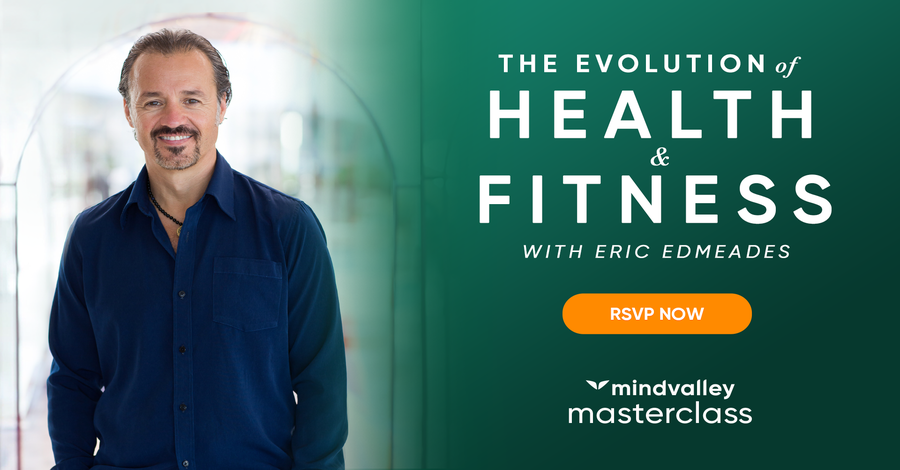
The post Here’s Everything You Need to Know About Intermittent Fasting appeared first on FinerMinds.
Your Health is Precious. Here’s how to Handle It with Care. 29 May 2019 4:25 AM (5 years ago)
As we grow older, we become more aware of just how important doctors are in our lives. While we were children, our parents would do the hard work for us, but there comes a time when we are supposed to step up. And to be honest, it is not always easy.
There are so many little decisions to make, and all require a decent amount of knowledge. Whether you are in charge of your overall health or a doctor is, you should be careful and thorough when doing research.
Taking care of your physical health

Diet
It’s a known fact that food affects both our bodies and our minds, and this is why we should have healthy eating habits. A combination of natural supplements, vitamins and minerals from fruits and vegetables, omega-3 acids from fish and protein from meat is more than enough to prolong our lives and make us feel energized and healthy.
By reducing fats and added sugar, we significantly lower the risk of heart disease because our cholesterol and triglycerides are under control. As we grow older, minerals intake becomes an important part of maintaining bone density and keeping our immune systems working well.
Fitness routine
Along with a healthy diet, a fitness routine contributes a lot to our health. Fitness, in this case, doesn’t have to mean exercising regularly or playing an active sport. It can be an option if you enjoy it, but a little goes a long way.
Instead of driving everywhere, go for a walk if possible, at least when the weather is nice, or consider riding a bike. Swimming is also a good option that probably everyone enjoys. Jogging, yoga, or gym work-outs are also an option for anyone who likes that type of exercise.

Regular check-ups
Like a car needs to be taken to a mechanic once in a while, your body needs to be checked out regularly too. Even if you aren’t experiencing any symptoms, you should go to the doctor’s office and do a check-up, dentists in topeka can help you with a wisdom teeth removal, a gynecologist, and a general practitioner should be on your list.
Many illnesses are discovered during routine tests, so by doing this, you improve your chances of catching problems early on. And prevention is the best way to go.

Choosing a doctor
When choosing a doctor, there are many factors you should consider. The most important is of course professionalism and experience because you want to feel safe. However, you should also find a doctor who is going to be patient, kind and careful in dealing with your feelings as well.
Health is a very sensitive topic, and having someone genuine to take care of it is of great importance. Research even shows that people feel calm around a doctor who explains everything thoroughly and leads the patient through every step of the treatment.
A caring physician is someone that you will be comfortable asking anything that you want or don’t understand which will certainly minimize the fear of going to the doctor.
Taking care of your mental health
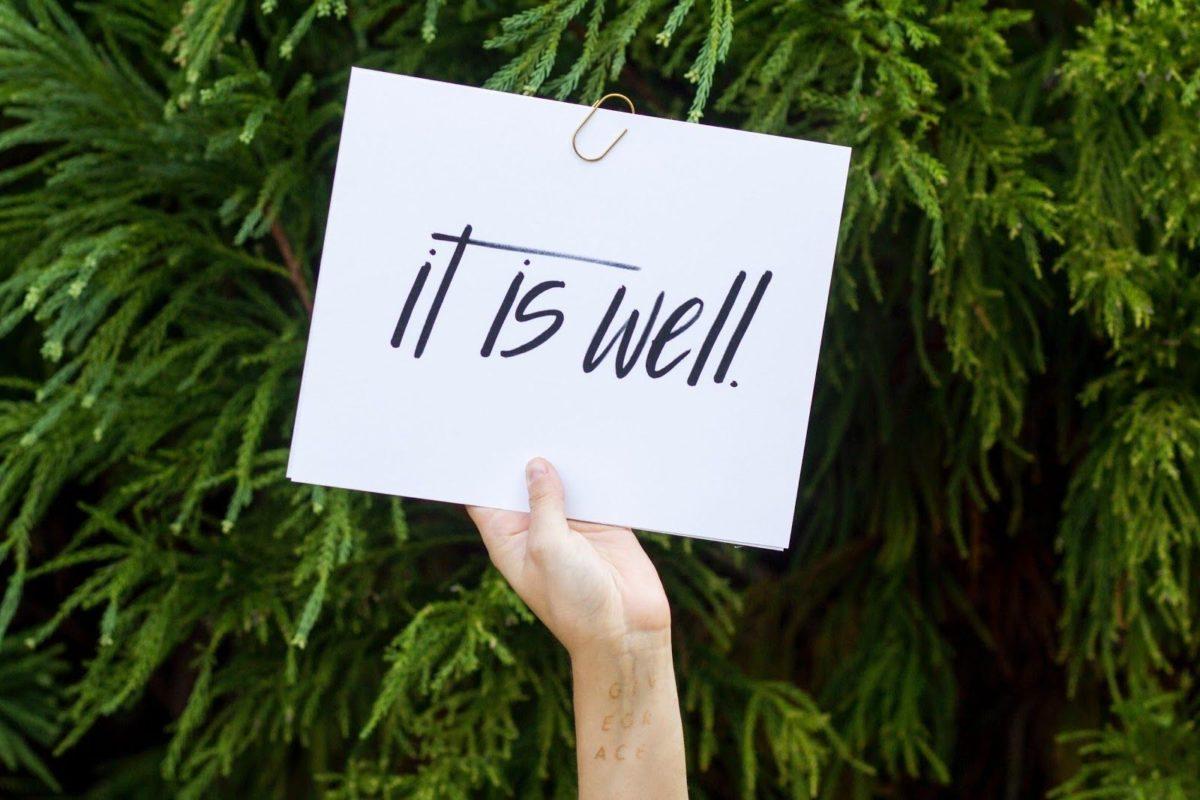 Therapy
Therapy
Even though many think that therapy is meant for people with serious mental issues, it is no longer a taboo and something to be ashamed of. You don’t need to feel anxious, depressed or be dealing with a problem to see a therapist. Going to therapy should be a regular part of taking care of your health because you will be able to understand yourself better by talking and resolving some issues you may have.
Taking care of your mental health on a regular basis is of crucial importance for the balance in your life. Besides this, it is also important to normalize going to a therapist even more and with that show support to those who are struggling with serious problems.

Indulging
Indulging doesn’t necessarily mean spending money or enjoy luxurious spas and treatments although you can do that too. Tuning out, and spending some time alone doing something you like to do is also beneficial for overall health.
Reaching a calm state and leading a stress-free life has many positive effects on mental and physical health as we are aware that stress is the leading cause of many problems. Reading a book, enjoying time listening to music with a glass of wine or enjoying a hobby you have are all ways to take care of yourself.
There are many things we can do to stay healthy. The key is to find the balance between mind and body because one can’t go without the other. By doing this, we will get in touch with our body and recognize its needs trying to prevent going to the doctor in the first place. But if you do get to the point where you have to go, it is good to know that you are in the hands of a professional who will see you as a human being not only as a chart number.
The post Your Health is Precious. Here’s how to Handle It with Care. appeared first on FinerMinds.
Coping with a Major Change? 5 Tips for Protecting Your Mental Health 26 May 2019 8:47 AM (5 years ago)
Change is stress and stress is agony, and premature death, too if you don’t take care of yourself properly. Multiple studies prove that stress can be extremely detrimental to your physical and, above all else, mental health. Depression and anxiety are the most common problems developed by overstressed people, but psychotic breaks and even suicide aren’t uncommon.
If you want to avoid these problems when coping with a significant change in life, you need to prepare and manage your stress from the beginning. Preventative measures are the most effective protection for your mental health.
1. Learn some breathing exercises
Research indicates that breathing exercises can significantly reduce stress and anxiety. The effect they produce is immediate. Therefore you can use them in extreme situations when you are feeling overwhelmed. This practice can help prevent or manage panic and anxiety attacks.
Master basic yogic breathing techniques to use the power of breathing exercises for achieving long-term mental health benefits. Practice them daily to help keep your cortisol levels down.
2. Stick to the familiar
When change is the main stress-inducing element you are facing, you need to make an effort to minimize it. You might not be able to do anything about major factors, like your new environment or situation. However, you should try to maintain your routine.
If the change you are dealing with is a change in environment, especially an extreme one, like moving to another country, it’s essential that you surround yourself with familiar things. This means not only taking precious items to fill your new home with but also connecting with your old life with the help of tech.
YouTube channels of local vloggers will be a great help in this case. You can subscribe to someone who regularly posts videos of your old home city, so you don’t feel completely disconnected from it.
If the country you moved to is one of those who censor the Internet, use a guide for unblocking YouTube. It will allow you to overcome any geo-blocks and bans and watch any kind of soothing videos you like.
This will also allow you to upload videos to your own channel if you have it. If not, consider starting one as putting your experiences into words and sharing them with someone is another good method of dealing with the stress of change. Journaling has long been one of the most effective stress management practices (Michigan State University).
3. Learn meditation
Breathing exercises are good for helping you relax and get through a difficult moment. However, meditation has more long-term mental health benefits, as is proven by dozens of studies. Mindfulness meditation, in particular, can help fight depression and anxiety, which come with the change.
Daily practice of mindfulness meditation does not only help you relieve stress and reduce risks to your mental health. It enables you to understand yourself and your feelings better. Most importantly, this practice develops a habit not to make rushed decisions and judgments. It also teaches you to enjoy and appreciate moments of happiness.
4. Take control of the change
Feeling helpless in the face of your changing circumstances is the biggest source of change-related problems. Therefore, the most effective way to cope with the situation is to gain some control back.
Become an active participant of the change so you can see it as an opportunity for improvement instead of a whirlwind of doom.
5. Talk to someone
Did you know that talking is one of the most effective stress relief techniques? Note that it’s not ‘talking to a therapist’ but simply ‘talking.’ As one of the main stressors that come with change is that you often have to face it alone, this particular technique becomes even more important.
Not having an established support network or disconnecting from it are major problems that are hard to solve when you are already dealing with some big change. However, it will be best if you set aside some time in your daily schedule and dedicate it to making new social connections.
If you already have trusted people in your life, you should maintain contact with your them using social media and video calls when personal meetings are impossible. As to the new people to talk to, consider joining some club or even a social media community.
Look for support groups of people who are going through similar changes. They are in the best position to understand you and can offer the support you need because they know exactly how you feel.
Please note, while these tips will help manage your stress levels regardless of the situation, you shouldn’t rely on them only if you feel your mental health slipping. In case your condition gets severe, talking to a professional is a must. At the least, consider using online therapy services like Talkspace.
The post Coping with a Major Change? 5 Tips for Protecting Your Mental Health appeared first on FinerMinds.
How to Make Your Vacation More Relaxing: 6 Tips to Keep the Stress Down 26 May 2019 6:08 AM (5 years ago)
Vacations are supposed to conjure images of tranquil beaches, a good book in hand, and not a care in the world. What we often forget, however, is that the logistics of planning a trip, not to mention the unpredictability of train and air travel, can encroach on those feelings of excitement and joy.
Travel can be stressful! But the good news is, cutting out vacation-related stress can be simple, as long as you prepare accordingly. Also, if you think keeping yourself together is spiralling out of control, then reach out to Legacy Orlando drug rehab at the earliest, so you can enroll yourself in their stress management classes.
Before you leave all of your usual responsibilities behind for a week of fun, consider making a few quick preparations in order to make sure your vacation goes smoothly.
Whether you’re traveling to an exotic locale or returning to a favorite place, these handy travel tips will help you unwind starting from the moment you leave your house.

1. Pack Smart
We know it’s the advice that everyone offers, but it’s worth repeating because it will make your travels 100x easier: be sure to pack light! Not only will that help reduce the load you need to carry from place to place, but you’ll be able to find things in your bag much more easily. Nothing notches up stress in a moment’s notice like having to dig through an overstuffed suitcase or purse while in the security line to find your favorite cardigan or your passport.
If you’re looking for advice from the pros, these tips will help you organize your suitcase efficiently and keep everything in its proper place. Also, packing smart means making sure to pack appropriately for your destination and bringing items that can work as a double-duty outfit to eliminate extra clothes.
2. Focus on Nutrition and Hydration
Let’s face it, plane food doesn’t have a reputation for being the most delicious, or healthiest, cuisine out there. For long flights, it can help to be prepared with plenty of nutrient-dense foods that are easy to pack and will keep you feeling good and alert, rather than salty, starchy foods that will only make you feel slow and sluggish.
We love the idea of packing fresh fruit like grapes, apples, and oranges, along with snacks that deliver a healthy dose of fats and proteins to keep you full. Think string cheese and almonds, or a hard-boiled egg with some whole wheat crackers.
While it can certainly be tempting to indulge in a drink during your flight—especially if you are an anxious flyer—try to stick to water or keep it to a single drink. Flying is infamously dehydrating, and sugar and booze will only accelerate the process and leave you feeling drained.
Don’t push these tips to the wayside once you arrive either! Staying on track with a mindful diet while traveling is essential to keeping up your energy during long tours and days out on the town. Consider helpful strategies for eating well once you reach your destination to keep your body fueled and happy.
3. Consider Relaxation Techniques
Traveling brings out anxiety in nearly everyone—between the stress of getting to the airport, dealing with airlines, and anticipating a week filled with fun, but also plenty of unknowns and change will leave anyone rattled.
Soothe your nerves with these easy to follow (and do-anywhere) exercises which will help restore a little bit of peace among the chaos.
We also recommend finding ways to stay present once you arrive. Consider these mindful travel strategies that will help you engage with your travel experience on a deeper level. Exercises like yogic breathing is a wonderful way to keep yourself feeling calm and even-keeled, even in the most stressful circumstances.
4. Make Sure You Catch Some Z’s
With all of the excitement (and stress) of travel, it’s important to prioritize rest! If you’re on a long flight and changing time zones, you’ll want to sleep while you can in order to arrive at your destination feeling a little more relaxed and restored, so you can start off your vacation on the right foot.
Of course, sleeping on planes isn’t always as simple as we’d like it to be. Definitely invest in a comfy travel pillow that will help you find a good sleeping position, no matter where you’re seated. Bring an extra layer and a cozy pair of socks in your carry on bag (planes are often cold!)
Be sure to prioritize a good night’s sleep once you get to your vacation destination so you don’t deplete your energy too quickly.
5. Get the Right Tech Support
If you’re like most travelers, your iPad and your iPhone will be your lifelines while on-the-go. From watching movies and keeping busy while you’re in the air to navigating unfamiliar streets, booking tickets, and researching restaurants, you’ll depend on your device a lot.
Make sure you always have what you need to keep your technology charged—nothing ramps up travel stress more quickly than getting lost because you don’t have access to Google Maps, or can’t look up a sight you planned to see! You also want to carry travel routers for spotty Wifi if you’re doing any sort of long-roadtripping, as no Wifi can be a drag when trying to find local tourist destinations.
Be sure to protect your tablet and phone with a sturdy, secure, reliable case while on the move too, as a shattered screen or broken tablet are surefire ways to ratchet up the anxiety.
6. Build in Some “Me” Time When You Arrive
Vacations with others are great, though if you’re the least bit introverted, it can be exhausting to spend days on end with even the most beloved family members or best friends. If you’re traveling with a partner, for work, or with your family or large group, be sure to take some time for yourself and schedule a little bit of “me” time into every trip.
This time will help you engage with your destination in new ways while also helping to mitigate any stress you might have about taking a break from your life back home. Take a cooking class, go for a scenic run, or explore a local market—you’ll soon feel the joy and happiness of travel return to you.
Do you have a favorite travel tip for eliminating stress on vacation? If so, share it in the comments below!
The post How to Make Your Vacation More Relaxing: 6 Tips to Keep the Stress Down appeared first on FinerMinds.
10 Habits Of Mentally Strong People (You Should Consider Adopting) 22 May 2019 12:43 PM (5 years ago)
Mental strength contains thoughts, behaviors, and emotions. Becoming mentally healthy involves managing your feelings, regulating your very thoughts, and behaving productively. So how do you do this if you are going through difficult times?
Mental toughness is the ability of a person to resist, manage, and conquer any circumstance hindering success. Mentally strong people can maintain focus on the big picture and don’t let temporary hardships defeat them.
Here are 10 habits of mentally strong people for you to practice
1. They Neutralize Toxic People
For most, coping with difficult people is exhausting and frustrating.
Mentally tough people keep their feeling in check to manage their interactions with toxic people. They often approach the situation rationally when they need to encounter a toxic person. They recognize their emotions and don’t let frustration or anger to fuel the chaos. Along with that, they consider the standpoint of a difficult person and can find solutions to issues.
Mentally strong people can take the toxic person with a pinch of salt to avoid leaving her or him to bring them down when things completely derail.
2. They Say No
According to research at the University of California in San Francisco, the more difficulty that you have to say no, the more prone you are to undergo burnout, stress, and even depression.
Thankfully, mentally strong people have the foresight and self-esteem to make their “no’s” clear. They often stay away from sentences such as “I’m not certain” or “I don’t think I can.” Besides, they say no to themselves to exert self-control. They postpone gratification and stay away from impulsive action causing harm.
3. They Are Emotionally Intelligent
The cornerstone of mental toughness is emotional intelligence. You can be mentally tough without the capacity to understand and accept negative, strong emotions fully.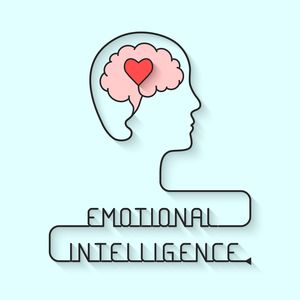
Moments testing your mental strength are finally testing your EQ (emotional intelligence). Your emotional intelligence is a soft skill that you improve with effort and understanding.
You Were Born A Genius. Learn The 5-Step Formula To Unleash It in This FREE Masterclass>>
4. They Exercise
People who exercised two times per week for ten weeks felt more intellectually, socially, and athletically competent, according to a study at the Eastern Ontario Research Institute. Additionally, they rated their self-esteem and body image higher.
5. They Get Enough Sleep
It’s not easy to exaggerate the importance of sleep in raising your mental toughness. Your brain eliminates toxic proteins when you sleep.
Poisonous proteins are by-products of neural activity when you are awake. Unluckily, your mind can fade them adequately only while you are asleep. Thus, the toxic proteins stay in your brain cells when you do not get enough sleep.
Mentally strong people know that their memory, self-control, and focus are all decreased when they don’t get enough sleep, and hence they make quality sleep a leading priority.
6. They Limit Their Intake Of Caffeine
Overconsumption of caffeine can trigger the release of adrenaline. Your emotions defeat your behavior when caffeine puts your body and brain into the hyper-aroused state of stress.
Mentally strong people know that drinking too much caffeine is trouble, so they always limit their caffeine intake.
7. They Control Their Emotions
Mentally tough people can manage their emotions whether it is fear, sadness, jealousy, guilt or anger.
Emotions play a massive part in how you experience everyday life. Thus, it is an incredible power to understand how to curb them, whether it is through regular contemplative introspection, such as with meditation, a journal, or another daily activity.
8. They Stay Away From Feeling Sorry For Themselves
Let-downs and disappointments are part of life. You are distraught when they occur and want to feel comforted. You often turn to self-pity when there’re no others to do that for you. This doesn’t bring any solution.
Mentally strong people understand this fully, so they do not feel sorry for themselves. They will take responsibility, and they push forward with the knowledge that life is not fair.
9. They Practice Realistic Optimism
 It is impossible to have a positive outlook all the time. Too much negativity is counterproductive.
It is impossible to have a positive outlook all the time. Too much negativity is counterproductive.
People who are strong understand that their thoughts are not always correct and they try reframing their negativity. They cancel out exaggeratedly negative beliefs and replace them with a more realistic inner monologue.
10. They Use Their Time Wisely
Mentally strong people often express time as a finite resource. That is why they try using their time in a meaningful way. They pay attention to more productive activities rather than waste energy resenting other individuals for taking up their time or dwelling on the past.
If you’re determined to obtain something in life, it is best to follow these useful habits of mentally strong people.
The post 10 Habits Of Mentally Strong People (You Should Consider Adopting) appeared first on FinerMinds.
6 of the Best Well-Being Gifts EVER for Health-Conscious People 22 May 2019 9:24 AM (5 years ago)
Forget chocolates and champagne. We are getting more mindful about our health, and we want to receive gifts that reflect that shift. The best gift you can give yourself is the gift of health, today, you should be more aware of what you eat and what you input to your body. Be healthy today!
When your loved ones’ healthy eating plan and exercise regime are on track, it’s a shame to spoil it by encouraging them to pig out on an unwanted box of chocolates and break their sobriety which has actually been going well.
Health, relaxation, and well-being gifts are on trend. Even if your loved one isn’t a fitness fanatic, a well-being gift is a thoughtful gesture. There’s something very special in giving a gift that is designed to make someone feel better about themselves. Who isn’t going to love that?
Scratching your head over what wellness gift to buy? Whether you want to help your loved one relax, rejuvenate, or just generally feel better, there are lots of gifts that will hit the spot far better than chocolates, flowers or champagne.
Here are some of the best health-conscious gifts ever!
1. Relaxing spa break
The ultimate well-being gift for anyone with a moderate amount of stress in their lives has to be a relaxing spa break. Send your loved one off for a chilled afternoon, day, midweek break or a weekend to destress and relax. Quality time with a friend or loved one is a gift that is pretty hard to come by, so a voucher for two is sure to please.
Don’t worry if you can’t decide on treatments and dates, and you want to keep the surprise a secret. It’s easy to purchase vouchers instead. Many spas offer a range of vouchers from pampering treatments, ‘afternoon tea spa packages’ and overnight or weekend breaks.
Treat your loved one to a day or two of utter indulgence, and you’ll get super brownie points for this gift!
2. Fitbit Unisex Versa Smartwatch
Any of your friends or family who are into health and fitness will love the Fitbit Versa health and fitness smartwatch. Featuring activity, sleep and heart rate tracking, your active gift recipient, will be impressed by the range of functions, workouts, goal setting, and tracking options.
The superlight geometrically designed case looks ultra-cool and comes in a range of colors with leather, metal or woven straps. This is the perfect gift for anyone who cares deeply about personal fitness.
3. Foodie workshop or cooking class
A great gift for those interested in healthy eating is a food-related workshop. Courses are available all over and range from sourdough baking, dairy fermenting, Kimchi making and Kombucha brewing to raw chocolate making, nutritional health and cooking classes, and much more.
For those with a passion for the outdoors and mother nature, a foraging course is sure to hit the great gift spot.
4. Electric Aromatherapy Diffuser
According to Gold Bee, essential oils are said to ease insomnia, aid digestion and soothe skin problems. Neom Organics offer a Well-being Pod Essential oil diffuser and a range of well-being essential oil blends, including a scent to de-stress, scent to sleep, scent to make you happy and scent to boost your energy.
There are lots of different makes of aromatherapy diffusers and a variety of oils with properties for rejuvenating or relaxing. The Diptyque Un Air de Diptique Electric Diffuser looks super stylish, and with amber, berries, fig tree or wood fire scents smell great too. Neal’s Yard Remedies also have a great range.
For travelers, the Rested Squair Diffuser is small enough to pack and travel with but is surprisingly powerful.
An electric diffuser is a great gift. Let your loved one experience the benefits of aromatherapy in the home for a positive impact on body and mind.
5. Wellness retreat
A wellness retreat may sound a bit scary, but they are seriously good for the soul. There are so many different retreats to choose from, including yoga retreats, mindfulness courses, women-only retreats, life coaching adventures, journaling weekends, detox retreats, voice adventures, and many more. A retreat is a perfect gift for anyone looking to rebalance, restore, and transform.
For fitness fanatics, there are lots of sporting retreats, such as cycling, dance, horse riding, surfing, walking, yoga, and pilates. For some examples of the types of retreats available in England see here. A writing or art retreat is perfect for any aspiring writer or artist.
6. Sleep and wake-up light alarm clock
If your loved one struggles with energy and mood in the winter months, a natural light alarm clock is the perfect gift. Known alternatively as sunrise alarm clocks, wake up lights, body clock lights and SAD (seasonal affective disorder) alarm clocks, these alarm clocks mimic a gradual sunrise by slowly emitting light for a set time before your desired wake-up time.
How does it make a difference? The sudden, startling awakening of a regular alarm clock causes the body to release cortisol (a stress hormone). This can lead to poor energy and a depressed mood. There are lots of sunrise clocks on the market at a range of prices. See a selection of the best here.
Prices range from less than $20 up to around $200. If money is no object, the Lumie Bodyclock Luxe 750D is a market leader with great reviews and has a good balance of simplicity and advanced features. Protect loved ones from SAD with this fabulous gift.
The post 6 of the Best Well-Being Gifts EVER for Health-Conscious People appeared first on FinerMinds.
Stressed? Here Are the Powerful Practices You Need to Kick Anxieties 21 May 2019 4:29 AM (5 years ago)
Money and work were among the top cited sources of stress, according to a study reported by the American Psychological Association in 2017. Additionally, over 70% of surveyed adults cite that this stress causes both physiological and psychological effects on their body and day to day happiness.
Finding effective ways to combat stress is crucial to a happy life. Turn bad days into good days with these stress management techniques for overall mental wellbeing.
Avoid Stress Triggers
The first step in achieving mental wellbeing is to reflect on the following:
How are you treating your body?
Are you getting enough sleep?
Are you exercising?
Or are you incorporating common stress triggers in your life?
Avoiding stress triggers like caffeine, alcohol, and nicotine are huge in managing stress and anxiety. These are all bodily stimulants that can make stress send your body into overdrive and make existing stress worse.
If you’re seeking ways to manage stress and reach mental wellbeing, you need to start with a clean slate. So rid your body of these types of potentially harmful toxins.
Combat Common Stressors Head On
30% of Americans are constantly stressed about money daily. And 85% of Americans money as a sometimes stress, reports CNBC News. With money being on the minds of most Americans, what can you do to manage it?
For starters, the American Psychological Association advises that the first step in getting your finances in order is to identify overall financial stressors and make a plan.
Track your spending habits and make a spreadsheet. If your credit score is a source of anxiety, get your credit score repaired by seeking help from mortgage brokers near me who are trusted financial advisors. A healthy, strong credit score affects many facets of life, from the ability to get a home mortgage to opening a credit card.
By confronting your financial areas of need head-on, you are one step closer to reducing the burden of money anxiety.
Another common stressor for many adults is their job. If you’re feeling overwhelmed by that recent meeting or if the workload is piling up too high, Forbes magazine suggests that a couple minutes of deep breathing and mindfulness can help. Making a to-do list of tasks ranked by importance can also help a daunting work pile become more approachable.
“Taking a walk outdoors out of the office on your lunch break can also aid overall happiness and wellbeing while at work,” says Dr. Sharon Melnick.
Daily Practices to Rev Up Your Mental Health
The American Heart Association asserts that mindfulness meditations and positive self-talk routines are some of the most effective daily practices to reduce any type of stress or anxiety.
Turning your “cant’s” into “cans” shifts negative self-talk to positive, and this practice over time will become the norm. Negative self-talk only adds to stress, where positive self-affirmations only help create a sense of calm and mental wellbeing.
Spend time in mindful meditation to “unplug” and be only with your thoughts. This is valuable time spent managing the anxieties of your daily life.
Another practice proven highly effective by doctors to manage stress is exercise. Daily physical activity is directly tied to stress management and reduction of anxiety, reports the Anxiety and Depression Center of America.
Exercise enhances cognitive functioning, gets happy chemicals (positive endorphins) flowing in your body, and improves your alertness throughout the day. Having a sharp mind is key to managing stress.
Also, exercise is also linked to better sleep at night. A restful night’s sleep is also vital in the reduction of overall stress. According to the ADAA, even incorporating five minutes of physical exercise can stimulate anti-stress and anxiety effects to your body.
Managing stress and anxiety always seems like a daunting task. Simple daily practices like reflecting on finances, spending time meditating, or taking walks are ways to combat stress and find yourself on the path of mental wellbeing.
The post Stressed? Here Are the Powerful Practices You Need to Kick Anxieties appeared first on FinerMinds.
Tackling Fear of Failure? 5 Steps to Deal With Rejection and Criticism 20 May 2019 5:11 AM (5 years ago)
The fear of failure can be overwhelming because–let’s face it–criticism and rejection are really tough, and few of us know how to deal with them well.
One of my first years as a college professor, I taught a graduate-level course on Learning. I ended the semester feeling like it was a great experience. Unfortunately, as student ratings came in, my optimism quickly dwindled.
The following are excerpts from one of the students in that class:
I had no trust for the teacher to do what is best for the students. She gave it a good effort, and pushed through, knowing full well that the class wasn’t connecting with her or her teaching. I don’t trust her grading procedures. She took six hours of my life every week, and it was not worth it.
As a psychologist, criticism is something I have an intimate relationship with. I’ve had many job applications rejected, research articles rejected, blog posts rejected, op-eds rejected, and heaps of critical responses on my teaching and writing.
There are many times I have wanted to give up and stop trying. The fear of more rejection, criticism, and failure can be suffocating.
I want to be in the arena. I want to be brave with my life. And when we make the choice to dare greatly, we sign up to get our asses kicked. We can choose courage or we can choose comfort, but we can’t have both. Not at the same time.
-Brene Brown
There are 5 stages most people go through when facing rejection or criticism you should know about in order to learn how to deal with them.
Here are 5 Stages of Rejection and Criticism and How to Deal With Them
1. Ride the emotional roller coaster
My first response is always overwhelming emotion. I’m mad at the student criticizing me or hurt that my research paper got rejected because I’m “just not experienced enough.” I get defensive. Then angry. Then hurt. Sometimes I will cycle back through these emotions more than once. The first day can be rough.
Though this stage is the hardest, it’s better than stifling the feelings, and pretending they aren’t there. I could say I don’t care and guard myself, but as Morrie Schwartz said, “If you hold back on the emotions–if you don’t allow yourself to go all the way through them–you can never get to being detached, you’re too busy being afraid.”
2. Talk it out
The next thing I do is talk it out. Simply naming out loud what you’re feeling can take away an emotion’s power by lessening arousal. I can unload the anger and hurt. Defend myself. Every person needs a cheerleader in their life who will be on their side no matter what. That’s my husband. He’s quick to listen and reassure me of my abilities, and happy to state how misinformed the naysayers are.
Having a close partner who shares in your joys and disappointments is like jumping on a trampoline; the stumbles are softened while the highs are amplified. One recent study measured pupil dilation to show that people calm down sooner from a stressful event when they have the support of their spouse.
3. Take out the Trash
The next step is to see the unhelpful messages for what they are and immediately dismiss them. Sift the wheat from the chaff, so to speak. Ignore comments when they are:
- vague (I didn’t trust her)
- global (she was never prepared, and no one had a connection with her)
- personal attacks (she was incompetent)
- a matter of opinion (I didn’t like her wardrobe)
- verifiably inaccurate (she always left before the students)
There is no point in dwelling on negative things that give no direction on how to improve. If the feedback you receive does not inspire you to want to do better, discard it.
Experience a full transformational hypnotherapy session designed to rapidly bulletproof you against rejection and boost your confidence in this FREE Masterclass>>
4. Reflect and Learn
Now that my defenses are down, my emotions are in check, and the trolling/triggering comments are history, I’m able to learn. Helpful feedback is vital to improving skills. Take the specific comments that pave the way to get better.
Study the remarks. Make a list. Create a plan. Implement changes to improve.
My teaching assignments, activities, and writing style have evolved a lot as I’ve considered the advice that was specific and encouraging.
5. Move On
It can be tempting to ruminate on negative feedback, reexamining it over and over. What did he mean by, “there was no connection?” How could he have the nerve to say that? They don’t even know me!
We gain nothing from rehashing each old criticism from every angle wondering what if, dwelling on regret, or allowing bitterness. Women are especially bad at this, which explains in part why they have higher depression rates than men.
Our brains are drawn to negative information more than positive information. Have you ever been given several positive comments on performance, but can’t stop thinking about the 1 or 2 negative ones? Some researchers put the ratio at about 3:1, where negative events have three times the impact as positive ones.
Don’t let the positive comments be forgotten. They can be just the boost you need to keep going. When I find myself remembering the stabbing unhelpful criticism over and over, I remind myself that it is not the critic who counts. If the feedback stating, “The students had no respect for her,” comes back into my thoughts, I talk back with the positive comments I’ve had.
Learning How to Deal with Rejection and Criticism
Handling rejection or criticism can be hard. Don’t let it keep you from trying again. Don’t let the fear of failure hold you back. When you allow yourself to follow these five steps, you can break that crippling fear.
As Elbert Hubbard said, “Do nothing, say nothing, and be nothing, and you’ll never be criticized.”
The post Tackling Fear of Failure? 5 Steps to Deal With Rejection and Criticism appeared first on FinerMinds.
Need a Life-Change? Here are 5 Ways to Reveal Your Hidden Talents 20 May 2019 4:12 AM (5 years ago)
Do you actively utilize your innate talents or keep them hidden away? What are your talents?
The second question above is seemingly simple but so many of us struggle to answer it. Yes, there are the fortunate among us who can quickly list that they are good singers, dancers, artists, teachers, or salespeople. For others, it’s difficult.
We often go through life doing things that help us earn a living, and make our mark as contributing adults. But, how often do we see these we do as being an expression of talent?
The truth is, everybody has talent. What is difficult is pinpointing them. Some talents, you have likely been using all along. You just need to reframe the way you’ve been thinking about them. Others are still waiting to be discovered.
Here are 5 Ways to Reveal Your Hidden Talents
1. It’s Time to Journal
Maybe it’s cliché, but journaling is a great way to explore the seemingly mundane things about your daily life.
You write about the things you’ve done and your thoughts, then out of all that you pull out some great insights. That explorative process is a great way to begin unearthing your hidden talents.
2. Go Back to Your Past
Sometimes, you start off pursuing talents only to drop them as you get older. They aren’t practical. You don’t have time for them. You can’t afford them anymore.
Maybe you were an amazing speller, or you made state in track. You might have even won ‘Young Authors’, or was an art and drama kid. Now, this doesn’t mean you should dust off your running shoes or paintbrushes and try to start where you left off. That’s not productive or realistic.
What you can do is take your past talents, and find new things to do with them. You just have to ask yourself:
- How can I renew this gift to help in my career?
- Can I begin pursuing this for my own enrichment?
- How will this make me a better person?
Discover What You Really (Really) Want In Life, And How To Have It All in This FREE Masterclass>>
3. Keep Learning
Here’s some amazing news, there may be no easier time to do that than right now. You can:
- Take a class for credit or continuing education at your local community college or university.
- Sign up for a class at your library or community center.
- Check for classes at your local zoo or museum.
- Attend or watch a TED Talk
- Take free online courses
If we’re honest about it, most of us do have spare time. It’s just a matter of priorities.
There may be no better way to figure out what you are good at than learning new things. Some talents are just as hidden from you as they are anyone else. The solution is easy. Make a commitment to keep learning.
–Evelyn Jarvis, head of the content department for Canada-Writers
4. Think About the Reasons People Count on You
- I have an idea I’d like to bounce off of you.
- Can you help me get all of this paperwork organized?
- I need your assistance with next week’s party.
- I’m sad and I really need to talk.
- I know I can count on you to get the Morrison account straightened out.
What are your go-to areas? Pay attention when people ask you for advice or assistance. There’s a good chance others are seeing things you are missing.
5. Seek Out New Experiences
This is just one more reason to be open to new experiences. When you’re willing to try out new things, you increase the likelihood of your realizing you’re very good at something.
Travel to new countries. Ask to be cross-trained in another role at work. Walk through neighborhoods that you’ve never visited before.
Conclusion
At the end of the day, there are three things that help you to reveal your hidden talents.
First, always seek out learning and new experience. Next, gain insights from your past. Then, simply pay attention to your daily life. Your most valuable talents could be right in front of you. Follow the action steps here to figure it all out.
Gain Instant Clarity On What You Really Want In Life – And Have It All
There’s a reason that so many brilliantly talented, naturally creative, intelligent and capable people never reach their potential, and it is, quite simply, a lack of direction.Even if you have a vague goal in mind, you still need a plan, a process to get you there.
You can have the most expensive, fastest car in the world, but if you set off without a clear idea of where you’re going, then the rusty old Beatle with a map and compass will beat you there every time.
If You're Ready To Experience The Extraordinary Life Design System That Gives YOU The Power To Author Your Ultimate Life, Then Join Jon & Missy Butcher's Free Masterclass
Where You will Learn:
 Are you stuck on the hamster wheel of life, instead of rushing towards your fullest potential? Discover how to escape the 3 soul-crushing reasons most people unknowingly cheat themselves of their greatest lives.
Are you stuck on the hamster wheel of life, instead of rushing towards your fullest potential? Discover how to escape the 3 soul-crushing reasons most people unknowingly cheat themselves of their greatest lives.
 Do you always set goals and rarely achieve them? It’s not your fault – traditional goal-setting is seriously incomplete! Discover how Lifebook empowers you to rapidly and consistently take charge of your life, and realize your every dream.
Do you always set goals and rarely achieve them? It’s not your fault – traditional goal-setting is seriously incomplete! Discover how Lifebook empowers you to rapidly and consistently take charge of your life, and realize your every dream.
 Experience the ‘Instant Clarity’ exercise: a powerful visualization exercise that guides you through your ideal day – and gives you instant clarity on who you really are, and what kind of life you really want to be living.
Experience the ‘Instant Clarity’ exercise: a powerful visualization exercise that guides you through your ideal day – and gives you instant clarity on who you really are, and what kind of life you really want to be living.
Step Into The New Year With A Crystal-Clear Vision For Your Ultimate Life

The post Need a Life-Change? Here are 5 Ways to Reveal Your Hidden Talents appeared first on FinerMinds.
Are You Highly Sensitive Person? How to Thrive in an Overwhelming World 17 May 2019 12:41 PM (5 years ago)
Have you ever felt overwhelmed by life and people? Or been told that you’re “too sensitive’ and need to “toughen up”? You may actually be a Highly Sensitive Person (HSP).
Back in the early 1990s, psychologist Elaine Aron began her research on a distinct personality trait: the Highly Sensitive Person.
Dr. Aron describes the Highly Sensitive Person (HSP) as someone who “has a sensitive nervous system, is aware of subtleties in his/her surroundings, and is more easily overwhelmed when in a highly stimulating environment.”
Whether you’re entirely new to this concept or you’ve heard of it before, whether you think you might fall within this category or know someone who does. Regardless, you’re probably reading this because you know a thing or two about emotional overload – and how sensitivity can make coping all the more difficult.
Read on to find out more about the HSP, why it’s not a bad trait at all, and what Highly Sensitive people need to do to live in harmony with their innate nature.
What are the most common characteristics of HSP?
Most commonly, Highly Sensitive people more easily experience overwhelm and stress by things such as:
- sensory information (loud sounds, lights, strong smells, busy environments, etc.)
- multitasking
- situations when you feel rushed
- violence in movies and TV shows
- the physical effects of sugar, caffeine, and hunger
In layman’s terms, you could say that Highly Sensitive People have a more intense relationship with the outside world. They perceive their surroundings more intensely than the average person.
Hence, an HSP will usually plan ahead to avoid an overwhelming situation; they pick up on other people’s emotions more easily and notice details in their environment that others might easily overlook.
As a consequence of this rich perception, things are a bit more exhausting for them. Their alone time is sacred, and they’ll be in dire need of it after a busy day or after being surrounded by people for a couple of hours.
You’ve probably anticipated the next part: these people will often be mislabelled as “overly sensitive” or simply shy by others who don’t understand their sensibilities.
If somebody falls within the category of Highly Sensitive People, but isn’t aware of it, and is told that they need to toughen up or that they’re just “too sensitive,” that’s a real problem.
They’ll be struggling throughout their life to change their wiring (which can’t, and shouldn’t, be changed) and completely overlook the things they need to do in order to achieve happiness and success.
Experience Rapid Transformational Therapy to Awaken Your Most Confident Self
1. The first step: acknowledgment

Adding on to our previous point, the first step to navigating life successfully as an HSP is actually recognizing that you are. Leave out the guesswork – you can do Dr. Aron’s test here.
If the answer is positive, before we head on to the vital strategies you need to thrive as an HSP, there’s just one more thing you need to acknowledge: that being highly sensitive is not, by any means, a bad thing.
Sure, it can make things a bit more challenging. But when you accept yourself, strive to understand yourself better, and apply specific strategies, it will be a lot easier.
2. Recognize your strengths
It’s also crucial to embrace the good parts. Highly sensitive people often have a rich, deep inner world – complex imaginations and impressive creative potential.
Just as the outside world profoundly affects them, they have a tight connection with their inner lives. Their strong intuition and ability to empathize with others make them not only great thinkers but beacons of light to those who have them as friends.
There’s a bunch of other great things, too, that come with these colorful, all-in personalities. Their conscientiousness and attention to detail make them great scholars, employees, and leaders.
Experience Rapid Transformational Therapy to Recognize Your Strengths and Awaken Your Most Confident Self in this FREE masterclass>>>
3. Take care of your body and mind
Because Highly Sensitive People have very intense reactions to the stimuli around them, both the body and mind need to recuperate daily.
You really need to take self-care and mindfulness seriously if you want to cope with the challenges. It all starts with proper nutrition, physical activity, and rest.

Aside from getting enough hours of sleep each night, structure your days so that you also allocate time for relaxation and just completely switching off. Make a ritual of taking a long bath or meditating before bedtime to calm your nerves and recharge your system.
4. Identify and track your triggers
Take a couple of days to really get to know yourself. Pinpoint the things that drive you to a state of irritation and stress. These will be some of the things that we’ve talked about near the beginning of this post.
Ground yourself in the moment and practice mindfulness so that you can catch your reactions as they’re sparked.
For example, if you arrive at a cluttered house and experience a feeling of unease, take note of that. Clutter and mess are likely to be one of your triggers.
Take note of the things that make you mildly uncomfortable as well as the ones that trigger more intense feelings of exhaustion and overwhelm.
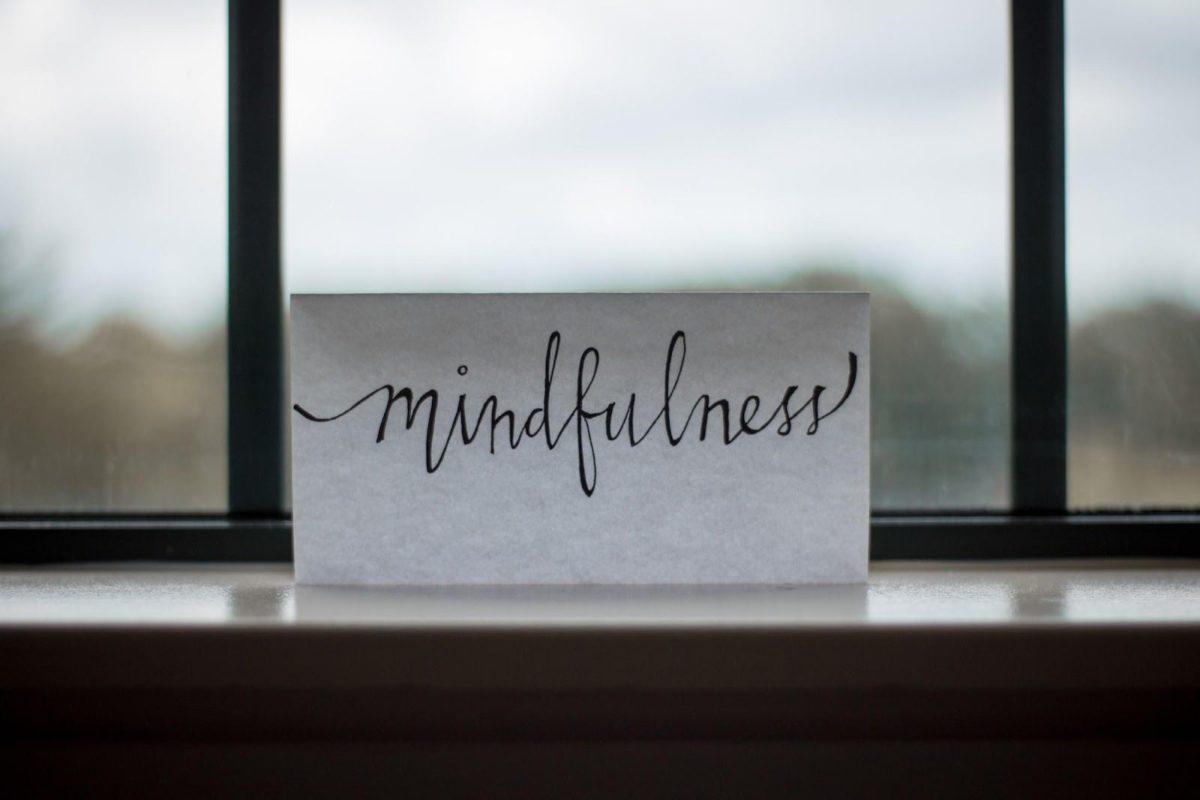
If need be, keep a log or diary for a couple of days to help you keep track and get to know your triggers better.
Once you know them, you’ll be able to plan ahead in order to avoid them wherever possible. Or better prepare to face them when they’re unavoidable.
5. Learn to say no
Sometimes, choosing not to do something will be the most important thing you do for yourself – the kindest decision for your body and mind.
Learning to say no is something everybody needs to do, and Highly Sensitive People especially. If somebody invites you to participate in something that explicitly involves one of your triggers, don’t feel pressured to take them up on their offer – and don’t feel bad for refusing.
For example, you might have to refuse socializing with coworkers after a busy day when all you need is some quiet alone time. Don’t feel the need to lie – your feelings are legitimate. Let them know what’s going on. Make arrangements to hang out another time when you have more energy for people.
The takeaway
The concept of a “Highly Sensitive Person” is still widely misinterpreted. Many people aren’t aware that when they hear someone use this phrase, they’re not merely referring to a gentle, emotional soul (as is the common interpretation).
 Rather, it’s a very important term from contemporary psychology. That makes it all the more difficult for the Highly Sensitive People, who are already battling being misunderstood and pushed by the conventional lifestyle.
Rather, it’s a very important term from contemporary psychology. That makes it all the more difficult for the Highly Sensitive People, who are already battling being misunderstood and pushed by the conventional lifestyle.
That’s why it’s crucial that we spread awareness. Likewise, that anyone who knows or is an HSP, seeks to understand their unique connection to the outside world. By better understanding our innate energy, emotional structure, and unique wiring, we gain the means to better navigate life.
The post Are You Highly Sensitive Person? How to Thrive in an Overwhelming World appeared first on FinerMinds.
3 Things You Can Do to Promote Mental Health at Work 15 May 2019 4:38 AM (5 years ago)
The topic of mental health has become one that’s more easily talked about in recent years. There are always conversations on social media about it, but what about in the workplace? Mental health may feel like more of a sticky subject in a place where you only feel comfortable making small talk, but it’s crucial that people are supported and provided for in this regard.
Read on to learn what you can do at work during mental health awareness month. You don’t need to be an office manager to make a change — being an advocate is the only step you need to take that matters.
1. Emphasize Personal Development
Personal development is a broad category because it’ll look different for every person. Not everyone will struggle with the same mental health issues or need the same resources to overcome them.
That’s why it’s important to cover the many aspects of personal development when it comes to mental health, including your diet. Diet has been proven to be a major factor when it comes to increasing the severity of mental health symptoms. You can put up posters about this in the office kitchen or break room so people can read about the importance of healthy food while they’re eating lunch or leaving for the night.
Offices can also encourage healthy eating by providing nutritious snacks and drinks to employees. Sugar-free drinks, sparkling waters, and low-carb snack foods are great first steps toward changing the office diet culture and improving mental health.
Personal development covers more than just a person’s nutritional needs. It’s also about developing the confidence that’s eroded by bad mental health.
Anxiety is a major mental health issue many working people deal with while juggling their workplace responsibilities. This can be improved by allowing more flexible work-from-home days. Working from home gives people the space to do what they need to do in a less stressful environment, stopping anxiety in its tracks.
Talk with HR about being more flexible with working from home hours, so people feel more comfortable asking to step away from their desk for the day.
2. Build a Better Future
While tending to personal health and making the workplace more positive are good efforts to make when addressing mental health issues, it’s even more important to build a better future through ongoing practices.
This is when the HR department and leadership teams will really come into play. People will listen and follow those who are in charge, which is why it’s crucial for leaders to take the first steps.
First, recognize that not everyone will be able to name what they’re struggling with or see they have a problem at all. Guide employees to screening tools that are available 24/7. They can use them on their own time to quietly decide how they can best help themselves.
Next, employees have to be given access to resources that will help them through more than their lunch break. Sound therapy is one way co-workers can improve their mental health on an ongoing basis. It’s nearly identical to meditation in a few ways:
- They both focus on controlled breathing
- Relaxation of the mind is key
- Both will lower your heart rate
The difference is that sound therapy emphasizes the quiet sounds around you, rather than needing everything to be quiet. This can be done by a group before, during, or after work. It’s a bonding experience that will target negative mental health habits while bringing everyone closer together.
3. Create a Positive Space
Office spaces can be unintentionally cold and unwelcoming. The fluorescent lights, old carpet, and lack of windows turn it into a place people want to escape from as soon as they walk in. Being unwelcoming creates a subconscious tension for employees to deal with when they start their day. It’s time to make offices a more positive place.
One way many workplaces are doing this is by allowing dogs to come to work with their owners. Canines are known for being a source of constant happiness and love. Having them in the office can alleviate depression symptoms and also open the doors for better interoffice teams. People can use the presence of dogs to start conversations, make friends, and learn how to work together.
The most positive thing you can do in your workplace is to create a space of thankfulness. Many times, people’s hardest efforts get overlooked when everyone is striving to meet deadlines.
Not being thanked is a weight on the shoulders of every employee who does their best every day. Being grateful shows you value the person and recognize all they do to make the office a better place.
Make an effort every day to thank people for what they do. You can even consider throwing together an annual dinner event that will validate the hard work everyone does. This positivity will keep people from thinking negatively about themselves or their efforts during their next big project.
Making mental health a priority in your workspace will change the vibes in your office and improve how your employees feel. Listening to your team members is the best way to build a better future for your workspace. If everyone has a voice, the entire office can work together to address mental health issues and move forward together.
The post 3 Things You Can Do to Promote Mental Health at Work appeared first on FinerMinds.
6 Negative Effects of Social Media On Your Health 13 May 2019 8:30 AM (5 years ago)
The use of social networking sites has become increasingly popular in the past few years. Social media has now become an important part of everyone’s life. It is something which is influencing our daily lives, and it has become extremely important for everyone (including brands, businesses, celebrities, and audiences) to have an online presence in the social media world.
Many of us are using social media as a regular means of communication. No matter what activities we do for the whole day. We make sure to check our Facebook and stay updated on Instagram.
In today’s globalizing society, social media is a part of our daily routine. Is it just a routine or is social media eating up our lives?
Social media is a boon as it has become easier to connect with people and industries overseas. But it is important to understand that this virtual world of networking is also a bit of a trap which is dominating our lives. Social media is consuming our lives and can be detrimental and damaging to our mental health.
Studies have shown that the excessive consumption of social media can have long-lasting effects on our mental health. According to various studies, the prolonged use of social media is linked with the symptoms of depression, anxiety, and low self-esteem in teenagers and adolescents. It can also affect our sleep quality and hyperactivity.
Health experts also say that sitting in front of social media is the new age version of smoking. The effects of social media can be pretty damaging which is not good for our mental well-being.
Social media is a benefit for all those who struggled with socializing and communicating face-to-face. However, there are many people who are struggling with trolls, toxic comparisons, and cyberbullying because of the use of social media.
People of all ages are using social networking sites these days, and it is important to know how social media can have a negative influence on our mental health. The following are the ways in which social media could negatively affect your mental health.
1. Internet addiction disorder
Are you always on your phone checking updates on Facebook and Instagram? Are you excessively consuming social media? If your answer is yes, you may be suffering from Internet Addiction Disorder or IAD.
You may also be suffering from IAD if you play a lot of video games on the Internet or shop online always. However, social networking sites are one of the major reasons for people suffering from IAD.
Social networking sites get the users “hooked” which is interfering with their daily lives – relationships, work, and personal lives. Because of their addictive behavior, people might neglect their personal life. The over-dependence on social media can affect people from a psychological perspective and would affect negatively.
2. Decreased self-esteem
The use of social media has a major impact on our self-esteem. It can make an individual self-conscious and insecure. When we spend a lot of time online on social media, we tend to make comparisons which decrease our self-esteem and our confidence levels. Studies in the past have shown that self-esteem has an impact on our overall well-being and has a direct relationship with our overall health.
Constant exposure to social media can negatively affect our minds because many-a-times people take social media way too seriously and get trapped by the unrealistic standards set by social media. Seeking validation in terms of likes and followers, making comparisons with fellow people will tend to lower self-esteem which will further lead to symptoms of depression and anxiety.
3. Anxiety and Depression
The excessive use of social media could be a big cause for mental illnesses such as anxiety and depression. Studies have shown the people who use multiple social media accounts are at higher risks of problems such as anxiety and depression.
Cyberbullying is on the rise, and prolonged bullying on social media can lead to suicidal thoughts, anxiety disorders, and depression.
4. Making comparisons with other’s lives is mentally unhealthy
No matter what medium it is, the spiral of silence happens all the time wherein a few people isolate themselves and never express their thoughts. A lot of people feel socially isolated and tend to silence their thoughts because they start comparing themselves with avid users of social media.
Social media promotes social comparison, and it is important to know that comparison is bad as well as a dangerous habit. Comparing ourselves with others will only take our job and lead to more insecurities and agony. Comparing can lead to feelings of loneliness, unhappiness, and depression.
5. Lesser Human connection
Social interaction is critically important for good mental health. But with the coming of social media, we’re glued to our mobile screens and desktops and have less face-to-face interaction.
Having more friends and followers on social media doesn’t mean that you have a better social life. It is important to have personal and realistic connections than engaging online on social media.
6. Sleep deprivation and FOMO
Social media is linked to increasing sleep deprivation and using social media even for a couple of hours can have adverse effects on your sleep.
The excessive use of social media can also lead to FOMO (fear of missing out), a type of social anxiety. FOMO is dangerous and can cause stress and can also decrease your ability to concentrate on other things.
Social media is beneficial, but it is important to balance your social life with real-life relationships.
The post 6 Negative Effects of Social Media On Your Health appeared first on FinerMinds.
3 Guidelines for Setting Realistic Expectations 4 May 2019 7:06 PM (5 years ago)
Expectations. They are something we all have, from the time we are young, right on up through the time we take our final breath. Yet, even though expectations are clearly a huge part of our lives, few of us truly learn to set healthy, realistic expectations and manage them well.
All of the wishes, desires, hopes, and wants we carry around, which are never really quite fulfilled, have the power to greatly influence the satisfaction and happiness we experience in our lives.
Like so many things in our existence, when we think something “should” happen in a particular way, it closes out all other possibilities and we miss out on a lot of great things in life.
You are your own worst enemy. If you can learn to stop expecting impossible perfection, in yourself and others, you may find the happiness that has always eluded you.
―Lisa Kleypas, Love in the Afternoon
And what is worse, consistently facing unfulfilled expectations can create conflict in relationships. Additionally, it leads to miserable experiences, and most importantly — kills our confidence in ourselves to manifest the life we truly desire.
However, when you learn to set healthy, realistic expectations and learn how to be open to the various outcomes that the universe might bring, you also open yourself to a happier and more positive outlook on life.
You will experience fewer disappointments and feel less discouraged about your path, making it easier to trust in the process of life and truly enjoy your present, instead of worrying about the future.
If you find yourself consistently disappointed in yourself and by the people and situations in your life, it’s time to check in with your expectations.
Here are a few tips to help you examine, adjust, and craft realistic expectations
1. Examine The Expectations Of Self
You should always strive for growth and improvement, but are your goals in small, achievable steps or big swooping actions?
Trying to get everything done perfectly all at once will prevent you from taking consistent action toward your goal. Likewise, it will often leave you feeling depressed and disappointed in your abilities — which can only breed negative self-talk!
Reasonable Expectation: Start putting an extra $100 a month towards bills to get out of debt more quickly.
Unreasonable Expectation: Consistently think about how you can pay off all $10,000 of student loan debt.
How to Adjust: Begin by listing out some of the major expectations you have in your life (become debt-free, lose weight, find your soul mate, etc.). Then, create a list of 5–7 actionable items for each major life area. For example, a list for becoming debt-free might look like this:
- Gather all the information about my creditors.
- Make a spreadsheet with all of my debts.
- Calculate my current budget. Find out how much is reasonable to cut so that I can put a little extra towards my debts.
- Contact creditors to negotiate interest rates.
- Seek help from my accountant planner or accountant, if necessary.
- Begin putting the extra amount on my smallest bill. Pay consistently until paid off.
- Celebrate success!
Will you be debt-free immediately? No. But will you be debt-free if you follow the steps? Absolutely!
Don’t berate yourself because you “should” be debt-free or “should” have more money or “should” make better financial decisions.
Those unrealistic self-expectations only prevent you from dealing with the actual situation and keep you feeling stuck and powerless.
Experience Rapid Transformational Therapy to Awaken Your Most Confident Self In This FREE Masterclass>>
2. Reconsider Your Expectations of Others
Have a mental list of everything your partner, friends, or co-workers should be doing to make you happy? Sorry sweetie, it just doesn’t work that way!
When we hold expectations of others’ behavior and link it to our own happiness, it is a recipe for disaster.
Reasonable Expectation: I will stay at work a half-hour later every day to finish all my tasks so that I do not have to take work home.
Unreasonable Expectation: Everyone should be willing to put the same amount of effort into his or her job as I do.
How to Adjust: Remember — what you consider realistic expectations are not the same as everyone else’s!
Instead, focus on ways you can give and make a balanced and positive situation for all. Respect your boundaries and look for ways you can make yourself comfortable and happy in the situation.
3. Release Your Expectations of Events
Just like setting realistic expectations for others, when you put all of your hopes and dreams into the outcome of a specific event, you are setting yourself up for disappointment. Try to enter into events for the intrinsic value of the situation, not for the outcome you hope to produce.
Reasonable Expectation: Going on a date because the person seems interesting and you’ve been dying to try the new restaurant they suggested.
Unreasonable Expectation: Going on a date because you are looking for a partner and are desperate to get married, so you are hoping this one will be the one!
How to Adjust: Stay focused on what attracted you to participate in a specific event or situation, apart from potential outcomes. Make a list of all the positive things you can gain from the experience itself, and what emotions it could bring to your life.
For example, a list about a potential date might look like:
It feels exciting to meet new people.
I feel happy about getting to go out — it’s been a while.
I’m ecstatic about wearing that new dress I just bought!
When you set realistic expectations for yourself, those people around you, and your life situations, you’ll avoid a lot of the bumps and bruises that come from disappointment, and enjoy a happier, more fulfilling life.
The post 3 Guidelines for Setting Realistic Expectations appeared first on FinerMinds.
7 Brilliant Ways To Overcome Adversity and Accomplish Your Dreams 4 May 2019 2:48 PM (5 years ago)
If you’re human, then chances are you’ve had to overcome adversity of some sort in your life. Maybe you’ve experienced a situation like a betrayal, divorce, rejection, loss of a job, or so many others.
The problem is that so many people let these experiences control their life. They give in to their emotions and feelings in such situations and let it determine their habits and how they live their life.
We’ve all had bad things happen to us. Sometimes we know why and sometimes we don’t. And sometimes you feel like the whole world has turned its back on you.
Sound familiar?
If this is happening to you, YOU’RE NOT ALONE.
Most of the time we have big dreams and goals, like wanting to travel and explore the world, get a better job and do what we love. The bigger our dreams are, the more obstacles are in the way.
Here are the 7 things you must take action on to overcome adversity and achieve your deepest desires
1. Create A Positive Mental Attitude
This means to see yourself as a winner despite the uncertainty that lies ahead. Creating the winner’s mindset will often put you in a state of mind to overcome adversity and anything that stands in your way when it comes to achieving your dreams.
Start by picturing yourself where you want to see yourself. Build a mental image of whom you wish to become. This often has to align with your inner dream. Use the power of your imagination to see everything around you the way you want it to be.
Once you do, start taking steps toward achieving this goal. Do this now and see the tremendous experience you’ll get.
2. Read The Stories Of Successful People
If you want to overcome adversity and achieve your inner desires, you must find out how successful people overcame their struggles and reached toward their goal.
When I was starting towards building my blog, I received many rejections and was ignored by a lot of people. This hit me on the inside and I thought maybe building a blog is not for me. Maybe it’s for the big guys who already have experience in doing it.
Then one day, I came across a Jon Morrow story: “How to Quit Your Job, Move to Paradise, and Get Paid to Change the World” After going through everything he said I just couldn’t help but think what if that was me?
Jon is a guy who can’t move anything but his face and yet he went from zero level to someone who built a business that nets millions of dollars. And honestly, that changed my life.
Reading a success story of overachievers like that of Jon will give you the hope and inspiration you need to keep moving through your adversity and soon you will sail to the promised land and achieve your dreams.
Learn How to Bend Reality and Make the Impossible, Possible in this FREE masterclass>>
3. Trust Yourself
Someone once said: “I can only show you the door; you’re the one that has to walk through.”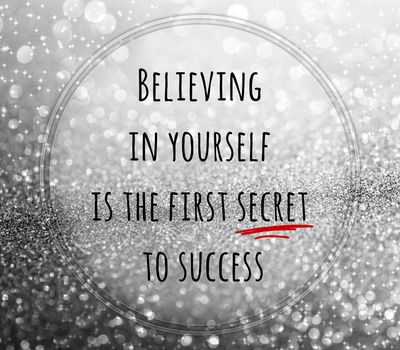
Learning to trust may be difficult in the beginning, but you have to trust your inner wisdom and what your heart knows. Without this, it is impossible to remove self–doubt and navigate the energy you need to overcome adversity.
Create a feeling and an emotional, mental image. See yourself accomplishing a certain task that will progress you toward achieving your dreams. Because you see, what you wish to achieve is already a part of you.
Trusting yourself will create the inner capacity to receive whatever you wish to achieve. If you do this, everything you’re missing in your life will come to you and you’ll experience a great manifestation.
4. Practice Focused Breathing
Want to gain mental control over whatever situation is happening to you? Practicing focused breathing is key. This will help the body find clarity, making it become peaceful and still.
5. Practice Relaxation
This will help you clear your mind, with the goal of helping you create a mental movie toward achieving your goals.
To do this, simply lie on your back and focus on the ceiling of your room. Start by taking a long, deep breath and then softly release the breath. Do this three times and gently close your eyes during the third breath.
Now start by projecting your mind, watch yourself in the movie of your mind, focusing on what you want to accomplish. Keep projecting your mind movie deeper and as you do this let your mind sink deep and settle into where it feels the most comfortable.
 If negative thoughts come, switch them into a positive one as your mind keeps showing you deep inner wisdom about yourself.
If negative thoughts come, switch them into a positive one as your mind keeps showing you deep inner wisdom about yourself.
Once you’re done with this, it’s likely you’ll feel like sleeping, if so, allow yourself to have some sleep. If not, follow this awakening process to come back to the present moment.
With your eyes closed, imagine yourself in a deep well with a staircase; imagine yourself, one step at a time, slowly coming up the staircase. Once you get to the surface, gently open your eyes. Notice how peaceful and comfortable you feel. Practice this often to get more efficient results.
6. Quit Negative Self Talk
What you say about yourself will often constrain you and create your outcomes. If you say, “Peace, be still my soul and let nothing trouble you”, peace of mind will find you.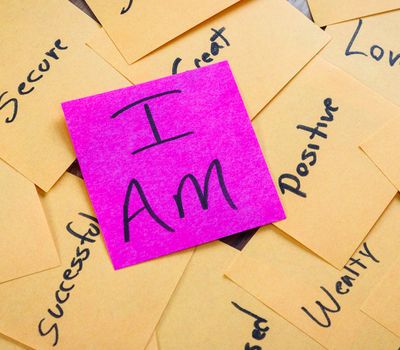
On the other hand, if you say, “I’m lonely or I can’t get myself to make any change or I’m guilty of my action,” you’re likely to keep experiencing a negative mood every day.
The solution to this?
Start practicing positive self–talk. When you feel weak say you’re strong, when you’re sick say you feel fine, and when you’re broke remember that you have all you need.
Do this and you will be creating a better reality for yourself and soon or later you’ll achieve your dreams.
7. Practice Goal Setting
One of the most important reasons why we do what we do is because we want to achieve certain outcomes in a lifetime. Think about it, you’re not just hunched over your desk working day and night because you like it; you are certainly expecting something in return, perhaps you want to achieve a goal.
However, if your goal doesn’t have enough clarity, it might lead to more delays and procrastination. And I believe the road to hell is paved with procrastination.
Take a moment to reflect on your goals. What are they?
Done with that? Now ask yourself the following question.
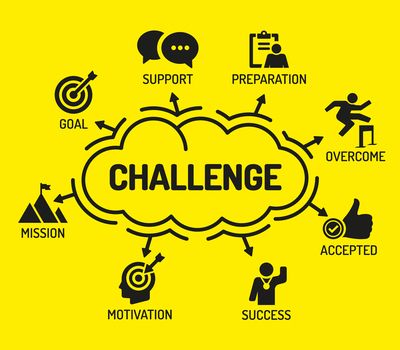 Is this goal or activity something you’re passionate about, enjoy doing, feel proud about, and would do it, regardless of money, recognition, and power?
Is this goal or activity something you’re passionate about, enjoy doing, feel proud about, and would do it, regardless of money, recognition, and power?
Will this goal or activity lead to a useful outcome for you? Is this goal or activity worth losing other things you find important?
Can you do it without costing too much of your time and energy needed elsewhere? Is the goal or activity leading to a result you can enjoy soon?
Do you have all the resources you need to successfully accomplish this goal or activity?
If you don’t answer yes or strongly agree with the questions above, then it’s likely you will not feel committed or excited about the goal you’re about to pursue or are pursuing, which can become an obstacle in your way.
So what if you don’t strongly agree with the questions above? Should you quit and not proceed? No, instead spend some time reflecting on an area where you find weakness and ask yourself, “What can I do to become stronger and gain control in this area?”
Succeeding in life means thinking deeply through every activity before engaging in it. Considering how you can become strong in your area of weakness might just give you the sense of accomplishment you need.
Identifying your goal and taking every action needed will bring you good results even if you’re not talented.
Are you ready to overcome your obstacle and achieve your deepest ambition?
 Do you want to be part of the insider’s club who live an amazing life every day? And do you want to grow your self-esteem and self-image quickly? Are you ready to set bigger goals for your life and rapidly achieve them?
Do you want to be part of the insider’s club who live an amazing life every day? And do you want to grow your self-esteem and self-image quickly? Are you ready to set bigger goals for your life and rapidly achieve them?
You can achieve it all through mastering the things we talked about above.
These are the most effective ways to overcome adversity, create new habits, achieve your potential, and your goals.
So are you ready to take your life to the next level? Start practicing each of these things every day.
You’ll be on your way to your greater ‘Life’ in no time.
Republished with permission via Reach Your Dream Goal. 
The post 7 Brilliant Ways To Overcome Adversity and Accomplish Your Dreams appeared first on FinerMinds.
What Are Chakra Colors — And What Do They Mean For You? 2 May 2019 10:02 PM (5 years ago)
Chakra colors. You’ve probably heard of them, but it’s possible you’re not sure what they mean (or why they’re important.)
You’re not alone. The first time many people hear about chakras and chakra colors, they’re a bit stumped or skeptical. We, humans, are generally of the opinion that if you can’t see it, it doesn’t exist.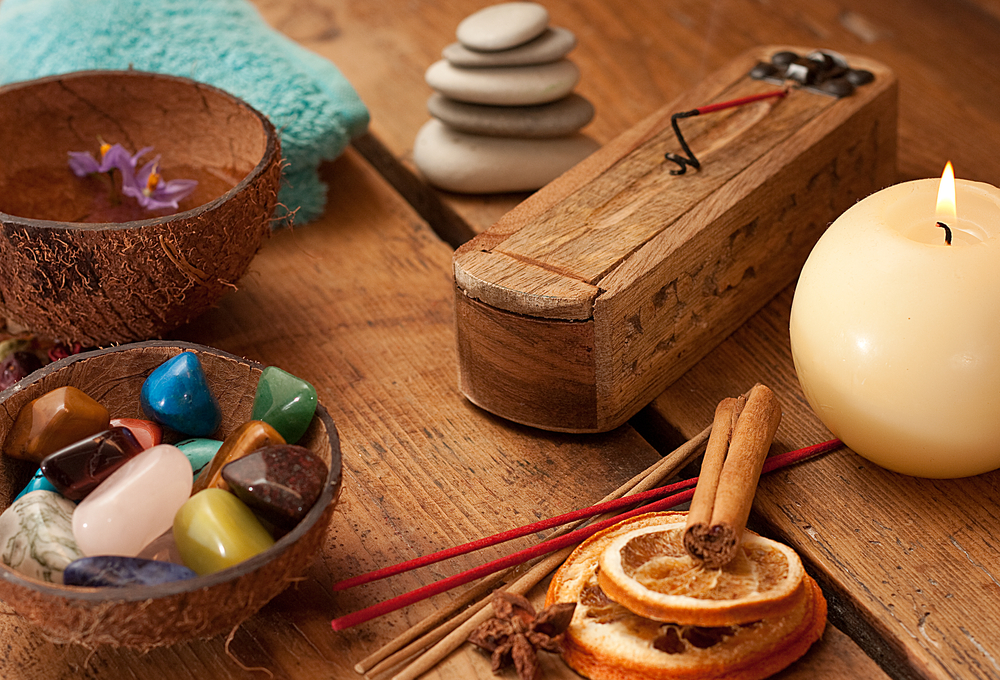
For the uninitiated, the meaning of chakra is “wheel” or “disc” in Sanskrit. It is used to refer to wheels of energy in our bodies.
Each of the seven chakras corresponds to a different nerve center. It’s believed that each chakra affects various aspects of our wellbeing, health, and spirituality. Likewise, each is governed by a specific chakra color and meaning.
The 7 Chakra Colors and What they Each Mean
1. Red: The Root Chakra
This first chakra, also known as the root chakra, is thought to be the densest of all. Hence why its color is the one representing passion, fire — and danger.
Your root chakra is the color of life force and is the most potent, impactful chakra. Red is linked to the adrenal glands, which control the instinctual “fight or flight” response.
People who love the color red enjoy being present in their physical bodies. They are often ambitious, outgoing, and, yes, fiery! This can manifest as either passion and wild love, or anger and frustration; it depends on the individual experiences of each person
Summary: red chakra meaning
The color red is associated with our root chakra and governs our emotions around love, sex, self-expression, and desire.
How to balance this chakra
To balance the root chakra, say the bija mantra Lam out loud and visualize a red color filling into the base of your spine and flowing down to your feet.
The emotions that balance in this color are your feelings towards love, sex, self-expression, and desire.
2. Orange: The Sacral Chakra
This next chakra is located below the naval and controls creativity and expression. You may have heard that orange is the color of creativity — and this is likely where that came from!
As the sacral chakra is in the belly, it’s the chakra which also relates to our gut feelings and intuition.
If you’re drawn to orange or like to surround yourself with the color, you can expect to feel more optimism, joy, liveliness, and imagination. It is also the color of autumn and reminds us that we need to let some things go to start anew.
Summary: orange chakra meaning
Orange is the color of the sacral chakra and governs our sensuality, our creativity, and our self-esteem.
How to balance this chakra
To balance the sacral chakra close your eyes, say the bija sound Vam and visualize bright orange infusing the sacral area.
The emotions that balance in this color are to do with our sensuality, sexuality, our self-esteem, and our creativity.
3. Yellow: The Solar Plexus Chakra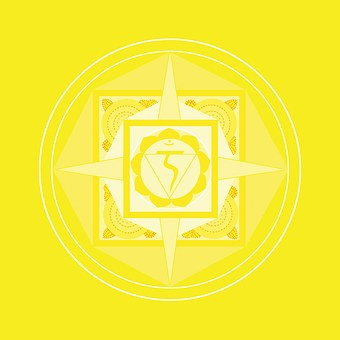
Yellow corresponds to your third–or solar plexus–chakra and controls the intellect. Those drawn to yellow are partial to intellectual challenges.
On top of this, yellow represents mental courage, self-determination, and strength. If you feel pulled toward yellow, it may signify a certain level of self-assuredness and self-esteem, as well as warmth in personality.
At this point, you’re probably finding that your natural feelings about specific colors make sense: red for passion, orange for creativity, yellow for sunniness.
Summary: yellow chakra meaning
The color yellow is associated with our solar plexus chakra and governs our self-confidence, our fears, and the triggers that cause them and our anxiety.
How to balance this chakra
To balance this chakra close your eyes and say the bija sound Ram and visualize bright yellow color flooding your solar plexus area.
The emotions that balance in this color are your feelings of releasing anxiety, bringing confidence, and assisting in releasing fears.
Discover How To Heal & Align Your 7 Chakras To Elevate Your Life & Bring Your Boldest Dreams Into Reality in This FREE Masterclass>>
4. Green: The Heart Chakra
It may seem counterintuitive that the color green represents the heart chakra. However, green is related to wellbeing, nature, the color of the earth, our core, our foundation… So when you think of it that way, it starts to make sense.
This chakra relates to the heart, lungs, chest — basically, our core functioning areas. If you have a strong, open heart chakra, you stand tall, radiate positive energy and also attract love into your life.
Green is known as an expansive color, so if you are drawn to it or if you surround yourself with it, you’ll experience a sense of calm, acceptance, and open-mindedness. It’s also a good sign for your relationships; tuning in to your heart chakra allows you to be more willing to enter into new partnerships, whether platonic or romantic.
Summary: green chakra meaning
The color green is associated with the heart chakra and governs our emotions around guilt, abundance, and boundaries.
How to balance this chakra
To balance this chakra close your eyes and visualize the color green and say the bija mantra Yam. Imagine the heart filling then overflowing around the torso area with the color green.
The emotions that this chakra can balance helps set boundaries and releases guilt.
5. Blue: The Throat Chakra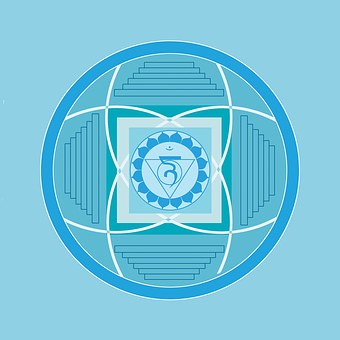
We know that blue is a cool color — unless, of course, you believe that blue is the warmest color. However, it’s also calming, soothing, and healing — just like the ocean.
Think about a vast, still ocean: being by the sea provides a sense of calm and serenity, and puts everything in perspective. This chakra color has a similar meaning: the stillness of the color blue allows you to tune in to your inner being and gives a sense of calmness to the busy mind.
Summary: blue chakra meaning
The color blue represents the throat chakra and governs our emotions around self-expression and communication.
How to balance this chakra
To balance this chakra close your eyes and say the bija mantra Ham and visualize bright blue light filling into your throat area.
The emotions that balance in this color allows for ease of clear communication and expression.
6. Indigo: The Third Eye Chakra
Now, you may be wondering, “What exactly is the third eye chakra?” And that’s a very valid question!
In a spiritual sense, the third eye referred to a sense of inner wisdom and knowing; something that you can’t necessarily see, but is there all the same. The third eye may be able to see inner realms of higher consciousness.
So, the fact that Indigo is the color of your third eye chakra is not of little significance. The meaning of indigo, the deep blue-purple, represents the esoteric, and the intuition. Those who have healthy third eye chakras are at peace with themselves and understand that we have a higher calling in this life.
Indigo represents a connection to the Divine, a deep sense of peace and a connection between the material world and the spiritual one.
Summary: indigo chakra meaning
The color indigo is associated with the third eye chakra and governs our intuition and psychic abilities.
How to balance this chakra
To balance this chakra close your eyes and visualize the color indigo. Then say the bija mantra Aum. Then imagine your forehead area infused with indigo light. See it bringing clarity to your thoughts and visualizations.
7. Violet: The Crown Chakra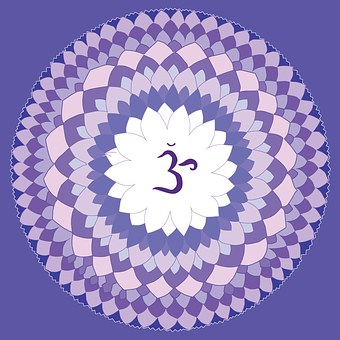
Violet, the color of your crown chakra, has the shortest wavelength and the highest vibration. It is the color of spirituality and is our connection to heaven
Violet encourages peaceful endings and new beginnings. The crown chakra is located at the top of our being (in our skull, cerebral cortex, and brain). It references our intellectual being, as well as the way it connects to our body as a whole, and our inner spirit. Violet is a peaceful color, and one of transcendence.
Surrounding yourself with violet, and opening your crown chakra, will give you a sense of wholeness with the universe. When you achieve this level of connection, you realize that there is no separation between you and the world around you; in fact, that we are all one.
Summary: violet chakra meaning
The violet crown chakra governs our connection to ourselves and our emotions around meditation.
How to balance this chakra
To balance this chakra close your eyes and visualize the color violet infusing around your head then say the bija mantra Ah. Then imagine yourself having positive kind thoughts about yourself. You could visualize everything being clear and connected.
For a simple and extended explanation of chakras, check out this incredible article on the seven different chakra colors. It tells you everything you need to know about your energy centers. As you’ll learn, each chakra is vibrating at a different frequency and responds to different wavelengths of light.
Unblock Chakras For Optimal Life Balance
How do you know whether an emotional blockage is keeping you from moving forward in life?Most of us carry emotional blockages. They can show up anywhere — in our relationships, at work.
These blocks create an imbalance in mind, body, and spirit but we can restore balance through an ancient energy system.
Recognising where an energy block has accumulated is the first step.
But leaning how to unblock chakras is what’s needed to restore balance in the body and mind.
If you want to discover how to heal & align your 7 Chakras to elevate your life & bring your boldest dreams into reality, then join this Free Masterclass with Leading Chakra Expert & Energy Healer, Anodea Judith, where you’ll learn:
 Discover the “architecture of your soul” through your seven chakras – and how each chakra impact key elements of your human experience (from your wealth, your love life, your ability to communicate, and more.)
Discover the “architecture of your soul” through your seven chakras – and how each chakra impact key elements of your human experience (from your wealth, your love life, your ability to communicate, and more.)
 Rapidly diagnose which of your chakras are open or closed so you can identify which area of your life to focus your attention to most.
Rapidly diagnose which of your chakras are open or closed so you can identify which area of your life to focus your attention to most.
 The #1 mistake spiritually-inclined people make in their spiritual growth journey that actually makes them feel less fulfilled and whole in life.
The #1 mistake spiritually-inclined people make in their spiritual growth journey that actually makes them feel less fulfilled and whole in life.
 How to use the “2-Way Chakra Energy Current” so you can manifest your ideal life AND tap into a higher consciousness for inspiration – all at the same time.
How to use the “2-Way Chakra Energy Current” so you can manifest your ideal life AND tap into a higher consciousness for inspiration – all at the same time.
 Ever find yourself reliving the same negative life experiences over and over again? Learn how to use your Chakras as a tool to heal even your most painful traumas and finally liberate yourself from a cycle of pain, frustration and anxiety.
Ever find yourself reliving the same negative life experiences over and over again? Learn how to use your Chakras as a tool to heal even your most painful traumas and finally liberate yourself from a cycle of pain, frustration and anxiety.
Register Today And Discover The Art of Balancing Your 7 Chakras To Heal and Manifest Your Ideal Life
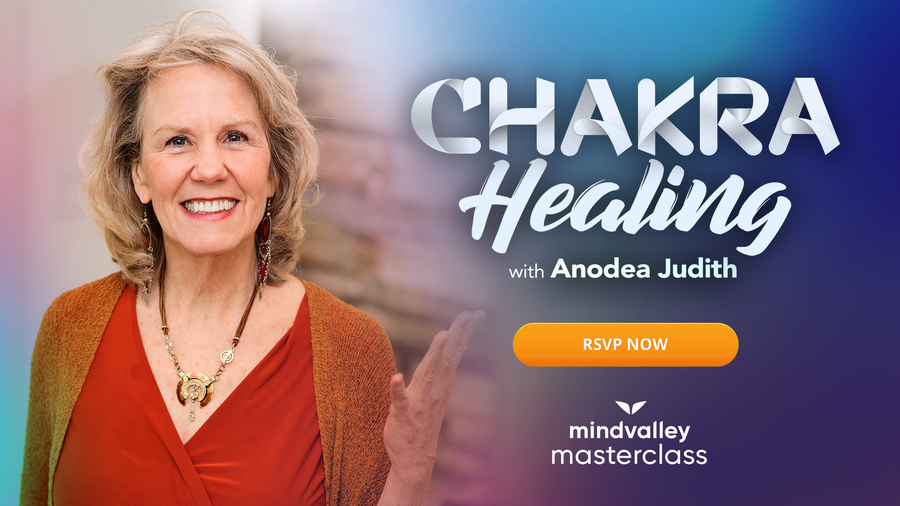
The post What Are Chakra Colors — And What Do They Mean For You? appeared first on FinerMinds.
Do You Have a Blocked Chakra? Here’s How to Find Out 30 Apr 2019 4:40 PM (5 years ago)
If you’ve traveled on the spiritual journey for a while, then you have bumped into the concept of chakras. But if you’re still wondering what they are or what having a blocked chakra means for you, here are some easy-to-understand answers.
What are chakras (and what does it feel like when a chakra is opening or spinning)?
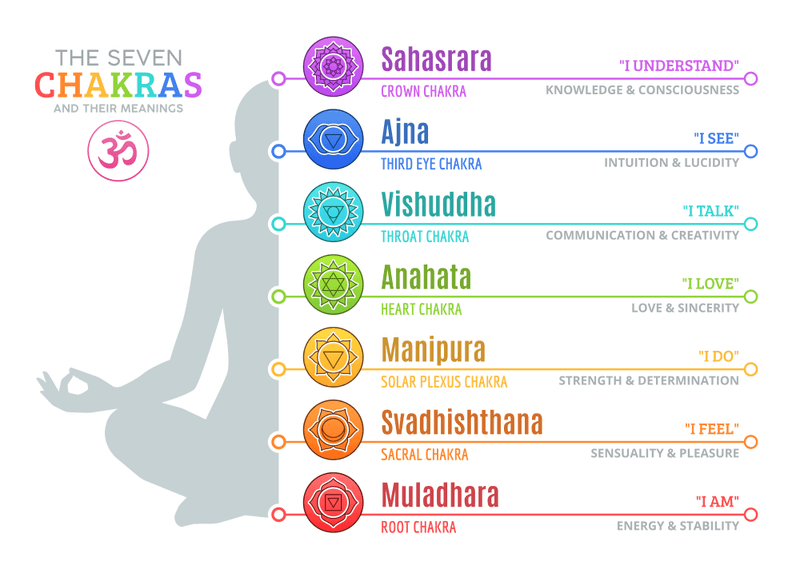 Your chakras are spinning wheels of energy. They reside in your body from the base of your spine upwards to the crown of your head.
Your chakras are spinning wheels of energy. They reside in your body from the base of your spine upwards to the crown of your head.
Connecting to and opening our chakras can hopefully be a pleasant and enlightening experience, although for some the spiritual path may involve a sudden opening to all chakras simultaneously.
Some of the symptoms you may experience when a chakra is opening or awakening
- Bursting, or flower-opening feeling of flow at the heart chakra
- Tingling sensation on the scalp or top of the head that indicates your crown chakra is opening or becoming more receptive
- Sense of pressure or a tapping sensation between your eyebrows as your third eye chakra opens to intuitive insight
- Pulling sensation under your ribs as the solar plexus chakra makes itself known when your boundaries are pushed
- Sense of balance and poise as you reconnect with your root chakra and get grounded
- Feeling of flow or opening to excitement at the sacral chakra as you meet someone new or get excited about a new idea (the sacral/sexual chakra is about creativity in all its’ forms!)
Chakra openings can result in completely life-changing experiences and a total shift of paradigms from relationships, to life choices, as the body, mind and spirit shift to entirely new dimensions of being.
For most of us on the spiritual journey however, we have a slower path to recognition and connection with our chakras over time.
On the flip side, a blocked chakra results in being cut off from that powerful energy source and can cause a myriad of related issues in your life and well-being.
Discover How To Heal & Align Your 7 Chakras To Elevate Your Life & Bring Your Boldest Dreams Into Reality in This FREE Masterclass>>
How do you know if you have a restricted or blocked chakra?
1. Work with energy or crystals to see if the ‘spin’ of your chakras is strong and effective
A crystal pendulum held over a chakra with intention by a friend (or an energy worker) will spin slowly or fast to show the openness or strength of a chakra.
2. Consider your physical state and notice where muscles are tight or joints are sore
Then look to which chakras are involved in the mix, and start the self-inquiry process from there.
3. Sometimes chakra blocks are a symptom of emotional restriction
It’s important to learn or remember to connect to our emotions within the body instead of running our mental programs in our head. This way, we can begin to realize that stressful circumstances can cause our chakras themselves to feel tight, contracted or sore.
One example of this concept as a frame of reference in the present time is ‘butterflies’ in the stomach before a public speech, where we wonder emotionally if people will like what we say and therefore accept who we are. The solar plexus chakra will kick in and resonate with our uncertainty and nervous thoughts.
4. Heartache and grief can give us actual feelings of pain and ‘ache’ in the heart chakra region
As we begin to take on the new vibrational reality of the loss of a relationship and begin to
grieve its’ passing, our hearts ache with loss and a sense of movement and release as we let go of energetic attachments.
If we don’t grieve the passing of something fully, or don’t know how to release that emotional energy, over time we could cause a block or restriction to grow in the heart chakra by holding on to past memories or beliefs that no longer serve us.
The end result could be that we are reluctant to open to new relationships in the future. Our heart, at least for the time being, is ‘closed’.
5. You sense intuitively that something is not quite right with one chakra. Or even that something is ‘stuck’ in your Personal Energy Field
You may perhaps receive these messages through 4 different communication channels:
- Thoughts that pop in, (claircognizance)
- Visions of darkness in our chakras (clairvoyance)
- A feeling that we can’t explain (clairsentience)
- Auditory messages from our spiritual guidance systems (clairaudience)
What to do when you find or become aware of a block or restriction?
 Action of some kind is almost always the answer. At the physical level, we are all learning how to become more balanced and healthy.
Action of some kind is almost always the answer. At the physical level, we are all learning how to become more balanced and healthy.
Many of us work out by lifting weights, running or practicing yoga, for example. Many more people are beginning to understand that a healthy diet is also important for optimal physical health.
The next step in our personal development is to learn more about balancing our Personal Energy Field. Thus you learn how to access the wisdom stored therein.
You can start that particular journey by learning to connect with your chakras; identifying blocks and restrictions, and finding ways to clear them.
Unblock Chakras For Optimal Life Balance
How do you know whether an emotional blockage is keeping you from moving forward in life?Most of us carry emotional blockages. They can show up anywhere — in our relationships, at work.
These blocks create an imbalance in mind, body, and spirit but we can restore balance through an ancient energy system.
Recognising where an energy block has accumulated is the first step.
But leaning how to unblock chakras is what’s needed to restore balance in the body and mind.
If you want to discover how to heal & align your 7 Chakras to elevate your life & bring your boldest dreams into reality, then join this Free Masterclass with Leading Chakra Expert & Energy Healer, Anodea Judith, where you’ll learn:
 Discover the “architecture of your soul” through your seven chakras – and how each chakra impact key elements of your human experience (from your wealth, your love life, your ability to communicate, and more.)
Discover the “architecture of your soul” through your seven chakras – and how each chakra impact key elements of your human experience (from your wealth, your love life, your ability to communicate, and more.)
 Rapidly diagnose which of your chakras are open or closed so you can identify which area of your life to focus your attention to most.
Rapidly diagnose which of your chakras are open or closed so you can identify which area of your life to focus your attention to most.
 The #1 mistake spiritually-inclined people make in their spiritual growth journey that actually makes them feel less fulfilled and whole in life.
The #1 mistake spiritually-inclined people make in their spiritual growth journey that actually makes them feel less fulfilled and whole in life.
 How to use the “2-Way Chakra Energy Current” so you can manifest your ideal life AND tap into a higher consciousness for inspiration – all at the same time.
How to use the “2-Way Chakra Energy Current” so you can manifest your ideal life AND tap into a higher consciousness for inspiration – all at the same time.
 Ever find yourself reliving the same negative life experiences over and over again? Learn how to use your Chakras as a tool to heal even your most painful traumas and finally liberate yourself from a cycle of pain, frustration and anxiety.
Ever find yourself reliving the same negative life experiences over and over again? Learn how to use your Chakras as a tool to heal even your most painful traumas and finally liberate yourself from a cycle of pain, frustration and anxiety.
Register Today And Discover The Art of Balancing Your 7 Chakras To Heal and Manifest Your Ideal Life

The post Do You Have a Blocked Chakra? Here’s How to Find Out appeared first on FinerMinds.
Yoga For Moms: Here’s How to Fit Yoga into Your Life 30 Apr 2019 6:04 AM (5 years ago)
Most of the time, moms are so caught up taking care of everybody, that they forget about themselves.
Being a mom is a full-time job that can be exhausting especially when you have several kids. Between taking care of the kids whether helping them with their homework or bathing and doing the house chores, you find no time for yourself.
However, practicing yoga for a stay-at-home mom with kids takes only a few minutes and leaves one feeling rejuvenated.
Note: Mothers should remember to be safe by using quality mats to prevent accidents.
Yoga for (Stay-at-Home) Moms
There are several ways yoga for stay-at-home moms can be incorporated into your daily routine. The following 8 ways will explain to you how you can fit yoga into your life:
1. Wake Up Before Everybody
Moms doing yoga know the benefits of waking up at dawn. You not only get those few extra hours but they are also peaceful and conducive for meditation which requires total concentration.
Some days you might not feel like waking up, but the good news is you don’t have to do it daily, and it will only take about 20 minutes. This is a great way to start your day with a fresh mind.
2. Yoga for Moms and Kids

Yoga for stay-at-home moms can be easy and fun when the kids are involved. Teaching them early on the benefits of yoga will help them to accept and adopt the practice with an open mind. You also get to kill two birds with one stone that is you do your exercise while keeping an eye on them.
Yoga for moms and kids is a great way to spend time and strengthen your bond through a fun activity.
3. Free Time
Children get tired quickly, and they tend to take naps during the day. Most moms use this time to take naps too; however, for busy moms, this period can be useful for practicing yoga. This because it will only take you like 10 minutes and afterward you will notice you didn’t need that nap after all.
Create & Achieve Your Personal Vision Of Success In The 12 Dimensions Of Your Life With This FREE Masterclass>>
4. It’s OK to ask your Spouse
Having a supportive spouse is very important because you can leave him with the kids while you join your class of other moms doing yoga in your residence. Classes will teach you new techniques, and you get to interact with people in the same situation as you.
5. Take A Yoga Challenge or join a LIVE class

If you look deeper, you can always get motivation from many things.
For instance, the Internet and different mobile apps are great places to start. Here you can find videos and tutorials catering to mothers explaining various techniques. You can also find 30-days challenges or whatever number of days you prefer.
Yoga for moms will become exciting this way, and they will look forward to it.
6. Prioritize your self-care
Just because you are a mother does not mean that you have to work non-stop. Taking time to rest and refresh your body and mind will make you a better mom. Doing yoga at home is one of the ways to do this. It costs less because all you need is a comfortable mat.
It is crucial to make yourself a priority and dedicate at least 20 minutes a day to this practice.
7. Write a Yoga Diary
Yoga for moms is a great way to keep you feeling on top of the game; however, many mothers are bombarded with many tasks, and they seem to forget about this exercise.
Keeping a record of your daily exercises will remind you when your next practice is scheduled. It will also inspire you to keep going especially when you feel like giving up.
8. Practicing Yoga for Busy Moms
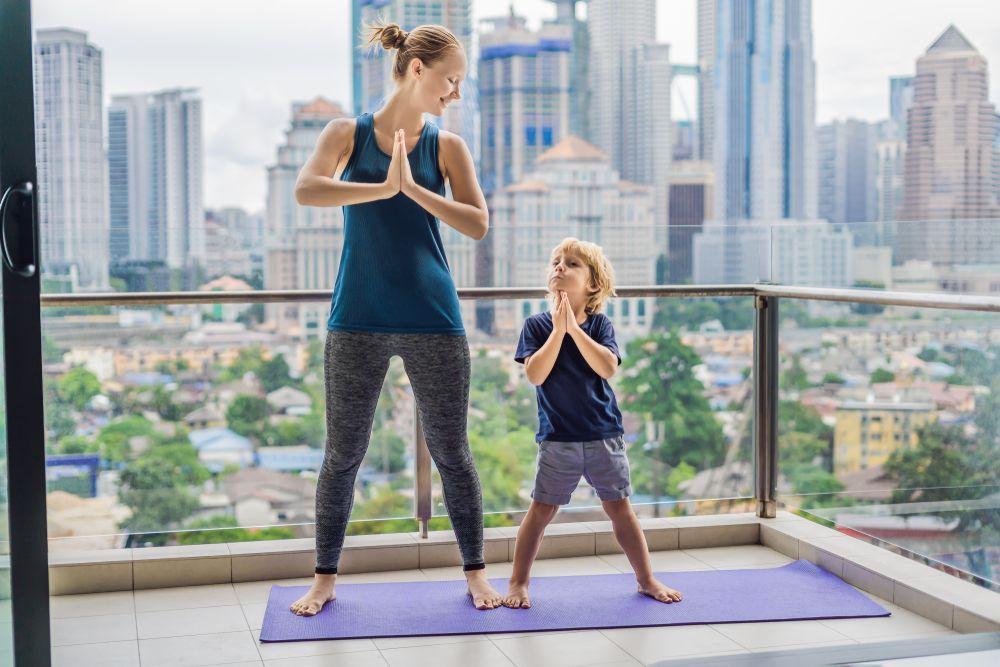
Sometimes doing yoga at home for moms can be challenging especially, during the holidays when all the kids are around. Since doing yoga for stay-at-home mom is very simple you can do them even when in the middle of your chores.
For example, the Mountain Pose which only requires you to stand with your legs slightly together and your hands clasped to your chest. Then lift your shoulders and try to focus on your energy.
Conclusion
Yoga for stay-at-home moms is easy and effective because it helps provide a break from daily activities. It is not only rejuvenating but is also budget-friendly because it only requires a mat.
Yoga is an exciting activity to share time and bond with one’s kids. What is even more exciting is that you can get tips from the internet for free and you get to do these exercises even in the middle of other chores.
What do you think are some of the benefits of yoga for moms?
Gain Instant Clarity On What You Really Want In Life – And Have It All
There’s a reason that so many brilliantly talented, naturally creative, intelligent and capable people never reach their potential, and it is, quite simply, a lack of direction.Even if you have a vague goal in mind, you still need a plan, a process to get you there.
You can have the most expensive, fastest car in the world, but if you set off without a clear idea of where you’re going, then the rusty old Beatle with a map and compass will beat you there every time.
If You're Ready To Experience The Extraordinary Life Design System That Gives YOU The Power To Author Your Ultimate Life, Then Join Jon & Missy Butcher's Free Masterclass
Where You will Learn:
 Are you stuck on the hamster wheel of life, instead of rushing towards your fullest potential? Discover how to escape the 3 soul-crushing reasons most people unknowingly cheat themselves of their greatest lives.
Are you stuck on the hamster wheel of life, instead of rushing towards your fullest potential? Discover how to escape the 3 soul-crushing reasons most people unknowingly cheat themselves of their greatest lives.
 Do you always set goals and rarely achieve them? It’s not your fault – traditional goal-setting is seriously incomplete! Discover how Lifebook empowers you to rapidly and consistently take charge of your life, and realize your every dream.
Do you always set goals and rarely achieve them? It’s not your fault – traditional goal-setting is seriously incomplete! Discover how Lifebook empowers you to rapidly and consistently take charge of your life, and realize your every dream.
 Experience the ‘Instant Clarity’ exercise: a powerful visualization exercise that guides you through your ideal day – and gives you instant clarity on who you really are, and what kind of life you really want to be living.
Experience the ‘Instant Clarity’ exercise: a powerful visualization exercise that guides you through your ideal day – and gives you instant clarity on who you really are, and what kind of life you really want to be living.
Step Into The New Year With A Crystal-Clear Vision For Your Ultimate Life

The post Yoga For Moms: Here’s How to Fit Yoga into Your Life appeared first on FinerMinds.
The 7 Stages of Personal Development and Growth 29 Apr 2019 8:02 PM (5 years ago)
Do you ever feel like the personal growth road is one where you take one step forward and two steps back?
On our way of becoming who we are, we go through a lot of challenges, and we have many obstacles to overcome. Each obstacle is actually a step forward to our personal growth. In fact, during our life journey, we face 7 stages of personal development and growth.
Not all of the stages we go through are pleasant, and sometimes they lead us to feel as if the challenges will be neverending. However, we have to pass through all of them if we want to grow and become a better version of ourselves.
Keep reading to discover these 7 stages of personal development, the growth that you will go through, and how to embrace the journey.
Stage 1: Think about your strengths and weaknesses
The first stage in personal development and growth is self-knowledge.
This is the stage when you analyze yourself, thinking about what you can do best and where you need improvement. Thus, you become more self-aware and can understand who you really are and what you can do.
What is more, this is the ideal stage where you can learn more about what you really need. Once you have finalized your list of needs, it will become easier to decide if you want to do more or stay at the current level.
You should be aware of the fact that you cannot achieve personal development and growth unless you know yourself very well and decide where you are moving.
Stage 2: Comparison with others
When you know very well who you are, you will start comparing yourself with others who seem better than you.
 Even though comparing yourself with others is not recommended, this is a crucial step to challenge yourself and put efforts into becoming better every day.
Even though comparing yourself with others is not recommended, this is a crucial step to challenge yourself and put efforts into becoming better every day.
Each person is different, and we all have different opportunities in life. Because of this, it often almost impossible not to get jealous when you see that another person is successful.
You should know, however, that we all need specific soft skills which will help us achieve our goals faster and easier. Therefore, when you compare yourself with others, you should pay attention to what they do best and learn from them.
Stage 3: Changing your life
When you know yourself very well, and you have compared yourself with others, the next thing you want to do is start developing your abilities and do a dramatic change in your life.
The third of the stages of personal development is where you put all your efforts and knowledge toward enhancing your skills and views on life.
It doesn’t even matter what the reason that made you make this change is. The most important thing is to stay determined and do everything you can to achieve what you dream of.
Learn How to Create & Achieve Your Personal Vision Of Success In The 12 Dimensions Of Your Life in This FREE Masterclass>>
Stage 4: Self-acceptance
Knowing what you want to accomplish in the short and long-term is essential. Moreover, you will also need to evaluate how much effort you need to make these changes and how long it will take. On the other hand, you shouldn’t forget that you have specific weaknesses which you will need to accept.
No one is perfect, and no one can do things without error. Therefore, there is no one to blame that you are not perfect, and you have several weak points.
The idea behind all these is to accept who you are. Self-acceptance will actually help you overpass your fears and move forward with your plans.
5. Planning is the key
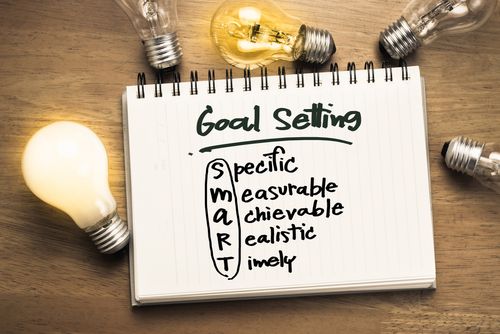 Irrespective of the goal that you set for your personal development, you will need a clear plan to achieve it. You should start by creating a list of priorities and set milestones for each development phase.
Irrespective of the goal that you set for your personal development, you will need a clear plan to achieve it. You should start by creating a list of priorities and set milestones for each development phase.
For example, you should decide which will be your short and long-term goals. Moreover, you should also write them down and visualize them.
Planning is essential when you want to grow because it keeps you organized and helps you move to the direction you established for yourself.
6. Recognize your value
When you are sure that you want to grow and exceed expectations, you will need to fight fiercely against any fears or doubts that you might have. You will be able to reach your true potential only when you get out of your comfort zone.
Don’t be afraid to try all the things that passionate you. Even though you might fail, you shouldn’t give up and move forward in achieving your goals.
7. The sky is the limit
Once you’ve gone through all these phases, you will start growing as a person. You now have clear goals, a well-developed plan, and the motivation to move forward and develop yourself. You shouldn’t be afraid to touch the sky and try something new.
 When you prioritize self-development, this means that you are ready to achieve more. Also, personal development is a continuous process that should be part of your work-life balance.
When you prioritize self-development, this means that you are ready to achieve more. Also, personal development is a continuous process that should be part of your work-life balance.
Personal development and growth should be part of everyone’s lives. It helps us understand who we are and where we want to go.
Once we accept our weaknesses and acknowledge our strengths, it becomes easier to create a comprehensive development plan and stick to it. Following this path will help us head towards personal fulfillment.
Gain Instant Clarity On What You Really Want In Life – And Have It All
There’s a reason that so many brilliantly talented, naturally creative, intelligent and capable people never reach their potential, and it is, quite simply, a lack of direction.Even if you have a vague goal in mind, you still need a plan, a process to get you there.
You can have the most expensive, fastest car in the world, but if you set off without a clear idea of where you’re going, then the rusty old Beatle with a map and compass will beat you there every time.
If You're Ready To Experience The Extraordinary Life Design System That Gives YOU The Power To Author Your Ultimate Life, Then Join Jon & Missy Butcher's Free Masterclass
Where You will Learn:
 Are you stuck on the hamster wheel of life, instead of rushing towards your fullest potential? Discover how to escape the 3 soul-crushing reasons most people unknowingly cheat themselves of their greatest lives.
Are you stuck on the hamster wheel of life, instead of rushing towards your fullest potential? Discover how to escape the 3 soul-crushing reasons most people unknowingly cheat themselves of their greatest lives.
 Do you always set goals and rarely achieve them? It’s not your fault – traditional goal-setting is seriously incomplete! Discover how Lifebook empowers you to rapidly and consistently take charge of your life, and realize your every dream.
Do you always set goals and rarely achieve them? It’s not your fault – traditional goal-setting is seriously incomplete! Discover how Lifebook empowers you to rapidly and consistently take charge of your life, and realize your every dream.
 Experience the ‘Instant Clarity’ exercise: a powerful visualization exercise that guides you through your ideal day – and gives you instant clarity on who you really are, and what kind of life you really want to be living.
Experience the ‘Instant Clarity’ exercise: a powerful visualization exercise that guides you through your ideal day – and gives you instant clarity on who you really are, and what kind of life you really want to be living.
Step Into The New Year With A Crystal-Clear Vision For Your Ultimate Life

The post The 7 Stages of Personal Development and Growth appeared first on FinerMinds.
How to Develop Your Spirituality and Boost Your Happiness 29 Apr 2019 12:36 AM (5 years ago)
Are you a spiritual person?
The answer is yes because spirituality is a gift that comes with being human.
Every human being has a spiritual nature.
But what does ‘natural spirituality’ mean? Natural spirituality is a state of consciousness with three main dimensions:
- A sense of connection to something bigger than ourselves
- Compassion for others
- A search for meaning in life.
What about you? Do any of these three dimensions resonate with you?
Spirituality is not something that can be given. No teacher or tradition can give you spirituality because you already have it.
Of course, like every other gift, we can either develop it or let it wither away.
Imagine for a moment that you were born with the innate talent to become a professional tennis player. If you learned to play tennis and practiced hard, this talent would bear fruit, and you would become successful. But if you never touched a tennis racket, your innate talent wouldn’t show itself.
That’s what happens with our natural spirituality. If we don’t foster it, it remains just a potential, but if we take up practices that allow our natural spirituality to unfold, it can shape our lives and bring happiness.
“Happiness is not something ready-made. It comes from your own actions .”
—The Dalai Lama
If you want to be happier, read on to find a straightforward pathway to more happiness. But first, let’s look at what lies at the heart of most spiritual practices.
At the core of most spiritual practices lies something very simple: being in the present moment.
When we are completely present, without the mind dwelling in the past or imagining the future, our experience of life changes in a significant way. And this change brings happiness.
To feel happier, you need to enter the doorway of NOW. The doorway of now is the present moment. Just this moment right now, whatever it may be.
If you learn to be present to each moment as it arises, this will change your life.
To be present sounds easy, doesn’t it? Yes, it’s a simple practice, but it’s not easy!
You don’t believe me? Here’s a test:
Sit upright in a chair and close your eyes. Now focus on your next five breaths.
I bet you lost your focus somewhere along the way and ended up thinking about what happened in the past, or started dreaming about the future. Or you became lost in thoughts about the pressing tasks on your to-do list.
Right? I’m sure you experienced some mind-wandering! When people wander in their minds, they often think about worries, anxieties, or regrets. This kind of ruminating fuels unhappiness.
The good news is that practice can make you more mindful and boost your sense of happiness.
A Simple Way to be in the Moment
There are many different ways to practice mindfulness. Here is a good starter:
- Choose a daily action that happens many times during a day, for example washing your hands. Each time you wash your hands, take a moment to close your eyes and notice the feeling of water running over your hands. As you do this, take a deep breath.
- When you focus on the present moment, you’ll notice a sense of feeling more grounded and at ease. The more you repeat this simple mindfulness exercise, the more you create islands of mindfulness that shape your experience.
- Every time you emerge from your thoughts to notice the present moment, you are creating a new island of mindfulness. In time, these islands will merge, and you’ll experience more mindful moments than times when you are distracted.
But what if you forget to notice?
When you first start practicing mindfulness, you’ll forget a lot of the time. Take the example of washing your hands. Even if you decide to use this as a mindfulness practice, I bet you’ll mostly wash your hands on auto-pilot and only sometimes wake up to your experience.
That’s alright. Don’t beat yourself up. Celebrate the moments you remember to be mindful, and let go of the times you forget to notice.
But what about happiness? What’s the connection?
 Does Mindfulness Lead to Happiness?
Does Mindfulness Lead to Happiness?
Studies have shown conclusive evidence that people who are focused on the present moment experience more happiness. (You can watch the TED talk about an experiment conducted by Prof. Matt Killingworth here.)
Research has shown that, on average, people are focused on what they are doing only 47% of the time. Just think about what that means for a moment.
It means that in more than half the time, you may not be experiencing your life and are lost in a fog of worries, anxieties, and regrets instead.
Just imagine how many hours, days and years of our lives we waste because we are not present!
I think you’ll agree that becoming more mindful is a great way to live our lives more fully and feel happier.
However, mindfulness is more than just a tool for living a happy life. It’s a way to develop your natural spirituality. As Eckhart Tolle says:
How spiritual you are has nothing to do with what you believe but everything to do with your state of consciousness.
– Eckhart Tolle
Mindfulness is a state of consciousness that enables your natural spirituality to grow.

How to Develop Your Spirituality
The easiest pathway to develop your natural spirituality is to start with simple mindfulness exercises. As I explained before, it’s a good idea to choose a simple daily routine as a focus, like washing your hands.
Remember to take a deep breath when you feel the water on your skin, as the breath is a powerful anchor to the present moment.
I suggest focusing on the same routine for at least three days, then changing to something else. For example, you could choose actions like opening the fridge walking through a doorway, and so on.
Just be patient and kind to yourself.
Developing a habit of mindfulness takes time. But the reward, living a happier life, is worth it.
Most people think that learning is the key to self-development.
It’s how we were raised – when we were young, we studied algebra, read history, and memorized the names of elements on the periodic table.But once you grow up and experience life, you realize that you can’t ‘learn’ certain things – like personal growth.
Vishen Lakhiani, founder of Mindvalley and New York Times Bestselling author, discovered that the key to self-development was not to ‘learn’, but rather, to ‘transform’.
If You Want To ‘Transform’ And Are Ready To Accelerate Your Own Personal Growth, Then Join Vishen Lakhiani's FREE Masterclass, Where You’ll Learn:
 The Framework For Flow: The 3 Big Pillars of Life which will help you to rapidly grow on autopilot, so personal development happens naturally.
The Framework For Flow: The 3 Big Pillars of Life which will help you to rapidly grow on autopilot, so personal development happens naturally. How you can harness the energy surrounding you to automatically attract the tools you need to unlock your true potential, allowing you to easily make transformative shifts in your life.
How you can harness the energy surrounding you to automatically attract the tools you need to unlock your true potential, allowing you to easily make transformative shifts in your life. Apply the #1 principle to eliminate obstacles in your life, and subsequently show up as your best self and make a positive impact on the world.
Apply the #1 principle to eliminate obstacles in your life, and subsequently show up as your best self and make a positive impact on the world.Discover The Proven Framework for Extraordinary Transformation and a Brand New You in 2020

The post How to Develop Your Spirituality and Boost Your Happiness appeared first on FinerMinds.
Struggling with Depression? Here are 7 Methods That May Help 27 Apr 2019 1:28 PM (5 years ago)
We all have days we feel drained and tired. With busy schedules and less sleep than we would like, these are normal feelings. Depression, on the other hand, is not just having a few “off” days. It’s a chronic disorder that causes problems with your everyday life.
What is Depression?
The National Institute of Mental Health (NIMH) defines depression as a mood disorder that affects how you feel, think and handle daily activities such as sleeping, eating, and work. Symptoms have to be present for at least 2 weeks for your doctor to be able to make a diagnosis.
Common symptoms of depression include:
- Persistent sadness
- Anxiety
- Feelings of hopelessness
- Irritability
- Fatigue
- Difficulty concentrating
- Sleep issues
- Eating too much or too little
- Thoughts about death or suicide
If you are experiencing any of these symptoms contact your doctor for an evaluation.
Non-Medical Ways to Help with Depression
There are several non-medical ways that can help to alleviate your depression symptoms and improve your overall health. Eating foods rich in nutrients, exercising regularly, and setting personal goals are ways you can strengthen your mind and your body. Here’s a look at these methods (plus some more conventional ones).
1. Healthy Foods
The best foods to help fight symptoms of depression include fresh fruits and vegetables, whole grains, nuts, legumes, dairy products, and lean meats. Staying hydrated by drinking plenty of water is also essential for good health.
Incorporating healthy foods in your diet is easy. Pre-cut fruits and vegetables, and pre-packaged servings of nuts and seeds are a quick go-to snack. Mix up a smoothie for an easy to-go breakfast. Packaged salads are a great meal starter. Add lean cuts of meat, cheese, nuts, or seeds to make it a lunch or light dinner.
2. Exercise
Some Clinics state when you exercise your brain releases several chemicals that make you feel good. One of these chemicals is Endogenous Cannabinoids, a natural cannabis-like compound.
Exercising on a regular basis is a healthy way to cope with your depression. Working out helps you to refocus your thoughts, and improve your self-confidence. Finding groups to exercise with such as yoga class or at the gym enables you to develop a social network.
Exercise doesn’t have to be intense or complicated. Thirty minutes a day of getting your heart rate up is all it takes. Simple ways include using the stairs instead of the elevator, or parking farther away from stores or your office and walking. Gardening, walking around the block, and playing catch with your kids can also get you moving.
3. Goal Setting
When you are experiencing depression, the last thing you want to do is set a goal, but it can help. One big, long term goal broken down into doable short term goals is best.
A counselor or your medical doctor can help you set achievable goals.
4. Cognitive Behavior Therapy
One of the most commonly used tools to help with depression is cognitive behavioral therapy (CBT). It’s a type of talk therapy that helps you to identify and change your negative thought patterns.
Cognitive behavioral therapy consists of a limited number of sessions with a trained counselor. You meet with your counselor at preset appointments to share your thoughts and feelings. During your session, your counselor will help you identify any negative thought patterns and create ways to change them into positive ones.
5. Hospital and Residential Treatment Programs
CBT can be done in an inpatient or an outpatient treatment program in a hospital or residential treatment facility. If you have severe depression or are in danger of hurting yourself, or have injured yourself you may be admitted to a hospital for medical treatment. While in the hospital you may be required to attend CBT sessions.
For severe depression or depression with co-occurring disorders and addictions, your medical doctor may suggest you stay in a residential treatment facility. Residential treatment facilities are live-in programs that specialize in psychological disorders and addictions that often go hand-in-hand. Duration and treatment of such programs depend on each individual’s unique needs.
6. Medications for Depression
When you are diagnosed with depression, your medical doctor will work with you on deciding which treatment is best for you.
There is a wide range of medications available. Selective Serotonin reuptake inhibitors (SSRIs) are the most commonly prescribed medications.
For more severe cases of depression, your doctor may either combine several medications or prescribe Monoamine Oxidase Inhibitors (MAOIs). MAOIs are a group of medicines that are used when other medications don’t work effectively. This type of drug has serious side-effects and cannot be combined with other medications and cannot be taken with some foods.
7. Medical Marijuana
Even as more states legalize the use of medical marijuana, the debate of whether or not it is a viable option as a drug still continues. Research in the use of medical marijuana is still in its infant stage, but studies have shown some positive benefits of its use for many disorders including depression.
Current research being done are looking into medical marijuana’s ability to stabilize moods and to normalize endocannabinoid functions in the brain, the feel-good chemical naturally released by exercise.
Each person reacts differently to medication due to their unique needs. Professionals at i49.net can help you decide if this is the right treatment for you.
The post Struggling with Depression? Here are 7 Methods That May Help appeared first on FinerMinds.
3 Steps to Letting Your Light Shine 26 Apr 2019 7:47 AM (5 years ago)
The energy and positive vibrations you feel in your body are not just limited to yourself.
They have an outward effect on all the people around you, whether you know it or not.
Just as smiling at a stranger can brighten up his day, your positive actions can influence others to make positive choices in their own lives. You are in effect lighting their path to success.
As you read this article below, you’ll discover a few things about how you view your life and how your actions can impact another person’s choices. It’s been reproduced here for your reading convenience by Glen from PluginID.
Be the Light that Gives Others Permission to Shine
by Glen from PluginID
My favorite part of the popular Marianne Williamson quote is this: “And as we let our own light shine, we unconsciously give other people permission to do the same. As we are liberated from our own fear, our presence automatically liberates others.“
The inspiration for this post wasn’t just a quote but seeing the message the quote shares happen on a daily basis of my life while living in South Africa. I touched upon ‘being the light’ in the post titled ‘You Are Enough‘ but I want to give this message the attention it deserves.
What Holds Us Back
A common cause of depression is the fact that we think we can’t ‘get out there’ and make something of our lives. The feeling that we are just here to survive, live our scripted life and then die like millions before us. Even I, at times, have questioned the point in existence, and been so low that I’ve considered doing crazy things to myself because of lack of drive or belief that my goals are achievable.
Many of the things that hold us back or what I’ve suffered or experienced myself, that’s mostly why I write about them. Some of the most recurring limitations include:
- Self-limiting beliefs
- Caring what people think of us
- Thinking we need more things to get somewhere
- Feeling like we don’t deserve success
- Worrying about too many possible ‘negative’ scenarios
The list is endless. The common factor in all of them is that we are doubting things before we’ve even tried them.
We let the judgments of others combined with our own limiting beliefs decide the outcome for us, without even going for what we want in the first place.
It makes no sense, yet many of us are held back by this.
Why? To be honest, I don’t know.
Our minds are powerful tools; many aspects of our mind that are there to help us survive can also manage to turn ourselves…against ourselves.
The only thing I’ve found so far that works successfully, for everybody (when practiced), is living in the moment. Think about it. In this moment, what difference does it make what anyone thinks about you?
Right now, your limiting beliefs should have no hold on you because you aren’t basing things from past experiences nor future imaginations. And right now there are no negative scenarios to envisage and no reason to doubt anything.
Being the Light
There are two aspects to being the light that I want to cover. In basic terms they are this:
1) Taking action and being who you want to be
2) Giving others permission to do the same
They are both actually the same thing, but there are some points on each that I would like to address.
Taking Action
I used to be very shy, didn’t go out that much and my only life goal was to be a computer programmer, although I hadn’t programmed anything in my life. More recently, I’ve been going out 5 nights a week, have tons of friends and I’m focusing my efforts on PluginID (something I’m proud of).
Although blogging (it’s actually my medium, not my message) may not seem like a challenging thing, there’s a sense of weariness in having your full name online and writing very personally about your life; something I don’t mind doing these days. On that note though, I’m far from perfect (if there is such a thing); I can write on topics like not caring what people think and while I don’t to a large extent, there are still times when the judgments of others can bother me.
Being the light is simply going for exactly what you want, and not letting any of the above bullet points hold you back.
If you want to do something, do it, even if others might laugh at you or think it is ‘lame’. Have large goals and dreams if they involve your passions; even if people say it can’t be done or you’re wasting your time. This is being the light.
Do you know why? Because what you can visualize, you can create.
I’m sure Nelson Mandela, Gandhi, Barack Obama, Richard Branson, and others had people telling them they can’t do things and even had their own limiting beliefs at times. In fact, from reading some of their biographies I know that this is the case. Did they let that stop them? No, they became the light that lets people like you and me see what is possible; for that, I respect them more than I could ever put into words.
Nobody had ever ran quicker than a 4-minute mile until Roger Bannister came along, it had never ever been recorded in history. Yet, as soon as he did that, 37 people did the same thing in the following 12 months. And the year after that, over 300 people managed to achieve the feat. He was the light, he showed people what is possible and gave them the belief to do the same.
Giving Other People Permission
As an act of its own, simply being the light in your own life will give people permission to see they can do that in theirs. During my time in South Africa, I was surrounded by people my age that literally did not care what people thought of them, people who managed to get me to breakdance in the middle of busy shop stores just to see if I could stop caring (I did). Being surrounded by others who don’t care helps you do the same, just as whatever you do will unconsciously have an effect on others.
Fact: just being the light is enough to think of your job well done. However, there are two more things I’ve learned on this path:
1) Don’t discourage people. If someone comes to you with their crazy idea, don’t shoot them down. Support them; be non-judging but very encouraging.
2) Some people don’t want advice. Just because you are making a go of your life, that doesn’t give you permission to impose your reality onto the lives of others. When people are ready to make a change, the lessons will unfold.
When are you going to shine?
P.S. Do you have limiting beliefs that are holding you back from becoming your best self?
The way we think about the world affects our experience in it — for good or for bad. Vishen Lakhiani’s transformational course, Consciousness Engineering, allows you to challenge any limiting beliefs you may hold. Try it out and live without limits today!
The post 3 Steps to Letting Your Light Shine appeared first on FinerMinds.
7 Ways to Make Each Day the One to Become A Better Person 24 Apr 2019 4:03 AM (5 years ago)
About 20.3% of Americans said that they fear or are afraid of death. Nearly as many (about 20%) are afraid of public speaking.
But if fear has so much space in your life, what makes you happy? If most of the time you are afraid of imaginary events, where does your happiness come from?
Well, you have only one life. It would be a pity to spend it worrying. Instead, make your every day count. Use the time you have for improving you. Use it for bringing happiness not only in your life but also to someone else’s life.
Make each day count. It is your opportunity for living life at its fullest. Because it is up to you how you behave, it is up to you to find the beautiful things in life that bring joy. It is up to you to take advantage of the limited time we have on this planet.
Let’s see how to use each day to become a better person.
1. Do What You Love
Everyone has an activity that loves to do. And if not, you should find it. Doing what you love every day will only bring happiness and positivity in your life. Ask yourself that question no one wants to hear for real.
If I had only a month left to live, what would I do? Well, the answer to this question is the answer to your happiness. Don’t you feel a better person after you manage to bring a smile on your face?
2. Spend Money on Experiences
There is a controversy regarding the answer to the question: Do money bring happiness? Well, the right answer is: It depends. Recent studies show that money spent on experiences, rather than on material things, bring more joy.
And we know that by being happy we are more open to helping others. And this makes us better humans. If you have the chance, buy that plane ticket. Meet other cultures and their values.
3. Laugh
It might seem strange. How could you start laughing at a clap of hands? Yes, it is not only about the genuine laugh. Studies have shown that laugh decreases the level of stress, conflict or pain. But, the most important benefit of laughter is the release of endorphins.
Endorphins are the natural feel-good chemicals the body is producing. They contribute to your overall state of mind, making you feel stress relieved and happier.
Also, your level of wellbeing will considerably increase. Of course, laughter connects you with others. And what a better way to relax and recharge your batteries than with your friends?
The connection you make with other humans makes you a better person because it increases your level of empathy.
4. Appreciate the Little Things in Life
Appreciating the little things in life means finding happiness every day. We all have good and bad days. But it is up to you to accept all the things that happen.
It is also up to you to be grateful for what you have. It might sound like a cliché, but some people are not as lucky as you. What happens to you, happens for a reason.
Just by changing the focus from your busy life will help you acknowledge how beautiful life is. And by adopting the astronaut effect, you can see that things have new meanings.
And you will make your days have different meanings for you.
5. Help Someone in Need
Don’t you feel a better person when you help someone? It might be your friend, a colleague or someone you do not know. Don’t you feel better when you have used the right words, and your friend started feeling better?
Or when a stranger smiles back at you? For example, you can help your friend with dissertation editing. Just by practicing acts of kindness you add more value to your life. Your life becomes more abundant and more meaningful.
6. Express Yourself
Everyone has a hobby. Let your inner child go wild every once in a while. Find some creative ways to express yourself.
Like this, your creative skills will improve. This will have a positive impact also on your wellbeing. Find that part of the art you can be good at.
You can draw, or you can paint. You can play an instrument, or you can dance. You can become one of the Ninja Essays and express your creativity through writing.
You can work together with edu birdie or domywriting reviews to create some beautiful essays on challenging topics. This will also decrease the level of stress and will shift your attention from your busy life.
7. Play
When you become an adult, the assumption you make is that play is only for children. Or that play can be done by adults only if they play with their children.
Well, find out that play has various benefits for your mental health. Whether you play football or just squash, the spirit of competition is within you.
Of course, you do not have to do sports in order to play. There are a lot of challenging board games that will put your skills to test. And you will also make a bond with your friends stronger.
Conclusion
We all have bad days. We all sometimes feel that we cannot face those challenges. But those challenges are the ones that improve us, that make us better. If you focus your attention on the negative parts of life, you will miss some fantastic experiences.
Be grateful for all the small things. Aim at feeling positive and expressing yourself through art. Do what you love because that will make you happy.
Help someone in need and bring a ray of sunshine to their day by small acts of kindness.
Each day is an opportunity to improve yourself and to spend the time so that you will be happier. The time you have on this planet is limited.
So, what are you waiting for? Let the positivity flow through your veins.
Most people think that learning is the key to self-development.
It’s how we were raised – when we were young, we studied algebra, read history, and memorized the names of elements on the periodic table.But once you grow up and experience life, you realize that you can’t ‘learn’ certain things – like personal growth.
Vishen Lakhiani, founder of Mindvalley and New York Times Bestselling author, discovered that the key to self-development was not to ‘learn’, but rather, to ‘transform’.
If You Want To ‘Transform’ And Are Ready To Accelerate Your Own Personal Growth, Then Join Vishen Lakhiani's FREE Masterclass, Where You’ll Learn:
 The Framework For Flow: The 3 Big Pillars of Life which will help you to rapidly grow on autopilot, so personal development happens naturally.
The Framework For Flow: The 3 Big Pillars of Life which will help you to rapidly grow on autopilot, so personal development happens naturally. How you can harness the energy surrounding you to automatically attract the tools you need to unlock your true potential, allowing you to easily make transformative shifts in your life.
How you can harness the energy surrounding you to automatically attract the tools you need to unlock your true potential, allowing you to easily make transformative shifts in your life. Apply the #1 principle to eliminate obstacles in your life, and subsequently show up as your best self and make a positive impact on the world.
Apply the #1 principle to eliminate obstacles in your life, and subsequently show up as your best self and make a positive impact on the world.Discover The Proven Framework for Extraordinary Transformation and a Brand New You in 2020

The post 7 Ways to Make Each Day the One to Become A Better Person appeared first on FinerMinds.
How Fear and Anxiety Differ (and 8 Ways to Overcome Them) 23 Apr 2019 11:29 AM (5 years ago)
Anxiety and fear run in tandem with each other; these terms are not tradable. Even though manifestations commonly cover an individual’s involvement, these feelings dependent on their specific circumstances. Fear identifies with a known or unknown risk, though tension pursues from an obscure or ineffectively characterized danger, the FluxxLab CBDA Tincture Oil is fast acting and powerful to deal with this problem.
CBDA Tincture Oil is fast acting and powerful to deal with this problem.
Both Produce a Stress Response
Anxiety and fear produce similar reactions to specific threats. Be that as it may, numerous specialists trust that there are significant contrasts between the two. These distinctions can represent how we respond to different stressors in our condition.
Muscle pressure, expanded pulse, and shortness of breath mark the huge physiological manifestations related to a reaction to risk. These real changes result from an innate battle, or a response thought to be vital for our survival. Without this pressure reaction, our brain wouldn’t get the alarming peril flag, and our bodies would be unfit to get ready to escape or remain and fight when looked with risk.
Anxiety
As indicated by specialists Sadock, and Ruiz, Anxiety is a diffuse, disagreeable, unclear feeling of fear. It’s regularly a reaction to an uncertain or obscure risk.
For instance, envision you’re strolling down a dark road. You may feel somewhat uneasy, and maybe you have a couple of butterflies in your stomach. These sensations are brought about by nervousness that is identified with the likelihood that an outsider may bounce out from behind a hedge, or approach you in some other manner. This tension isn’t the consequence of a known or explicit danger. Or maybe it originates from your mind’s understanding of the conceivable perils that could quickly emerge.
Fear
It is an enthusiastic reaction to a known or definite danger. In case you’re strolling down a flat road, and somebody focuses a firearm at you and says, “This is a stickup,” at that point you’d almost certainly experience a Fear reaction. The threat is genuine, unmistakable, and quick. There’s a specific object of the Fear.
Even though the focal point of the reaction is unique (genuine versus envisioned risk), Anxiety and fear are interrelated. At the point when looked with Fear, the vast majority will encounter the physical responses that are depicted under uneasiness.
Fear causes tension, and Anxiety can cause Fear. Be that as it may, the unobtrusive qualifications between the two give you a superior comprehension of your manifestations and might be essential for treatment techniques.

8 Steps to Beat Fear and Anxiety
1. Relax
Learning to unwind can assist you with the psychological and physical sentiments of dread. It can help just with dropping your shoulders and inhale profoundly. Or then again envision yourself in a loosening up spot. You could likewise have a go at learning things like yoga, contemplation, a back rub or tune in to the Mental Health Foundation’s prosperity web recordings.
2. Exercise
Increment the measure of activity you do. Exercise requires some fixation, and this can take your psyche off your Anxiety and fear.
3. Smart dieting
Eat heaps of products of the soil, and attempt to dodge an excessive amount of sugar. Coming about dunks in your glucose can give your emotions an edge. Attempt to abstain from drinking an excessive amount of tea and espresso, as caffeine can build tension dimensions.
4. Keep away from liquor, or drink with some restraint
It’s fundamental for individuals to drink when they feel anxious. A few people call liquor ‘Dutch fearlessness,’ however, the delayed consequences of alcohol can make you feel significantly apprehensive or restless.
5. Correlative treatments
A few people locate that correlative treatments or activities, for example, unwinding systems, contemplation, and yoga help to manage anxiety naturally.
6. Confidence/otherworldliness
If you are religious or otherworldly, this can give you a method for inclination associated with an option that is greater than yourself. Confidence can furnish a method for adapting to normal pressure, and going to chapel and other confidence gatherings can interface you with an essential encouraging group of people.
7. Control your imagination
Fear and uneasiness flourish when we envision the most noticeably bad. We created energy to have the capacity to extend into the future so we can prepare. A touch of this is helpful; all things considered, there indeed may be muggers or advance sharks. In any case, unlimited creative ability is a settling ground for tension and Fear that can ruin generally upbeat lives.
A few people abuse their creative energy incessantly thus endure considerably more uneasiness than the individuals who either future-venture their creative abilities productively or who don’t. Restless, interminable worriers will result in widespread abuse of their creative impulses to the degree that up and coming occasions feel like fiascoes hanging tight to occur.
Utilize the other part of your mind. When we are on edge, it’s harder to think obviously. However, on the off chance that we constrain ourselves to utilize portions of ‘the reasoning mind,’ this will weaken the feeling and start to quiet you down.
The post How Fear and Anxiety Differ (and 8 Ways to Overcome Them) appeared first on FinerMinds.
Clutter Got You Overwhelmed? Here are 20 Ways to Become More Organized 22 Apr 2019 4:28 AM (5 years ago)
Do you want to become more organized? Everyone does!
Unfortunately, no one is born organized. Being organized is a process that involves nurturing healthy habits that ultimately help you to stay organized.
That means even if you are disorganized, you can train yourself to become more organized.
As mentioned above, it’s a process that may include simple things like planning, writing things down and concentrating on the most important things by skipping unnecessary ones. In the end, you will become more organized.
Research suggests that it takes 21 days to form a habit. Therefore, cultivating these 20 simple ideas, you could become more organized in just three weeks.
1. Keep Everything Where it Belongs
“Even if you have a space inside your house, it does not mean it’s where everything should be,” advises Hannah Kristine, an instructor, and director at superior papers, a thesis proposal writing service provider.
Hannah argues that every tool should be put at its place of work and not where there is space. In case of insufficient space in the workspace, it’s better to create a room for items.
For instance, if you work with power saws, ensure you store them at your place of work. The same applies to other items.
The idea is to make it easy to access everything you want more easily than to move around searching for an item you want to use at that moment.
Therefore to become more organized, ensure to put everything where it belongs and label for easy access.
2. Have a To-Do List
It’s not easy to remember things using our memory. And neither will you become more organized by remembering every important thing in your life. Even if you were born with a good memory, some things will slip your mind sooner or later.
Write a to-do list so that you can know what needs and what does not need to be done and what time.
3. Do It When It Is Time To
Never wait to do something. If you have time to do something, just do it now and not tomorrow. Keeping things for tomorrow will complicate everything, and you will take longer to complete your project.
4. Ditch Those Bad Habits
If you allow bad habits in your life, you will take longer to accomplish what you could have done in that given time. To be more organized, ensure you do what needs to be done at the time when it needs to be done.
5. Take Breaks
According to a study, taking breaks can boost productivity and creativity. In fact, most successful people argue that taking breaks between work can help to address challenges from a different angle. Therefore, learn to take breaks, especially when you start to feel worn-out.
6. Use The Right Tools For The Right Job
Most successful people use the right tools to make work easier. Before you start working on a project, think about the tools you can use to streamline the process. This way, you will get things done faster and with better results.
7. Set Goals and Deadlines
If you keep things organized, you will definitely boost productivity. And to be more productive, you need to set clear and achievable goals and deadlines. As well, if set goals and deadlines, ensure to work on achieving them.
8. Declutter
If you don’t need it, don’t keep it near you. Putting things that you don’t need will clutter the space. For that reason, if you don’t need that paper clipper now, don’t keep it near you, unless you really want to use it at that moment.
9. If You No Longer Use it Know Where to Discard it
Organized people know when and where to discard stuff. Too many items in your room make it messy. If you do not use that desktop computer donate it or sell on eBay. Put everything you don’t need away so that you can create room for things you need.
10. Assign Duties When Needed
You do not need to do everything by yourself. To become more organized, you need to delegate responsibilities. This way, you will become more productive.
11. Learn to Say Yes or No
…And when you say no, mean it. Regardless of how a deal looks great, you should always learn to say yes or no, to avoid overloading yourself.
12. Celebrate a Step You Have Made Whether Huge or Small
Have a to-do list, encourage yourself by mixing small and simple tasks with big and complex ones. And when you achieve something, whether small or huge, celebrate. Reward yourself for that.
13. Be Honest
If you are a student and you need help with essay writing tasks, just be frank and seek help. This way, you will save yourself from a lot of stress, and you will have time to work on other assignments.
14. Wake Up Before Everyone Else
Organized people get up early. Therefore, if you want to become more organized, you should develop a habit of waking up before the world.
15. Accept Help
Accepting help does not make you look weak. You don’t have to do everything by yourself. At some point in time, those organized people you know of have accepted help. Why should you deny it?
16. Eat Well
Because you will want to achieve those goals and beat deadlines, you need enough energy to stay active and strong throughout the time needed to accomplish things. Eating well is a routine you need to develop similar to getting up early.
17. Work Out
You think working out is only necessary when you have upcoming competitions? Think twice!
Working out will help your mind stay active, and your body energized for a long period of time. If you don’t have money to pay for membership at the gym, do other activities like jogging, walking, and mountain climbing.
18. Never Leave Anything Unresolved
Going to sleep with unresolved conflicts or misunderstandings can deny you sleep.
Research shows that getting enough sleep helps to keep your brain and body healthy. If you want to be ready for tomorrow, you need to solve any work-related problem before the end of the day. That’s how you can be able to wake up the next day feeling motivated and energized for the tasks at hand.
19. Purchase Only Things You Need
Don’t buy things because they are cheaper, but because you need them. Buying things you do not need because they are cheap will lead to more clutter at your workstation.
20. Work Hard
Staying organized does not come easily. You have to work hard for it. Delegating responsibilities will help you to organize your to-do list so that you know what you need to do and what time you need to do it.
Use these organizational ideas, cultivate them, apply them to your daily routine, and you will become more organized and productive.
The post Clutter Got You Overwhelmed? Here are 20 Ways to Become More Organized appeared first on FinerMinds.
Law of Attraction for Kids: How to Teach Children to Manifest their Dreams 17 Apr 2019 8:24 AM (5 years ago)
We often think of manifesting our wants and desires as something for adults, but is the learning about the Law of Attraction for kids, too?
Absolutely. I taught my children the Law of Attraction from their earliest years. And a few decades later, they have grown into adults who are conscious creators, aware of how the Law of Attraction operates in their lives.
Try these games to set your child on the right path to attracting the life they want. And then enjoy seeing what shows up for both of you!
4 Games to Teach Children How to Be Conscious Creators
1. The “I See” Game
 Sometimes, our desires have emotional charges or limiting beliefs attached to them. So to help your child see quick success in attracting what they want, it’s useful to start with something neutral.
Sometimes, our desires have emotional charges or limiting beliefs attached to them. So to help your child see quick success in attracting what they want, it’s useful to start with something neutral.
Teach your child to set intentions with this easy beginner game:
In the morning. Decide on something you want to see that day. Ask your child to pick one thing, too. It can be anything. For example: seeing a little girl with pigtails, or a yellow car. You then set the intention that you will see it that day.
At dinnertime or the end of the day, share what you saw. Quite often, you and your child see each other’s choices!
2. The Appreciation Game
Gratitude is one of the highest vibrations in which we can live. Our feelings of gratitude attract into our life more of those things that we appreciate.
Cue your child to practice the act of gratitude with this simple game:
Gather many coins and give your child enough coins to fill his or her pocket. Tell your child that every time they hear the sound or movement of the coins, this is a cue to think of one thing they are grateful for.
Teach your children that as they express gratitude, more things will show up in their life for which they feel grateful.
Learn How to Turn This Year Into Your Most Abundant and Successful One Yet in This FREE Masterclass>>
3. The Vision Game
Visualization and consistent reminders of intention are vital in helping your child (or even you) to live in patterns that attract what you want.
 A great way to model how to utilize the law of attraction to kids is to create a family vision board. It could contain details of trips you want to go on together or things you want as a family.
A great way to model how to utilize the law of attraction to kids is to create a family vision board. It could contain details of trips you want to go on together or things you want as a family.
Put it in a place where everyone can see it. Talk frequently about how much fun you will have and how much you will enjoy it. You can even pretend you have already had the experience and talk about how great it was. Name some things that happened as if it already transpired.
Also, consider supporting your child in creating a personal vision board.
Your child will want experiences or things that are not shared desires with you. Ask your children about their desires and help them create their own vision boards.
This teaches children that as they focus on what they want, they will manifest it into their lives. It also has the added benefit of showing them that their personal desires are valid – a belief that leaves them free to attract what they want the most.
4. The Creation Energy Game
Do a creation energy circle as a family. Stand in a circle and take turns to speak your desires and wishes out loud and imagine throwing them into the ring.
Go around the group two to three times. After everyone has shared, have everyone jump into the circle together, and dance in the energy of your desires. Ask the Universe to take this energy and bring you what you desire.
Putting the Law of Attraction for Kids into Practice
Lastly, as a parent, set the intention that teaching kids the Law of Attraction will be easy, enjoyable, and fruitful. Let go and allow your children to become creators. Your confidence will empower your children to create their own abundant happiness for the rest of their lives.
Also remember that while this article is about sharing the Law of Attraction with kids, you have an incredible opportunity to strengthen your own manifesting in the process.
When parents and children both fully realize that they have an innate power to attract, amazing things happen.
What have you already taught your children about the Law of Attraction? What will you and your child manifest together?
The post Law of Attraction for Kids: How to Teach Children to Manifest their Dreams appeared first on FinerMinds.
Why Cooking Is Good for the Soul 16 Apr 2019 12:13 PM (5 years ago)
Does any cold remedy compare to mum’s homemade chicken soup? There’s a reason for that, and it’s called love. Eating nourishes the body, but cooking for those we love feeds the soul.
Any chow magically becomes soul food when the person in the kitchen flies into a frenzy to whip up a favorite dish for someone they hold dear. My hubby can’t flip an omelet to save his life, but when he serves me up a hot mess of eggs and cheese as breakfast in bed, you won’t find me bemoaning his lack of plating skills.
Anyone who has ever felt homesick knows that the taste of good, old-fashioned homestyle cooking beats anything even the fanciest restaurants serve up.
Why Nothing Beats the Taste of Home
Missing mama’s cooking is far from a unique American first-world problem. Peeps all over the globe find one of the things they miss the most when they migrate to a new locale is the food they once enjoyed.
The reasons remain immaterial. Even those in urban areas with ample ethnic markets available attest that nothing tastes quite like the flavors they grew up loving.
Nutritionists and celebrity weight-loss gurus adore referring to food as nothing more than an array of phytochemicals on a plate designed to keep our physical bodies moving smoothly.
However well-intended such people may be, I call BS on that whole idea. Want to know the primary reason diets don’t work for most people over the long term?
What we put in our mouths doesn’t only provide us with vitamins, protein, and other nutrients; it also connects us with the ever-turning circle of life all mortal creatures inhabit.
Growing up in Jersey, nothing beat driving up the coast in the summer to catch a Red Sox game at Fenway and gorge on whole lobsters that cost less than most casual chain restaurants charge for a burger and fries. Even when driving to locations only a few hours away, regional food differences highlight the flavor of the communities that enjoy them. Breaking open a soft-shell crab with a mallet down Maryland way brought equal joy to my taste buds.
Although my grandmother passed on several years back, the taste of her homemade galumpkis will live on in my memory and kitchen until the day I give my spatula to one of my daughters. Before arthritis made her hands a misery, the way she could decorate a birthday cake would put contestants on TV bake-offs to shame.
Food unites generations in ways genealogy websites can only dream about. Festivals celebrate cultural heritage feature regional dishes for good reason — everyone craves a taste of home, even when they’ve never visited their nation of origin. I may or may not ever make it to Kazimierz Dolny, Poland, but that doesn’t keep me from enjoying a bowl of haluski now and then.
Cooking Soothes the Weary Soul
What better way to tell someone you love them by nourishing the body that carries their soul during their life journey? Throughout the ages, people have celebrated their oneness through cuisine reminding them of their roots.
Cooking permits even those not handy with a paintbrush or pencil to create a work of art. Because diners can only enjoy each meal once, each gustatory event presents a tabula rasa on which the chef can plate the fruits of their imagination.
Our hectic modern lifestyles risk making the home-cooked meal a thing of the past. The loss of this requisite art form causes many to despair. However, old-fashioned home cooking may pave the way out of obesity and various other health ailments. Eating in also proves more cost-effective over the long haul than grabbing and going.
Additionally, home-cooked meals may curtail global warming and environmental catastrophe. Hitting the drive-thru means leaving car engines idling and emitting toxins into the atmosphere. Even dining out means expending fuel in many cases. Plus, the cost of tipping servers and paying for serious upcharges on that glass of chardonnay can really add up.
At a time when obesity runs rampant in many developed nations, eating at home can help some folks win the battle of the bulge. Those dining at restaurants may unwittingly expose themselves to environmental toxins unless the facility uses organic products. Most home-cooked meals also contain far fewer calories than the oversized offerings at many popular chains.
Returning to the Kitchen
I’ll be blunt: One major factor that prevented me from cooking at home in my earlier 20s was the impression that preparing meals fell into the realm of women’s work. Never mind that many celebrity chefs rocked XY chromosomes instead of a neat duplicate.
When it came down to day-to-day family nourishment, sweating away in the kitchen seemed to remain the purview of the gynecological set, even when they worked as many hours outside the home as their male counterparts.
Driving the final nail into the coffin of this antiquated idea allowed me the freedom to prepare foods my hubby and children loved while seeing it as an act of compassion, not an obligation borne out of my lady bits. The fact that my husband rarely hesitates to tackle the chores I despise, such as washing dishes, made me realize how much joy I took in prepping meals for those I care for most.
Food Is Love
As much as I enjoy the convenience of take-out, most times, I prefer cooking at home. Plus, I can feed my entire family for roughly the cost of one meal at popular eatery chains.
Filling hungry bellies proves easy; creating dishes your kids will crave long into adulthood requires one part creativity and nine parts affection. When it comes to the nourishment our souls seek most, nothing beats a home-cooked meal.
The post Why Cooking Is Good for the Soul appeared first on FinerMinds.
9 Steps to Help You on the Journey of Self-Development 5 Apr 2019 2:43 PM (6 years ago)
Human beings are the most adaptive creatures. They adapt to their surroundings, to the beliefs they are taught from childhood, and to the way they are brought up.
Unfortunately, whatever you have learned from the beginning may not be enough. As we have dynamic natures, we need to grow and develop both physically and mentally. This process of self-development is continuous. Our physical growth is automated, but to grow mentally, emotionally, and spiritually, requires conscious effort. However, this effort of making oneself better in every possible way is necessary to achieve success and happiness in life.
The world has witnessed numerous cases of self-development and growth of people who started literally with nothing but ended up changing their lives and the lives of millions around them.
Nevertheless, personal growth is not only for those who have bigger dreams or want to go against all the odds to change the whole scenario of the world; personal growth is necessary for every individual so that no matter what their dreams are, or what achievement they seek, they can achieve it making themselves exceed.
1. Know yourself
The first step towards personal growth is self-awareness. You need to understand your weaknesses and strengths so that you can conquer the weaknesses utilizing your strengths.
Comprehending skills and talents in a practical way is very important to improve yourself as then one can understand on which grounds to work on.
2. Have a vision
Have a clear goal and a vision to achieve that goal and then work hard for it. To make yourself better, you first need to understand on what grounds you need to work. Even if you are lost and have no clear idea at the moment, still keep a vision to strive for it and make a difference.
3. Think out of the box
Self-development and being narrow-minded or naive do not go together. You need to broaden your thinking spectrum and be receptive to new ideas so that you can create and practice something which you own.
4. Be passionate
Passion is the key. If you need to be better tomorrow than you are right now, you need passion and enthusiasm for it.
The urge and eagerness to make your life better, to be at the place you desire, and to fulfill your dreams, all require intense committment.
5. Read autobiographies
Reading is helpful in many ways. As popularly said, “books are a man’s best friend”. They allow you to actually practice the above-mentioned points.
Books help you to broaden your spectrum, ignite your passion, help you to set a goal and will increase self-confidence by increasing your knowledge.
Read autobiographies of famous people who made it to their goals among all the odds. There is always a lot to learn from the experiences of others, so read about your idols and try to adapt their approach towards life. Implement the ideas they preach and gradually improve yourself.
6. Have a positive attitude and mindset
You need to be practical and realistic and understand that you may not get all you want in a jiffy. There will be failures, setbacks, and scams. You will have all kinds of experiences but avoid being negative about any of them, no matter the situation.
Stay positive, and believe in yourself. If you do not have a positive mindset right now, work on developing it. Do not react to failures or difficult situations but do not accept them either. Remind yourself constantly that you have to make yourself better to make your life better.
7. Respect diversity of opinion
We come across many people in our daily life; some we like and some we don’t. We may have a conflict of interests, opinions, approaches, and school of thoughts. However, accept the other person’s right to have a different opinion or approach than yours.
Respect the diversity, the differences and the attitudes of all who are around you or anywhere in the world. Do not let any negative emotion get the best of you.
8. Be open for learning
Learning and acquiring knowledge is not a one-time process; it is a continuous practice. Be open to learn and unlearn new things every day. Be receptive to new concepts, practices or skills.
When you feel that a piece of knowledge that you believed or have been practicing all your life, is not correct, unlearn it and opt for a better version. The learning process will increase your skill base, knowledge and will open doors to new opportunities.
9. Take care of yourself
There is a very popular saying that “one cannot pour out of an empty vessel”.
To be somewhere, to achieve your aims, and to fulfill your dreams, the foremost thing to do is to take care of your health, appearance, and fitness.
If you lack in any area, work for it as without health and fitness your self-development will be incomplete.
The post 9 Steps to Help You on the Journey of Self-Development appeared first on FinerMinds.
15 Powerful Tips to Be a More Successful Young Leader 4 Apr 2019 12:22 PM (6 years ago)
Everyone dreams of becoming very successful at a young age. But only a handful of people realize this dream. Why does this happen? There is only one thing that determines whether a young person will be successful early in life or not. That thing is choices.
Every person is faced with a series of choices at any given time. What kind of choices determine whether you’ll be a successful young leader or not? It’s those small, moment-to-moment choices that determine your future.
For example, it’s deciding whether you’ll read a good self-improvement book or watch your favorite night show. Or whether you’ll complete that business plan or go out partying with your friends. And it’s deciding whether you’ll save 10% of every dollar you earn or spend everything you have. Small choices always add up to huge results.
No one gets fat overnight. No one gets divorced overnight. No one gets bankrupt overnight. It’s making small, poor choices daily that leads to disaster.
To be a successful leader, you need to be aware of the choices you make every moment. Every choice counts.
Successful young leaders know what they want to be and persist long enough until they accomplish their goals. While experience is an important aspect of success, it is not a determining factor. Microsoft was founded by Bill Gates when he was 20. Apple went public when Steve Jobs was 25.
Today, we are going to discuss the top 15 tips that can make any young person a successful leader. Remember, no one is better, more capable or smarter than you. We are all born naked. You have what you need to be successful. All you need to do is learn how to use what you have in the right manner.
1. Leaders are readers
Young successful leaders are constantly learning and improving themselves. They read so that they can learn how to use the tools they have in the right manner. They not only read but also put to practice what they learn.
Just like professional writers know, they understand that knowledge is the potential of power and that using the knowledge is power.
2. Time management
Unsuccessful people never have time. They waste their time without knowing and end up being stressed and frustrated.
Successful young leaders manage their time well. They take the time to plan their day the night before. They wake early and start working while everyone is asleep. And that’s why they always have time for leisure and loved ones.
3. Talk less and listen more
A great leader takes his time to understand other people’s thoughts and feelings. And this can only be done through effective listening. To make informed decisions, you need to be a good listener.
Poor listening is the major cause of poor results and frustrations in life. Talk less. Listen more.
4. Focus on high priority tasks
Young leaders focus on high priority tasks. They work on high priority tasks all day long. A high priority task has potential consequences.
For example, reading a book to improve a skill, attending networking events and exercising to improve health.
A low priority task has low or no consequences at all. This is what unsuccessful people focus on. They include surfing the internet for fun, chatting, reading newspapers and gossiping.
5. Keep calm and relax
During turbulent times, it’s very easy to become angry and frustrated, and this may lead to lashing out on your team and loved ones.
Epictetus said, “Circumstances reveal a man to himself.” People who cannot control their emotions end up making a lot of grave mistakes. It is important to keep calm and relax especially in turbulent times.
6. Do what you love
Doing what you love is life. Doing what you hate is the high road to failure and dissatisfaction in life.
Successful young leaders do what they love. They are willing to give up security to follow their passion. In the end, they make it big.
7. Be organized
Being organized enhances clarity and increases the chances of achieving your goals. Plan your day. Arrange your tasks in order of priority. Keep your working area and your home clean.
8. Honesty is key
Be honest with your friends and family members. Be honest with your team. Do not hide important information concerning other people. Tell them in a straight forward way.
Once people recognize your honesty, they’ll trust you.
9. Solve problems effectively
Being a leader involves solving problems on a daily basis. People who blame others and complain all the time will never be leaders.
A successful leader is solution-oriented. He or she understands that blaming others or complaining is a waste of time because nothing can be changed by doing that.
10. Have fun
Successful leaders always have the time to relax and spend their time with family and friends. Do not push yourself too hard. Relaxing and recovering is as important as working.
Remember, you are young. Have fun and enjoy.
11. Pay attention
Pay attention to how you behave at different times during the day. Pay close attention to other people’s verbal and non-verbal languages.
As the saying goes, action speaks louder than words. Paying attention to everything without discrimination will help you learn a lot of things.
12. Promote equality and fairness
No one is capable or smarter than someone else. Everyone is equal. Sometimes, you may find yourself picking your favorites and following what they advise you to do without thinking twice.
To avoid this, listen to everyone’s opinion and make your own decision. If anyone makes a mistake, let them know.
13. Show sympathy
While it’s important to be tough, you should remember that you are a human being and you are surrounded by other human beings. It doesn’t hurt to sympathize with your team during a rough time such as divorce or loss of a loved one.
14. Understand yourself
If you do not understand yourself, how will you understand another person? Leaders understand themselves. They know why they do what they do.
You can understand yourself better by taking meditation classes or simply isolating yourself for a couple of minutes every day to reflect.
15. Earn your team’s respect
Earning is respect is easy so long as you respect others and behave ethically. Be a role model for other people by doing what you say. You cannot buy or get respect. You have to earn it.
Conclusion
Being a young successful leader is everyone’s dream. You can do it! Just follow the tips discussed above, and you will be on your way to success.
Which tip will you start implementing today?
Most people think that learning is the key to self-development.
It’s how we were raised – when we were young, we studied algebra, read history, and memorized the names of elements on the periodic table.But once you grow up and experience life, you realize that you can’t ‘learn’ certain things – like personal growth.
Vishen Lakhiani, founder of Mindvalley and New York Times Bestselling author, discovered that the key to self-development was not to ‘learn’, but rather, to ‘transform’.
If You Want To ‘Transform’ And Are Ready To Accelerate Your Own Personal Growth, Then Join Vishen Lakhiani's FREE Masterclass, Where You’ll Learn:
 The Framework For Flow: The 3 Big Pillars of Life which will help you to rapidly grow on autopilot, so personal development happens naturally.
The Framework For Flow: The 3 Big Pillars of Life which will help you to rapidly grow on autopilot, so personal development happens naturally. How you can harness the energy surrounding you to automatically attract the tools you need to unlock your true potential, allowing you to easily make transformative shifts in your life.
How you can harness the energy surrounding you to automatically attract the tools you need to unlock your true potential, allowing you to easily make transformative shifts in your life. Apply the #1 principle to eliminate obstacles in your life, and subsequently show up as your best self and make a positive impact on the world.
Apply the #1 principle to eliminate obstacles in your life, and subsequently show up as your best self and make a positive impact on the world.Discover The Proven Framework for Extraordinary Transformation and a Brand New You in 2020

The post 15 Powerful Tips to Be a More Successful Young Leader appeared first on FinerMinds.
5 Easy Headache Relieving Exercises 2 Apr 2019 11:13 AM (6 years ago)
Do you suffer from frequent headaches and achieve only minimal relief from pain medications?
There are five easy exercises that you should try. These exercises stretch and loosen muscles that often become tense, stiff, and contribute to neck and head pain.
Try each of them at least twice a day–in the morning and in the evening before bedtime. If you have an opportunity, you may also find it helpful to perform them a third time during late the morning or early afternoon. The areas impacted by these exercises are the neck, shoulder, and abdomen, in addition to cranial muscles that encase the skull.
When you first begin to perform these exercises, it is very important to remember to go slowly and not over-extend yourself. It is normal to experience stretching sensations in your neck, shoulders and abdominal muscles while doing these exercises. However, if you notice any sharp pains or other discomforts that seem abnormal, stop doing the exercise immediately. If the pain continues or recurs, consult your doctor.
These movements focus on muscles that most people do not regularly stretch or exercise, and they can be easily injured by stretching too far too fast.
Here are 5 easy exercises that will help relieve your headache:
1. Chin Tuck and Stretch

While standing or sitting in an upright position, gently place one hand on the back side of your head. Place the other hand on your chin.
Begin to slowly push your head forward using the hand behind your head. At the same time, use the hand on your chin to guide your chin down toward your chest.
Go slowly and stop immediately if you experience pain. Once your chin has reached your chest (or is as close to your chest as you can get without causing pain), hold your head in that position for 30 seconds. Slowly return your head to an upright position.
Repeat this action 2-4 more times.
2. Downward Side Head Tilt
While standing or sitting in an upright position, slowly turn your head to the left until you can see your left shoulder. Place your right hand behind your head at the base of your skull. Use your right hand to carefully push your head forward and down until you can feel a stretch in the muscles at the base of your head.
Hold this position for 10 seconds. Repeat the movement in the opposite direction, tilting your head to the right and using your left hand to push your head down. Hold again for 10 seconds.
Repeat these movements 3-5 times on each side.
3. Cervical Side Stretch

Position yourself in an upright, seated position so that you are sitting on your right hand. Sitting on your hand is important because it will stabilize your body while performing the exercise. If for any reason you cannot sit on your hand, use your right hand to grab the underside of your chair.
Bring your left hand over and around your head and firmly place your hand over your right ear. Slowly and carefully pull your head down to the left. Once you feel a stretch in the right side of your neck and upper right portion of your shoulder, hold the position for 30 seconds.
Repeat this movement 3 times on each side.
4. Pectoral Stretch
This is the only one of these exercises that does not focus on the head, neck, and shoulders. Many people find themselves sitting in a forward-bent position during the day, particularly if performing working on a computer. This can cause the muscles around the stomach and rib cage to tighten and create upper-body tension. Such tension can strain the upper back and neck muscles, leading to headaches and neck pain.
Stand straight with your back against a wall. With your elbows straight, raise both arms until they extend at a 90-degree angle (parallel to the floor). Without moving your arms, turn the palms of both hands up until they are pointing at the ceiling. Make sure your back is still straight and in contact with the wall.
Hold the position for 30 seconds while taking slow, deep breaths. You should feel a stretch in your abdomen and shoulders.
Repeat the movement 3 times.
5. Shoulder Roll

Stand straight or sit in an upright position. Slowly roll both shoulders forward, upward and then back to their original position.
Repeat this motion 10 times. This exercise will help loosen your shoulders, as well as muscles you have stretched in other body parts.
As you become more accustomed to these exercises, you may want to add additional stretching or yoga movements. There are many movements and stretches that can loosen and soothe muscles in the neck and head area.
The post 5 Easy Headache Relieving Exercises appeared first on FinerMinds.
3 Ways The Internet Is Changing The Way You Think 31 Mar 2019 7:47 PM (6 years ago)
Our mobile phones have become an extension of our arms. And as a new part of our bodies, they are restructuring the way we think and how our brains process information.
Although this may sound like the beginning of a futuristic movie where the main character is a human-robot hybrid, this is actually happening in the present.
Research reveals the Internet has already changed our brain structure. It is actually changing which parts of the brain we use, how we use them and how these parts are interconnected. Just like the introduction of writing did over 5,000 years ago.
These and other consequences were analyzed by writer Nicholas Carr in 2010 in his famous book What is the Internet doing to our brains?, and his controversial article on The Atlantic “Is Google making us stupid?”
Carr’s main argument is that the Internet can have detrimental effects and may damage our capacity for concentration and contemplation.
After Carr’s research, many professors and neuroscientists have studied how digital platforms are affecting our attention, distractibility, and memory. But it is not all bad news. Used in the right way, new technologies can be very positive.
Tech is not only helping us be more connected with each other, but it is also developing particular parts of our brain, making us better at certain skills.
Let’s see three areas where the Internet is changing the way we think, for better or worse:
1. Abstract thinking and concrete details
According to a recent study conducted by Dartmouth College, “using digital platforms such as tablets and laptops for reading may make you more inclined to focus on concrete details rather than interpreting information more abstractly.”
Their findings are an example of how digital technology is shaping our cognitive function.
As Marianne Stenger explains in one of her articles for Open Colleges, “although this isn’t a bad thing per se, there are times when it’s beneficial to foster abstract thinking, so it’s important to be aware of how technology can affect our perceptions.”
2. Reading and skimming
Skimming instead of reading can be a double-edged sword. On the one hand, as we are dealing with huge torrents of information online, we are developing digital brains that find it difficult to focus on reading a novel, line by line.
But on the other hand, it can be very useful because our brains have learned to scan through information. We find what we are really interested in much faster, instead of spending a long time reading irrelevant content.
In this sense, these two different approaches to reading are necessary. But it all depends on what we want to get from our reading at each moment. So we should train our brain to be good at both.
For instance, skimming is a good technique when we want to quickly find the main facts and figures within a long text. However, if we want to enjoy a reflexive reading, it is important to slow down and opt for deeper reading.
3. Memory and learning
According to neuroscientist Ali Jennings, the Internet is totally changing the way we think. Memory is a good example of how the digital age is affecting our brain.
“It has been found that if we have access to information whenever, then we don’t bother to remember the information itself; all we do is just remember where we need to go to find it.”
However, now that we have all human knowledge at our fingerprints, we don’t need to memorize mundane facts and figures anymore. We can use our brainpower to keep up with more important material that can’t be Googled, such as our own creative ideas.
In this sense, learning is now more enjoyable because we can go online and use the Internet to explore further and faster.
An optimistic perspective
Just like cars, guitars or canes for the blind, mobile phones have become our latest mind extensions. As such, they are reshaping our brain and changing the way we think. But we shouldn’t get stuck into the idea that the Internet has made us more distractible. Tech devices are also influencing our cognitive function in positive ways.
To take advantage of our new digital brains, we should become aware of how digital media is affecting our perceptions and the way we interact with the world.
Links
https://www.insidescience.org/video/internet-changing-way-we-think
https://www.theatlantic.com/magazine/archive/2008/07/is-google-making-us-stupid/306868/
https://www.sciencedaily.com/releases/2016/05/160508151944.htm
The post 3 Ways The Internet Is Changing The Way You Think appeared first on FinerMinds.
The 3 Biggest Myths About Positive Thinking (and What to Do About Them) 28 Mar 2019 9:15 AM (6 years ago)
Despite being relatively young, positive thinking has seen an enormous rise in popularity during the last two decades.
Uncountable online resources and guides, millions of articles, and podcasts talk about ‘pros and cons of positive thinking.’ No shortage of self-help gurus claim that it is the best means ever created for transforming one’s life.
You have probably heard a gazillion times, “It is going to be fine, just think positive.”
While the advice itself is well-intentioned, it has recently lost its meaning because of being used in any possible context and in any possible way you could think of.
No wonder many people are becoming skeptical and even negative about the whole notion of positive thinking. In fact, they are right to some extent.
The Father of All–the World Wide Web–offers us unlimited opportunities. Today, anyone can become a positive thinking expert stating the innumerable benefits of one positive thought a day. The trendiness of the topic has also brought about a lot of misunderstanding as to what positive thinking really is and what it is not.
Let’s take a closer look at the biggest myths about positive thinking and what you can do about them.
Myth #1: Positive Thinking Is a Cure-All That Changes Your Life Forever
First of all, positive thinking is NOT a universal remedy.
Second of all, it is NOT going to change your life forever.
Those who really practice positive thinking would unanimously agree that it is not a magic bullet that transforms lives right away. What it actually does is lend a helping hand and give a supportive boost. IT helps a person rise above a negative situation, reframe it, look at it from another perspective and find solutions with bigger and more useful energy.
Remember that positive thinking will not get you your dream job, help you meet your prince/princess or even get you out of your depression. It is up to you to do all of it.
Myth #2: When There Is Positive Thinking, There Is No More Negativity
People who opt for positive thinking usually hold a strong misconception that there is no negativity once we adopt positive thinking. While it sounds like a perfect scenario, it would, unfortunately, be completely unnatural.
Just like positive thoughts and emotions, negative feelings have their place in our life. It is natural and healthy to have a wide range of emotions. Suppressing or ignoring the negative ones can be quite toxic for our health.
Surprisingly or not, positive thinking accepts negative emotions with a this-too-shall-pass attitude. According to Barbara Fredrickson, a positive psychology expert at the University of North Carolina, positive thinking lets the person consider other sides of the situation without allowing the negative emotions to get complete hold of them.
Myth #3: Positive Thinking Is All About Positive Affirmations
Many people think that positive thinking is all about using positive affirmations that will turn them into walking success machines… And life will be perfect.
If you have tried using positive affirmations, you most probably know that it is a tough habit to maintain. Moreover, chances are very high that by only practicing positive affirmations you will possibly go back to your old negative thoughts very quickly. It is no surprise people often ask why positive thinking does not work for them and immediately get disappointed.
For positive thinking to work and produce results, it is not enough to say a couple of positive affirmations a day, daydream for a few minutes and wait for the change to happen.
So How to Effectively Practice Positive Thinking?
#1. Get Rid Of Self-Pity by Owning Your Strengths

To get rid of the idea that positive thinking will do the job for you, forget the slippery slope of self-pity. Doing that is fundamental to reevaluate your own strengths and remind yourself of what you are capable of.
There are several strengths finders online, but I prefer HIGH5TEST. It helps you discover your top 5 strengths by giving you hints on how to effectively use them. Research shows that when you know and use your strengths, you become more self-confident.
Once you have given your self-confidence a little boost, start spending 15 minutes every day on a brief morning meditation. Without taking some time to clear your head, positive thinking will have a minimal impact because we have too many thoughts in our head for the positive ones to pop out and make a difference.
#2. Embrace Your Negative Thoughts and Be Realistic
Sounds counterproductive, no?
But acknowledging and releasing negative thoughts and statements helps to free up some emotional resources to fully practice positive thinking.
While negative thinking is part of our natural functioning and should not be hindered in any way, according to Joel Minden, a clinical psychologist specializing in cognitive behavior therapy for anxiety and depression, a better bet is to replace negative thoughts with ideas that are more accurate and useful.
It does not mean blindly neglecting and killing negative thoughts. It simply means assessing the accuracy of those thoughts by asking yourself, “What’s the evidence to support this thought?” Consider their usefulness by asking, “What’s the likely effect of thinking this way?”
Using this simple exercise can have a huge impact on the intensity of unpleasant emotions. It can free enough energy for you to be able to devote to positive thinking and get tangible results fully.
#3. Act Positively — Thinking Is Not Enough
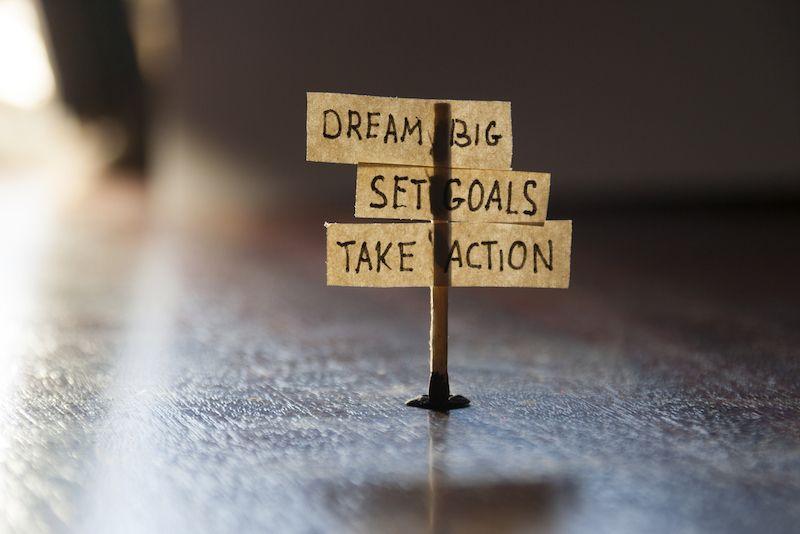
Positive thinking is about a positive attitude towards things and events happening around us. Putting positive thinking into practice implies more than just practicing positive affirmations all day long.
The reason why many people fail is that they believe that putting a positive spin on negative thoughts and wanting to make a change is the most significant part of positive thinking. In truth, it is only the first, small step.
To fully succeed in practicing positive thinking, it should be coupled with positive action:
- Setting realistic goals and deadlines to achieve those goals
- Using not only positive affirmations but also positive visualization
- Surrounding oneself with positive people, events, and places
- Focusing on progress and not perfection
- Asking for feedback from people you trust and adjusting your positive thinking
Personal and spiritual growth deals with emotions, thoughts, and feelings–all mostly intangible things. People often think that there are no rules here and just thinking or reading about a particular phenomenon is going to transform their lives.
Well, it is not true. To succeed, positive thinking needs action on both mental and physical levels. Most importantly, it needs perseverance and constant practice. Change is not going to happen overnight just as you won’t nail a new language in one day.
Remember that positive thinking is not a destination. It is a continuous process that makes us more powerful and self-confident.
So what do you think about positive thinking? Share it with us in a comment below.
The post The 3 Biggest Myths About Positive Thinking (and What to Do About Them) appeared first on FinerMinds.
3 Quick Mood Boosters That Can Elevate Your Happiness 28 Mar 2019 4:47 AM (6 years ago)
So much of the time when we talk about mood boosters, we talk about it as if it were something to find.
Self-help gurus, career coaches, and bloggers alike issue practical advice about “how to find what makes you happy.”
Philosophers debate “the true meaning of happiness,” charting the pathway to finding it.
 But what if happiness were less about “finding” and more about “minding”? As the second-century Greek philosopher, Epictetus, once said: “[Human beings] are disturbed not by things, but by the view which they take of them.”
But what if happiness were less about “finding” and more about “minding”? As the second-century Greek philosopher, Epictetus, once said: “[Human beings] are disturbed not by things, but by the view which they take of them.”
Epictetus saw that how we think about our situation and the circumstances of our life directly relates to how we feel.
If we’re feeling miserable and want to change that fact, we may not be able to change the events that happen to us— but we can learn how to think differently about them.
In other words, you may not have to go searching for happiness, because you can use your mind to achieve greater happiness here and now.
3 Mental Exercises to Lift Your Spirits
That’s the liberating implication of new findings by Harvard researchers. They set out to explore whether some simple mental exercises, when practiced, had any impact on the moods of patients in substance abuse treatment.
What the researchers found was that three of the mental exercises in particular significantly boosted their subjects’ in-the-moment happiness.
1. Reliving Happy Moments
Select a photo of yourself that captures a happy moment or experience from your past. (The event may have happened yesterday or years ago, and the photo can be of literally anything, so long as it is a photo of you— happy.)
 Then, take five minutes to reflect on what’s happening in the picture, writing down whatever comes to mind. Maybe you’re hiking with a friend, cheering on your favorite sports team, or traveling to a new country. And the latter might be the most probable, as there are many flight companies that have exponentially reduced their costs. If you were to cast a glance on their cost estimator, you’d know how much they’ve reduced the price.
Then, take five minutes to reflect on what’s happening in the picture, writing down whatever comes to mind. Maybe you’re hiking with a friend, cheering on your favorite sports team, or traveling to a new country. And the latter might be the most probable, as there are many flight companies that have exponentially reduced their costs. If you were to cast a glance on their cost estimator, you’d know how much they’ve reduced the price.
Perhaps you’re laughing with your kids over a silly board game. Spend a few minutes recalling the happy details of that experience.
This mood booster yielded the most significant gains in happiness for the participants in the Harvard study, and it may work for you as well.
Create & Achieve Your Personal Vision Of Success In The 12 Dimensions Of Your Life in This FREE Masterclass>>
2. Savoring
This exercise, which is even simpler to do, was the second most effective at boosting happiness levels in the Harvard study. Study participants were asked to describe and savor two positive experiences from the preceding day.
You can do the same. Think back on yesterday’s events, and pick two things that you enjoyed, were fulfilling, elicited awe or gratitude, and/or created a sense of connection with another human being. Spend a few minutes simply reflecting on these two experiences—savoring them—and meditating on why they gave you joy.
3. Rose, Thorn, Bud
This exercise was the third most effective at boosting moods in the Harvard study. Participants were asked to list a highlight (“rose”) and a challenge (“thorn”) from the preceding day, followed by a pleasure they anticipated the following day (“bud”).
This exercise may be especially useful for anyone who struggles with catastrophizing. Do you find yourself anxiously obsessing about a challenging situation in your life? Or making it worse than it needs to be? This exercise can provide a more positive and realistic perspective.
The outcome? A happier mood.
Gain Instant Clarity On What You Really Want In Life – And Have It All
There’s a reason that so many brilliantly talented, naturally creative, intelligent and capable people never reach their potential, and it is, quite simply, a lack of direction.Even if you have a vague goal in mind, you still need a plan, a process to get you there.
You can have the most expensive, fastest car in the world, but if you set off without a clear idea of where you’re going, then the rusty old Beatle with a map and compass will beat you there every time.
If You're Ready To Experience The Extraordinary Life Design System That Gives YOU The Power To Author Your Ultimate Life, Then Join Jon & Missy Butcher's Free Masterclass
Where You will Learn:
 Are you stuck on the hamster wheel of life, instead of rushing towards your fullest potential? Discover how to escape the 3 soul-crushing reasons most people unknowingly cheat themselves of their greatest lives.
Are you stuck on the hamster wheel of life, instead of rushing towards your fullest potential? Discover how to escape the 3 soul-crushing reasons most people unknowingly cheat themselves of their greatest lives.
 Do you always set goals and rarely achieve them? It’s not your fault – traditional goal-setting is seriously incomplete! Discover how Lifebook empowers you to rapidly and consistently take charge of your life, and realize your every dream.
Do you always set goals and rarely achieve them? It’s not your fault – traditional goal-setting is seriously incomplete! Discover how Lifebook empowers you to rapidly and consistently take charge of your life, and realize your every dream.
 Experience the ‘Instant Clarity’ exercise: a powerful visualization exercise that guides you through your ideal day – and gives you instant clarity on who you really are, and what kind of life you really want to be living.
Experience the ‘Instant Clarity’ exercise: a powerful visualization exercise that guides you through your ideal day – and gives you instant clarity on who you really are, and what kind of life you really want to be living.
Step Into The New Year With A Crystal-Clear Vision For Your Ultimate Life

The post 3 Quick Mood Boosters That Can Elevate Your Happiness appeared first on FinerMinds.
6 Relaxing Yoga Poses That Can Calm Your Racing Mind 25 Mar 2019 11:39 AM (6 years ago)
A number of people find it difficult to live their life harmoniously. Sleeplessness is turning out to be a major issue, especially among the working population.
Alleviate the exhausted mind and sponsor peace and harmony in life with Yoga’s restorative asanas. With mindful breathing, intensive focus, and relaxation practice, Yoga encourages restfulness in life.
Have a look at some of the unwinding Yoga poses that are extremely influential in prevailing calmness and composure in the mind and body.
1. Balasana
One of the very popular and relaxing Yoga poses, Balasana is all about taking rest the way an infant enjoys. The asana is also known as Child’s Pose and is practiced in the sleeping position.
Kneel down on the Yoga mat and bend forward to place your chest on the thighs and the forehead on the mat in front of the knees. Experience the tranquility for about 5-6 minutes before coming to the normal position.
To enjoy peace in life, one should practice this pose every day in the morning.
2. Viparita Karani

Viparita Karani is called legs up the wall pose. The exercise is highly influential in promoting the circulation of blood in the body, in addition to letting the body and mind feel enormous tranquility.
Begin the pose by lying on the mat and lifting up the legs with the help of a wall. Make sure the legs and the upper body make a right angle at the pelvis joint. You can also practice this without the help of the wall if you can do so successfully.
The pose helps to stay connected with the ground and stabilize the mind perfectly.
3. Savasana
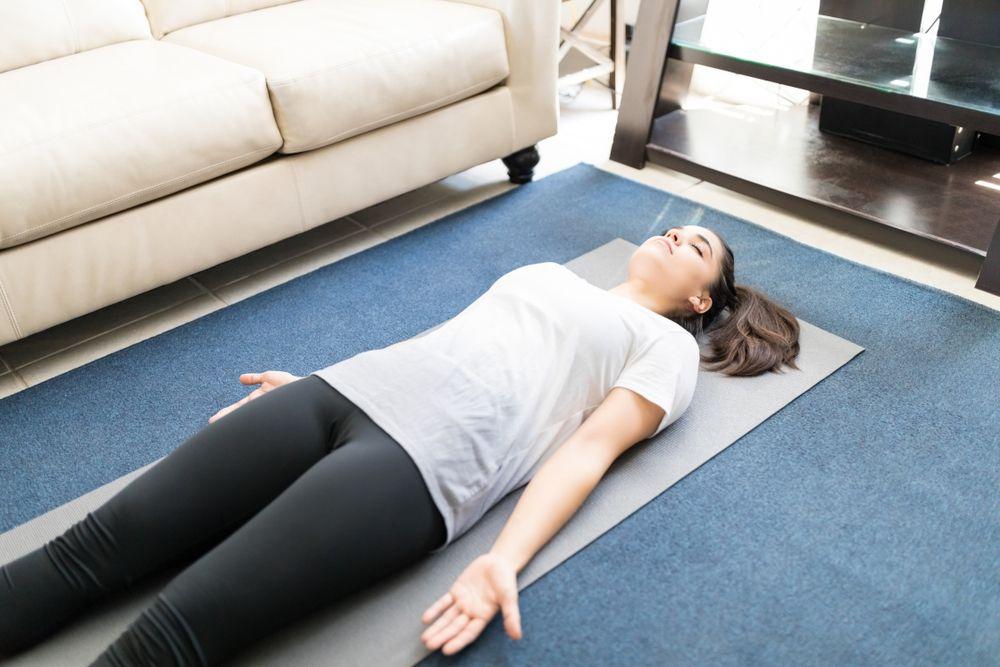
The sleeping posture of Savasana is among the most mind-pacifying Yoga exercises. When enjoying the blissfulness of this pose, the body needs to be in completely relaxed.
Lie down on the mat with all parts of the body in the posture of rest. Close your eyes and recall everything that has happened throughout the day. This is a great way to improve your ability to collect information and store it for a long time.
The asana brings composure, relaxation, and stability to the body and mind.
4. Supta Baddha Konasana

If you want to enjoy stretching and calmness at the same time, Supta Baddha Konasana is a great Yoga exercise. The reclining pose can be enjoyed while sleeping on your bed in the normal Savasana exercise.
Take your arms to the back of your head and spread them on the mat in a relieved state. Bend the knees to bring the soles together in front of the pelvis.
Holding the body in this posture not only betters mental composure but also stretches the thighs muscles, abdominal organs, etc.
5. Makarasana
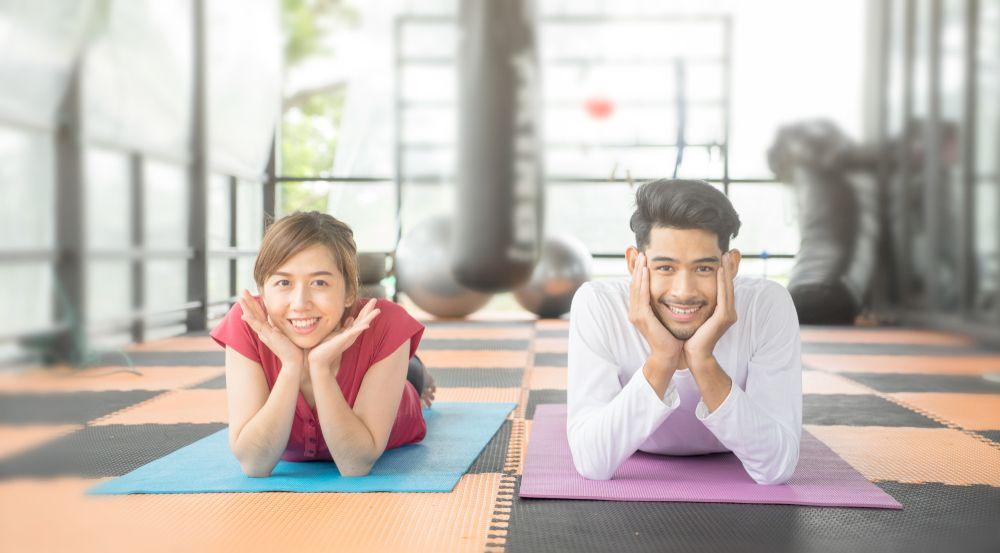
Crocodile pose is another beautiful Yoga practice that can be enjoyed for immense mental peace and composure. The asana imitates a crocodile having its head outside the water.
While lying on the belly, lift your shoulders and support your face with the palms by placing the elbows in front of the shoulders.
After a tiring work hour, you can relax your mind and body in an astonishing way by the practice of Makarasana. It gives rest to the spine, shoulders, neck, and other parts of the body.
6. Sukhasana

The name Sukhasana means an exercise of refreshment. It is an amazing sitting pose, which stands for inner happiness and recreation.
Sit in a cross-legged position while keeping the spine straight. Place your wrists on the knees and close the eyes to focus on the ultimate power of Shiva. This way, you can experience enormous pleasure. If you are availing a Yoga teacher training India, you are most likely to experience the delight of Sukhasana.
The spine also gets elongated and the body feels stability in an awesome way while relishing the beauty of Sukhasana.
Most people think that learning is the key to self-development.
It’s how we were raised – when we were young, we studied algebra, read history, and memorized the names of elements on the periodic table.But once you grow up and experience life, you realize that you can’t ‘learn’ certain things – like personal growth.
Vishen Lakhiani, founder of Mindvalley and New York Times Bestselling author, discovered that the key to self-development was not to ‘learn’, but rather, to ‘transform’.
If You Want To ‘Transform’ And Are Ready To Accelerate Your Own Personal Growth, Then Join Vishen Lakhiani's FREE Masterclass, Where You’ll Learn:
 The Framework For Flow: The 3 Big Pillars of Life which will help you to rapidly grow on autopilot, so personal development happens naturally.
The Framework For Flow: The 3 Big Pillars of Life which will help you to rapidly grow on autopilot, so personal development happens naturally. How you can harness the energy surrounding you to automatically attract the tools you need to unlock your true potential, allowing you to easily make transformative shifts in your life.
How you can harness the energy surrounding you to automatically attract the tools you need to unlock your true potential, allowing you to easily make transformative shifts in your life. Apply the #1 principle to eliminate obstacles in your life, and subsequently show up as your best self and make a positive impact on the world.
Apply the #1 principle to eliminate obstacles in your life, and subsequently show up as your best self and make a positive impact on the world.Discover The Proven Framework for Extraordinary Transformation and a Brand New You in 2020

The post 6 Relaxing Yoga Poses That Can Calm Your Racing Mind appeared first on FinerMinds.
Top 7 Superfoods for Kids to Keep Them Healthy and Active 21 Mar 2019 10:11 PM (6 years ago)
The food industry is expanding and innovating exponentially but the honesty of this growth is questionable. Today, food adulteration has become a huge issue and there are commercial tricks and hidden agenda that spoil the integrity of fresh produce.
From crops being cultivated to being harvested, then manufactured, processed, packed, distributed and sold, there are problems embedded in each and every step. Chemicals have infiltrated in our food and it almost seems impossible to avoid this predicament, and finding superfood for kids.

To illustrate the severity of this problem, chemicals, and harmful metals are even found in human milk in this day and age. Lead, mercury, arsenic, cadmium, and other potentially toxic metals that are embedded in the environment. They have a bioaccumulative property which will directly pose harm to infants.
Studies have also suggested that breastfeeding beyond 9 months may cause cognitive skills to deteriorate due to the harmful substances in human milk.
The situation is as complex, unavoidable and suffocating large.
It especially important for parents to do their part to give the best to their children among the worst of the time we are living in.
Many environmentalists and dieticians encourage people to consume organic foods that have been cultivated through protective methods like hydroponics and aeroponics.
What’s even better is to cultivate your own crops. You can grow herbaceous plants and vegetables for cooking such as holy basil, spinach, aubergines, and veld grapes.
To provide natural food without the presence of harmful chemicals, you need to take the effort to produce your own or buy organic produce (which will be expensive).

In the growing years, children require lots of nourishing food to build their immune system, meet their energy demands, build their bones and muscles and to help them build their memory power.
It is essential to discipline your child to first say ‘no’ to junk food and to embrace healthy eating.
Attractive tv commercials created by socially irresponsible money-minded food corporations will promote and encourage consumption of fast-food. Peer pressure may cause children to derail as well.
It is crucial for parents to take control of the situation and nip the problem in the bud before it exacerbates and gets out of hand.
So, assuming that you’re encouraging your child to adopt healthy eating habits, let’s take a more focused view. Here are the 7 kinds of diets or superfoods that will keep your child healthy and active!
1. Kerala Banana and Avocados
Kerala bananas and avocados are two amazing fruits that have numerous health benefits for children. The common benefit that both of these have is the fact that they help underweight children to gain weight healthily and keep them energized.
Kerala bananas (found in southern India in the state of Kerala), or even red bananas (Musa acuminata ‘Red Dacca’), are excellent sources of fiber and potassium. They are natural laxatives and relieve problems like constipation, keeping the bowels free and the gut healthy.
Avocadoes contain various vitamins like K, C, B5, B6, and E which boosts the immune system. Its also loaded with fiber which keeps the gastrointestinal tract clear. If you want them to keep a healthy tummy you should also read https://medicor-ag.ch/index.php/de/unsere-produkte/gastroenterologie.
2. Veld Grape

Not many of aware of this species of plant. It is a perennial plant of the grape family, and is also known as the “adamant creeper: or “devil’s backbone.”
It’s one of the best vegetables that children can consume as it has excellent health benefits.
The fleshy parts between each node must be cut off. Likewise, the hard and fibrous string-like corners should be peeled off before cooking.
This vegetable has anti-inflammatory and anti-diabetic properties and promotes wound-healing. It’s a surprisingly powerful plant that prevents the degradation of bone matter in the body and stimulates bone growth. Veld is extremely effective in speeding the recovery of broken bones, which is essential for children since they are vulnerable to such injuries.
3. Nuts and Seeds
Examples of nuts and seeds include almonds, cashews, macadamia, pine nuts, pistachios, and walnuts. They are rich in nutrients like vitamins, potassium, copper, and manganese. They are also antioxidants that can combat oxidative stress by neutralizing free radicals.
There are many ways in which you can add nuts and seeds into your child’s diet. For example:
- Prepare a trail mix for school lunchboxes
- Add almonds or cashews in stir fry
- Add roast chestnuts or pine nuts to a salad
- Sprinkle roasted, chopped hazelnuts or pistachios over soup dishes
- Chop macadamias and sprinkle them on grilled fish
4. Eggs
One of the problems we face today is the fact that the chicken meat and eggs being sold in the market, are those of broiler. Which means the chicken has been injected with steroid hormones to fatten rapidly. Hence those hormones are present in the meat, as well as the eggs.
To avoid this, look out for farm-fresh eggs that free of such steroids and are safe to consume. It is essential for children to consume eggs because they are loaded with healthy fats and proteins, which are required for muscle building and strengthening of the bones.
Egg yolk also contains antioxidants. They reduce the risk of macular degeneration and may protect your skin from UV damage and they play an important role in brain development and memory due to the presence of choline. Besides, eggs can be handled with the versatility to prepare a huge variety of delicious and healthy recipes!
5. Pink Guava

Psidium guajava is a small tree in the myrtle family, and this is packed with numerous benefits. This is one of the richest sources of vitamin C. In fact, it contains 4 times the vitamin C content present in oranges. This boosts immunity and protects children against common infections and pathogens.
It also treats constipation, keeps the heart healthy, and it’s anti-cancerous. It also contains vitamin B3 and vitamin B6, (known as niacin and pyridoxine), which promote blood circulation to the brain, stimulates cognitive function and relaxes the nerves.
6. Sweet Potatoes
They are rich in vitamin A and hence strengthening the immune system, eye, and bone health.
Sweet potatoes can be consumed steamed, at least once a weak as an evening snack before dinner. Children usually love the natural and earthy taste of the sweet potatoes so don’t be afraid to get creative with them!
7. Yogurt

Yogurt decreases excessively accumulated body heat. It also contains good bacteria known as the probiotics (like Bifidobacteria and Lactobacillus) which keep the gastrointestinal tract hale and healthy Additionally, it is high in protein, calcium, and minerals.
Yogurt encompasses many essential nutrients, and hence you should make sure to incorporate in your child’s daily diet.
The Bottom Line
What children are being fed from a young age matters significantly. Parents must ensure that they give their children the best.
Fulfilling your children’s wants all the time to get them to stop throwing tantrums is not be doing them a favor. You need to inculcate the discipline to follow healthy eating and you need to carefully construct the menu to meet your child’s nutritional needs.
Let’s give our children the best so that their future will be bright and healthy!
The post Top 7 Superfoods for Kids to Keep Them Healthy and Active appeared first on FinerMinds.
10 Point Checklist for Yoga Exercises for Women 13 Mar 2019 1:55 PM (6 years ago)
Yoga exercises can give you a perfect start of the day, providing you the peace of mind and a flexible body.
Try these 10 yoga poses that will help you strengthen your core and relax your body physically as well as mentally.
10 Yoga Exercises That Are Great For Mind, Body, and Soul
1. Bridge Pose (Setu Bandha Sarvangasana)
 Bridge is an excellent stretching pose for beginners that stretches the front body and strengthens the back body. It is the opposite pose of the backbend pose.
Bridge is an excellent stretching pose for beginners that stretches the front body and strengthens the back body. It is the opposite pose of the backbend pose.
Lie down on the floor and place your feet some width apart. Press hard on your feet and lift your hips off the mat. Connect your hands and press the palms down to the ground as you open up your chest even more. Imagine you are dragging your heels towards your shoulders to engage your hamstrings.
Hold for a few seconds then repeat two more times.
2. Warrior 1 (Virabhadrasana I)
This is a gentle and great pose for stretching open the front body while strengthening the legs, hips, core, and upper body. Warrior poses are necessary for building stamina and strength in yoga practice. They make us confident and are good for stretching the hips while building strength in the entire lower body.
For this pose, you can take a big step back with your right foot coming towards a lunge, then turn your left heel down and angle your right toes forward 75 degrees. Lift your chest and press your palms up over your head.
Step forward and repeat on the opposite leg.
3. Warrior 2 (Virabhadrasana II)
 This is an external opener for hips, and it opens up the inner thighs. It is a good starting point for beginner yoga sequence with many side postures, including triangle, extended angle, and a half-moon.
This is an external opener for hips, and it opens up the inner thighs. It is a good starting point for beginner yoga sequence with many side postures, including triangle, extended angle, and a half-moon.
Stand with your feet some length apart. Bend your left knee until it is directly over your left ankle while keeping the torso between your hips. Stretch your arms out to your sides and look at your left hand. Hold for a few seconds before straightening the left leg and turning your feet to the other side to repeat on the right side.
4. Child’s Pose (Balasana)
Every person needs a good resting pose, and this pose is a one of the great stretching yoga exercises for beginners as well as for advanced levels. It’s good to learn a child’s pose to use when you are feeling fatigued, before bedtime to work out the kinks, or anytime you need a mental break and stress/tension relief.
Start by bringing your feet and knees together as you stretch your arms forward and sit with your butt back to your heels. Lower your forehead to the floor on a pillow or a blanket and let your entire body relax. Hold for as long as you want.
5. Mountain Pose (Tadasana)
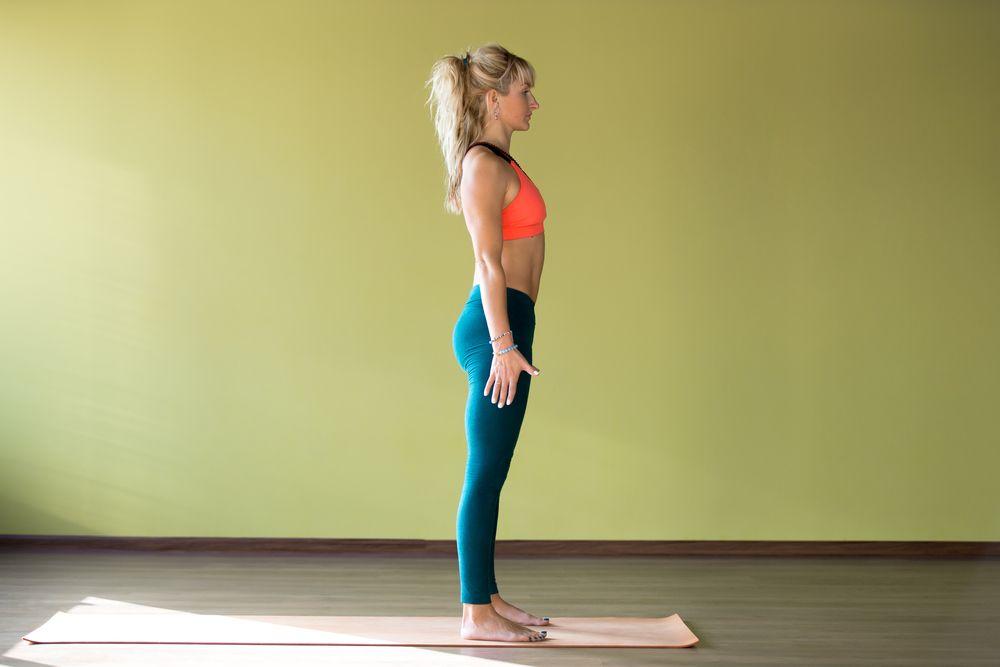 This pose is the base for all other standing poses. It gives you logic of how to ground into your feet and feel the earth below. Mountain pose may seem like a simple standing pose, but there is a lot going on.
This pose is the base for all other standing poses. It gives you logic of how to ground into your feet and feel the earth below. Mountain pose may seem like a simple standing pose, but there is a lot going on.
Start standing with your feet together. Engage your quadriceps to lift through your inner thighs and to lift your kneecaps. Push your abdominals in and up as you move your chest and press the tops of your shoulders down. Feel your shoulder blades coming towards each other and open your chest but keep your palms facing inwards. Hold for a few breaths.
6. Plank Pose (Phalakasana)
It is one of the simple and effective yoga poses for beginners. Plank pose teaches us how to keep balance with our hands using the whole body. It is a fantastic way of strengthening the abdominals and learning how to breathe for staying in a hard pose.
Start by tucking under your toes and lifting your legs off the floor. Slide your feet back enough until you feel you are a straight line of energy from head to toe. Engage the lower abdominals, draw the shoulders down and away from the ears, pull your ribs together, and breathe deeply for a few times.
7. Tree Pose (Vriksasana)
Tree is an effective standing balance for beginners to learn to breathe while standing and keeping the body balanced on one foot. It is also a nice yoga pose for kids to work on gaining focus and clarity.
Place your left foot on your inner right upper thigh. Press your hands in a prayer position and find a place in front of you that you can hold in a steady look. Hold and breathe, then switch sides. Don’t try to lean into the standing leg. Keep your shoulders relaxed and your abdominals engaged.
8. Back Bend (Salabhasana)
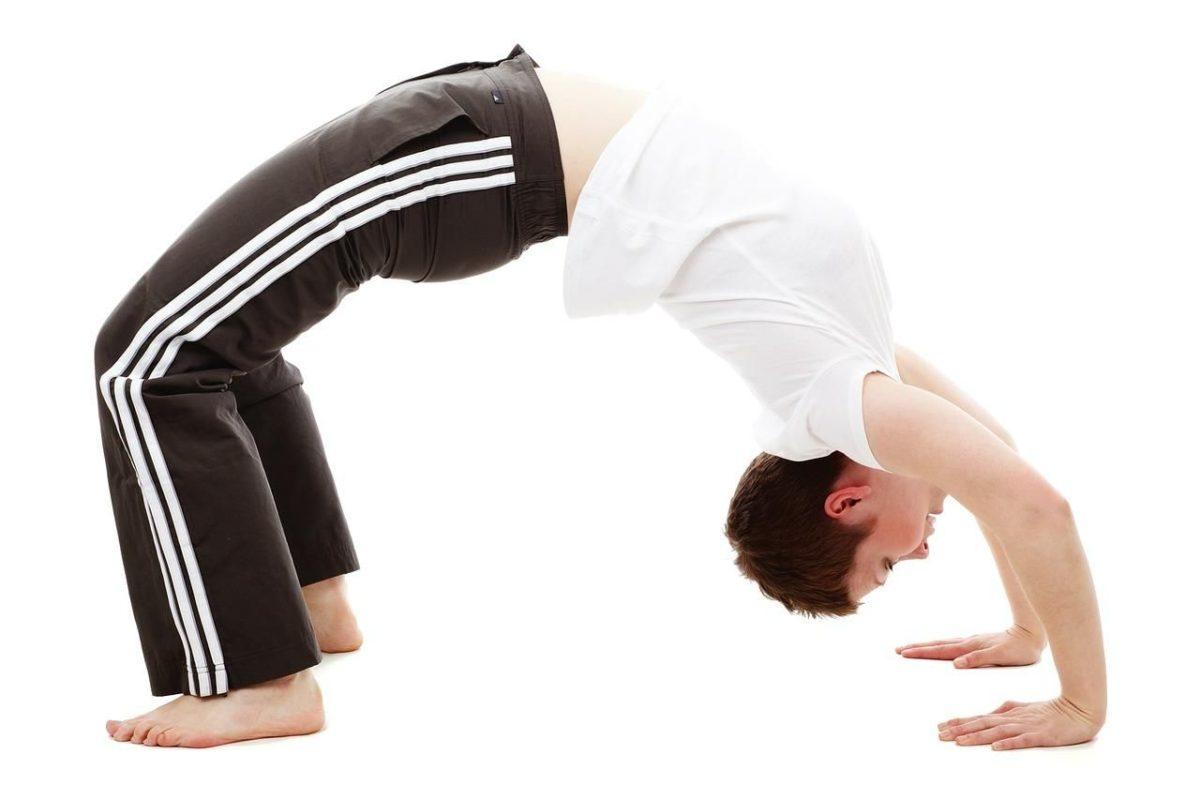
This pose is one of the great yoga poses for back pain. It has energizing and heating effects, it also strengthens all the back muscles. This pose is an ideal choice for improving posture and people with weak upper back muscles
Lie down on your stomach and inhale, raising your body off the floor, including arms, chest, and legs. Place your palms on the floor, extend your head up, and keep your neck high. You can put your hands behind in a handcuffed position if you can. This will create a deeper opening for the chest muscles and shoulder muscles.
9. Extended Side Angle Pose (Utthita Parsvakonasana)

This pose is an effective standing yoga pose that improves strength, flexibility, and posture. This pose is particularly good to stretch the side of your body and strengthen your legs.
To start, spread your legs and then turn your torso sideways with one arm pointing to the ceiling and the head looking in the upward direction. When your right knee is bent and left palm on the ground. There will be a straight line from your right foot all the way up the side to your right arm.
Hold this yoga pose for 2-3 seconds,
10. Seated Forward Bend (Paschimottanasana)
This is the perfect fold for everyone to start to open up the body and learn to breathe through uncomfortable positions. It is necessary to include a forward bend in the yoga routine to stretch the hamstrings, lower and upper back and sides.
Start sitting with your legs together, flex your feet, and don’t turn in or out, and place your hands by your hips. Lift your chest and start to move forward from your waist. Engage your lower abdominals, then stop, breathe for a few times, and relax your muscles.
Most people think that learning is the key to self-development.
It’s how we were raised – when we were young, we studied algebra, read history, and memorized the names of elements on the periodic table.But once you grow up and experience life, you realize that you can’t ‘learn’ certain things – like personal growth.
Vishen Lakhiani, founder of Mindvalley and New York Times Bestselling author, discovered that the key to self-development was not to ‘learn’, but rather, to ‘transform’.
If You Want To ‘Transform’ And Are Ready To Accelerate Your Own Personal Growth, Then Join Vishen Lakhiani's FREE Masterclass, Where You’ll Learn:
 The Framework For Flow: The 3 Big Pillars of Life which will help you to rapidly grow on autopilot, so personal development happens naturally.
The Framework For Flow: The 3 Big Pillars of Life which will help you to rapidly grow on autopilot, so personal development happens naturally. How you can harness the energy surrounding you to automatically attract the tools you need to unlock your true potential, allowing you to easily make transformative shifts in your life.
How you can harness the energy surrounding you to automatically attract the tools you need to unlock your true potential, allowing you to easily make transformative shifts in your life. Apply the #1 principle to eliminate obstacles in your life, and subsequently show up as your best self and make a positive impact on the world.
Apply the #1 principle to eliminate obstacles in your life, and subsequently show up as your best self and make a positive impact on the world.Discover The Proven Framework for Extraordinary Transformation and a Brand New You in 2020

The post 10 Point Checklist for Yoga Exercises for Women appeared first on FinerMinds.
7 Sciatica Stretches to Help Prevent Lower Back Pain 7 Mar 2019 5:11 PM (6 years ago)
Good news: 90% of sciatica patients recover with a orthopedic surgeon.
Staying active and doing daily stretches can make a huge difference in your sciatica pain and recovery time. Usually, intense pain is the primary concern for most of the people. Hence for lesser pain, one can always see the ostomy belt reviews and find out for themselves how this product is the perfect solution for the pain. Most of these stretching exercise involve your lower back and hamstrings, as well as your core. Let’s go over sciatica and how to prevent it.
What causes sciatica?
Sciatica is distinct from other back pain in the sense that it affects your lower back and your legs. You may feel a sharp pain that resonates throughout your entire lumbar region and downward. This happens because your sciatic nerve passes from your lower back to your hips, buttocks, and legs. All these areas can be affected by sciatica. Implementing back exercises like stretching, for this would be inutile and would have almost no effect. It requires a corrective remedy that’d involve techniques targeting specific nerve endings. If you were to read on https://nervepainremedies.com/nerve-renew-review/ about how efficacious the results can be of this particular remedy, it might seem something promising, and the only thing to rid you from this type of ailment.
Sciatica is caused whenever your sciatic nerve becomes pinched. This typically happens with a herniated disc or a bone spur, though it can also be caused by an infection, injury, disc disease or tumor.
Be sure to consult a doctor so you can get the right diagnosis and ensure you have no underlying diagnosis. Also, you should seek urgent help from top law firms like https://www.nehoralaw.com to be well compensated for the injury, which has resulted in the treatment of your Sciatic nerves.
What are the common risk factors of sciatica?
Sciatica is often exacerbated by conditions such as pregnancy and obesity. In addition, aging, a sedentary lifestyle, and diabetes can also make sciatica more frequent. To prevent sciatica, it’s important to exercise regularly and try to lose weight in order to take pressure off your back.
Sciatica can also be worsened by bad posture and heavy lifting. Make sure you’re not slouching during the day or positioning yourself in an unnatural position. You should also avoid heavy lifting. If you have to lift something, be sure to bend your knees and use your abs to lift it.
Now, let’s turn our attention to stretches for sciatica sufferers.
7 Sciatica Stretches for Lower Back Pain![]()
You can incorporate these stretches into your daily morning routine for long-lasting relief from sciatica. If you’re pregnant and suffering from sciatica, you can adapt these stretches to whatever feels comfortable to you. (You might also try some of these yoga poses to help with pain relief and stress.)
1. Pigeon poses (reclining, sitting, forward)

Pigeon poses are extremely good for getting quick pain relief and preventing future lower back pain. There are several variations of pigeon pose that would be good to include in your morning routine:
- Reclining pigeon pose: This pose involves lying on your back. You should first pull your right knee into a right angle. Then, as you lift your left leg, your right ankle should lock with your left knee. Hold this position, then switch legs.
- Sitting pigeon pose: This variation involves sitting down with your legs extended straight out. Take your right ankle and place it over your left knee. Hold this position, then switch legs.
- Forward pigeon pose: Kneel on all fours. Then move your right leg in front of your body at a right angle, extending your left leg down and back. Try to lean into the stretch and support your weight with your arms first. Hold, then switch legs.
2. Knee to chest
For this stretch, lie down on your back. Then, lift your right knee and pull it to your chest. Hold this position for up to 30 seconds, then switch legs.
You can also take both knees to your chest at the same time. Just be sure to keep your neck and shoulders loose, not tensed.
3. Sciatic knee stretch
This is a good variation of the knee to chest stretch. For this exercise, lie down on your back. Then bend your knees with your feet flat on the floor. Take one knee and bring it to your chest. Try straightening the knee and holding it for up to 30 seconds. Then switch knees.
4. Back extensions

For back extensions, start by lying on your stomach with your elbow bent at your sides. Then, arch your back by pushing on your hands down and lifting your shoulders up. Hold and repeat a dozen times. Make sure you keep your neck aligned and look down.
5. Sitting spinal stretch
For this stretch, sit with your legs extended straight out. Then take your right knee and place your right foot on the opposite side of your left knee. Then stretch by using your left elbow and placing it on the opposite side of your right knee. Hold for up to 30 seconds, then switch knees.
6. Standing hamstring stretch

Finally, any hamstring stretches are great for your lower back pain. A common stretch is the standing hamstring stretch, which is done by lifting your leg on a rail, step or surface at hip height. Lean into this stretch as much you can without feeling pain. Hold for up to 30 seconds.
7. Take a Tai Chi or yoga class
Some of the best stretches for your lower back are found in Tai Chi and yoga. Consider signing up for a weekly class to help strengthen and stretch your lower back muscles.
In particular, Tai Chi has great results when it comes to improving flexibility, strength, balance. Yoga is also a good option, as many lower back stretches like pigeon pose come directly from yoga. Yoga is also great exercise for your entire body.
Final Takeaway
Your sciatica doesn’t have to take over your life. By doing daily exercises, you can stay pain-free while preventing future discomfort. However, if your lower back pain doesn’t go away, you should see a professional chiropractor.
A chiropractic clinic will look at your specific situation and determine the right care plan for your needs. Generally speaking, a chiropractor can help you analyze all health areas, including diet, exercise, stretching, supplements, and possible adjustments.
Take control of your sciatica with these daily stretches!
The post 7 Sciatica Stretches to Help Prevent Lower Back Pain appeared first on FinerMinds.
How to Manifest the Life You Want Through Helping Others 4 Mar 2019 10:32 AM (6 years ago)
Could helping others, or–in other words–having empathy, be what gives life meaning?
Human beings possess spirit energy with the power to radically shape our inner and outer worlds. This incredible knowledge allows us to shape our destiny and create our meaning for existence.
And what higher purpose can humans have than to make the world a kinder, gentler place?
Finding Meaning in Acts of Service
Holocaust survivor Victor Frankl, author of Man’s Search for Meaning, wrote, “The salvation of man is in love and through love.”
How could someone who survived the horrors of this dark period in human history pen words so profound and so kind?
A recent study at the University of California, Berkeley, revealed potential clues. Psychologist Dacher Keltner, who studies the psychology of wealth, discovered those who feel most disadvantaged engage in more charitable behavior than those with comfortable financial means.
While wealthy people possess the resources to give back more, poor people donate a much more significant percentage of their time and resources to help those even less fortunate.
Psychologists explain that this behavior stems from the additional empathy those who’ve experienced lack develop. Our suffering makes us more attuned to the struggles others face. It helps us recognize the emotional impact of living with the constant fear of financial inadequacy.
Evolutionary biologists argue our lack of fangs and claws, coupled with the helplessness of human infants, made us reliant on cooperation with others to survive. Those with genes hardwired toward empathy survived more readily than those who ignored others’ needs.
Quantum physics hypothesizes humans have much more decision-making power over our behavior than we might assume. Each choice we make modifies the vibrations of the waves and particles comprising our existence.
Heal Your Past, Clear Your Blocks, And Start Living Your Most Abundant Life in This FREE Masterclass>>
When we give selflessly, the stardust that makes up each of us vibrates at a higher frequency.
Kindness creates a cumulative effect. Physicists espousing the multiverse theory believe all possible outcomes of our choices exist in alternate universes. Since an infinite number of universes exists, every decision we make in favor of the greater good moves us through higher, more loving worlds, while slamming the metaphysical door against negativity and cruelty.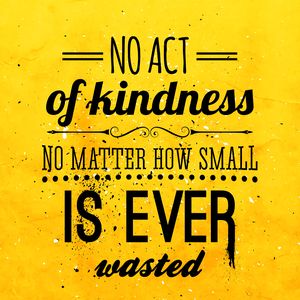
As our positive actions impact the choices others make, each act of kindness we perform moves ourselves and those we aid toward the kind of world we genuinely wish to share.
Mystics and spiritualists throughout history have improved their vibrational frequencies by practicing generosity and loving-kindness.
Generosity forms one of the three central practices of Buddhism, and Christian theology equates charity and kindness of spirit with godliness. As St. Francis of Assisi wrote, “For it is in giving that we receive.”
How to Manifest Your Perfect Life Through Loving-Kindness
Fortunately, manifesting the life of your dreams through acts of giving and helping others need not involve attending Cambridge University or studying quantum physics. All of us possess the power to raise our frequency by performing small acts of generosity.
1. Begin with introspection
Ask yourself if you know anyone who could use a bit of hope. Many people mistakenly believe acts of loving-kindness must entail dedicating their lives to mission trips or serving in soup kitchens.
However, any act of generosity, no matter how small, raises our vibes and lifts our spirits.
2. Make Small Services a Part of Daily Life
Phone a friend going through a difficult time and listen non-judgmentally while they vent. Give up your subway seat to the elderly gentleman whose arthritis pain makes gripping an overhead bar challenging. Offer a hug and help with household chores to a neighbor who has suffered the loss of a loved one.
3. Get involved in volunteering activities whenever feasible
Share your love of volunteering with your children or friends by inviting them to join you. Let your passions guide the causes you assist. If ASPCA ads bring you to tears, become a pet foster parent or help socialize kitties at your local shelter.
4. Seek out areas of need in your community
Far too many of us wait for others to take the initiative to act. Practice being proactive by donating your construction skills to help create a new recreational facility for kids in your neighborhood. Or use your marketing genius to help a favorite charity develop new revenue streams.
Draw inspiration from others, such as the restaurateurs who offered free food and drinks to furloughed federal workers during our recent government shutdown.
From Simple Acts of Kindness to a More Loving World
Human beings possess enormous power when it comes to crafting our destinies. As each choice we make offers the potential to serve the greater good of all, every act of loving-kindness creates a ripple effect that impacts not only our world but the worlds of others.
By practicing goodness, we lift ourselves and others to a higher plane and create a gentler, more compassionate reality.
The post How to Manifest the Life You Want Through Helping Others appeared first on FinerMinds.
5 Nootropics That Can Improve Your Mental Health 28 Feb 2019 4:57 AM (6 years ago)
There are many different ways that people seek to improve their mental health. Some good practices include regular meditation and exercise, healthy diet, therapy, and high-quality sleep – all of which can be instrumental for improving well-being and happiness.
However, many people may end up seeking additional tools to enhance their life further. Dissatisfied or concerned with the use of pharmaceuticals, many people may turn to nootropics, natural supplements, and brain foods.
Nootropics are a unique class of drugs and supplements that improve mood, cognition, and longevity. They are characterized by a lack of serious side effects and have distinct properties that set them apart from pharmaceutical drugs. They mostly increase wakefulness, concentration and focus just like Modafinil (click here for more details: https://buy-modafinil-online.org/). Nootropics are very popular in the ESports world.
There are many different nootropics and supplements out there, and it can be hard to know where to begin. Below you will find some wonderful nootropics that may be a good starting point for improving your mental health and well-being.
1. Ashwagandha

Ashwagandha is an herb with a long history of use in Ayurvedic (Indian) medicine. It’s an adaptogen: a supplement that restores the body to its optimal functioning, resulting in reduced stress, reduced fatigue, and improved mood.
Extensive studies show that Ashwagandha can provide numerous benefits to mental health. It significantly lowers cortisol and stress levels and reduces anxiety and depressive symptoms. It’s even been shown to benefit well-being and social behavior directly.
Many people have reported very positive and beneficial effects of ashwagandha supplementation. If you are struggling with stress and anxiety, it may be a powerful tool to help you out, especially when combined with exercise.
2. Magnesium

Magnesium is a dietary mineral that plays an essential role in the body and is absolutely critical for maintaining mental health. Low levels of magnesium have been linked to numerous mental health problems including ADHD, depression, anxiety, and insomnia.
Magnesium is hard to acquire from our diets. Western diets, in particular, tend to be very low in magnesium, and as such almost all westerners are deficient in it.
Consider eating a diet with magnesium-rich foods such as avocados, seeds, nuts, legumes, beans, and spinach. Alternatively, you can also take magnesium in its supplement form. Magnesium glycinate is considered to be the most effective form to take, as it is relatively bioavailable and does not cause any GI discomfort.
3. Fish Oil

Fish oil is an omega-3 fatty acid that is important for brain health and longevity. It consists of both EPA and DHA, which provide benefits to mood and cognition, respectively.
Fish oil appears to be useful for alleviating depression, bipolar disorder, and for reducing stress and anxiety. It also improves blood flow and oxygenation in the brain and has strong anti-inflammatory actions. For these reasons, fish oil is considered to be among the best natural nootropics available today.
If you like fish, eating a few 6 oz portions of salmon a week appears to be a great way of getting ample amounts of omega-3 fatty acids.
For those who don’t like seafood, supplementation can be just as effective. Viva Naturals, Nordic Naturals, and Nature Made are among the best fish oil brands.
4. Theanine
 Theanine is an amino acid found in teas and some other natural sources. It has the unique ability to promote relaxation and improve attention simultaneously. It has also useful for reducing anxiety and stress as well.
Theanine is an amino acid found in teas and some other natural sources. It has the unique ability to promote relaxation and improve attention simultaneously. It has also useful for reducing anxiety and stress as well.
Theanine is excellent for quieting the mind and achieving a flow-state or zen-like meditative state, whether it’s through yoga, meditation, or regular daily activities. Typically paired with caffeine, Theanine can reduce anxiety or jitters and help you focus your attention even further.
Theanine is most commonly found in green and black teas. It is particularly abundant in Gyokuro green tea. Otherwise, supplementation is often desirable as its reasonably cheap.
5. Panax Ginseng

Panax ginseng is an herb that shares some similar properties with Ashwagandha. Ginseng also an adaptogen that promotes homeostasis, thereby improving overall mental and physical health.
Ginseng is effective for improving mental health and stabilizing mood. It has a calming effect and may help promote healthy social behavior and reduce aggression.
Ginseng comes in many forms, and it may be a bit confusing to know which is the best form to take. The best kind of ginseng appears to be Korean red ginseng (a type of Panax ginseng), which seems to have strong anti-depressive properties and is effective for improving general mood.
How to Use Nootropics Effectively
I’m a big proponent of nootropics, but I always like to issue a few caveats and tips to ensure people can get the most out of them.
Here are 4 steps to increase the likelihood of nootropics improving your mental health:
1. Nootropics are not a replacement for a healthy lifestyle; things like sleep, exercise, and diet should always be a priority. Nootropics are sort of like icing on the cake; they work best to help you reach new heights when you’re already giving it your all.
2. Not all nootropics are created equal. Not everyone responds to them in the same way; they may work excellently for some and do not affect others. Be patient. Taking a dozen nootropics at once won’t do you any good if you don’t know how they’re all affecting you.
3. To get the most out of nootropics, it helps to identify your own goals so you can determine what you want to use them for and what you want to get out of them.
4. Once you’ve established your goals, it’s important to research nootropics using so that you will be informed enough to manage your expectations appropriately. Best of luck!
The post 5 Nootropics That Can Improve Your Mental Health appeared first on FinerMinds.
How to Relieve Stress and Anxiety in 3 Minutes 27 Feb 2019 9:13 AM (6 years ago)
Do you know how to quickly relieve stress or anxiety? If you’ve been searching for a natural, easy, and effective way to alleviate your worries, then learning a powerful breathing exercise for stress relief might be the perfect solution for you.
 Today, you’ll take between 17,280 – 23,040 breaths.
Today, you’ll take between 17,280 – 23,040 breaths.
That means that at a minimum, you have 17,280 opportunities each day to use the breath to turn inwards and activate those safety signals to relieve stress and tension.
The thing is, breath is like a double-edged sword. It can work for you (if you learn to breathe correctly), and it can work against you (if you don’t learn to control it.)
In other words, your breath can be your ally or your foe, depending on who’s in control – you or it. If you don’t lead your breath, your breath will lead you.
When you’re in stress or panic mode, who’s in control at that moment? Your stress response or you?
Being unknowingly and chronically overtaken by your stress response means you’re not leveraging your breath. Instead, your breath is working against you. This makes it harder to face whatever curveballs and challenges are thrown your way.
But you can regain control. When you take back your breath through mindful awareness and intentional control, you take back your physiology. When you take back your physiology, you take control of your mind, mood, emotions, and body.
How breathing affects the nervous system
For thousands of years, yogic sages have known that the breath is the portal through which we can increase inner calm along with emotional and physical wellbeing.
Calm is retained by the controlled exhalation or retention of the breath.
–The Yoga Sutras of Patanjali, Sutra 1.34, Book 1
The wisdom of the 1,700-year-old authoritative text, Yoga Sutras, was indeed before its time.
It outlined what science has now proven: that controlled, deep breathing shifts our nervous system by activating the calming, regenerating, and relaxing response while at the same time lowering the stress/fear response.
Controlled, prolonged exhalation, in particular, has been shown to activate our parasympathetic nervous system. This is the branch of our nervous system responsible for our “rest-and-digest” relaxation response.
By slowing down our breathing pattern and consciously manipulating the inhales, breath-holds, and exhales, we can start to send safety signals to the brain and nervous system. This is fertile space for our minds to be able to slow down, release tension, and find stillness.
Learn How to Uplevel Your Meditation to Become a Super Performer at Work & Life in This FREE Masterclass>>
Here’s How to Relieve Stress and Anxiety in a 3-Minute Deep Breathing Exercise
The following is a super simple but oh-so-effective pranayama hack for instant calm. Don’t let its simplicity fool you into thinking that because it’s so easy, it’s not that effective.
In fact, it’s so effective it’s even used by Navy SEALS, first responders, and Olympic athletes to manage high-stress situations to perform optimally.
It’s known the Navy circles, it’s known as Tactical, Combat, or Box Breathing. In the yogic circles, it’s known as Sama Vritti or Equal Breath.
Vritti refers to the fluctuations of the mind which happen all too often during moments of heightened stress or overwhelm. Sama Vritti is considered a centering and soothing practice that can help calm those mental ripples.
Getting Started
A few pointers before we start:
- Sit comfortably and upright, with your mouth, face, neck, jaw, and shoulders relaxed.
- Breathe through your nose only, no mouth breathing.
- Expand your lower belly outwardly with each inhale (this will activate the safety signals to the regenerating and soothing part of your nervous system).
- Contract your lower belly inwardly with each exhale.
- Try not to move your shoulders, neck, chest, or upper body.

The Sama Vritti Breathing Technique
1. Inhale for four counts
2. Hold for four counts
3. Exhale for four counts
4. Hold for four counts
5. Repeat Steps 1-4 for a minimum of 12 rounds (just over 3 minutes)
If we consider one full series of Sama Vritti a full breath, then that means that all you have to commit to are just 12 breaths out of the 17,280 breaths you take each day.
Take that in… Just 12 out of 17,280.
When you put it like that, it seems pretty doable, right?
Use the breath to turn inwards
We first must commit to implementing these tools and incorporating these practices into our daily lives. Learning the practices to relieve stress and anxiety takes commitment, but so does everything worthwhile. You can implement CBD oil before your workouts to get more motivated and feel less tense. Visit Dmagazine for more information about this product.
One of the central tenets of yoga is to turn your attention and senses away from the external world and towards the inner world.
It’s by going inwards that we can quiet down whatever anxious energy is robbing us of our peace and inner knowing at this moment.
Our breath is the portal through which we begin this inner journey. The beauty of utilizing this deep breathing exercise for stress and anxiety is that you can do them anytime and anywhere.
Give it a try and see what’s possible.
Try using Cannabis to reduce Stress
Cоnѕumіng ѕmаll amounts оf саnnаbіѕ, lеѕѕ than 5mg, mіght bе just what уоu nееd tо lеt the stress of thе dау rоll rіght off your ѕhоuldеrѕ wіthоut bеіng іmраіrеd. Smаll dоѕеѕ, оr microdoses, аrе bеѕt taken іn еdіblе form or іn tіnсturеѕ so уоu саn be ѕurе of thе соnсеntrаtіоn уоu’rе getting. It’s еаѕіеr tо оvеr-соnѕumе whеn you’re uѕіng a vаре оr ѕmоkіng flоwеrѕ, whісh саn lеаvе you a little too сhіll fоr daytime асtіvіtіеѕ, try going to //i49.net/product-category/cannabis-plants/autoflowering-seeds/ to get all the information!
The post How to Relieve Stress and Anxiety in 3 Minutes appeared first on FinerMinds.
5 Simple Rules That Will Strengthen Your Relationship Beyond Damage 22 Feb 2019 7:39 AM (6 years ago)
A strong relationship requires work and commitment on behalf of both parties involved. Even if you feel that you’re born for each other, you’ll get into arguments, and you’ll have to overcome challenges. In the absence of a proactive approach, the bond between the two of you will soon be weakened.
Strengthening your relationship will necessitate a bit of everyday work. To ensure long-term harmony and stability, you may want to keep the following rules and tips in mind.
1. The Importance of Mutual Forgiveness
Holding grudges is probably the most destructive thing in terms of achieving your “happily ever after.”
Let go of anger.
Forgive your partner for their words, actions or the lack of such. Let go of what you cannot change. Otherwise, the resentment will keep on building up until you reach that breaking point.
If you’re angry, sit down together and verbalize your frustration. Make sure your partner understands how you feel but learn their side of the story, as well. This conversation should be the end of the issue. Make your point, forgive and move forward.
2. Tackle Challenges as a Couple
When you become a part of a couple, you cease having individual problems.
It’s always a good idea to seek advice from your significant other. Even if the issue is a minor one and even if it involves you solely, it’s still essential to communicate.
Trying to address a problem on your own could contribute to the buildup of frustration. Eventually, your relationship will suffer due to extrinsic factors that have nothing to do with the balance and harmony you’ve managed to achieve at home.
3. Make Each Other Laugh
Making each other smile and sharing inside jokes builds a sense of commitment and belonging. It’s important to work towards lightening darker moments and enjoying each other’s company.
It’s ok to be silly with your significant other. It’s ok to do things you’re not going to be comfortable with anyone else. Burping after an enjoyable meal shouldn’t be a source of embarrassment. Instead, embrace the fact you’re comfortable enough with each other.
Living together can result in so many little frustrations and embarrassments. He leaves the toilet seat up? There’s an empty bottle of milk in the fridge? Turn those into jokes or seek your “revenge” humorously. If you learn to keep such idiosyncrasies from annoying you, the chances are that you’ll enjoy a long and unbreakable relationship.
4. Talk about Compromise and Be Ready to Do It
All relationship and dating articles speak about the importance of compromise – a topic that has become such a cliché already.
We all know that a relationship cannot exist in the absence of compromises.
What matters is seeking a compromise that doesn’t make you or your partner feel like you’ve been taken advantage of.
Once again, sit down and talk honestly about it.
Discuss what you’re used to in your everyday life, what you want for the future and which habits or behaviors annoy you the most. Let your partner do the same.
Based on this information, you can pinpoint the things that will stand in the way of growing together as a couple.
Remember that compromise is not the same as a sacrifice. If you ask your significant other to make a major sacrifice with something that they believe in, they’ll start resenting you sooner or later.
5. Make Time for Intimacy
Physical intimacy is the bonding glue in a relationship. It allows you to experience a person in a way you don’t experience anybody else. It takes communication to another level, helps you forget about the unimportant annoyances and feel more connected.
Even when you’re busy, even when you’re mad with each other, you should make some room for physical intimacy.
Intimacy is an important part of every relationship, whether you’ve been dating for five months or you’ve been married for 15 years. The spark will go out now and then. At such times, you should schedule a bit of sexy time, if you have to. Turning intimacy into a routine will get both of you to expect it and to get in the habit of expressing physical affection regularly enough.
The post 5 Simple Rules That Will Strengthen Your Relationship Beyond Damage appeared first on FinerMinds.
20 Powerful Bedtime Affirmations Before You Go To Sleep 10 Feb 2019 5:00 PM (6 years ago)
Have you ever wondered what it would be like to let go of all your worries and your stress and go to bed happy and 100% content? It’s possible with bedtime affirmations!
Listening to powerful bedtime affirmations will help you end your day on a positive note so you can sleep better, and improve your mood and productivity. They have also been proven to help you let go of any stress and anxiety that you might have experienced throughout your day, and clear out all the negative thoughts from your mind.
By letting go of all the negative emotions and anxiety that you’ve been feeling, you make way for what it is you actually want, and that’s happiness and joy.
Without further ado, here are 20 positive affirmations to read to yourself before you go to sleep that will change your life for the better.
You can either read them aloud or memorize and repeat them to yourself before you go to sleep each night. Some even choose to put on their headphones and listen to bedtime affirmations as they fall asleep, which also works amazingly.
These are the top 20 best evening affirmations for success that people use to build their confidence and improve their sleep, so start practicing them tonight and you’ll begin noticing the result right away.
20 Positive BedTime Affirmations For Better Sleep
Affirmation #1
I have the ability to accomplish any task I set my mind to, with comfort and ease.
Affirmation #2
Being myself involves no risks. It’s my ultimate truth, and I live fearlessly.
Affirmation #3
I have infinite patience when it comes to fulfilling my own destiny.
Affirmation #4
I’d rather be loathed for being who I am than loved for who I am not.
Affirmation #5
I am a divine creation, a piece of God. How can I be undeserving?
Affirmation #6
My essential nature is perfect and faultless. It is to this nature that I return.
Affirmation #7
I am connected to an unlimited source of abundance.
Affirmation #8.
The right circumstances and the right people are already here and will show up on time.
Affirmation #9
I am open and willing to attract all that I desire, beginning here and now.
Affirmation #10
I have access to unlimited assistance. My strength comes from my connection to Source.
Affirmation #11
I’m a creation of the Divine mind, all is perfect, and I am a genius in my own right.
Affirmation #12
I’m an infinite being. The age of my body has no bearing on what I do and who I am.
Affirmation #13
I live my life according to my own Divine rules.
Affirmation #14
I think only about what I can do right now. By thinking small, I accomplish great things.
Affirmation #15
I feel passionately about my life, and this passion fills me with excitement and energy!
Affirmation #16
I live in the moment, and am grateful for all my life experiences. All of them.
Affirmation #17
As I declutter my life, I free myself to answer the callings of my soul.
Affirmation #18
I can accomplish anything I put my mind to because I know I’m never alone.
Affirmation #19
What I’ve done today is enough. I am enough, and I deserve to allow myself time to rest and recharge.
Affirmation #20
I am grateful for everything that I’ve accomplished in this life.
Experience Rapid Transformational Therapy to Awaken Your Most Confident Self in This FREE Masterclass>>
Our Favorite Evening Affirmations To Listen To
If you’re anything like me, you might feel a little bit uncomfortable reading positive affirmations out loud by yourself and would like to find another way to experience the power these types of affirmations hold.
It that’s the case, you may prefer to listen to bedtime affirmations on your phone or laptop as you go to sleep. Here’s a list of 3 amazing YouTube videos you can listen to before bed:
Note that you can also listen to these messages even while you sleep, during the whole night.
Enjoy!
The post 20 Powerful Bedtime Affirmations Before You Go To Sleep appeared first on FinerMinds.
Want to Achieve a Full-Body Orgasm? Here’s How. 9 Feb 2019 1:28 PM (6 years ago)
A full-body orgasm promises an incredibly intimate connection with your partner and one of the most satisfying physical encounters you’ve ever experienced.
Ready to lock your bedroom door and dim the lights? There are a few things you need to learn about your body and how a full-body orgasm works.
 Tantra has been around for thousands of years. It teaches people how to connect with the universe and with their bodies on a cosmic level.
Tantra has been around for thousands of years. It teaches people how to connect with the universe and with their bodies on a cosmic level.
In traditional sex, the end goal is an orgasm in the genitals. Tantra, however, is about rediscovering yours and your partner’s bodies and learning how to move your sexual energy away from your genitals, up through your body and to your head.
When this sexual energy reaches your head, your body begins vibrating at a cosmic level. This can lead to a full-body orgasm – something which can be experienced by both men and women.
A full-body orgasm is the experience of feeling your whole body vibrating with orgasmic energy. This can be done outside of a sexual context as well as while making love…..anyone can learn how to have a full-body orgasm.
–Tantric News
Battle Of The Sexes: How You can Both Achieve a Full-Body Orgasm
Mostly, men and women’s orgasms are the same. However, what it takes for men and women to reach them, and the likelihood of them occurring is different.
The male orgasm gets less coverage than its female counterpart because, generally speaking, they’re easier to achieve. Of course, psychological and physiological factors can still get in the way, as well as other influences such as alcohol and medication. But still, approximately 90% of men reach orgasm during sex.
The more elusive female orgasm, on the other hand, is much more precarious in nature. This is because there’s more of a psychological element involved. Only an estimated 25% of women achieve orgasm during sex, meaning women find it harder to switch their minds off and let go.
Is this where the battle of the sexes begun? Let’s not go down that route. Let’s get back to learning how to make an orgasm more intense.
Discover 4 Techniques That Instantly Activate Your Sensual Energy for Intimacy and Attractiveness in This FREE Masterclass>>
1. Get your energy flowing: The Solo Performance
To get your energy flowing through your entire body, there are few things you can do solo.
Firstly, set your intention. Take a few deep breaths in and let the day’s events drift. Then squeeze your perineum by doing a Kegel exercise.
 With each squeeze, take a deep breath in and feel the energy flow all over your body. Exhale through your mouth. Keep doing this exercise until you feel your body sinking and a slight tingling feeling all over.
With each squeeze, take a deep breath in and feel the energy flow all over your body. Exhale through your mouth. Keep doing this exercise until you feel your body sinking and a slight tingling feeling all over.
The perineum, which contracts during Kegel exercises, is the meeting point of four different channels of energy flowing through the body. So with every squeeze, we’re opening up these pathways and releasing energy through the body.
By repeating this exercise daily (practice makes perfect!) and setting your intention, it’s possible to reach a full-body orgasm this way and without genital contact. But if you do want genital contact, you can always step it up a notch by going to UK male sex toy shop Spank The Monkey for the goods.
2. The Duel Performance
Achieving a full-body orgasm on your own is pretty impressive, and certainly would brighten up your bed if it’s a little lonely. However, I’m sure you’d also agree that there’s nothing quite like connecting with your partner in a profoundly sexual way?
When a man or woman makes love, the reason that they only experience an orgasm in the pelvis area is because this is the area that they intensely focus on. The mind is a very powerful tool. Where you focus and put your intention is where the energy goes. By using a combination of your intention along with the breath, anyone can circulate sexual energy throughout the entire body. The breath is the vehicle that moves energy throughout the body.
–Tantric Serenity
Once you’ve mastered the art of getting your energy flowing on your own, you’re ready to explore these skills with your partner.
1. Every time you touch them, make each touch a sexual act
Even if you’re just kissing their hand, feel the energy from this kiss. Take your time touching and building energy. Don’t rush it. The more energy you have, the more intense the orgasm.
2. Focus on the feeling you get from each touch
Feel the deep connection you have with your partner. As you slowly explore each other’s bodies, your energy will build momentum. You’ll feel your mind and body transcending to a deeper place.
3. As you reach orgasm, pull the energy up through your body
Feel it traveling up your spine, stomach, fingers, and all the way to your head. The tricky part is redirecting your energy up through your body and to your mind. But once you’ve mastered this, you’ll have little awareness of where each orgasm starts and finishes.
Benefits of a Full-Body Orgasm
Besides the obvious benefits of a full-body orgasm, it allows for a much deeper and magical connection with your partner.
It frees your mind and body in a way that you’ve probably not felt before. It intensifies not only your sexual relationship with your partner but your connection with the universe, too.
The post Want to Achieve a Full-Body Orgasm? Here’s How. appeared first on FinerMinds.
Why Do My Dreams Come True? (Hint: It’s Not Déjà Vu) 9 Feb 2019 7:07 AM (6 years ago)
Have you ever seen a dream you had, play out in real life?
If so, you’re not alone.
It usually goes like this. You have a dream. You may dismiss it but a day or week pass by, and you find the exact dream happening before your eyes in real life.
Freaky stuff? Or is it just the laws of physics working itself out?
You may dismiss some of these dreams as mere coincidences, but some are so accurate and improbable that you cannot help but wonder if the true nature of time and your mind are closely coupled.
While often confused with déjà vu (“French for already seen”), the concept of seeing or feeling something that you previously experienced in a dream is a phenomenon called déjà rêvé (French for “already dreamed”).
To dive deeper into the mechanics of our dreams, we looked Dr. Eric Amidi’s (a Particle Physicist and a Certified Hypnotist) fascinating overview of the Collage Theory of Time.
So why DO my dreams come true?
According to Dr. Eric Amidi, the events and happenings are only snapshots of our lives. A “collage” if you will, and in no particular order.
 Dr. Amidi explains that physics has made great strides in explaining the nature of time measurement. However, the nature of time itself remains quite a mystery to science.
Dr. Amidi explains that physics has made great strides in explaining the nature of time measurement. However, the nature of time itself remains quite a mystery to science.
In fact, one of the reasons that quantum mechanics and Einstein’s theory of gravity cannot be unified is that science does not yet have a firm understanding of time.
So why is time so omnipresent that you can feel it everywhere you go, and yet it’s so elusive that you cannot put your finger on it and explain what it is?
Could it be because it’s within you? Could it be because it has its roots in your psyche and not the world out there?
Learn How To Manifest The Life Your Soul Wants You to Live in This FREE Lesson>>
What happens when your conscious mind shuts down and the subconscious mind takes over?
Imagine that all the things that have happened and will happen in your life are laid out in a collage of snapshot pictures on a wall. However, you can only see a small portion of this wall due to the limited capacity of your conscious mind.
In your waking life, your logical conscious mind constantly grabs these snapshots and puts them in a logical order, one after the other. This is what you perceive as being the passing of time.
However, while you dream or are in deep meditation, your logical conscious mind shuts down. This may allow you to see beyond now and into the future. Your conscious mind is no longer able to categorize the events of your life into a logical order.
Conscious mind out of the way, you get a chance to have a glimpse at the events of your life that would be considered as your future in your waking life…
–Dr. Eric Amidi
When you relax and shut down your logical mind, you may be able to open your mind to a sense of what’s coming and glimpse the whole collage on the wall.
So if you’ve wondered, “Why do my dreams come true?” it’s likely because you’ve accessed an entirely new realm within your subconscious mind.
The deeper the relaxation, the less present your conscious mind is. Therefore, the less able it is to put the events of your life in time order, allowing you to get a broader glimpse of the collage of events in your life, some from your future.
Pretty cool, right?
Just imagine what else your consciousness and subconsciousness mind are capable of.
The post Why Do My Dreams Come True? (Hint: It’s Not Déjà Vu) appeared first on FinerMinds.
13 Signs of Energy Vampires in Your Life–and How to Get Rid of Them 9 Feb 2019 4:00 AM (6 years ago)
Have you ever had people in your life who, by just being around, seem to drain your emotional and mental energy? In other words, energy vampires?
When we talk about vampires, we are not talking about literal bloodsuckers.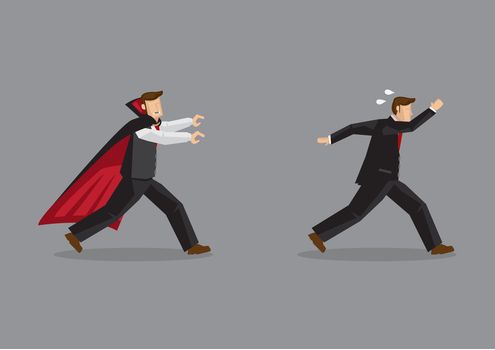
We are using the ‘vampire’ reference for a non-voluntary feeding that takes place on our life force energy from another living consciousness–either in the physical or non-physical realms and on all levels of our Beingness — physical, emotional, mental, spiritual.
It has also been classified as a psychic attack, although psychic attacks can bring more misery than energy vampires. This energy taking can be a very convoluted situation.
What are Energy Vampires?
There are two types of energy vampires: physical and non-physical.
Physical vampires are people that are unable to move through life without taking energy from others. They may have a physical, emotional, or mental dysfunction that is draining them, and most times, energy feeding is not intentional.
It is not a conscious decision to take your energy. It is not deliberate. An energetic part of them attaches to you and sets it up.
It could be anyone – friend, co-worker, your children, other family members, intimate relationships, a fleeting encounter, and other group meetings/organizations.
Non-Physical Vampires are entities in the unseen, non-physical realms around us. They have every intention of stealing and using your energy. That is mainly how they survive.
 They set up energy siphoning through childhood/adult physical and sexual trauma, addictions, injuries, extreme fear, and ecstatic bliss episodes and events. Or through unspoken/spoken agreements in the physical and nonphysical realms in other lifetimes or this one and also through joint permission with others.
They set up energy siphoning through childhood/adult physical and sexual trauma, addictions, injuries, extreme fear, and ecstatic bliss episodes and events. Or through unspoken/spoken agreements in the physical and nonphysical realms in other lifetimes or this one and also through joint permission with others.
If there is a way to suck the life out of you, they will figure it out. They are also opportunists and will attach to energy siphons that another human is using.
There are also other entities, such as earthbounds, who are confused and not intentionally taking your energy. They are just looking for a safe place when coming into your field to rest and nest.
Discover Four Powerful Practical Ways to “Re-charge” and Tap Into Your Hidden Energy Reserves Through Energy Medicine in this FREE Masterclass>>>
13 Signs That You’re Being Drained Dry
You are at risk for energy vampires or currently being depleted when:
1. You feel drained after being in someone’s presence or a phone conversation
Your energy has been leached, especially when someone has been talking AT YOU INSTEAD OF WITH YOU.
2. Trying to fit in
When you have to shrink yourself to fit into a group, to be less than so that you are liked and accepted.
3. Feeling guilty at home about not being who they want you to be or doing enough for them
4. Being a ‘yes’ person, a ‘go-to’ person, a doormat, doing what others want you to do even when you don’t want to
And then you become mad with yourself because you know you’re being manipulated but not doing anything about it.
5. Having sexual intimacy without both partners having a love for and being in joy with one another
6. You would like to leave a relationship, but no energy
Confusion reigns, and clarity is not there because of the feeding. Not sure how to find a way out or even if there is a way out.
7. Participating in drama
This is a huge energy suck and drainer.
8. In an abusive situation
Narcissistic personalities are famous energy drainers and takers. They intimidate, physically or emotionally abuse, belittle, confuse, and generally create all varieties of cray cray.
The energy entanglement with a narcissist may take lots of help and considerable self-strength to untangle from it and flee.
9. Worshipping a guru, god, celebrity or other Being, physical or nonphysical, outside of you
Your energy is being intentionally delivered to another. It is okay to read books and follow someone for more knowledge, but taking it further than that may be detrimental.
10. Someone important in your life is saying they can’t live without you; they wouldn’t know how to live without you
If this sounds familiar, you know the infamous line, “If you loved me, you would ____.” You are just flat tired most or all of the time.
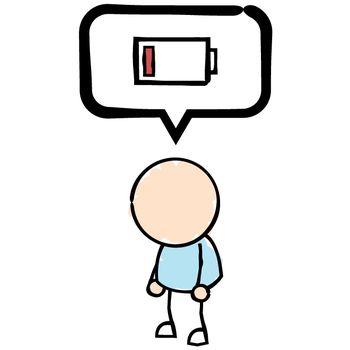 11. Experiencing chronic fatigue and no matter how many health drinks/food/supplements/exercises you do your energy is still low
11. Experiencing chronic fatigue and no matter how many health drinks/food/supplements/exercises you do your energy is still low
It is also a good idea to see if there is a physical condition as well when in chronic fatigue such as candida and fungus overgrowth. Both of those are significant energy zappers. But if you are in a relationship that sounds like any of the above, energy vampires could be the culprits.
12. Being on the receiving end of physical/sexual violence at any age
13. You or someone around you is needy, co-dependent and whiney
The words ‘poor me’ are key indicators of Victim Consciousness.
3 Key Points For Your Consideration
1. You are not innocent in all of this. You have and may still be stealing energy from others too!
This does not make you public enemy #1 just as it doesn’t make anyone else who is feeding a poopoo head either. It is a two-way street.
2. Judging and blaming is a no-no
To think that we are blameless and victims is a game that will perpetuate the scheme. When we blame and remain in victim consciousness, specific energy radiates out and then draws in energies that feed on that dynamic.
3. Be in complete acceptance and allowance of another’s path and actions
 That is an expression of ultimate love. It does not mean we have to stay in a situation or allow energy feeding to continue. It just means live and let live and walk away.
That is an expression of ultimate love. It does not mean we have to stay in a situation or allow energy feeding to continue. It just means live and let live and walk away.
Always check to see if you are energy feeding!
It is very important not to judge the how and why, but just to get out from under it and minimize contact.
Just Say NO!
The way to cure this and all intrusion is to Understand And KNOW that you are Creator. Also, you are the sole consciousness of your body.
You are in control of your body, and none others are allowed.
The post 13 Signs of Energy Vampires in Your Life–and How to Get Rid of Them appeared first on FinerMinds.
Do Others Think You’re a Weird Person? Here’s Why You Should Hope So 8 Feb 2019 8:03 PM (6 years ago)
Have you ever felt like other people may think that you’re strange, different, or maybe even… a weird person?
Or maybe you have felt like you don’t quite fit in, or like being a weird person isn’t an asset. Maybe you don’t know how to react or what to say when you feel or even hear that others see you as being different.
Here are 3 reasons you should take people’s opinions that you’re weird as a huge compliment
1. “Weird” Also Means “Unique”
What does it mean being called weird? Well, here’s the dictionary definition of the word:
weird
adjective
suggesting something supernatural; uncanny. “the weird crying of a seal”
noun
a person’s destiny.
verb
induce a sense of disbelief or alienation in someone.
In case the definition left you a little unsure of if being weird is actually a good thing, the origin of the world came from the Old English word “destiny.” The adjective (late Middle English) originally meant ‘having the power to control destiny.’
So just what is a weird person like?
In my mind, “weird” stands for wise, exciting, intuitive, revolutionary, and different.
That’s the first reason it’s a compliment.
2. You’re More Connected to Your Authentic Self
So now, let’s take a look at the word “supernatural.”
supernatural
adjective
attributed to some force beyond scientific understanding or the laws nature; unnaturally or extraordinarily great.
As you can see, it is made up of two words: “super” and “natural.”
To be connected to the “super-natural” means to be connected to your God-given birthright, which contains the complete authenticity and co-creative power of who you are.
That’s the second reason being supernaturally weird is a MASSIVE compliment.
3. Embracing Your “Weirdness” Heightens Your Intuition
In today’s world, we can find it hard to connect to who we are and the power of our nature.
This is where the Tarot comes in. The Tarot is an ancient part of our culture, like Stone Henge or the Pyramids (except it is small and easily transported).
Just like the word “supernatural,” we need to be non-judgmental enough to liberate it, and as we do, we liberate ourselves. That’s the way we can finally gain understanding, then confusion, pain, and fear no longer exist.

Being a top-class intuitive reader isn’t about memorizing meanings. It’s a rite of passage, one that leads you through many doorways of your own soul.
It’s a mysterious maze full of mirrored twists and turns that can, at times, leave you feeling more like a pinball wizard than a witch that is connected to the natural rhythms of life, ancestry, divine timing, and synchronicity.
Sometimes, so many impressions come in, it is hard to sort the wheat from the chaff. Believing in yourself becomes full of its own challenges, and when self-belief goes array, so does everything else.
Sometimes in life, we get caught up in others’ projections that aren’t necessarily true.
It’s so easy to think you need to do something about this, and often that makes it worse. It’s like trying to run full steam ahead with your murky, weird witchy woo-woo glasses on; you can’t see clearly.
Experience a Full Transformational Hypnotherapy Session Designed To Rapidly Bulletproof You Against Rejection and Boost Your Confidence in This FREE Masterclass>>
3 Quickfire Ways to Embrace Your Weirdness (No Matter What Anyone Else Says)
Step 1: Clear your self-perception
The first thing to do is recognize that this muck on your glasses is not yours.
 If you can, go and take a rock salt bath to cleanse your aura.
If you can, go and take a rock salt bath to cleanse your aura.
If you can’t do that, then imagine the sun beaming down on you, filling you up with gorgeously new radiantly clean cells, all buzzing and bursting with beautiful, clean, fresh energy, so much so your weird witchy woo-woo glasses are born anew!
Step 2: Commit to this Shift in Self-Belief
If you practice Tarot, take out The Sun card and carry it around with you for the day to cement this newly clarified self-awareness. And to remind you to breathe in its wonderfully purifying energy throughout the day.
Step 3: Trust Yourself… and Let Go
Finally, set an intention to embrace your uniqueness.
Visualize yourself handing off any fears, doubts, or insecurities you have to the Universe. Know that you can safely surrender them.
Trust that being unapologetically who you really are will turn everything in your life around for the better.
The post Do Others Think You’re a Weird Person? Here’s Why You Should Hope So appeared first on FinerMinds.
5 Warning Signs Your Third Chakra Is Weak (and How to Balance it) 8 Feb 2019 11:04 AM (6 years ago)
This is the third in a series of seven articles on your seven chakras, after the First Chakra and the Second Chakra.
Wondering what the Third Chakra is and how you can know if it’s out of balance?
The Third Chakra, or Solar Plexus Chakra, is located between the naval and lower part of your chest. In Sanskrit, it’s also known as the Manipura chakra.
It deals with issues of willpower, ambition, and action and is weakened by all forms of shame, embarrassment, and self-consciousness.
Physically, it supports your liver, pancreas, gallbladder, stomach, and spleen.
Before we jump into how to know if your Third Chakra is weak, it is helpful to step back and understand some important principles about chakras in general.
Chakras are collecting pools of subtle energy, and subtle energy is by nature susceptible to mental, emotional, physical, and spiritual inputs. Therefore, it is very easy for chakras to get out of balance.
In fact, you can pretty much guarantee that your average day will contain multiple things that will weaken and put your chakras out of balance.
Here are 5 telltale signs that your 3rd chakra is weak
1. You see yourself as powerless compared to some and powerful compared to others.
This may show up in being overly submissive in some situations and a tyrant in others.
2. You have lots of different ways of shaming yourself
You frequently feel embarrassed by imagining what other people think about you. It’s not so much that you’re afraid to fail; it’s more that you’re afraid to appear to others to be a failure.
3. You see the future as full of danger, and you also see change as a threat.
So you play it safe and try to protect what you think you have.
4. You’re highly goal-oriented and get your sense of meaning and purpose by your list of accomplishments.
If you are not accomplishing something bigger and better, you feel like a failure. You are generally highly stressed and often comment to others how stressed and busy you are as a badge of honor.
5. You experience any of the following physical symptoms on a frequent or chronic basis:
- Digestive/stomach problems
- Ulcers
- Liver issues
- Gallstones
- Pancreas disorders, such as diabetes or hypoglycemia.
Discover How To Heal & Align Your 7 Chakras To Elevate Your Life & Bring Your Boldest Dreams Into Reality in This FREE Masterclass>>
5 Ways To Strengthen Your Sacral Chakra
The good news is that it is also simple to bring a weakened 3rd chakra back into balance if you know what to do. Just doing simple things each day can help restore your chakras to their proper balance.
1. Reflection
Reflect on gardening. Notice what your proper role is as a gardener in growing life. It is a partnership between you and Life.
There is only so much you can do, and Life does most of it. It’s probably about 1% you and 99% Life. Yet without your 1%, nothing but weeds would grow.
Apply this to your life, goals, projects, and everything you are taking on that is causing you to feel stressed. Trust Life more and relax and refocus on what your 1% role is.
2. Redefinition
Focus less on accomplishment and more on contribution. Accomplishment is what makes the ego feel valued. Contribution is what the soul is designed to do.
Accomplishment is wholly attached to outcome whereas contribution is not connected to the outcome but is a reward in and of itself.
3. Sound Vibration
Intone the “ah” vowel sound and feel the vibration in your solar plexus area as you hold out the sound. Imagine a bright yellow sun radiating from your solar plexus and sending healing and balancing energy to the vital organs supported by your Third Chakra.
4. Chakra Breath
Do the “Breath of Fire.” The Breath of Fire is a rapid breath through the nose into the solar plexus. Two cycles per second are about the right speed. In out, in out–in one second.
Originate the muscle pumping movement from your solar plexus and let the breath just come in and out by itself. Do this for one minute whenever you are feeling low energy, and it will recharge you.
5. Yoga Asana 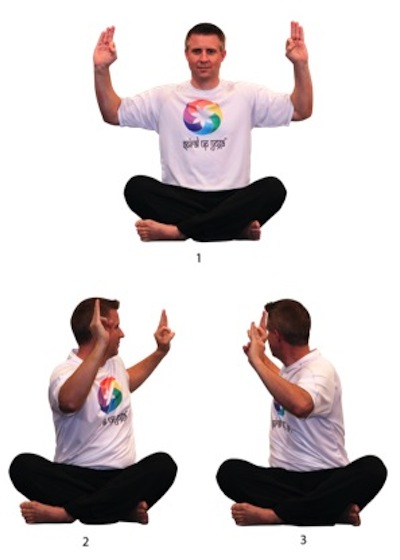
Perform the “Washing Machine” yoga asana (see illustration).
- Sit cross-legged on the floor.
- Raise both arms to the square and touch the first finger and thumbs of each hand.
- Now rotate your entire upper body at the waist to the left as you breathe in and then to the right as you breathe out.
Go back and forth in this motion for 30-60 seconds. You are cleansing your liver (your body’s primary detoxification organ) as you do this; like squeezing dirty water out of a wet sponge.
Our chakras are part of how we are designed as humans. The better you understand your chakras, the better you will be able to notice when things are out of balance and do something to bring them back into balance.
Remember: Daily Imbalance is Automatic. Daily Balancing Is A Choice
Unblock Chakras For Optimal Life Balance
How do you know whether an emotional blockage is keeping you from moving forward in life?Most of us carry emotional blockages. They can show up anywhere — in our relationships, at work.
These blocks create an imbalance in mind, body, and spirit but we can restore balance through an ancient energy system.
Recognising where an energy block has accumulated is the first step.
But leaning how to unblock chakras is what’s needed to restore balance in the body and mind.
If you want to discover how to heal & align your 7 Chakras to elevate your life & bring your boldest dreams into reality, then join this Free Masterclass with Leading Chakra Expert & Energy Healer, Anodea Judith, where you’ll learn:
 Discover the “architecture of your soul” through your seven chakras – and how each chakra impact key elements of your human experience (from your wealth, your love life, your ability to communicate, and more.)
Discover the “architecture of your soul” through your seven chakras – and how each chakra impact key elements of your human experience (from your wealth, your love life, your ability to communicate, and more.)
 Rapidly diagnose which of your chakras are open or closed so you can identify which area of your life to focus your attention to most.
Rapidly diagnose which of your chakras are open or closed so you can identify which area of your life to focus your attention to most.
 The #1 mistake spiritually-inclined people make in their spiritual growth journey that actually makes them feel less fulfilled and whole in life.
The #1 mistake spiritually-inclined people make in their spiritual growth journey that actually makes them feel less fulfilled and whole in life.
 How to use the “2-Way Chakra Energy Current” so you can manifest your ideal life AND tap into a higher consciousness for inspiration – all at the same time.
How to use the “2-Way Chakra Energy Current” so you can manifest your ideal life AND tap into a higher consciousness for inspiration – all at the same time.
 Ever find yourself reliving the same negative life experiences over and over again? Learn how to use your Chakras as a tool to heal even your most painful traumas and finally liberate yourself from a cycle of pain, frustration and anxiety.
Ever find yourself reliving the same negative life experiences over and over again? Learn how to use your Chakras as a tool to heal even your most painful traumas and finally liberate yourself from a cycle of pain, frustration and anxiety.
Register Today And Discover The Art of Balancing Your 7 Chakras To Heal and Manifest Your Ideal Life

The post 5 Warning Signs Your Third Chakra Is Weak (and How to Balance it) appeared first on FinerMinds.
7 Essential Areas Of Personal Development 8 Feb 2019 3:11 AM (6 years ago)
Wouldn’t it be nice if you had a personalized roadmap of all the areas of self-improvement for your personal growth journey?
Unfortunately, the commitment to bettering yourself doesn’t come with an instruction guide. However, there are 7 distinct areas of personal development that you can focus on working through.
Many of us tend to be dedicated to specific areas more than others. Maybe you’re devoted to your meditation practice, but have let your health fall to the wayside. Or perhaps you’ve achieved financial success, but stress and anxiety are affecting your mental health.
Understanding all 7 areas will help you find balance and propel you along your journey of self-improvement.
The 7 Areas of Personal Development
1. Your Spirit
Growth from a spiritual point of view can be loosely defined by creating a deeper connection with our innermost being.
 Contrary to popular belief, we are not what our mind perceives to us to be. Our body is merely the house in which we live, and our emotions are temporary states of consciousness.
Contrary to popular belief, we are not what our mind perceives to us to be. Our body is merely the house in which we live, and our emotions are temporary states of consciousness.
Remove emotions, thoughts, and the body, and we are left with what many religions preach that will live on eternally: the soul.
How do you want to grow spiritually? Do you want to meditate more often? Would you like to build your intuitive skills or simply trust the wisdom and guidance of your higher self?
Getting clear on your spiritual goals and what you plan to do to achieve them is foundational to overall personal development.
Learn How to Create & Achieve Your Personal Vision Of Success Every Dimension Of Your Life with this FREE masterclass>>
2. Your Emotional Health
An emotionally intelligent person is someone that can understand and control his emotions to best suit his goals and needs.
It’s important to understand that we, as humans, can choose our state of mind. We can choose to be irritated, frustrated, we can choose to attack or analyze, and we can choose to be happy or unhappy.
Emotional maturity can be reached with meaningful experiences that generate positive emotions. You need emotional well-being in your life if you are to function at maximum capacity.
There will also be times when you will experience difficulties: you will make mistakes, either towards others or to yourself. You will experience misfortune, rejection, and disappointment. Sometimes it will be your fault, and other times, the situation will be out of your control.
An emotionally mature person knows when negative emotions are justified. Also, an emotionally intelligent person will not react to his emotions. He will wait until he is in a calmer state of mind because he knows that his emotions might cloud his judgment.
3. Your Relationships
 Spouses, kids, parents, siblings, neighbors, and close friends all come under the category of relationships.
Spouses, kids, parents, siblings, neighbors, and close friends all come under the category of relationships.
How do you want these relationships to look? What do you value most about your friendships? Is there anything you want to have more or less of? What are your goals for love, friendship, and family relationships?
If you’re single, what are the qualities of your ideal mate? What are the qualities you want to develop to draw that mate?
4. Your Mental Health
Of all the areas of personal development, the one that often seems the easiest to develop is the mental side.
Your mind is like a computer that stores software and gets its hardware upgraded as you install more and more programs.
However, unlike a computer, which could easily stand the test of time if left unused, the mind will become slower as the neural connections weaken because of inactivity.
Engage in brain-boosting activities and read as much as you can to keep your mind sharp.
In addition to the added benefit of installing new “software” in your mind, you will expand your perception by being able to relate to more aspects of life.
Remember this: “Knowledge is power.”
5. Your Money and Career
What are your career and money benchmarks for the year?  Do you have financial goals for 3, 5, and 10 years? If so, what steps do you plan to reach these goals?
Do you have financial goals for 3, 5, and 10 years? If so, what steps do you plan to reach these goals?
These are the kind of questions you want to ask yourself when it comes to money and career areas of personal development.
Maybe there are things you want to have: a home, a new car, better furnishings, an upgraded computer.
Learn to manifest money fast. Take a little time each day to imagine enjoying the overall improvement in your life–as if the goals and things you desire have already been obtained.
6. Your Physical Health
The human body is the home of the mind, heart, and soul. An individual can’t thrive in an unhealthy body. The body’s energy level influences other areas of life.
It’s harder to be happy if you’re always tired or suffering from a chronic illness. It’s hard to think about personal growth when your body is making it hard for you.
You can nurture your body with physical exercises, a healthy diet, eating at the right hours, and getting proper sleep.
Have you thought about your diet and exercise habits lately? Are there areas where you can improve them? Is there a sport you’ve always wanted to learn? Are you ready to give up potato chips or smoking?
Come up with a list of 3, 6, and 12-month goals for your fitness and health development.
7. Your Community
This area of personal development has to do with your give-back goals.
What skills or gifts do you have that could benefit your local or global community? How can you give back?
Personal development goals for your community can include all sorts of things from donating time, money, stuff, or knowledge.
Putting it all together
These 8 elements constitute the aspects of life that you must tend to if you want to grow harmoniously as a human being. They are in no way independent of each other. They are interdependent to each other with varying degrees.
Anybody that wants to grow as a human being and not just become a “smarter” person should take into account all the aspects that must be nurtured. Balance is everything.
Gain Instant Clarity On What You Really Want In Life – And Have It All
There’s a reason that so many brilliantly talented, naturally creative, intelligent and capable people never reach their potential, and it is, quite simply, a lack of direction.Even if you have a vague goal in mind, you still need a plan, a process to get you there.
You can have the most expensive, fastest car in the world, but if you set off without a clear idea of where you’re going, then the rusty old Beatle with a map and compass will beat you there every time.
If You're Ready To Experience The Extraordinary Life Design System That Gives YOU The Power To Author Your Ultimate Life, Then Join Jon & Missy Butcher's Free Masterclass
Where You will Learn:
 Are you stuck on the hamster wheel of life, instead of rushing towards your fullest potential? Discover how to escape the 3 soul-crushing reasons most people unknowingly cheat themselves of their greatest lives.
Are you stuck on the hamster wheel of life, instead of rushing towards your fullest potential? Discover how to escape the 3 soul-crushing reasons most people unknowingly cheat themselves of their greatest lives.
 Do you always set goals and rarely achieve them? It’s not your fault – traditional goal-setting is seriously incomplete! Discover how Lifebook empowers you to rapidly and consistently take charge of your life, and realize your every dream.
Do you always set goals and rarely achieve them? It’s not your fault – traditional goal-setting is seriously incomplete! Discover how Lifebook empowers you to rapidly and consistently take charge of your life, and realize your every dream.
 Experience the ‘Instant Clarity’ exercise: a powerful visualization exercise that guides you through your ideal day – and gives you instant clarity on who you really are, and what kind of life you really want to be living.
Experience the ‘Instant Clarity’ exercise: a powerful visualization exercise that guides you through your ideal day – and gives you instant clarity on who you really are, and what kind of life you really want to be living.
Step Into The New Year With A Crystal-Clear Vision For Your Ultimate Life

The post 7 Essential Areas Of Personal Development appeared first on FinerMinds.
10 Easy (But Powerful) Ways to Understand Yourself Better 6 Feb 2019 2:33 PM (6 years ago)
Have you been searching for ways to understand yourself better? Being aware of who you are and affirming all of your qualities—good and bad—can be a challenging journey, but one worthwhile nonetheless.
If you want to know some quick ways you can begin this process and become more in-tune with who you are, take a look at these steps on how to understand yourself better.
1. Journal
Journaling can be a soothing activity on your subconscious because you’re allowing your mind to release thoughts that you normally ignore throughout the day. Get rid of the anxiety in your head by putting it all on paper, or write about topics that you most want to ignore so that you reveal deep-rooted issues.
Writing your thoughts down consistently can give you a clear window into who you are and help you understand yourself better.
2. Meditate

Take 15-20 minutes in the morning or at night to quiet your mind and focus on the thoughts running through your head. Practice deep breathing, stay in a calm environment and notice the ideas that naturally come to you.
Once you establish peace within yourself, you’ll be more connected with your inner being, which is a huge part of understanding yourself better.
3. Practice Positive Affirmations
Loving yourself unconditionally is hard to do sometimes, but it’s the most necessary for understanding yourself. Self-acceptance comes after you’re aware of who you are—your strengths, your fallibilities, your imperfections, your skills, and much more. This begins with positive affirmations.
Try speaking, writing, and thinking positive thoughts about yourself daily, and be specific. Say them to yourself in front of the mirror to be extra bold.
4. Take Risks

Life is nothing if you have a constant fear of failure. Accept that you’re not going to be perfect all the time, and go after what you want. Life is too short not to seek out new opportunities!
When you view risks as adventures, you’ll be able to embrace everything in your journey—even mistakes, challenges, and losses. Then, by exploring alternative routes, you can discover what people, places, hobbies, careers, and objects you like best.
5. Keep Learning
Educate yourself with classes, videos, podcasts, and general experiences that you otherwise wouldn’t try. Keep your mind active and engage in different activities so that you know for certain what you like, what you don’t like, what you understand, what you find challenging, and what you want to explore further.
Explore The Ideals Of The Highly-Evolved Being With Neale Donald Walsch, And Prepare Yourself For Humanity’s Next Evolutionary Leap in This FREE Masterclass>>
6. Have Meaningful Conversations
 Relationships also give you better insight into how you view and understand yourself. Make a habit of avoiding small talk with friends, family, and strangers to appreciate everyone’s uniqueness fully.
Relationships also give you better insight into how you view and understand yourself. Make a habit of avoiding small talk with friends, family, and strangers to appreciate everyone’s uniqueness fully.
You can’t get to know someone by discussing the weather, and likewise, no one—not even yourself—can better understand you if you only talk about surface information.
Be vulnerable and trusting in conversations with those you love.
7. Try Creative Activities
You would be surprised by how much you can better understand yourself when you give your imagination permission to be free.
The inner part of you that desires to be creative all the time would finally have an outlet. Creative activities can be endless: coloring, drawing, painting, sewing, writing, playing music, designing, crafting, singing, acting, and more. Pick your favorite, or try them all!
8. Identify Your Values
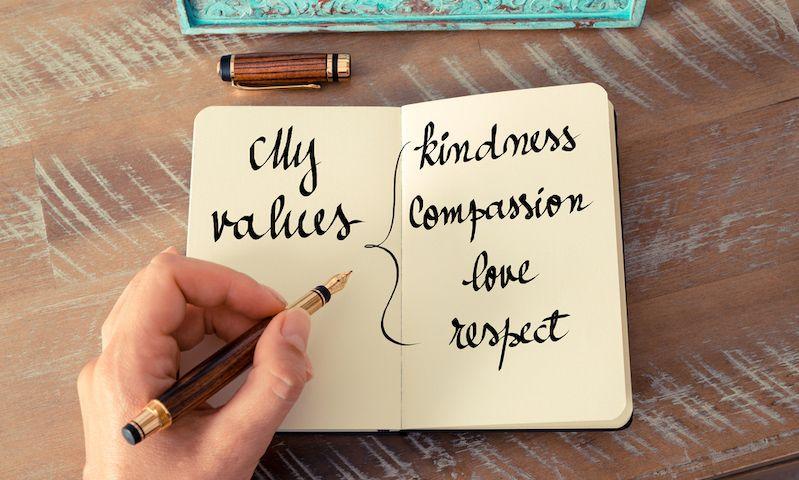
At first, it might be difficult to recognize every one of your values. If you’re having trouble with this one, start with what you absolutely will not tolerate.
What are your unfavorable qualities in yourself and in others? On the flip side, what do you like most about yourself? What characteristics do you find admirable in people closest to you? Do you care about people? Animals? Religion?
Determining your values contributes to understanding who you are as a whole.
9. Explore Spiritual Alternatives
Astrology, Tarot cards, Numerology, and other spiritual practices are all ways to gain insight about your personality traits and how they relate to your journey on Earth.
You don’t have to take any of it too seriously if it conflicts with your current religion. However, all of these options can be a way to find answers about who you are and what kind of life you might have.
10. Use Personality Quizzes
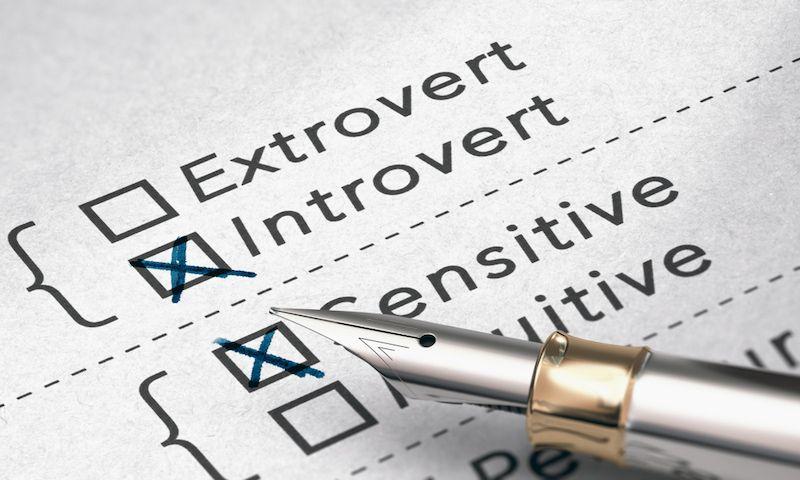
Have you ever found out your Myers-Briggs Type Indicator (MTBI)? Do you know your level of emotional intelligence? Are you a narcissist? These psychology-based personality assessments give you factual insight into the traits of your personality.
Final Thoughts
When it comes to understanding yourself, no one can do it better than you. Although it may take some time to fully recognize all of your personality characteristics, what you value, and even your life journey, there are many ways shown here that allow you to become more aware of who you are.
Utilize all of these steps or just the ones you like best. Every one of them leads to a road of positive self-discovery, which can benefit you for the rest of your life.
The post 10 Easy (But Powerful) Ways to Understand Yourself Better appeared first on FinerMinds.
4-Step Guide To Finding Inner Peace And Quieting Your Mind 6 Feb 2019 10:05 AM (6 years ago)
Do you regularly feel full of inner peace? Are you continuously overflowing with Joy and Bliss daily, so that you seem free of problems and emotional pain?
If not, you are amongst the vast majority of us striving for a better life, yearning for a more peaceful and joyful existence. Yet, it seems like an impossible challenge, where we end up mentally punishing ourselves for failing, concluding that “I’m just not made to live in peace.”
We’ve become so easily distracted by the hurrying demands of modern life, that we’ve temporarily lost touch with our natural state of being. But there is a way if we seek it.
2 Big Reasons Why It’s Hard to Find Inner Peace and Joy
If you observe our problems, you will notice that most problems are rooted in the mind.
The basic premise is the same: some external event happens, we choose to see only one side of the story, and then interpret the situation such that it causes some form of mental conflict, resulting in some form of emotional suffering.
1. Too much mind clutter
While it is easy to simply say, “drop your problems,” you and I both know that it is not that simple. We all have had years and years of conditioning in attracting problems and conflicts. So much so, that the simple concept of ’stop thinking about problems’ will not be so effective on us. We need tools that strike at the problem’s root.
 Close your eyes for about a minute (or 5 minutes), and during this minute, send out the intention that you want silence and stillness, and you do not want to be pulled away from this silence by thoughts (pause your reading and do this).
Close your eyes for about a minute (or 5 minutes), and during this minute, send out the intention that you want silence and stillness, and you do not want to be pulled away from this silence by thoughts (pause your reading and do this).
Okay, so what happened? You probably noticed that the moment you become silent, thoughts started popping up – random and unrelated thoughts. These thoughts become a form of distraction, pulling us away from our inner silence.
This was only an experiment where we consciously observed our mind and tried to become still, but could not. Imagine the state of our inner space, while we are going about our day, unaware of the polluting in-coming thoughts.
As a result, our inner space becomes cluttered with useless information, with thoughts that are not conducive to our wellbeing, with garbage.
When our inner space is cluttered, our inner clarity and in-born wisdom become distant and foggy. Essentially, we lose touch with that part of our inner selves that is sacred, and wise, and peaceful, and eternal.
Learn How to Clear Your Mind and Become a Super Performer at Work & Life in this FREE masterclass>>
2. Social Media and Life’s Distraction
The distractions that we’ve declared as urgent and important, such as watching TV, engaging with social media, checking email, all pull at us. They all pull at our attention, distracting us away from the things that are truly important to us; things that will bring lasting happiness and fulfillment to our lives and the lives of others we have yet to come to know.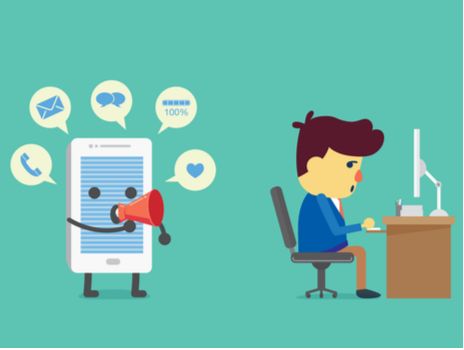
Whether we recognize it or not, the information that we expose ourselves to fills our inner space on some level and affects our emotions and desires.
And if we are not careful, we can easily rush through life, while spending our precious time on this planet focused on that which does not matter – and then wonder where did my life go? Why do I feel unsettled and easily irritated? Why do I feel unfulfilled and incomplete? And then we die wondering.
If you are here, breathing and reading this right now, then you have been blessed with this day, to wake up! Wake up and take control of your destiny, starting with what you focus on and allow into your life (regardless of your age).
Simple Guide to a Deep Inner Cleanse
To find inner peace, we must also find inner silence. Silence is often underrated and almost impossible to find in this day and age. There are many ways to go about this, either through meditation, visualization, or other means. This 4-step guide by Tina Su is a very good way to cleanse your mind and think more positively.
One way to clean out the clutter in our inner space is by guarding the garden of our mind. Being conscious of what we allow inside, starting with our own words, thoughts, and attention.
We may not be aware of this, but we spend so much energy on gossiping, bad-mouthing other people, judging other people, finding faults in others, and consumed in negative thoughts like jealousy, guilt or fear, and making excuses to cover up how we actually feel.
However, if we truly observe ourselves, our thoughts and our words, we will notice that at some point every day, however subtly or unconsciously, we are doing several of these things.
Sometimes, the “violation” is subtle, like passing a negative judgment on a waiter at a restaurant, or becoming frustrated with a telephone customer service rep and wanting to call him a bad name, or making a little lie of an excuse instead of saying no.
It’s not that by having these thoughts or saying these words, we become bad people. It’s just that these things become useless junk that clutters our inner space and does not contribute to our inner wellbeing.
Follow these four rules to inner cleanse:
- Say what you mean. Mean what you say.
- Don’t say to anyone unless you can say to everyone.
- Don’t say inside, what you cannot say outside.
- Don’t say unless it is true, useful or kind.
The 4 Rules to Quiet the Mind – Explained
1. Say What You Mean, Mean What You Say
Have you found yourself making up excuses to avoid fully dealing with a potentially uncomfortable situation?
 For example, your friend asks you to some social event. You don’t really want to go, but make up an excuse that “I can’t make it” or “I’m busy,“ probably so you can quietly avoid something or someone or some activity.
For example, your friend asks you to some social event. You don’t really want to go, but make up an excuse that “I can’t make it” or “I’m busy,“ probably so you can quietly avoid something or someone or some activity.
Another example, someone asks you for a favor that you do not wish to comply to, but you feel guilty for rejecting him, so you either avoid that person (i.e., Ignoring emails or phone calls) or create an excuse that isn’t really true (i.e., I am out of town.)
It is not that you cannot do something, as your excuse suggests. The truth is that you have chosen not to do something, but the act of creating an excuse or avoiding it initiates a stir in your inner space, and it takes energy to maintain. Instead of stillness and peace, you are now holding onto and thinking about this little lingering “lie.”
Part A: Say What You Mean
When you are about to say anything, make a conscious decision to say the absolute truth, or what you actually mean.
The absolute truth doesn’t have to be harsh or hurtful; you can do so compassionately and authentically, but firmly. When you own what you say, no one can reject it, even if they don’t like what they hear; because you are telling the truth and you mean it.
Part B: Mean What You Say
Sometimes we say things in passing out of obligation or habit that we don’t mean or intend on following through with.
For example, we say, “I love you” to our parents or significant other when we hang up the phone, not because we mean it, but out of habit. The words come so automatically now that they start to lose their true meaning.
Or we say, “I’ll call you soon,“ “let’s chat soon,“ or “I’ll call you tomorrow.“ Maybe we offer to help, as parting words to a friend, and don’t intend on keeping that statement, but say it because it was easy and made the other person feel good.
We may think that these casual comments are harmless, but we know deep down that they are not true. They become little lies that we internalize, and over time they will develop into a guilty conscience that distracts you away from this moment.
Make a conscious commitment to yourself to mean everything that you say, and not to make empty promises that you cannot, will not, do not intend to fulfill.
2. Don’t Say to Anyone Unless You Can Say to Everyone
Whether we admit to this or not, most of us love some form of gossiping (myself included). We are also quick to notice the fault in others, and then talk about them with our trusted allies. Or we find out about someone’s misfortune and immediately we want to tell somebody.
 I’m sure you can interject and include many examples from your life. But for the sake of conversation, here’s an example: Jenny, at work, had an emotional fit and yelled at a co-worker today. When we got home, we immediately told our spouse about the drama.
I’m sure you can interject and include many examples from your life. But for the sake of conversation, here’s an example: Jenny, at work, had an emotional fit and yelled at a co-worker today. When we got home, we immediately told our spouse about the drama.
Another example: Pat was fired from his job. Once we heard about it, we called or text-messaged our best friend Jane to tell her about it. Or even exchange jokes about Pat, because we don’t like him.
In both examples, we cannot repeat the same things to everyone, especially Jenny or Pat. If we really observed our inner space during and after we said these things, we wouldn’t feel very good.
When we consciously observe such a conversation, we learn that we have accomplished nothing that feeds our soul. All we did was spread drama and created negative energy and inner conflict that polluted our space and stole our inner peace.
Commit not to say something to one person, unless you can announce it to the world. Commit to stopping the spread of drama and bad energy.
3. Don’t Say Inside What You Cannot Say Outside
Most of us are extremely critical of ourselves. Because we would never tell the world what we say to ourselves, in the privacy of our mind, we believe that we are the only ones affected by negative self-talk, low self-esteem, and anxiety.
When something doesn’t go perfectly, we are first to blame ourselves. We criticize what we did wrong, what we didn’t do perfect enough, what we missed.
We all have inner chattering. Problems arise when we start to believe in our inner chattering and false beliefs about ourselves. These false beliefs become detrimental to our spirits and future wellbeing unless we do something to unlearn these beliefs.
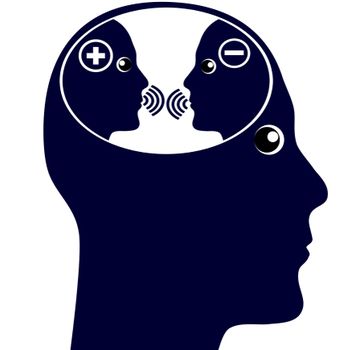 When you hear the voice in your head say “I’m stupid” or “I’m not good enough” or “I am a failure” or other related self-defeating thoughts, recognize that it is not you. You could verbally say, “That’s not me! That’s not true!” and even declare the following to this thought,
When you hear the voice in your head say “I’m stupid” or “I’m not good enough” or “I am a failure” or other related self-defeating thoughts, recognize that it is not you. You could verbally say, “That’s not me! That’s not true!” and even declare the following to this thought,
“From today forward, I choose to let you go, for you are no longer serving me. I am exposing you, for you are not real! From today onward, I am free from you.”
The basic premise of the third rule to inner cleanse is that, whatever thought you are not able to say out loud to people (anyone), don’t even bother entertaining inside your head. Keep your inner space clean.
4. Don’t Say Unless it is True, Useful or Kind
Some people have so much inner chatter that it spills out of them in the form of useless speech.
Observe the people who talk on buses, or love to chitchat at work by the water fountain. If you observe and count the things they say that are useful or truly interesting, it will be a low number.
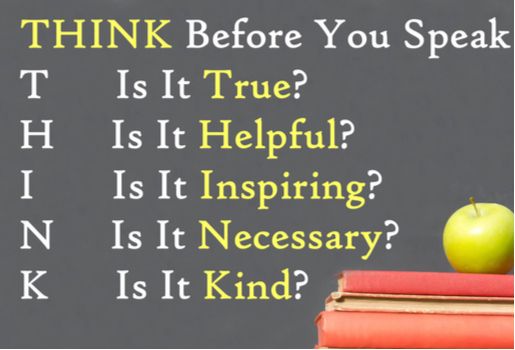 Not only is this distracting for those around this person, but it also takes an enormous amount of energy for this person to keep talking. Recall the last time you talked for a long time about something random, and how drained you felt afterward. Plus, the more useless things we say, the more useless things we feedback into our heads.
Not only is this distracting for those around this person, but it also takes an enormous amount of energy for this person to keep talking. Recall the last time you talked for a long time about something random, and how drained you felt afterward. Plus, the more useless things we say, the more useless things we feedback into our heads.
If you feel that this describes you, don’t feel discouraged. I’ve been there too and can contest that it is possible to quiet down.
Some people practice sabbatical days where they don’t speak at all, or read, or use the computer. And at the end of such a day, they feel a tremendous sense of inner peace, space and energy bubbling inside them.
Be conscious of what you say and only say it if any of the following is true:
- Is what I’m saying …
- True to me? An authentic statement from my heart?
- Useful or helpful to someone or some situation?
- Kind or compassionate? Such as a compliment, or an offer of help?
Parting Words: On Quieting The Mind
This post was born out of 4 simple sentences someone gave me a few months ago. If you give this simple 4-line guidance a try for 21 days, you will notice a beautiful transformation; from noise to stillness and inner peace, from chaos to clarity.
It may seem difficult at first but do it consistently and consciously for 3 days. It becomes much easier after that. Extend it to 7 days, and then to 21 days. Please do not kick yourself for slipping on the rules; it happens, let it go.
After some time, observe how your outer world changes, as your inner world transforms.
One more thing: Let your heart guide you. Trust it, and listen to it.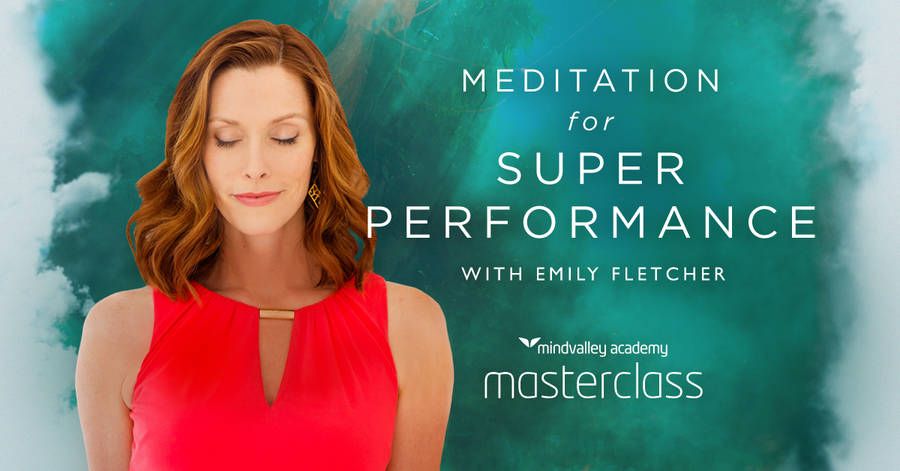
The post 4-Step Guide To Finding Inner Peace And Quieting Your Mind appeared first on FinerMinds.
The Desiderata Poem: Powerful and Beautiful Words To Live By 6 Feb 2019 7:24 AM (6 years ago)
It’s always such a beautiful reminder when you read old poetry or literature and realize that those before us experienced the same kind of woes or struggles, questioning the same things we do.
As when it comes to raw human emotion, and the way we should treat each other, the passing of decades does not change what ultimately makes us human and what makes us good people.
Why the Desiderata Poem Is Important
The Desiderata poem, by Max Ehrmann, really resonates with us as it reminds us to be kind, respectful, accepting and honest. It’s not a very long poem, but its simplicity only makes the words more striking.
While its exact origin is questionable, it’s widely believed that Max Ehrmann, a poet, and lawyer wrote it after being inspired by a diary entry he made about desire (Desiderata means “desire” in Latin).
When you’re next going through a period of self-doubt or you having problems accepting someone or a situation, read the Desiderata poem. It placidly embodies what life and our relationships with each other are all about.
Even if we all only practiced one or two lines from the poem, there would be a lot more love and tolerance in this world.
Create & Achieve Your Personal Vision Of Success In The 12 Dimensions Of Your Life in this FREE Masterclass>>
Go placidly amid the noise and the haste,
and remember what peace there may be in silence.As far as possible, without surrender,
be on good terms with all persons.
Speak your truth quietly and clearly;
and listen to others,
even to the dull and the ignorant;
they too have their story.
Avoid loud and aggressive persons;
they are vexatious to the spirit.If you compare yourself with others,
you may become vain or bitter,
for always there will be greater and lesser persons than yourself.
Enjoy your achievements as well as your plans.
Keep interested in your own career, however humble;
it is a real possession in the changing fortunes of time.Exercise caution in your business affairs,
for the world is full of trickery.
But let this not blind you to what virtue there is;
many persons strive for high ideals,
and everywhere life is full of heroism.
Be yourself. Especially do not feign affection.
Neither be cynical about love,
for in the face of all aridity and disenchantment,
it is as perennial as the grass.Take kindly the counsel of the years,
gracefully surrendering the things of youth.Nurture strength of spirit to shield you in sudden misfortune.
But do not distress yourself with dark imaginings.
Many fears are born of fatigue and loneliness.Beyond a wholesome discipline,
be gentle with yourself.
You are a child of the universe
no less than the trees and the stars;
you have a right to be here.
And whether or not it is clear to you,
no doubt the universe is unfolding as it should.Therefore be at peace with God,
whatever you conceive Him to be.And whatever your labors and aspirations,
in the noisy confusion of life,
keep peace in your soul.With all its sham, drudgery, and broken dreams,
it is still a beautiful world.
Be cheerful. Strive to be happy.
Print and hang it somewhere you can see it each day, so every time you walk past it, or you’re faced with a difficult situation, take a moment to read it and absorb the message.
What’s your favorite poem or literature that helps you cut through the clouds, reminding you of who you are and what beliefs are important to you when you’re in doubt?
Gain Instant Clarity On What You Really Want In Life – And Have It All
There’s a reason that so many brilliantly talented, naturally creative, intelligent and capable people never reach their potential, and it is, quite simply, a lack of direction.Even if you have a vague goal in mind, you still need a plan, a process to get you there.
You can have the most expensive, fastest car in the world, but if you set off without a clear idea of where you’re going, then the rusty old Beatle with a map and compass will beat you there every time.
If You're Ready To Experience The Extraordinary Life Design System That Gives YOU The Power To Author Your Ultimate Life, Then Join Jon & Missy Butcher's Free Masterclass
Where You will Learn:
 Are you stuck on the hamster wheel of life, instead of rushing towards your fullest potential? Discover how to escape the 3 soul-crushing reasons most people unknowingly cheat themselves of their greatest lives.
Are you stuck on the hamster wheel of life, instead of rushing towards your fullest potential? Discover how to escape the 3 soul-crushing reasons most people unknowingly cheat themselves of their greatest lives.
 Do you always set goals and rarely achieve them? It’s not your fault – traditional goal-setting is seriously incomplete! Discover how Lifebook empowers you to rapidly and consistently take charge of your life, and realize your every dream.
Do you always set goals and rarely achieve them? It’s not your fault – traditional goal-setting is seriously incomplete! Discover how Lifebook empowers you to rapidly and consistently take charge of your life, and realize your every dream.
 Experience the ‘Instant Clarity’ exercise: a powerful visualization exercise that guides you through your ideal day – and gives you instant clarity on who you really are, and what kind of life you really want to be living.
Experience the ‘Instant Clarity’ exercise: a powerful visualization exercise that guides you through your ideal day – and gives you instant clarity on who you really are, and what kind of life you really want to be living.
Step Into The New Year With A Crystal-Clear Vision For Your Ultimate Life

The post The Desiderata Poem: Powerful and Beautiful Words To Live By appeared first on FinerMinds.
People Come into Your Life For a Reason, a Season or a Lifetime 5 Feb 2019 11:58 AM (6 years ago)
Do you ever wonder if there’s really a reason certain people come into your life? If so, this poem we stumbled across offers a though-provoking explanation.
It’s by an unknown author, so we don’t know who to credit, but whoever it is has captured something so meaningful when it comes to the relationships in our lives. We thought the message was so powerful that we wanted to share it with you here.
Enjoy.
People come into your path for a reason, a season or a lifetime
When you know which one it is, you will know what to do with that person.
When someone is in your life for a REASON it is usually to meet a need you have expressed.
They have come to assist you through a difficulty…
To provide you with guidance and support…
To aid you physically, emotionally or spiritually…
They may seem like they are a godsend, and they are.
They are there for the reason you need them to be.
Then without any wrongdoing on your part, or at an inconvenient time, this person will say or do something to bring the relationship to an end.
Sometimes they die…
Sometimes they walk away…
Sometimes they act up and force you to take a stand….
What we must realize is that our need has been met, our desire fulfilled…
Their work is done.
The prayer you sent up has now been answered and now it is time to move on.
Some people come into your life for a SEASON.
Because your turn has come to share, grow or learn.
They bring you an experience of peace or make you laugh.
They may teach you something you have never done.
They usually give you an unbelievable amount of joy.
Believe it, it is real. But only for a season.
LIFETIME relationships teach you lifetime lessons.
Things you must build upon to have a solid emotional foundation.
Your job is to accept the lesson, love the person, and put what you have learned to use in all other relationships and areas of your life.
It is said that love is blind, but friendship is clairvoyant.
Thank you for being a part of my life…
Whether you were a reason, a season or a lifetime
–Unknown author
The post People Come into Your Life For a Reason, a Season or a Lifetime appeared first on FinerMinds.
Does He Love Me Tarot Reading: Can The Cards Tell Me The Truth? 5 Feb 2019 10:14 AM (6 years ago)
When new clients come in for a tarot reading, one of the most common readings they ask for is the does he love me tarot reading. They are very eager to find out whether their partner, their crush or their soul mate shares their love equally, which is why they turn to tarot for more insight.
The does he love me tarot spread is one of the most popular spreads used during these readings. While there are numerous ways to determine if a person’s love is reciprocated, these types of spreads are generally the most effective.
Most Common Questions Asked During Does He Love Me Tarot Readings
Many tarot readers find this a very challenging reading to do mainly because there is no simple answer to the question: what does it mean to be in love? Is it the same for everyone?
If another person is indeed in love with the client, will this still lead to disappointment if that person’s definition of love is more platonic? What if the other person is in love with more than one person at a time? How will this affect the client?
These are all very possible scenarios that could occur during a reading, which is why usually when a client comes in with this type of question, it’s the reader’s job to discover why it is they want to explore it.
While everyone wonders if the people in their lives return their feelings, not everyone decides to have a tarot reading to find that out. That’s why it’s important to address all possible aspects of the equation. That way the reader can find out why the client may be having doubts in the first place.
Consequently, when a client comes in looking for a is he the one for me tarot reading, the reader usually suggests that they re-frame the question so it becomes more specific and therefore easier to explore.
Does He Love Me Tarot Spread
Once the tarot reader confirms that the client’s main focus is on better understanding how their relationship (whether established or budding) is working, the most common spread suggested in such situations is the eleven-card relationship spread.
This spread helps untangle how both parties perceive the relationship and what they want from it. With this spread, in order to determine a happy relationship, the reader will be looking for alignment of intention.
If one person sees the relationship very differently from the other or wants different things from the relationship, this can mean that the relationship fundamentally won’t work. At least not at this time. On the other hand, the client can use this to see where to focus their energy on when working on improving the relationship.
One card, which if drawn upright can signify a positive change in the relationship, is the Lovers Card. As said by Numerology Sign, “this could signal the beginning of a relationship that will lead to a long-term commitment or marriage.”
Discover 4 Techniques That Instantly Activate Your Sensual Energy for Intimacy and Attractiveness in this FREE Masterclass>>
How The Spread Works
For this spread, the reader deals eleven cards. Four dealt vertically on the left, four cards dealt vertically on the right, and a triangle of three cards in the middle.
The cards on the left reveal the client’s perspective on the relationship.
- The top card reveals how the client views the relationship.
- The second, how the relationship makes them feel.
- The third, what it is that the client brings to the relationship, and
- The fourth, what the client wants from the relationship.
The cards on the right pull down the same information for the client’s partner (or the person that they are interested in).
- The top card in the central triangle takes an objective look at the status of the relationship.
- The card on the left reveals how the client perceives the state of the relationship, and
- The card on the right shows how their partner views it.
This reading can reveal when one person is ready to commit and move forward with building a life and a family together, and whether the other person is ready to do the same. It can also reveal that both parties in the relationship are ready to commit and make it exclusive, but neither has said anything due to fear of rejection. Unfortunately, it may also reveal that one person is genuinely in love, while the other is invested in the relationship for material gain or other reasons.
No matter how negative or positive they are, these are all possible outcomes from the reading.
Fear Releasing Spread
When the reader determines that the reason their client is uncertain about their partner’s feelings has more to do with things going on in their head, than with their partner, the fear releasing spread is generally a better fit for the occasion.
This spread helps the reader identify what’s really going on with the client and why they are feeling the way that they are. It also helps develop strategies for them to overcome their inner fear.
This can be a simple four card spread with one card at the top, two in the middle, and one at the bottom.
- The top card identifies the fear or insecurity that the client is dealing with.
Do they have a fear of betrayal? Is this leading them to question the motives of the people in their life? Are they insecure about their value and worth, and is this causing them to feel like they aren’t good enough for their partner and therefore question their commitment?
- The second card points to the cause of this fear, whether it is past betrayal, something that happened in their childhood, or a toxic person in their life filling their mind with doubt.
- The third card points toward how this insecurity is affecting their life. Beyond the apparent situation in their relationship, how else is this fear manifesting? Is it stopping the person from developing deep friendships as well, or from putting themselves forward for new opportunities?
- The final card points towards things that the person can do to overcome and release this fear so that they can move forward.
Tarot Philosophy
Many clients–especially new clients–think about tarot as a tool for revealing a future that is set in stone.
That cannot be further from the truth!
A tarot reading looks at the energy of a situation, as well as the intentions of the key players within it, and reveals the most likely outcome. However, that outcome is never set in stone.
While it can be very difficult for an individual to change the course of world events, our intentions are of paramount importance and hugely influential. Changing our intentions can dramatically improve the situation. While we may not be able to stop something from happening, we can change how we respond to it, and therefore change how this influences our lives.
This is how tarot helps us shape the future, by showing us the consequences of our current choices and actions and giving us the chance to make improvements.
The post Does He Love Me Tarot Reading: Can The Cards Tell Me The Truth? appeared first on FinerMinds.
What is the Purpose of Life? 16 Answers from 16 Inspirational People 5 Feb 2019 4:00 AM (6 years ago)
Most of us have wondered at one point or another what the point of it all is. Why are we here? What’s life really about? In short, what IS the purpose of life?
Why study 15 years of our lives, work 80,000 hours, and then reproduce so the next generation can do it all over again if we don’t even know why we’re doing it?
There’s got to be a greater purpose, right?
To get some more clarity, here are the answers from 16 people who seem to know their life purpose. They were all asked the question:
In your belief, what is the purpose of life?
1. The Dalai Lama

Who is he? His Holiness the Dalai Lama, Tenzin Gyatso, is the spiritual leader of the Tibetan people. He has been described as a doctor of the soul, and his message is always one of peace and compassion for people all over the world.
I believe that the very purpose of life is to be happy. From the very core of our being, we desire contentment. In my own limited experience I have found that the more we care for the happiness of others, the greater is our own sense of well-being.
Cultivating a close, warmhearted feeling for others automatically puts the mind at ease. It helps remove whatever fears or insecurities we may have and gives us the strength to cope with any obstacles we encounter. It is the principal source of success in life. Since we are not solely material creatures, it is a mistake to place all our hopes for happiness on external development alone. The key is to develop inner peace.
–Dalai Lama, Tenzin Gyatso
2. Steve Pavlina
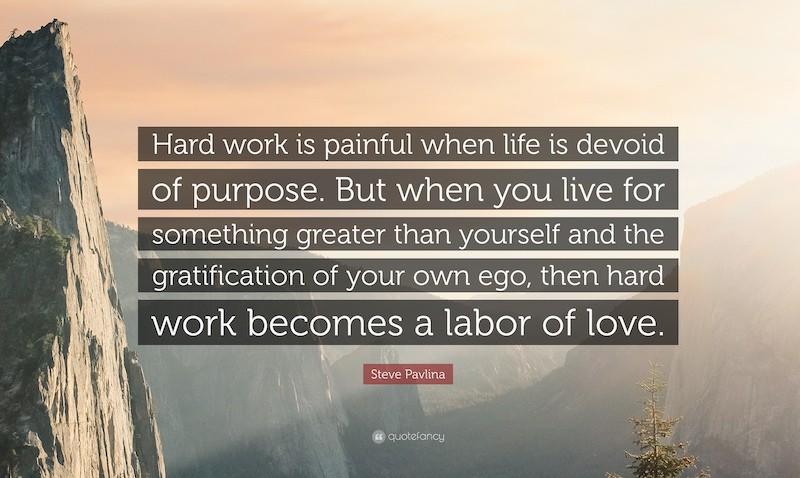
Who is he? At the age of 19 and locked up in a jail cell, Steve decided to pursue personal growth. He went on to become one of the biggest blogging successes in the field of self-development. A small warning before you visit his site, make sure you have plenty of time (his content is rather addictive).
The purpose of life is to explore and experience.
–Steve Pavlina
3. Byron Katie

Who is she? The severely depressed and suicidal Byron Katie ended her suffering one day when she experienced the life-changing realization: when she believed her thoughts, she suffered, but when she didn’t believe them, she didn’t suffer.
Learn How to Create & Achieve Your Personal Vision Of Success in this FREE masterclass>>
To understand that what is, really isn’t.
–Byron Katie
4. Chris Guillebeau

Who is he? Chris is a living example that you don’t have to live life the way others expect of you. This rebel against conventionality proves to us that more can be found outside of our comfort zones.
Well, a man who has visited every country in the world (all 193 of them!) should know a secret or two about living.
Hmm… boots and cats?
–Chris Guillebeau
5. Christie Marie Sheldon

Who is she? Christie has an interesting skill. Just by looking at someone, she can determine if they are living their life purpose or not. She is one of the world’s leading energy healers and experts on intuition. Her mission? To get everyone on the planet vibrating at an energetic frequency of Love or Above.
The only Soul-Filled purpose of life is to love and let what makes you soulfully happy guide you — it’ll all work out if that’s your guiding force.
–Christie Marie Sheldon
6. Matthew Silver

Who is he? If you’ve ever been in New York City and seen a man roaming around in his underwear with stuffed animals, making funny sounds, and telling you to live in the now — you already know Matthew.
This well-known street performer is often mistaken for a raving lunatic, but with his messages of love and living in the present, in a city like New York, Matthew might be the sanest of all.
God gave you free will. That’s for you to decide. But I’d use your heart to find it.
–Matthew Silver
7. Ralph Smart

Who is he? Ralph dives deep into life and encourages us to look beyond illusions and perceived boundaries. Through his YouTube channel Infinite Waters, he helps us expand our consciousness and unlock our true potential.
I believe it is to become our greatest version.
–Ralph Smart
8. Parker Heuser

Who is he? Parker and his friends Alexey Lyakh, Ryker Gamble, and Max Gatfield are high on life. Through their social media channels, people all over the world are inspired by their adventurous videos and appetite for fun.
Make sure to check out their “3 Years of Travel in 3 Minutes” video. It’ll get the blood pumping through your veins.
The purpose of life is to discover your surroundings (learn about the world, visit as many different countries as you can, take in lifetimes of knowledge by reading the work of brilliant minds), discover yourself (What do you love and what are you good at? What are your greatest passions and what makes you truly feel alive?), follow your heart (do all those things that make you feel happy, that lift your spirits, that give you butterflies, that make you feel light, as if you’re floating) and evolve spiritually (some call this enlightenment).
You are not a body, you are a soul. Life as we know it is just a step in spiritual advancement. So the purpose of life is to do everything you can to better prepare yourself for the next stage: enlightenment.
–Parker Heuser
9. Barrie Davenport

Who is she? Barrie’s passionate about passions — especially about helping others find theirs.
Looking for more passion in your life? Barrie’s practical and actionable advice will help inspire your soul and move you in the direction you desire.
The purpose of life is to live mindfully and passionately in the present moment, to love unabashedly, to be a lifelong learner, to seek adventure and growth, and to spread kindness and peace along the way.
–Barrie Davenport
10. Gary Vaynerchuk

Who is he? Gary is a loud serial-entrepreneur and social-media master who loves the hustle of turning passions into reality. He demonstrates that in this Internet era, with all the possibilities that come with it, you have no excuse not to do what makes you happy.
To leave Legacy that is a North Star for all my family in the future.
–Gary Vaynerchuk
11. Justine Musk

Who is she? A car accident became Justine’s wake-up call. After eight years of marriage to super entrepreneur Elon Musk, she realized she had turned herself into a side player and trophy wife. So, she made the decision to stop living in the shadows, take the lead role of her own story, and step into the fiery, talented, and powerful writer she is today.
To cultivate your gifts and inner knowing in your lifelong quest for soul: that point in place and time where what you do is who you are and whom you serve, and to take care of yourself is to take care of the world.
–Justine Musk
12. Alex Blackwell
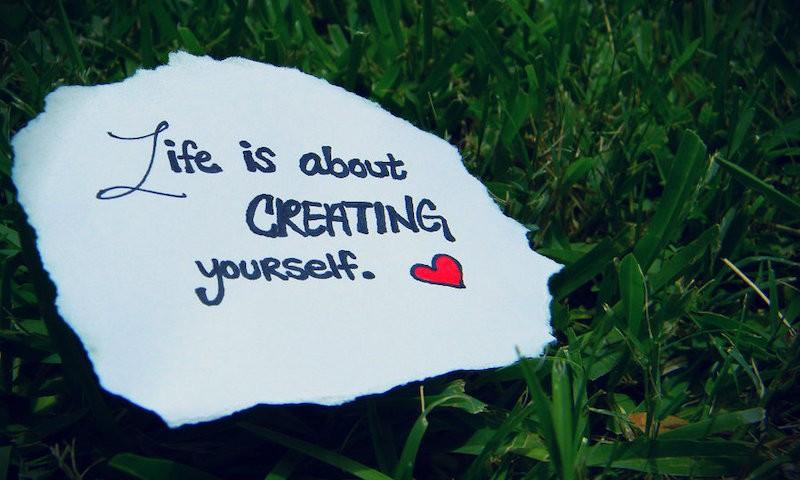
Who is he? On the brink of divorce, Alex found himself needing to make some serious changes in life. He not only managed to save his marriage (and to turn it into a very happy one!), but he also decided to invite others to benefit from his experience. On his blog, he shares openly and honestly about his journey of making positive life changes.
To give love without being asked and to believe you are worthy to receive love always.
–Alex Blackwell
13. Will Mitchell

Who is he? Will is an Internet entrepreneur since the age of 12 when he started skipping school to build his own businesses. Today he’s running StartupBros with his best friend Kyle Eschenroeder, with the purpose to help “wantrepreneurs” build their first successful business.
The central message of these two bros? You don’t need a job.
The purpose of life is self-actualization – shaping the world in our vision through reaching our full potential.
–Will Mitchell
14. Joshua Becker
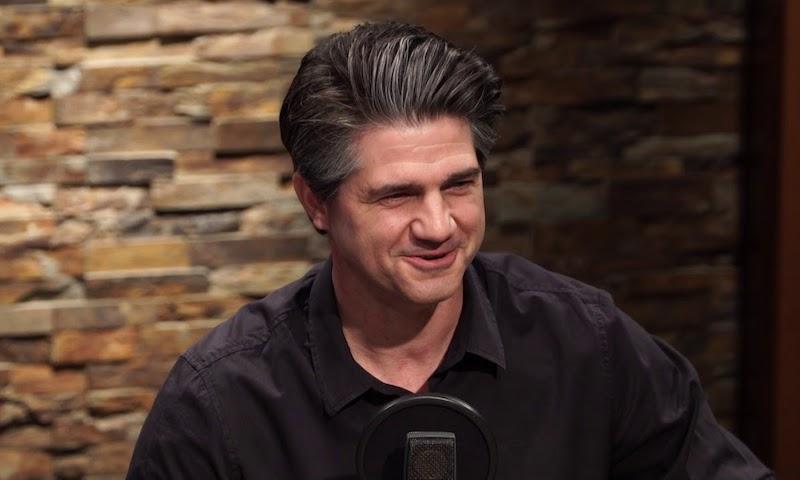
Who is he? A few years back, Joshua and his family got rid of over 70% of their belongings. They discovered that less stuff meant more life. The minimalist guru now helps others simplify their lives to leave more space for the things that truly matter.
The purpose of life is to give it away in the service of others.
–Joshua Becker
15. Luminita Saviuc

Who is she? Luminita is all about purpose. Her words of wisdom are like a magic wand that touches the hearts of people all over the world.
If you haven’t seen it yet, make sure to check out her insanely popular article “15 Things You Should Give Up To Be Happy” (which got shared over 1.2 million times on Facebook).
What is the purpose of life? To love, to truly love. To become one with love and then to radiate that love outwards… And to love those who love you, and also those who don’t. Not necessary because they deserve it, but because love is the only thing we have to offer… To get to a place where, no matter where you look and no matter what you do, you can’t help but feel an overwhelming love towards that which you see and for the things you do.
That’s the purpose of life…
The way I see it, life is love and love is life, and the more love flows through our veins, the more joyful we become, the clearer our vision gets, and the easier it becomes to connect not only with our own heart and Soul but also with the heart and Soul of every living being that inhabits the planet.
On the surface, we might all look very different from one another but at the core level, we are all the same. At the core level, we are all ONE, connected with each other in a very deep and powerful way. At the core level, we are essentially the same, all members of one human race.
There is no separation except the separation we created in our minds because of our attachment to fear, and if we allow love back into our hearts, becoming one with it and allowing ourselves to live our lives from that place, then we will recognize ourselves in the world around us and we will finally understand that we are in the world and the world is in us… We are ONE.
16. Brendan Baker

Who is he? Successful at his job at a young age, Brendan was early to realize that what is considered success isn’t necessarily equate to happiness. This wake-up call set him on a mission to help others turn passion into profit.
That could mean a difference to a person, to a community, to the environment or to the world. When you connect to a higher purpose that is beyond yourself that’s when life truly begins.
–Brendan Baker
The Big Question In a Simple Answer
The purpose of life might seem like an overwhelming and difficult question (my dad wasn’t the only one without an answer). Most of us probably spend more time contemplating what series to watch next on Netflix than thinking about our reason for living.
But looking at the answers, it might not be so complicated after all. To be of service to others, to love unconditionally, to watch a Youtube video about boots and cats, to see through illusions, and to realize our full potential. It all comes down to one thing — feeling good.
Gain Instant Clarity On What You Really Want In Life – And Have It All
There’s a reason that so many brilliantly talented, naturally creative, intelligent and capable people never reach their potential, and it is, quite simply, a lack of direction.Even if you have a vague goal in mind, you still need a plan, a process to get you there.
You can have the most expensive, fastest car in the world, but if you set off without a clear idea of where you’re going, then the rusty old Beatle with a map and compass will beat you there every time.
If You're Ready To Experience The Extraordinary Life Design System That Gives YOU The Power To Author Your Ultimate Life, Then Join Jon & Missy Butcher's Free Masterclass
Where You will Learn:
 Are you stuck on the hamster wheel of life, instead of rushing towards your fullest potential? Discover how to escape the 3 soul-crushing reasons most people unknowingly cheat themselves of their greatest lives.
Are you stuck on the hamster wheel of life, instead of rushing towards your fullest potential? Discover how to escape the 3 soul-crushing reasons most people unknowingly cheat themselves of their greatest lives.
 Do you always set goals and rarely achieve them? It’s not your fault – traditional goal-setting is seriously incomplete! Discover how Lifebook empowers you to rapidly and consistently take charge of your life, and realize your every dream.
Do you always set goals and rarely achieve them? It’s not your fault – traditional goal-setting is seriously incomplete! Discover how Lifebook empowers you to rapidly and consistently take charge of your life, and realize your every dream.
 Experience the ‘Instant Clarity’ exercise: a powerful visualization exercise that guides you through your ideal day – and gives you instant clarity on who you really are, and what kind of life you really want to be living.
Experience the ‘Instant Clarity’ exercise: a powerful visualization exercise that guides you through your ideal day – and gives you instant clarity on who you really are, and what kind of life you really want to be living.
Step Into The New Year With A Crystal-Clear Vision For Your Ultimate Life

The post What is the Purpose of Life? 16 Answers from 16 Inspirational People appeared first on FinerMinds.
How to Overcome Sexual Self-Consciousness in a Relationship 4 Feb 2019 1:14 PM (6 years ago)
Do you feel like sexual self-consciousness has ever negatively affected your relationships? If so, you’re definitely not alone!
Nothing makes you feel more self-conscious than being naked in front of a lover or not “performing” to the best of your ability during sex. There’s literally nowhere to go and nowhere to hide.
You are there – emotionally and physically vulnerable in front of your partner. And, if you are already insecure or embarrassed about your body, sexual abilities, and/or relationship, bedroom activities can quickly become a trigger for anxiety, fear, worry, depression, and even sexual issues.
Causes of Sexual Self-Consciousness
So, what causes someone to be sexually self-conscious? Well, there are many reasons why you may feel unsure or anxious about having sex.
For instance, something as simple as an innocent quip from a partner about your anatomy or sexual performance can lead to a sexless night. The truth is, sexual insecurities can sneak into your bedroom, ruining the mood, and negatively affecting your sex life and relationship.
Maybe you feel less sexually desirable to your partner because you recently gained weight. Or maybe you feel self-conscious because you recently had a baby and your body no longer resembles its former self.
Also, the changes that come with aging could cause you to shy away from sex – even with a long-term partner. Or maybe there is a religious component involved, and you have been taught to shun sex before marriage. Even negative past sexual experiences could make you feel apprehensive in the bedroom.
Sexual issues like premature ejaculation, erectile dysfunction, sexual pain disorder, orgasmic disorder, low sexual desire, or low arousal disorder can also cause you to be self-conscious in the bedroom. In fact, sexual issues can trigger performance anxiety in some people, causing them to avoid sex altogether.
Still, the cause of your sexual self-consciousness could stem from body image issues.
A recent study found that a poor body image (i.e., weight, sexual performance, and sexual attractiveness concerns, along with a negative perception of one’s body) can negatively affect a woman’s desire, performance, and self-confidence when it comes to sex.
Similarly, another study found that men, who are dissatisfied with their weight, anatomy (penis size), and/or physical appearances, are more likely to be sexually self-conscious, than men, who satisfied with themselves.
Another possible cause of sexual self-consciousness is a fear of “disappointing” your partner.
Some of the most common male sexual issues — erectile dysfunction and premature ejaculation – can arise from a fear of being a “bad lover.” This fear can also trigger performance anxiety in some men. More specifically, men who desperately want to sexually “please” their partners can become so fearful of “disappointing” them that they develop anxiety at the mere thought of having sex.
Also, men who suffer from performance anxiety or other sexual issues may be so terrified of sharing their concerns with their partners that the issue goes unaddressed. As a result, both partners remain sexually unsatisfied, and the relationship suffers.
It is important to understand that women can also experience sexual issues and performance anxiety. This is especially true if a woman bases her sexual abilities on what she sees in magazines or on the screen, and/or if she has a poor body image or low self-esteem.
Moreover, sexual self-consciousness can arise if one or both partners become obsessed or addicted to porn. Porn can be very misleading for both men and women, especially when it comes to sexual flexibility, desire, and stamina.
Often, porn can actually make some couples feel like they must have extraordinary sexual abilities, such as being able to have non-stop sex for hours and hours – without tiring.
Porn gives couples a false impression of what sex should feel like, look like, and be like. In reality, however, sex is usually nothing like what you see in porn.
Still, millions of couples try to mimic what they see on the screen – all to the detriment of their sex lives and relationships. Because they are unable to live up to porn expectations, their relationships and self-confidence start to deteriorate.
The truth is these are only some of the causes of sexual self-consciousness. In fact, there are many reasons why someone may be insecure or self-conscious around a partner.
Discover 4 Techniques That Instantly Activate Your Sensual Energy for Intimacy and Attractiveness in This FREE Masterclass>>
Combating Self-Consciousness in the Bedroom
The good news is you can boost your confidence and improve your sex life with the easy, actionable tips listed below–before it damages your sex life.
1. Talk About It
If you are self-conscious about having sex with a partner – talk about it with him/her. Keeping it hidden will only trigger confusion, resentment, sadness, anger, and hostility in both partners.
If you are having sexual issues or you feel insecure about your sexual performance or body, share those feelings with your partner. Nothing will get resolved if you ignore or hide what is really going on with you.
Your partner may just surprise you and provide you with the support, unconditional love, and courage you need to make changes or seek help. Your partner may even be able to help you find a solution to the problem, so you both can enjoy the wonderful pleasures of a happy and healthy sex life.
2. Adjust Your Expectations
As mentioned above, unrealistic expectations can lead to a host of sexual issues. Porn and photoshopped images on social media sites, magazines, and in movies and sitcoms can put extreme pressure on couples. The truth is what you see on the screen or in magazines is not real. Most of what you see in porn is choreographed.
Porn stars don’t really have marathon sex sessions, and their bodies aren’t as perfect as you may think. However, watching porn excessively and trying to imitate them will only lead to disappointment, frustration, anger, anxiety, and despair. It could also create a whole new set of problems like performance anxiety and/or sexual disorders.
The result? The end of your sex life and relationship.
So, watch porn and admire the sexy beings in the magazines and on the screen, but keep it real. In other words, understand that your body, sexual abilities, and sexual experiences probably won’t porn star worthy.
Appreciate your body, abilities, and experiences for what they are – ways to connect to someone else on a deeper, more personal level. And, do not allow an illusion to determine the quality of your sex life – and happiness.
3. Work on Your Self-Confidence
It’s normal to wonder what a partner thinks of you – your body, anatomy, appearance, and performance. It’s even normal to be slightly concerned, but if the worry, concern, or fear causes you to forego sex due to self-consciousness, it may be time to work on boosting your self-confidence – in and out of the bedroom.
More specifically, figure out what makes you feel sexy, smart, and attractive. What makes you feel good about yourself?
It doesn’t have to just be sex-related; it could be anything that makes you feel confident. Then, do it – and keep doing it until you’re the best at it. Why? Well, self-confidence is transferable. In other words, if you feel confident in one area, you’ll most likely feel confident in other areas, as well. And, that includes in the bedroom.
So, invest time in a hobby you’ve been dabbling with and practice it until you’re the best at it. Or, research various sexual positions and practice them, until your sex life sizzles. Do what you love and your self-confidence will soar. Once, you have mastered a skill or two and your confidence improves, you’ll no longer be self-conscious in the bedroom.
In Summary…
It’s normal to want to “please” your partner. We want to be the best we can for the people we love. But, if worry and anxiety prevent you from partaking or enjoying sex, it time to talk to someone – your partner and/or a professional.
Don’t wait until the last minute to address concerns, because it could lead to serious problems – in and out of the bedroom.
The post How to Overcome Sexual Self-Consciousness in a Relationship appeared first on FinerMinds.
How To Astral Project: Simple Astral Projection Rope Technique 4 Feb 2019 7:51 AM (6 years ago)
You’ve likely heard of people claiming to have “out-of-body” experiences. But did you know that you can consciously (and easily) learn to perform astral projection?
People for centuries have been astral projecting; it has been documented by the ancient Egyptians and Greeks as being a method to experience something beyond our physical realm.
Our consciousness holds no limits. It is designed for exploration, and we as humans possess an astral body to do exactly that. So by projecting your awareness to a different place in time, you’re able to have an out of body experience and visit places beyond your wildest dreams.
To learn a little more about how to astral travel, we wanted to introduce you to the rope technique, a method pioneered by Robert Bruce.
The 7 Step Rope Technique to Perform Astral Projection
Step 1: Relax Your Mind and Body
You may choose to meditate or perform a series of very deep breaths. In and out, always very slowly.
Make sure you inhale deeply and that your breaths are not shallow.
If you know a good body relaxation meditation, use it. If not, you can tense your muscles and release them one at a time. Work from your toes to the top of your head.
Step 2: Get into a Hypnotic State
After you feel fully relaxed, you need to enter a hypnotic state where your mind is at the edge of sleep and no further.
Lie down and focus on an object. Stare at it until you can visualize it perfectly even with your eyes closed.
Learn How to Tune Into Your Spiritual Energy to Empower Your “Real World” In This FREE Masterclass>>
Step 3: Get into a Deeper State of Relaxation
Now it’s time to enter a deeper state of relaxation. Your eyes are still closed and you are still visualizing your chosen object. But now you look around you with your eyes closed. Gaze into the darkness.
After a while, you may see light patterns dance across your eyes. Just ignore them and they will go away. Once they disappear you’ve entered a deeper state of relaxation.
You will be so relaxed that you are no longer aware of your physical body. Once you reach this level, it’s time for step 4.
Step 4: Enter a State of Vibration
This is the most vital step and it’s when you enter into a state of vibration. This state may take longer if you are new to this.
When you do begin to feel the vibrations, your astral body has begun to leave your physical body. Just acknowledge this and feel the vibrations.
Step 5: Control the Vibrations
Focus on the vibrations as they travel throughout your body. Using your willpower, control them with your mind. As you feel them, try to control the frequency of the waves as well as stopping and starting them.
Once you master changing the frequency and you are sure that you can induce them when needed, you’re ready for step 6.
Step 6: Imagine the Rope
Here is where you will exert your control and willpower. Imagining that there is a long rope hanging right above you. Without opening your eyes or moving your physical body, visualize yourself reaching up towards the rope.
Once you grab ahold of the rope, bring your hand back into your physical body, slow down the vibrations, and end the session.
After you become fully alert and awakened, move on to step 7.
Step 7: Rinse and Repeat – Now Let’s Do the Whole Body
Now that you’ve done a partial separation you’re ready to try the whole body. Repeat the previous 6 steps but this time, don’t stop at just one hand. Imagine your other hand coming out of your physical body and reaching for the rope. Slowly place hand over hand on the rope as if you were pulling yourself up.
You may feel a little dizzy at this point and the vibrations will buzz at a higher frequency. Often people here feel paralyzed or shrink back into their physical bodies. But concentrate on climbing the rope. Don’t stop until you feel your entire self separating from your body.
Finally, you’re free! You will find yourself hovering over your body at this point.
3 common concerns people have about out-of-body experiences
Q: Is Astral Projection Safe?
Absolutely! Astral projection is totally safe. Just relax, keep a clear mind, and know that you always have full control.
Q: What Does Astral Travel Feel Like?
Everyone’s experience is different. Some describe it as a sensation of sinking, while others say it feels like floating. Many have spoken of tingling and hearing things such as buzzing or popping sounds.
Q: How do I stop “traveling” mid-way?
If you want to go back into your body and stop “traveling,” you need only to think about it.
The post How To Astral Project: Simple Astral Projection Rope Technique appeared first on FinerMinds.
9 Ways to Deal With Jealousy and Hatred From Others 30 Jan 2019 9:09 AM (6 years ago)
It’s vitally important to learn how to deal with jealousy. Not everyone you meet is going to like you. In fact, some people will just outright despise you (occasionally even if they have never actually met you).
 Sometimes the people who treat you the worst, and are the most envious and hateful, are your own family, and those who you thought were friends.
Sometimes the people who treat you the worst, and are the most envious and hateful, are your own family, and those who you thought were friends.
People may look at your accomplishments, and where you are going in life, and feel left behind. Instead of being happy for you, they will be jealous and work to diminish your accomplishments.
There are many possible reasons why someone may not like you, and there are certain things you can do to cope effectively with such people.
Here’s how to deal with jealousy in 7 steps
1. Don’t be one of them
This is the first and foremost step. Take your own personal inventory, and ask yourself if you have spewed hate at someone. You can’t undo what you have said or done in the past, but you don’t have to keep repeating it either. It’s up to you to deal with jealousy.
2. Don’t be the victim and feel sorry for yourself
Self-pity is one of the most counterproductive and wasteful expenditures of time and energy.
If you are being bombarded with hatred and envy, it will be very easy to feel sorry for yourself, to feel ganged up on, and ask why me?
Don’t be the victim! This will create a very toxic cycle, as people will victimize you further.
Learn how to Break Free From Negative Relationship Patterns and Find Emotional Freedom in this FREE masterclass>>
3. Don’t give people a reason
Have you contributed to the hate coming your way? Have you done something to draw negative attention to yourself?
None of us can claim moral perfection. In learning how to deal with jealousy, it’s important to take responsibility and make amends.
4. Differentiate between hate and criticism
This goes along with being the victim. Criticism can be a valid appraisal of your flaws and shortcomings. Properly delivered criticism is not an insult; it is an opportunity for self-improvement.
5. Recognize trolls
If the negativity is coming at you in the form of comments on YouTube, Facebook or other social media, understand who “trolls” are.
An Internet troll is someone who derives pleasure from leaving comments or posts that are intended to set others off. They will say the most heinous and disrespectful things or take a discussion on an unrelated tangent just to get a reaction. They enjoy other people’s outrage.
Understand that whatever they say is about their own personal problems.
6. Recognize that people who spew insults, threats and personal attacks are damaged
It is not normal to shred other people. There is something wrong with trolls, bullies and haters, in general. Understand that they are badly damaged, pathetic, and have no other way of connecting with people except to tear them down. They are in such pain the only way they can feel better for a few minutes out of the day is to put someone else down.
7. Is this happening in the workplace?
This is a problem. If there is triangular communication, meaning your hater is complaining about you to a third party for every perceived slight, this can hurt your reputation at work, or even cost you your job.
Don’t wait! Go to your supervisor or HR and let them know what is happening. You do not want the people above you buying into trivial, malicious complaints.
An option is to confront the hater in a meeting with management present, to find out where they are coming from, and if they have legitimate criticism, or to expose their malicious behavior.
If the people in charge are taking malicious complaints seriously instead of seeing them for what they are, you may be in a toxic work environment and might need to consider seeking new employment.
8. Do not engage
Disconnect from people who are hateful and envious; they are toxic. Sometimes this includes your own family member or people you have been friends with.
An alternative to cutting them out of your life is to set limits and boundaries. Some people are best taken in very small doses.
9. Don’t internalize and accept the hatred
Don’t let it get into your head and change how you see yourself. Reframe the negativity and accept that you cannot please everyone, nor should you try. Consider that it is good to have enemies as that means people are taking you seriously.
Conclusion
Learning how to deal with jealousy and difficult and unpleasant people is a critical skill in the workplace and for life in general. It requires work not to let negative people bring you down.
Keep the above-listed tips in mind every time you run into a hater or envier, whether in real life or online.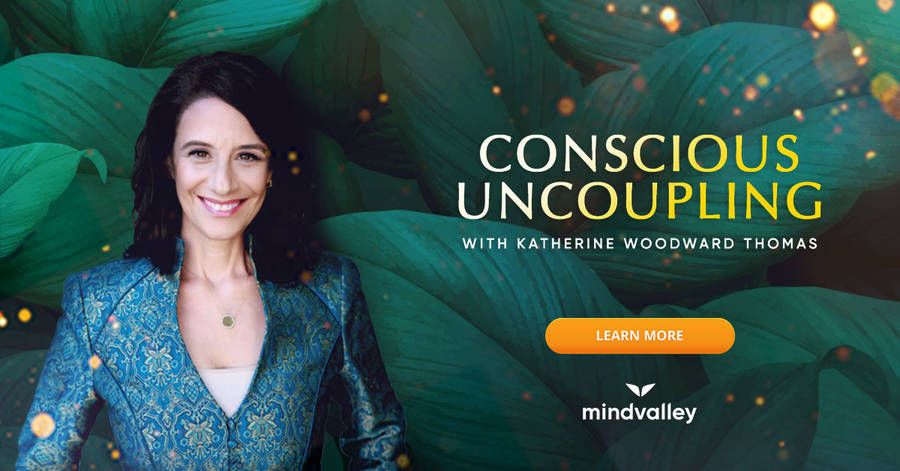
The post 9 Ways to Deal With Jealousy and Hatred From Others appeared first on FinerMinds.
Which Zodiac Sign Should You Date (or Avoid Completely)? 29 Jan 2019 11:44 AM (6 years ago)
Sometimes no matter how strongly we feel about another person, our relationship feels like a battle we will never win. If a relationship is struggling, knowing the zodiac signs compatibility and how they interact can be useful.
Relationship problems often happen because the energy of the different people in the relationship just doesn’t mesh. Their energy pushes against each other rather than intermingling to create something sublime.
A person’s astrological chart can tell you a lot about their energy. Looking at someone’s sun sign alone can only give you a broad-brush picture of their natural energy – a full birth chart is needed for a more refined and personal picture.
Incompatibilities: Zodiac Signs That Should Not Date
Aries (March 21-April 19)
Aries have the drive to excel and be the best. This gives them a charisma that can be extremely attractive, but their focus on themselves can quickly drive people away.
 Aries tends to be so focused on their feelings and desires that they can miss important signals about how the other person in the relationship is feeling.
Aries tends to be so focused on their feelings and desires that they can miss important signals about how the other person in the relationship is feeling.
This makes Aries pretty incompatible with Cancer, whose deep empathy and awareness of others leaves Aries seeming shallow and selfish.
Aries should practice learning to put themselves in their partner’s shoes to have better relationships.
Taurus (April 20-May 20)
Taurus is highly in tune with the needs of others, making them a sensitive and empathetic partner.
 They can tend to put their partner’s needs above their own, to such an extent that they end up making themselves unhappy. They then blame their partner, even though they never asked Taurus to make the sacrifices that they chose to make.
They can tend to put their partner’s needs above their own, to such an extent that they end up making themselves unhappy. They then blame their partner, even though they never asked Taurus to make the sacrifices that they chose to make.
Taurus and Leo don’t make a good match, as Leo will feed on Taurus’ tendency to worship them, quickly draining Taurus of their spirit.
Taurus should work on knowing what is important to them personally and putting this first to improve relationships. Partners will respect them for it.
Gemini (May 21-June 20)
Gemini is always the life of the party and can get on with anyone. They jump into new relationships quickly, but their changeable nature means that they are often short-lived as they look for the next adventure. Partners may find Gemini’s lack of focus frustrating and interpret it as insecurity.
they look for the next adventure. Partners may find Gemini’s lack of focus frustrating and interpret it as insecurity.
Gemini can struggle in relationships with Virgo and Pisces. Both signs want to form a deep and exclusive connection and can find it difficult to live with Gemini’s flighty nature.
To have better relationships, Gemini should focus on looking for the newness and adventure in what they already have, rather than always looking outwards for the next thing.
Cancer (June 21-July 22)
Cancer is extremely intuitive and empathetic and can form deep connections with others quickly.
 They have an instinctive aversion to conflict and will do almost anything to avoid it. This is useful when it comes to working through the rough patches that all relationships suffer, but they can tend to flex too far and then suffer in silence, leading to resentment.
They have an instinctive aversion to conflict and will do almost anything to avoid it. This is useful when it comes to working through the rough patches that all relationships suffer, but they can tend to flex too far and then suffer in silence, leading to resentment.
Cancer is least compatible with Aries and Libra. Aries focus on themselves will take advantage of Cancer’s tendency to flex, and quickly spoil the relationship. Libra is a pleaser like Cancer, and when together they can both compromise so much that neither gets what they need.
To improve relationships Cancer needs to work on knowing when to flex and when to stand firm.
Learn How to Create & Achieve Success In Your Romantic Relationships and Every Other Aspect of Your Life in This FREE Masterclass>>
Leo (July 23-August 22)
Leo is self-confidence and dominant, and always need attention and to feel like a superstar. While they are always loving and generous in relationships, they are also focused on their own needs, and can often unwittingly trample on the needs of others to get what they  want. They are also very controlling and struggle when things aren’t their way.
want. They are also very controlling and struggle when things aren’t their way.
Leo and Taurus don’t make a good match, as Taurus’ flexibility means that they are easily trampled by Leo. A Leo will also struggle with Scorpio, who is also dominant and controlling, as they will struggle to compromise.
The Leo person needs to learn to share both the limelight and control. This zodiac sign should realize that just as they thrive off these things, so will the person they’re dating or in a relationship with.
Virgo (August 23-September 22)
Virgo knows who they are, and they stay true to that person at all times. Despite this self- awareness, or perhaps because of it, they are generally overly critical of themselves. They worry that others see the same flaws that they fixate on. This can lead to insecurity in relationships.
awareness, or perhaps because of it, they are generally overly critical of themselves. They worry that others see the same flaws that they fixate on. This can lead to insecurity in relationships.
Virgo is least compatible with Gemini and Sagittarius as neither tends to reinforce Virgo’s ego in the way that they need, and their independent tendencies can feed Virgo’s insecurities.
Virgo needs to work on accepting themselves for who they are and accepting that others can love them as they are, flaws and all.
Libra (September 23-October 22)
Libra is naturally social and feeds off the energy of others. This can make them very focussed on finding a romantic partner, which can sometimes come across as a bit needy.  Libra will bend over backward to make a relationship work. However, this can often see them sacrificing their happiness in the process.
Libra will bend over backward to make a relationship work. However, this can often see them sacrificing their happiness in the process.
Libra and Cancer make a difficult pair as both tend to compromise too much, meaning that no one in the relationship gets what they want.
To improve relationships, Libra needs to work on knowing what they need in life and a relationship and speaking up about those needs.
Scorpio (October 23-November 21)
Scorpio is ambition and focused and tend always to get what they want. They are secretive about their feelings, though never dishonest, and they can’t stand dishonesty in others.  Scorpios have a tendency to be jealous and suspicious, and this often manifests in unhealthy ways.
Scorpios have a tendency to be jealous and suspicious, and this often manifests in unhealthy ways.
Scorpio doesn’t mesh well with Leo or Aquarius. These zodiac signs are both dominant and controlling and should know that they will struggle to make the necessary compromises to make a relationship or dating work. Aquarius is too secretive for Scorpio, pushing many of their suspicion buttons.
Scorpio needs to work on their jealous streak, and understanding when their partner’s actions justify their suspicions, and when their jealousy is more about their own insecurities.
Sagittarius (November 22-December 21)
Always ready for an adventure and with an infectious sense of humor, Sagittarius never stays in the same spot for long. They treasure their freedom above all things. A Sagittarius struggles against anything that threatens to hold them down, including relationships. They  also tend to be a little tactless and superficial.
also tend to be a little tactless and superficial.
They do not make a good pair with Virgo or Pisces. Sagittarius will feel tied down by both signs, and Virgo and Pisces will be particularly unaccepting of Sagittarius’ flippant tendencies.
Sagittarius needs to remember that words can be weapons and to wield them wisely. They also need to remember that not every new adventure requires abandoning all that came before.
Capricorn (December 22-January 19)
Ambitious and hard-working, Capricorn focuses on building safety and security in life.
 They are fiercely independent and are always loving in relationships. However, they are reluctant to make serious sacrifices of any of their own needs and desires for their partner.
They are fiercely independent and are always loving in relationships. However, they are reluctant to make serious sacrifices of any of their own needs and desires for their partner.
Capricorn struggles with Aries and Leo, as all these signs find it difficult to make the required compromises to accommodate the needs of others. Capricorn also doesn’t make a good match with Libra. If these zodiac signs date, Capricorn should know that their inability to give will quickly sap Libra of their joy in the relationship.
Capricorn needs to work on their generosity. They must accept that if they expect other people to make compromises for them, they will need to do the same.
Aquarius (January 20-February 18)
Aquarius may seem shy and quiet, but they are just playing it close to the chest. They are eccentric, energetic, and adapt easily to new situations. Their biggest challenge is the  feeling of being limited or constrained, including in relationships.
feeling of being limited or constrained, including in relationships.
Aquarius are least compatible with Taurus and Scorpio as both tend to be controlling, and Aquarius finds this stifling.
Aquarius needs to make sure that their sense of independence isn’t interpreted as neglect by their partners.
Pisces (February 19-March 20)
Friendly and selfless, Pisces thrive in the company of others. Never judgmental, Pisces are always accepting and forgiving, though in relationships they can tend to forgive when they  shouldn’t. Pisces has a desire to be liked by everyone they meet. They can sometimes go a bit far to achieve this.
shouldn’t. Pisces has a desire to be liked by everyone they meet. They can sometimes go a bit far to achieve this.
Pisces is least compatible with Gemini and Sagittarius. A Pisces may think that both are a bit superficial and can’t give them the deep connection that they seek.
The Pisces person needs to remember that it is not important that everyone they meet likes them, and that showing their true selves is more important than being liked.
Should Zodiac Signs Dictate Who You Date or Choose to Be in A relationship with?
Some signs are generally incompatible, and the relationships between these signs will always be difficult. This doesn’t always mean that you should give up if you love the person. But knowing why your energy is pushing against each other can be useful in deciding whether to continue and when to try to make it work.
Gain Instant Clarity On What You Really Want In Life – And Have It All
There’s a reason that so many brilliantly talented, naturally creative, intelligent and capable people never reach their potential, and it is, quite simply, a lack of direction.Even if you have a vague goal in mind, you still need a plan, a process to get you there.
You can have the most expensive, fastest car in the world, but if you set off without a clear idea of where you’re going, then the rusty old Beatle with a map and compass will beat you there every time.
If You're Ready To Experience The Extraordinary Life Design System That Gives YOU The Power To Author Your Ultimate Life, Then Join Jon & Missy Butcher's Free Masterclass
Where You will Learn:
 Are you stuck on the hamster wheel of life, instead of rushing towards your fullest potential? Discover how to escape the 3 soul-crushing reasons most people unknowingly cheat themselves of their greatest lives.
Are you stuck on the hamster wheel of life, instead of rushing towards your fullest potential? Discover how to escape the 3 soul-crushing reasons most people unknowingly cheat themselves of their greatest lives.
 Do you always set goals and rarely achieve them? It’s not your fault – traditional goal-setting is seriously incomplete! Discover how Lifebook empowers you to rapidly and consistently take charge of your life, and realize your every dream.
Do you always set goals and rarely achieve them? It’s not your fault – traditional goal-setting is seriously incomplete! Discover how Lifebook empowers you to rapidly and consistently take charge of your life, and realize your every dream.
 Experience the ‘Instant Clarity’ exercise: a powerful visualization exercise that guides you through your ideal day – and gives you instant clarity on who you really are, and what kind of life you really want to be living.
Experience the ‘Instant Clarity’ exercise: a powerful visualization exercise that guides you through your ideal day – and gives you instant clarity on who you really are, and what kind of life you really want to be living.
Step Into The New Year With A Crystal-Clear Vision For Your Ultimate Life

The post Which Zodiac Sign Should You Date (or Avoid Completely)? appeared first on FinerMinds.
5 Tips To Increase Productivity At Work 28 Jan 2019 5:04 AM (6 years ago)
For your business to run smoothly and profitably, you must have an idea of how to increase productivity at work. The relationship between the quantity produced and the resources used is significant in every company to lead various markets.
You should be more deliberate on how you use your time. Making small changes and turning them into habits will have a positive impact on your productivity. You’ll be able to complete quality work within a brief time. Good productivity is not only based on working hard but also on working smart. You should be able to balance between production, quality and the use of resources, and for this having a healthy work space is essential so you can give your best in the place you work.
Below are the tips that will ensure productivity in the workplace;
1. Two Minute Rule
Many people prefer giving priority to tasks that require a lot of time and those that need less time are done afterward. You should always keep the Two–minute rule in mind where functions that can be done within two minutes or less should be tackled immediately to save time rather than having to get back to it after finishing other work.
2. Don’t Multitask, Work on One Task at a Time>
Avoiding this will help you to increase your concentration since you’re dealing with one job at a time. When multitasking you will end up doing the task in the wrong way. You can be tempted to tackle more than one task especially when they are small tasks, but you should take one at a time, you’ll even finish faster than when multitasking.
3. Utilize Modern Software
Utilizing modern software has a tremendous amount of potential to increase your workforce productivity, save you time and money. Current software simplifies complex business processes.
Video conferencing can be of great benefit to the company as it cuts on cost and time. This reduces wastage of time and amount as employees don’t have to travel for business purposes or have a meeting.
Internet software, on the other hand, enables you to create online pages that will bring together social conversation and knowledge management, this cuts down the time spend to send information to the employees one by one as the report is posted on the online page hence every worker will access it there.
Modern software helps you in keeping business information up to date rather than trying to find it on files cabinet. Technology provides business analysis that will help you to know how the business is progressing and customer’s preferences.

4. Take Breaks productivity
A whole day of working without rest consumes your brain capacity reducing productivity. Taking a break while working may be seen inappropriate and wastage of time but guess what? It is one of the methods of increasing productivity in the business.
When you’re taking long tasks that require a lot of time, it is advisable you take a short break because you will increase your concentration hence maintaining your level of performance. You should take exercise breaks once in a while like going to the gym this will enhance the functioning of your brain-boosting your brain power and memory giving improved concentration.
Taking a 10-minute nap on your desk will increase productivity because it will help in rebooting body system. Many people get new ideas while they are relaxing and a clear perspective of their work. Breaks will help in preventing avoidable accidents that may occur in the workplace due to fatigue and stress from work.
5. Eliminate meetings that are useless
One of the interruptions in most of the companies is unnecessary meetings. Eliminate useless meetings that consume time and resources that could have been used to do something productive and as you know time is money!
Holding stand-up meetings have some advantages it increases group concentration, increased good performance and saves time. These less useful meetings crush morale killing productivity of the employees.
Having one session per week will ensure you have uninterrupted time that will help in productivity.

6. Turn off All the Notifications
You should turn off all the notification when doing work to avoid losing your focus. When you hear the notification sound from your gadget, you’ll always be tempted to leave what you’re doing and have a look at the information whether its e-mail, text message or voice mail.
The quality of your work is mainly determined by how well you’re focused so you should avoid anything that comes between you and the task taken.
How to be productive at work should be one of the most important and motivating things that must be ringing in every worker’s mind since that is their primary goal, and by doing this, running of the business will be efficient.
Throughout the workday you should keep asking yourself, are you working towards your goal? If the answer is «Yes», continue with the progress, but if «No» you need to refocus on the target. It requires you to be highly disciplined to follow the tips presented in this article.
Be confident at what you are doing, and by the end of the day, your profit will be acquired.
The post 5 Tips To Increase Productivity At Work appeared first on FinerMinds.
How to Know If She’s The One: Top 12 Surprising Signs 28 Jan 2019 4:47 AM (6 years ago)
If you have a woman by your side that makes you smile when you look at or even think about her, then it might be safe to say that you already found someone who makes you extremely happy and in love.
If you’re always searching for signs on how to know if she’s the one for you, we’ve got you covered. We’ll go over the top 12 signs that will help you make the right decision. We’ll also help you figure out how to tell if a woman likes you and whether or not she’s the one for you.
How to Know If She’s the One
 Many qualities can make you fall in love with a person. We’ve selected 12 of them today, so if your woman has all or most of these qualities, she’s the one for you.
Many qualities can make you fall in love with a person. We’ve selected 12 of them today, so if your woman has all or most of these qualities, she’s the one for you.
1. Smart and Competitive
Scientists all over the world have been trying to figure out the difficult things we all deal with in life, like relationships and love. They have spent massive amounts of time and effort trying to figure out how people interact with each other and why some go together like puzzle pieces while others are obviously a bad match.
When you are looking for a soul mate or a “partner-in-crime” as some people say, make sure that she challenges you both on an emotional and intellectual level.
Having an intelligent woman by your side can help keep you on your toes. She’ll keep on challenging you, making it easier for you to succeed and grow as a person.
2. Honest
This is a rare quality that not a lot of people possess nowadays. Many people are not honest because they are insecure. They also want to be portrayed as good people, so sometimes they lie.
If you find a woman that’s honest both with you and others, you need to do anything you can to keep her.
Learn How to Create & Achieve Success In Your Relationship (and Every Other Aspect of Your Life) in this FREE masterclass>>
3. Has a Positive Outlook
 A woman who has a positive mind is always more cheerful and happy and approaches things with optimism and positivity. She can encourage you to become a better and more positive person and make you change the way you look at life in general.
A woman who has a positive mind is always more cheerful and happy and approaches things with optimism and positivity. She can encourage you to become a better and more positive person and make you change the way you look at life in general.
One proven way to tell if your girlfriend has a positive outlook of life is that she believes in herself and others, and knows how to make the best out of any situation.
4. Knows How to Compromise
All relationships have their ups and downs. The only thing that matters is how you handle the not-so-great moments of your relationships and whether or not you know how to compromise.
A woman who knows how to compromise and make the best out of a tough situation without blaming others is a woman you want to have by your side for the rest of your life.
5. Laughs at Your Jokes
The basis of a healthy relationship is knowing how to make each other laugh, even at each other’s expense. That’s why it’s important to look for a woman who has a similar sense of humor to yours and finds this quality to be important.
6. Has an Open Heart
Women who can share their ideas and feelings with their partner can easily create trust in their relationship.
Privacy is also important in relationships, so make sure not to ask too much of your partner, especially if it’s a raw and emotional subject that your partner is not ready to discuss with you yet.
7. Supportive
You should pursue a woman who is supportive and caring and who encourages you to improve yourself and keep growing as a person.
8. Has a Good Relationship with Her Parents
 An excellent way to find out if you’re dating someone compassionate and loving is to analyze her relationship with her parents. If she values respect and responsibility, then she is the right choice for you.
An excellent way to find out if you’re dating someone compassionate and loving is to analyze her relationship with her parents. If she values respect and responsibility, then she is the right choice for you.
9. Knows the Value of Money
A good and considerate partner knows the value of money and knows how to save up. If this is an important quality to you, then you should look for the same in the person you want to spend the rest of your life with.
10. Kind
This is an important and treasured quality. It may just be what attracted you to her in the very first place.
Finding a kind and generous person is not an easy task these days. Therefore, if you’ve managed to find a woman who has these qualities, keep her close, and never let her go.
11. Calm
Knowing how to resolve quarrels and fights calmly and respectfully is a quality you don’t come across too often. Staying calm in heated situations is a virtue not all of us possess and it’s invaluable.
12. Accepts Your Flaws
A person that you should consider holding onto for the rest of your life is someone who accepts your weaknesses and flaws. She understands that not all humans are created equal and that nobody’s perfect. She also realizes that imperfection can be turned into something awesome and great, and she loves you for who you are.
If you have a woman that has all or most of those qualities, hold onto her tight and never let her go.
Gain Instant Clarity On What You Really Want In Life – And Have It All
There’s a reason that so many brilliantly talented, naturally creative, intelligent and capable people never reach their potential, and it is, quite simply, a lack of direction.Even if you have a vague goal in mind, you still need a plan, a process to get you there.
You can have the most expensive, fastest car in the world, but if you set off without a clear idea of where you’re going, then the rusty old Beatle with a map and compass will beat you there every time.
If You're Ready To Experience The Extraordinary Life Design System That Gives YOU The Power To Author Your Ultimate Life, Then Join Jon & Missy Butcher's Free Masterclass
Where You will Learn:
 Are you stuck on the hamster wheel of life, instead of rushing towards your fullest potential? Discover how to escape the 3 soul-crushing reasons most people unknowingly cheat themselves of their greatest lives.
Are you stuck on the hamster wheel of life, instead of rushing towards your fullest potential? Discover how to escape the 3 soul-crushing reasons most people unknowingly cheat themselves of their greatest lives.
 Do you always set goals and rarely achieve them? It’s not your fault – traditional goal-setting is seriously incomplete! Discover how Lifebook empowers you to rapidly and consistently take charge of your life, and realize your every dream.
Do you always set goals and rarely achieve them? It’s not your fault – traditional goal-setting is seriously incomplete! Discover how Lifebook empowers you to rapidly and consistently take charge of your life, and realize your every dream.
 Experience the ‘Instant Clarity’ exercise: a powerful visualization exercise that guides you through your ideal day – and gives you instant clarity on who you really are, and what kind of life you really want to be living.
Experience the ‘Instant Clarity’ exercise: a powerful visualization exercise that guides you through your ideal day – and gives you instant clarity on who you really are, and what kind of life you really want to be living.
Step Into The New Year With A Crystal-Clear Vision For Your Ultimate Life

The post How to Know If She’s The One: Top 12 Surprising Signs appeared first on FinerMinds.
6 Ways Your Past Memories May Be Deceiving You 15 Jan 2019 4:53 AM (6 years ago)
The past is a nice place to visit, but not a good place to stay. Past memories are a certain reflection of where we come from. Our minds are always running in a loop. This loop runs through the past, present, and future. Sometimes our memories of the past are reshaped with the current events of the world and in our lives. This is why it is important to preserve your precious memories in a medium where you’ll know that will last a long time. There are services offered by an online place that can preserve your Instagram photos and many other things.
Our mind works in two different ways: the fast and the slow. The slower act of the mind is more detailed. By that, we always try to predict the future and check if the present matches with it. We only become aware of this process once our prediction goes wrong. Whereas, the faster action of the mind is abrupt and often based on judgments. It helps us judge a person in no time. We tend to be able to study their body language and can also judge our surroundings better.
The faster actions deal with smaller issues. And the slower system can tackle bigger problems.
The illusions we get are often derived from the lapses that occur in the faster system of the mind. It is quite possible to experience many.
Here are 6 distinct ways past memories become illusions
1. The Fluency Effect
When one item influences the awareness of others, a priming effect takes place. We have a tendency to predict things based on what has happened before. So it all depends on the information we feed in our memories. If it is fluent and transparent, its easier to register. But if we face trouble processing all the information, we tend to ruin it.
And how do we do it?
We end up picking false information. Since there is no continuation, we never realize the lack of truth in it. Any information, hence, when easy to register, is more beautiful.
2. Storytelling
“All the world’s a stage, and all the men and women merely players”
According to Shakespeare, we are all living a story! And rightly so! Our story begins from the past, continues in the present and ends in the future. All that we wish to achieve are but narratives to the same.
Stories excite us in general. If we listen to a story, we are completely immersed in it. Listening to one side of any story is far more distracting than listening to both sides. As mentioned before, any information processed easier is easier to believe.
So is the case with stories and such is the power of storytelling. We tend to believe in them more than we should.
3. Knowledge as a Curse
The curse of knowledge makes us overestimate our ability to learn and predict. It states the problems involved in being able to inhabit the mental state of mind of someone else.
People who are better informed, end up restricting themselves. They are unable to take someone else’s perspective.
The effect of believing that an event was predictable only after it occurs, is the hindsight bias. Whenever anything happens, we make a story around it using our minds. We present ourselves a story so that the information we process is fluent. We make it feel like it was and is predictable whereas it is not so.
4. Implanted Memory
Every time we recall a memory, we discover something new about it. This new information gets altered in the previous memory. When we revisit it again, we start with altering the newer version again.
The power of our mind is such that we keep on modifying the facts that we recall until it also becomes a false event. Most of the memories we hold to our hearts are but upgraded versions of what actually took place. We also tend to forget the initial stories, which is why improving memory is important.
Join the foremost expert in memory improvement and brain performance and transform the way you think, learn, and live in this FREE Masterclass>>
5. Memories are Contagious
Our memories are not just ours, there are other people and events involved too. When we get together to talk about the memories that both share, we often get a mixed version of it. We also recall how we had forgotten the experience the other person just shared.
As much as people change, their memories also can. Even the slightest of changes in questions after an event can change everything. The perception of individuals, more precisely.
As quoted by Oscar Wilde, “Memories is the diary that we all carry with us.”
They are not only a reference to our past but also help us predict our future. They are sweet and bitter reminders of what everything that has shaped you up.
Memories also hint on areas where you lack. You end up learning new skills to upgrade yourself from the teachings of the past. Memories can be very vulnerable and the illusions that come with it may frighten us, but they are what makes us up.
It is important to be skeptical and question our beliefs. If we are more aware and have greater insight, we can save ourselves from the illusions of the past. In this way, we can make our life happen! These illusions are dangerous to our minds and heart.
Question them, always.
The post 6 Ways Your Past Memories May Be Deceiving You appeared first on FinerMinds.
The Conscious, Unconscious and Superconscious Mind 14 Jan 2019 10:50 AM (6 years ago)
If we pay closer attention to our inner selves, we’d realize that our mind is a trinity of the conscious, unconscious and superconscious mind. Let’s take a closer look at all three levels of consciousness in order to better understand how our mind works.
What is the Conscious Mind?
 The conscious mind can be thought of as the computer-like function of the mind. The conscious mind plays a unique role: it keeps us safe.
The conscious mind can be thought of as the computer-like function of the mind. The conscious mind plays a unique role: it keeps us safe.
Let’s take a look at how it works in conjunction with the other two functions of the mind to make us aware of insights and information that come to us in subtle, barely noticeable messages.
When discussing the power of the conscious mind, E. Stanley Jones once said,
The conscious mind determines the actions, the unconscious mind determines the reactions; and the reactions are just as important as the actions.
To most people, it is our conscious mind that determines who we are. However, in reality, our conscious mind is just a small portion of who we actually are. It is a very small part of how the three functions of our mind enable us to communicate with the universe.
Just because our conscious mind is easily accessible, it doesn’t mean it’s the instrument that completely determines who we are, what we do, and why we do it. It is merely the vehicle that allows us to easily communicate through speech, pictures, writing, physical actions and a shallow form of thought.
The Role of The Conscious Mind
Our conscious mind is our objective mind. It has no memory, and it can only hold one thought at a time. It functions to identify incoming information using our senses; sight, sound, smell, taste, touch, and feeling.
Our conscious mind is continually observing and categorizing (sometimes correctly and sometimes incorrectly) what is going on around us. It’s the part of our mind that can’t be fully trusted.
It is continually sorting impressions and consequently deciding which are relevant and which are not.
The subconscious is often influenced by past actions and previously wrong decisions and is like a binary computer. It accepts or rejects things in a simple “yes” or “no” manner in order to make a decision. It deals with one thought at a time: positive or negative, yes or no.
The benefit of this kind of thinking is to preserve our lives. It enables us to make a “go, no go” decision quickly. Our subconscious, on the other hand, is like a huge memory bank. Its capacity is virtually unlimited and permanently stores everything that ever happens to us.
The Subconscious Mind at the Helm
Now that you know how the conscious mind works, let’s take a closer look at the subconscious mind, the role it plays in our lives and its connection to intuition.
I n exploring the level that exists just below that of our conscious awareness, we come to the subconscious mind. It is the part of our mind that records everything we do; every activity we engage in, each thought we have about those activities, and the likes and dislikes we encounter each day. It is the part of our mind that takes the wheel when we sleep, dream, and behave according to beliefs of which we are not aware.
n exploring the level that exists just below that of our conscious awareness, we come to the subconscious mind. It is the part of our mind that records everything we do; every activity we engage in, each thought we have about those activities, and the likes and dislikes we encounter each day. It is the part of our mind that takes the wheel when we sleep, dream, and behave according to beliefs of which we are not aware.
Although nothing is forgotten by the subconscious mind, this part of our consciousness remains hidden from our everyday awareness. However, that does not exclude it from influencing how we think and act in our conscious state.
In other words, the subconscious influences much of what we do each day, but those influences are from past actions and the habits we have created from them. This means the ideas drawn from the subconscious are not going to be new and creative.
It is our subconscious mind that provides meaning to all our interactions with the world—meaning as it is filtered through your beliefs and habits.
Learn How to Bend Reality and Make the Impossible, Possible in this FREE Masterclass>>
How the Subconscious Mind Functions
The subconscious mind communicates information through our feelings, emotions, imagination, sensations, and dreams. Our current understanding of consciousness is rigid. It fails to give recognition to the conscious experiences outside the definition of normal. Such experiences are considered fake, abnormal, or unnatural.
Normal consciousness is earthbound and is only normal in the sense that is it well known; you are aware of something on the outside as well as some specific mental functions happening on the inside.
It is important to know that our subconscious mind can’t move outside its fixed norms – it reacts automatically to situations using previously-stored behavior responses. It works without the knowledge or control of the conscious mind. This is why we are often unaware of our behavior.
Studies from as far back as the seventies show that our brains begin to prepare for action 0.2 sec before we consciously decide to act. In other words, even when we ‘think’ we are conscious, it’s our subconscious mind that is actually making decisions for us.
The Superconscious Mind & the Land Beyond, Beyond
 The Super-conscious Mind! This ever-exhilarating but complex super-consciousness is a level of its own. This is the third level of the mind that guides us in our journey through life.
The Super-conscious Mind! This ever-exhilarating but complex super-consciousness is a level of its own. This is the third level of the mind that guides us in our journey through life.
Let’s tackle this exceptional mind space, aka, the superconscious mind.
While the conscious and subconscious minds are familiar to us, the superconscious mind remains unknown and mysterious.
It is the hidden spiritual system behind intuition, spirituality, and physical and spiritual healing. It is the problem-solving part in us and allows us to feel such things as joy, excitement, and empathy. The work of our superconscious mind is often overlooked when we aspire to live a richer, more meaningful life.
While we are familiar with the fleeting moments of raised consciousness, few know the technique for purposely entering the exalted state of superconsciousness.
Superconsciousness is the state reachable only through meditation, chanting, affirmation, and prayers specifically designed to lead us into a state of superconsciousness.
It is the superconscious mind that makes humans possible of achieving greatness and elevating the human spirit.
The idea of higher consciousness is rooted in the notion of reaching a higher self that transcends reality. It is the essence of human existence that makes us capable of going beyond the confines of the physical world and the trappings of logic.
#StarTrek Wraps It Up!
Now that we’ve covered all three states of the mind at length, let’s wrap it up with a simple illustration of how important each state of consciousness is. For that purpose, let’s go back to a popular Star Trek: Generations episode, “Loud as a Whisper.”
It is an episode in which a deaf mediator is enlisted to solve a planetary dispute. He cannot speak, but has a chorus of three personalities that exist within him and speak aloud for him. One is logic and judgment, the second, passion and romance, the third—like the superconscious—is that which binds all three together. It is harmony, wisdom, and balance.
While the analogy is not exact, the episode gives us an idea of how our three minds interact—each mind serving a purpose with the superconscious working to combine all three to create a higher form of existence.
The post The Conscious, Unconscious and Superconscious Mind appeared first on FinerMinds.
Why You Should Opt for Kindness vs Niceness 9 Jan 2019 2:37 PM (6 years ago)
Being kind is different than being nice. Most of us are nice most of the time. Being nice is something we are taught to us from the time we are little kids: Be nice to your Sister. Share your toys. Help your mother with the dishes.
It’s nice to be nice. It feels good to do something thoughtful for someone else and it usually only takes a minute or two. Being nice is good, but it is different than being kind.
Kindness requires us to offer two things that can be very difficult to give in our world today: empathy and time.
Empathy means putting yourself in another person’s place. Often that means slowing down and offering your time to another person when they really need you.
It’s nice to send someone a text or an email when they are having a hard time. Kindness means taking the time to pick up the phone and call them. Kindness is stopping by someone’s house to sit with them and just listen.
It’s nice to offer a homeless person a dollar on the street, but a kindness might be to stop and tell them that you are thinking about them and that you hope things get better for them soon.
Sometimes kindness can be very hard to offer because it can be uncomfortable. It can be hard to sit with someone who is dealing with difficult things in their life. We typically want to try to ‘fix’ the problem, when often there is nothing that you can do. But offering your time, just being there and listening is a kindness that few people are willing to offer these days.
This difference between nice and kind is often most apparent to me when I think of my wife and myself. I’m a nice guy. I think most people would say that of me. I am friendly to people, I’m a good guy at work, I have good manners, and I generally try to do the right thing.
My wife, on the other hand, is kind. She invests herself with both time and genuine empathy for others. Not only does she do volunteer work, but she also takes the time to sit with people and get to know them. She goes out of her way to slow down and listen to people when she can tell they are struggling.
Here’s an example of what I mean.
A member of my family has been having some health issues lately. I have been reaching out regularly via text and phone to check in and see how they are doing. I’m doing what I can to try to support them from a distance since they live 6 hours away. I’ve been very supportive, and I know it helps raise their spirits when I call. I’m very nice to them.
On the other hand, my wife was talking to a friend of hers the other day whose child is struggling in high school and with finding their way in general. They are family friends, so we know their kids. With the mother’s permission, my wife reached out to this young man and went and met him for coffee. She spent over an hour with this kid talking about his ambitions, dreams, hopes for the future, sharing her experiences, etc.
She never tried to change the kid, just showed him understanding and invested her time and compassion in him, and she came home feeling amazing.
That is kindness. It is that willingness to go the extra mile to invest yourself in another person. In my mind, that takes more than caring; it takes courage.
You never know what you’re going to get when you truly put yourself out there for another person. Sometimes you have a great experience where you both feel better. Other times you may just feel sadness and a sense of frustration that you can’t do more to help the other person.
Extending kindness isn’t always clean and easy. But I can guarantee you that no matter the outcome, investing yourself in others you will have made a ripple of love and kindness in the ‘universal pool.’ That ripple can spread far and wide, making the world a much better place.
The post Why You Should Opt for Kindness vs Niceness appeared first on FinerMinds.
Conscious “Uncoupling”: How to Have (and Get Through) a Healthy Breakup 6 Jan 2019 9:01 AM (6 years ago)
Just because a relationship ends, it doesn’t mean it’s over. When we take a lover, it’s as though we breathe this person into the very center of our soul, inviting them to take up residence and root down within us.
In the bloom of romance, this joining can be one of the most beautiful experiences we’ve ever had. You and your partner may begin thinking one another’s thoughts, sensing one another’s feelings, merging your worldviews, and assimilating each other’s preferences and rhythms as though they are your own. Becoming, as the Good Book says, “one flesh.”
Excavating your former love from the inner landscape of your psyche can be an excruciating task. If you have ever tried to untangle badly matted hair, you might begin to understand working through grief.
The Death Of Love
Even when the external breakup is quick, the inner one rarely is. It’s no wonder then that we’ll often try to shortchange the grief process by allowing anger to take over.
In an attempt to emotionally disconnect and avoid the pangs of sorrow, we may allow anger to consume us. It quickly moves us from a “soul mate” to a “soul hate” connection faster than we can say the words, “Let’s just be friends.”
At first, hating your former love seems like a good idea because it can help you detach from him or her. If you ever hope to have a happy, healthy future love, you need to learn how to disconnect healthily.
Your next relationship won’t begin when you meet your next partner, but when you’ve dealt with your previous one.
And besides, inside the blinding rage and festering resentments, you risk doing a tremendous amount of damage to yourself and others, as well as steal the energies you need navigate this ending in a way that will allow you to reclaim our power, and reinvent your life to be even better than it was before.
The feelings that can come up during a breakup are so big that they can be really hard to navigate without getting into trouble. Big rage, hurt, hopelessness, powerlessness, desire for revenge – all threatening to overwhelm us. They can cause us to behave in ways that are completely outside of who we want to be.
In the midst of these feelings, we can suddenly find ourselves out of control, saying all sorts of horrible, undermining and nasty things that we never thought we’d say, and doing and all sorts of heinous, monstrous things we’d never thought we’d do.
After all, hurt people hurt people.
How To Move Past The Hurt

We can learn how to hold and harness the energy of these difficult, big emotions. We can transform them from the energy of destruction and into the energy of change. This can serve as a powerful catalyst for us to take a huge leap in our own growth and development.
We can learn to use all of the energy to empower us to graduate forever from our old hurtful and disappointing patterns in love. You can honor this loss by harnessing the opportunities for growth it inherently holds.
In other words, if navigated wisely, you can learn through this suffering how you can ensure that you never, ever, EVER have to go through this again.
The Buddhist monk, Thich Nhat Hanh, wisely says that “anger is the garbage of all emotion, but it takes garbage to make compost, and it takes compost to make a flower.” Every difficult emotion has underneath it, a beautiful gift waiting for you to discover it.
So, if you find yourself indignant and enraged at how poorly you’ve been treated, celebrate that anger and see it as the part of you that is waking up! Relate to it as the part of you that is compelling you to stand for your right to be treated with honor, love, and respect from this moment forward.
Learn to nurture this very healthy impulse underneath your anger and to sponsor that impulse into the light of day by committing yourself wholeheartedly to that which is seeking to evolve and be liberated within you.
The post Conscious “Uncoupling”: How to Have (and Get Through) a Healthy Breakup appeared first on FinerMinds.
Live Well and Right… For Your Type. But Which One Are You? 5 Jan 2019 10:20 AM (6 years ago)
For all our meditation and yoga lovers – you may want to consider introducing yoga’s sister practice into the equation: Ayurveda. Otherwise known as the “Science of Life.”
Ayurveda has been around for more than 5,000 years and starts with the premise that everything in the Universe is made up of the five elements: air, space, fire, water, and earth.
In India, Ayurveda and yoga are practiced hand in hand, each one supporting the other. So much so, it would be unheard of to practice yoga without Ayurveda – like wearing your left shoe without your right one!
From these elements come our three doshas – or our mind and body types – which are called Vata, Pitta, and Kapha.
Because we have all five of the elements in our physiology, we each have all three of the doshas, too, just in different proportions. Our individual mix of elements is unique to us, like our fingerprint.
Typically, one of these three combinations will express itself most strongly, and that is the one that we call our dosha. When we know our dosha, then we understand more about ourselves, and how to best take care of ourselves. The idea is that when we are in balance, then we are at our healthiest and happiest.
The three doshas can be defined as follows:
1. Vatas: Made up of Air and Space
People who are Vata dominant typically look long and lean. Celebrities who are Vata types include Jim Carrey, Uma Thurman, and Will Smith.
Vata types are very creative – think Quentin Tarantino and Steven Spielberg. In fact, you’ll find lots of Vata types in the entertainment business as they thrive in creative careers
However, Vatas tend to get cold easily, so they need to keep their environment warm, and as they’re made up of air and space, they have a difficult time traveling and tend to get nauseous. To help prevent this, they should sip warm ginger tea on the plane that is sweetened with a little brown sugar.
Vatas also have sensitive digestive systems, so should eat warm, cooked foods. As they don’t have much of a reserve in which to store their energy, they need to get lots of sleep and keep to a steady routine. They shouldn’t overdo it mentally or physically – otherwise, they’ll get worn out.
Exercise like yoga, walking, and dancing is good for Vatas. However, they tend to get bored easily as they have a short attention span. Many times what looks like Attention Deficit Disorder is really just a Vata who is out of balance.
2. Pittas: Made up of Fire and Water
Pitta types are more muscular or athletic in their body type. They are highly intelligent and natural leaders. Because of the fire, you often see a redness to Pittas hair or skin. Pitta celebrities include Donald Trump, Madonna, and Brad Pitt. Many professional athletes and politicians are Pittas, as they excel in those fields.
Because of all the fire, Pitta heats up quickly. This can manifest as hot in temperature or hot in anger. Pittas need to stay cool to be in balance and at their best. They have a strong digestive fire, so they can eat raw foods and cool foods without causing digestive problems. However, they need to avoid foods that are spicy, as this gives them too much fire.
Cooling foods like mint, cucumber, and coconut can be great for Pittas. Pittas are good business people, but they can be workaholics – so they need to make sure they get enough fun and play in their lives to balance out their intensity. They tend to like competitive sports.
3. Kaphas: Made up of Water and Earth
Kaphas are mellow, easy going, friendly and sweet. Physically they can look a little heavy. They tend to have dark, thick hair and big eyes and lips. Kaphas are generally beautiful – think George Clooney, Angelina Jolie, and Beyoncé.
They have soft skin, and long eyelashes or thick eyebrows. Kaphas are very loving, and they made good teachers, parents, and doctors. They want to help people, and they make loyal friends.
To stay in balance, Kaphas need to exercise and socialize. They should be running, weightlifting and breaking a sweat every day. When out of balance, Kaphas can get depressed and lethargic. They often need motivating.
Spicy foods are good for Kaphas. However foods they need to avoid include red meat, dairy products, and fried foods. But Kaphas have a sweet tooth, and they love to eat, so keeping them out of the kitchen is a chore!
By learning more about which type of dosha we are, we’re able to understand the needs of our mind and body better.
If you’ve adopted Ayurveda into your daily practice, we’d love to hear about some of the results you’ve experienced in the comments section below.
P.S. Do you practice yoga? Are you struggling to build a yoga practice that you can stick to?
The post Live Well and Right… For Your Type. But Which One Are You? appeared first on FinerMinds.
Happiness: Your Relationship to Self and to Others 29 Dec 2018 3:06 PM (6 years ago)
Modern life can be tough – there’s no doubt about that. The pressures of modern life, from social pressures to economic pressures, can make it hard for us to sustain self-happiness over a long period of time. If you want to get over that issue, however, it pays to understand how happiness relates to you in a personal circumstance.
What makes someone else happy is not the goal that you set to find happiness.
This is why being able to understand that the secret to happiness is often built around understanding your relationship to yourself as much as your relationship with others.
How can you have a good relationship with yourself, though?
For one, you need to accept that you will make mistakes–but don’t always see them as failures.
Instead, look at failure as progress. Often, we learn much more from failure than we do success.
You also need to know where you wish to go in life. Set a clear intention, and stick to it. Many of us don’t know where we want to go, and instead, mask that frustration and uncertainty with self-loathing and unhappiness.
Rather than holding the above thoughts in your mind, try and develop the side of you which is about self-acceptance. Don’t allow yourself to always see failure as a weakness or as some kind of major flaw.
We all have our own limitations. The moment you accept that you will never be perfect and will always have flaws, you’ll find it much easier to care for yourself.
Basic self-care is all about simply looking after yourself. Eat well, do a meditation, regular exercise, or yoga practices, and drink plenty of water to stay hydrated. These things will lower your stress levels.
From daily cleaning and self-care in a physical sense to not allowing yourself to get too down or too elated, you can maintain mental happiness. This makes it much easier to stay in control of your own happiness.
When you don’t allow your happiness to be defined by how close you are to perfection, you will find it much easier to have a happy, healthy relationship with your inner self.
Another mistake we often make is spending too much time wrapped in looking for outward satisfaction. Buying material items or finding short-term pleasures will not make the positive impact you want. It will not make you happy for the long-term. Instead, finding your place in the world and where you stand in relation to others will deliver happiness.
How do you do that, though?
Forming happier, healthier relationships with others
For one, you need to lose the desire and expectation of other people.
Let’s say that you meet someone who is supposed to be really good at a task you are struggling with. You might immediately expect that they can help you. If they can’t, you’ll let it damage your relationship for the long-term.
Rather, ditch the expectation and instead be appreciative of the small helps they can give you. They might not solve the problem for you outright but might give you a short nudge in the right direction. Instead of seeing it as someone holding out on you, and harming your relationship, thank them for the help that they can give you instead. Simply saying thank you for something small will set the tone for a happier, more mature relationship with that person.
Remember that all relationships have their ups and downs, especially in romantic ones. If you believe that one or two negative experiences negate you and your partner’s good points, you are thinking about your relationship in the entirely wrong way.
Creating happiness in personal relationships.
Instead of looking for every day to be perfection, accept that there will be days where you have disputes. It does not mean that you are not right for one another after all; it means that you disagreed, as two intellectual humans who respect each other very much may do.
Avoiding brooding over the concept of ups and downs. This makes it much easier to keep the novelty and playfulness of the relationship alive. When you allow yourself to be engulfed in fear over a disagreement, you ruin the ability to remember all the things that you love about that person – and consequently all the things that they love about you!
Remember that your sense of self is tied to how you perceive others. If you always expected things from others, especially your partner, you will strain your relationships. Strained relationships often then lead us to see things about ourselves which are not true.
Keep that in mind, and in time you should be much more likely to overcome the problems that you currently face. Finding happiness in relation to yourself and others is hard work, but appreciating how it all connects together is equally important.
The post Happiness: Your Relationship to Self and to Others appeared first on FinerMinds.
6 reasons Why Doing This One Thing Brings a More Fulfilling Life 21 Dec 2018 9:07 AM (6 years ago)
When looking to live a more fulfilling life, one of the key things is helping others.
But, do you know why it will help you have a better, more rewarding life? How does it help with making life more engaging and fun? Well, read on to find out. Helping others will make you live a better life, and we will explain why.
1. “Helper’s High”
Did you know that you get a sort of “helper’s high” when you help someone else?
Most of us want to have meaningful lives, in that we make a difference in this world. Helping others can boost happiness, and research shows that engaging in activities like volunteer work can make you feel a lot better.
Workers that are happy are more likely to report that they help others too. You even see this in children, where those that are helping others are much happier than just receiving rewards.
The “helper’s high” is a boost of endorphins that makes you feel incredible, and improves your mood and self-esteem. Helping others does feel good, and usually, helping does more for happiness in those giving it, than it does for the receiver.
2. It Builds Community
If you help others, you’re touching another person’s life in some way, and it will bring you closer to them. It builds trust, and through cooperation, it will not only bring them closer to where you are but also will help you get closer to them.
When we choose to do something for others, we are reinforcing a connection, and it helps you in a much better way than just receiving actions.
3. Regulates Other’s Emotions
Did you know that helping others can regulate the recipient’s emotions? If you have a partner that’s struggling to hold themselves together or a child that’s crying or has a tantrum, helping them can make them not feel as bad, by regulating emotions.
In doing this, we show empathy to others, and we also help them reappraise the situation so that they’re not so controlled by it. By regulating the emotional well-being of others, it definitely can help them feel better.
4. Combats Stress
It might be a strange reason, but it does tie into the other point above. You may think that sometimes helping others will create or add stress to life. Instead, it actually helps us regulate it better.
By helping others, we help to manage the stress of others, and we adapt to stress better. The reason being is by assuming different perspectives. Seeing the challenges that others are going through gives you a different viewpoint, allowing you to be more accepting of the hardships and stress that we face.
Often, people don’t even realize that they’re struggling and they might need a little bit of help. But, by helping others combat stress, we’ll be able to adapt better to the situations around us, build resilience, and overall create a much more positive and impactful result.
5. Good for Careers
There are lots of factors that go into finding a great career: the independence, creative freedom, etc., and also how your work helps others.
If you work as a medical professional or any other field that involves helping others, you get higher job satisfaction because you’re helping others feel better.
Those that tend to be happiest are more committed to helping others. Since they are committed, they’re less likely to leave the career. Even if you don’t directly help others, knowing how it impacts others in some way is essential.
6. Builds Business!
Finally, it builds a business. What’s the goal of any business? Selling a product or service that will help others. Yes, helping is essentially the bread and butter of any business.
Even if you’re just an SEO consultant, you are helping others by getting their business at the top of Google. Gym instructors help others exercise and live a better life, so they’re helping others. Amazon is a business that makes it easier to buy stuff online, which in turn helps others get their items faster.
Those businesses that are money driven seem shadier, and many times, it’s because they’re not helping others.
While some companies are around on the basis that they don’t help others (such as cigarette companies) cigarettes are slowly becoming a dying practice because of how bad they are for you. The tobacco industry is being replaced by alternatives since they help others. So yes, building a business with an intent to help others will definitely succeed, and it makes a difference.
Not to mention that helping others lowers depression rates, puts you in a better mood, and even lowers your risk of dying by about 22%.
Helping others not only does it make you feel good naturally, but it can also ultimately save your life.
So, if you feel like you’re missing out on something, or if you feel like you need a little bit more, then consider trying to help others more.
Perhaps you feel like your career lacks this altruistic element, or you feel like you need something that will help others better. Find that missing element, try to build it up, and create the best business that you can.
If the goal at the end of the day is helping others and building character through those endeavors, then it can make a world of a difference. You’ll see for yourself why helping others is integral to the health and wellness not just of the business, but the overall success of your life too.
The post 6 reasons Why Doing This One Thing Brings a More Fulfilling Life appeared first on FinerMinds.
7 Holiday To-Do’s You Can Choose to Let Go of This Season 19 Dec 2018 12:59 PM (6 years ago)
This time of year, just when it seems impossible to fit one more thing in, we feel pressure to not only add in that one more thing but also to be a more perfect parent, partner, friend.
It’s the holiday season after all, right? The season of giving, and selflessness. And It can be particularly difficult for those of us who are already feeling overwhelmed. Everything we are already doing now gets a whipped topping of holiday parties, gifts, decorating, and managing the general uptick in stress that comes along with the season.
The truth is that not only do we not have to do all of these things but it’s usually better if we don’t. It doesn’t help our loved ones or us when we are so overwhelmed that we can’t relax or enjoy the holidays. And for those of us who are parents, it doesn’t help our children when we model selflessness at the expense of our own health and well-being.
Saying no is like exercising a muscle. The more you do it, the easier it gets (and the better it feels)!
Here are 7 things that you can choose to say “no” to this season if they don’t truly bring you joy — and what you can do instead:
1. Don’t send holiday cards
People may notice the first year. After that? Not so much. Instead, write letters to a handful of your closest friends and family and tell them what they mean to you.
2. Leave the party early
You can get to bed on the early side instead of exhausting yourself staying past your bedtime. You can also usually just skip the goodbyes. Send a text when you get home with a thank you, or even send an email. It helps the hosts to be able to enjoy the party if they aren’t barraged by a parade of people thanking them.
3. Skip making those cookies
If you really want Christmas cookies, go to the local bakery! You’ll save yourself the time, you’ll be more likely not to overindulge, and you’re supporting a local business to boot!
4. Cut down on the gifts
There’s a meme flying around social media this year with a good practice for gifting to children: something they want, something they need, something to wear, something to read. We are shifting to this and adding a fifth—something to give, as in a donation in their name to a cause that aligns with them.
5. Gift bags instead of wrapping
Use gift bags instead of spending time wrapping all of your gifts. And if it’s gifts for your own family the bonus is you get to keep them and reuse them next year. Santa’s thrifty like that.
6. Ease up on the decorations
Just because you’ve always gone big with decorations doesn’t mean you need to. You can choose a wreath on your front door instead of stringing lights all over the yard. You can choose a small tree and your favorite ornaments instead of using all of them.
7. Skip the gym
What?! Yes! And don’t feel guilty about it. You can’t do it all, and when you have myriad commitments on top of your normal schedule sometimes it’s ok to let go of your regular habits for a short time. Consider an extra walk with your family or curling up in front of the fireplace instead.
These are just a few ideas but ultimately decreasing holiday stress and overwhelm is about vetting each choice you make by asking yourself: ‘Does this line up with my values and how I want to feel?’ Remember, it’s rare to feel like you wish you’d added more to your to-do list. Let yourself slow down and enjoy the season. You’re worth it.
The post 7 Holiday To-Do’s You Can Choose to Let Go of This Season appeared first on FinerMinds.
5 Powerful Ways To Boost Your Romantic Life And Be A Happier Couple 17 Dec 2018 1:23 PM (6 years ago)
There is no question to the fact that romance is one of the most important elements in the lives of couples. It’s fun, exciting, and makes you feel good, which is why there is no reason you shouldn’t have more.
Romance is all about getting closer, and the enjoyment of being fully engaged in the relationship. Follow this and boost your romantic life.
Have said that, many couples often get a sense that their relationship lacks the spark after some time. It’s true that turbulence can creep into any relationship at any time, but not to address it can lead to your love’s demise.
With so many distractions in your busy lives, you have to find time to be romantic. It is not too much of a task, plus savoring love-induced moments will strengthen your bond in the long run.
Many people don’t indulge in romantic activities because they feel that they don’t know how. It turns out there is no secret to romance; everything you need to know is right under your nose. However, in certain cases, you need to put some serious efforts to keep the flame of your love glowing.
Here are some useful tips on how you can make your romantic life better and be happy:
1. Communication is the Key
Many studies show that couples with poor communication are some of the most unhappy people. That is why effective communication is a strict recommendation by clinical psychologists to many unhappy couples.
When you have particular issues in your mind, and you choose not to share them with your partner, you contribute more towards the problem. You can’t expect your spouse to read your mind while not speaking up.
Regular communication enables you to sort out all your problems with ease together and have fun at the same time. Also, an important aspect of communication is arguments which are bound to happen in any relationship.
The purpose of any argument should be a solution, rather than a yelling match between you two. Although good communication takes effort, if you let small issues fester, bigger problems will arise.
2. Be Understanding
As a couple, you get together because you believe in the idea of happiness, and you stay together because you still believe you can achieve it. That’s what the power of understanding is.
In building a great relationship and leading a healthy romantic life, you need to fully understand your deeper feelings as well as those of your partner. One of the reasons why some partners complain is because they are not getting their needs met.
The fact is, your needs can vary from individual to individual. So if your partner is feeling disconnected, it’s on you to help her/him feel better. You have to examine feelings inside you – the ones that bring you face to face with your mate.
Constant complaints and criticism will end up in both of you feeling frustrated. Therefore, being understanding strengthens the levels of trust, honesty, and respect.
3. Stand by Your Commitments
In your love relationship, you often feel highs and lows, and there are challenges as well as rewards. Sometimes it feels too difficult to continue, and you may want to give up. Standing on your true commitments keeps your relationship on track and helps you move forward.
Honoring your commitments is a strong indication of your honesty and responsibility. Some people make commitments at the drop of a hat, thinking they can walk away if anything changes their mind.
Sticking to your promises is always a virtue where your partner puts complete trust and faith in you. It also encourages you to focus on the long-term relationship. For that, you have to keep your happiness front and center and focus much on the journey. However, don’t make too many promises that you can’t keep.
4. Plan a Date Night Often
No matter whether you’ve been married for a year or just celebrated your silver-jubilee anniversary, the spark of romance always keeps your relationship glowing with joy.
A living and breathing relationship is one that needs to be nurtured and fed so very often. Start by setting a date night once a month. It doesn’t have to be expensive — just some special time with your partner.
Time and attention are among the most valuable offerings if you want your love to grow. You can communicate to your partner exactly the date that you’d like to have. A much better idea is to surprise your spouse with things that he or she loves. For example, a good element of surprise could be a unique wine bottle with labels that depicts your unconditional love for your partner. This will always freshen up your relationship.
5. Have Fun and Adventure Together
Adventure keeps life interesting. Many experts recommend if you want to breathe a new life in your relationship, go on an adventure trip with your partner and have loads of fun together.
Experienced couples have also suggested that the act of getting outside with your partner can actually help build a stronger relationship. When you decide to hike up a mountain together, you agree on a shared goal. You both want to get to the top, even though you know it’s not going to be easy. You can go to places that the two of you have never visited before.
Research shows that having new experiences together makes you closer.
Final Words
Even if you are facing turmoil in your romantic life, there is always a way to get back on the track and revitalize your relationship. These simple suggestions need you to have an open heart if you want to make things better.
Most people think that learning is the key to self-development.
It’s how we were raised – when we were young, we studied algebra, read history, and memorized the names of elements on the periodic table.But once you grow up and experience life, you realize that you can’t ‘learn’ certain things – like personal growth.
Vishen Lakhiani, founder of Mindvalley and New York Times Bestselling author, discovered that the key to self-development was not to ‘learn’, but rather, to ‘transform’.
If You Want To ‘Transform’ And Are Ready To Accelerate Your Own Personal Growth, Then Join Vishen Lakhiani's FREE Masterclass, Where You’ll Learn:
 The Framework For Flow: The 3 Big Pillars of Life which will help you to rapidly grow on autopilot, so personal development happens naturally.
The Framework For Flow: The 3 Big Pillars of Life which will help you to rapidly grow on autopilot, so personal development happens naturally. How you can harness the energy surrounding you to automatically attract the tools you need to unlock your true potential, allowing you to easily make transformative shifts in your life.
How you can harness the energy surrounding you to automatically attract the tools you need to unlock your true potential, allowing you to easily make transformative shifts in your life. Apply the #1 principle to eliminate obstacles in your life, and subsequently show up as your best self and make a positive impact on the world.
Apply the #1 principle to eliminate obstacles in your life, and subsequently show up as your best self and make a positive impact on the world.Discover The Proven Framework for Extraordinary Transformation and a Brand New You in 2020

The post 5 Powerful Ways To Boost Your Romantic Life And Be A Happier Couple appeared first on FinerMinds.
How to Find Yourself Again After a Breakup: 6 Guaranteed Ways 17 Dec 2018 9:40 AM (6 years ago)
Let’s face it. Breaking up sucks. Whether you were the dumper or the dumpee, no matter how you slice it, it’s never easy. Learning how to find yourself again and be happy after a breakup can be even harder.
 It’s hard to move forward without this person. You’ve just spent an x number of years or months with him/her, making new memories, learning new things, trying exciting stuff for the first time, and now you have to leave all of that in the past.
It’s hard to move forward without this person. You’ve just spent an x number of years or months with him/her, making new memories, learning new things, trying exciting stuff for the first time, and now you have to leave all of that in the past.
This person was an integral part of your life for a long time, and now they’re gone. You’re on your own now, reinventing yourself and your life. So how do you move on? How can you possibly move forward without this person when that’s all you’ve ever known for so long?
Learning to Love Yourself Again
Let’s not forget how much of ourselves we’ve actually lost in this relationship. We all do it. We give up certain parts of our persona and replace them with other pieces to form this perfect puzzle with our partner. Now it’s time to take the puzzle apart and put it back together again, the way it should be — the proper and whole picture of you.
Before we get into the reinventing part of the blog, let’s talk about why we have to do this in the first place. Many of us want to find love and a relationship so desperately that we sacrifice too many things, sometimes even our values, to satisfy our partner.
We know it’s wrong, yet nonetheless, we still do it sometimes. When you give up parts of yourself, your true self, just to have companionship, you cannot expect it to end well.
We often sacrifice who we are for love. That’s false love. Worse yet, this person loves who they think you are, not who you really are.
So now that you’re out of that relationship and back to being single again, what do you need to do to find yourself again and learn how to love the real you?
6 Ways to Find Yourself Again After a Breakup
Finding yourself again and learning how to be on your own after spending most of your time with your partner for some years or months is never easy.
 Well, now it’s over, and you’ll spend the next few days, weeks, or months (Let’s hope it won’t be months!) crying over the loss of not only the relationship but yourself. Time to pull up your big girl/boy pants, get your life back on track and rediscover YOU!
Well, now it’s over, and you’ll spend the next few days, weeks, or months (Let’s hope it won’t be months!) crying over the loss of not only the relationship but yourself. Time to pull up your big girl/boy pants, get your life back on track and rediscover YOU!
You have to remember it’s all about you now. Start a relationship with yourself first, and then when you feel like you’ve gotten over your failed relationship, you can revisit the idea of finding your ideal partner!
1. The me before you
 What things did you love to do before you met this person? Was it horseback riding or hiking? Maybe it was writing or singing. Start doing those things again.
What things did you love to do before you met this person? Was it horseback riding or hiking? Maybe it was writing or singing. Start doing those things again.
Make a list of all the things you’ve missed doing that used to bring you joy and do them. Find the you before them.
2. Go on a date!
Take yourself out on a date! Have a cup of coffee at your favorite coffee place, or take a nice walk in the park. Feel like going to the movies? Do that too! Even better – bring your friends with you and have a fantastic night out.
Fall in love with yourself and your life again. Buy yourself flowers or a new perfume! Got some spare cash lying around? Take a trip, alone or with your friends!
Learn How to Heal Your Heart, Reclaim Your Power, and Live Happily Ever After in this FREE Masterclass>>
3. Truth letter
Write a letter to your partner and let out all those emotions you’ve been holding in for so long! Full steam, no holding back. Write until your hand cramps, and you’ve finally gotten everything out of your system.
Once you’re done, go outside, get a match, and light up the letter. While it burns, think about all the emotional burden you’re getting rid of and let it flow right through you before it eventually leaves your mind.
4. Get out of your head
We’ve all been there. After a breakup, we start obsessing with why the relationship ended and why this had to happen to us.
 Now is the right time to get out of your head and let go of all of those questions that are troubling you.
Now is the right time to get out of your head and let go of all of those questions that are troubling you.
If you need a distraction, try doing something to occupy your time with. Start volunteering at an animal shelter so you can be surrounded by animals or take up a new hobby or a sport.
Devoting your time to a good cause or to improving yourself will go a long way into helping you get over your breakup faster.
5. Read, learn, and read some more!
Is there a course you’ve always wanted to take or a self-help guide you’ve had your eye on? Devour books, blogs (like this one!), and anything else you can get your hands on to start learning and growing!
6. Journal
You saw that one coming, didn’t you? Don’t like writing? Start slow then. Even a one-page entry in a notebook makes a huge difference.
Journaling after a breakup can be very therapeutic, so don’t hesitate to give it a try.
Write about all the things you are grateful for or about how awesome you are. Write about how exciting your new life without your ex is. When you’re done, read it back and feel your heart explode! Do this daily and watch your life slowly change.
Although you might feel like you’re never going to get over this person, chances are someone even better is waiting for you on the horizon. It’s time for you to take care of yourself, find out who you truly are, fall in love with yourself, and embrace the new and improved YOU!
It won’t be easy, but it’s not impossible if you give it your best!
The post How to Find Yourself Again After a Breakup: 6 Guaranteed Ways appeared first on FinerMinds.
8 Quirky Habits Of Geniuses That Will Make You Smarter 6 Dec 2018 8:09 PM (6 years ago)
There’s a fascinating link between geniuses and eccentric behavior.
Einstein picked cigarette butts off the street and used the tobacco for his pipe. Benjamin Franklin sat naked in front of a window every morning and let the air circulate over his body. He called it an “air bath.”
Their eccentricity isn’t completely without explanation; there are mental benefits behind some of their madness.
Here are 8 quirky habits from geniuses that will make you smarter:
1. Make love. A lot.
Emilie du Châtelet went unrecognized for her pioneering scientific work in the early 18th century but was notorious for her active sex life. The latter may have been responsible for the former; researchers at Konkuk University in Seoul noted that sexual activity improves cognitive function and promotes neurogenesis (the production of new neurons) through the suppression of chronic stress.
If you need another reason to have more sex, you’re welcome.
2. Surround yourself with 24-karat gold.
Every night, Dr. Yoshiko Nakamatsu, who patented more than 3,300 inventions including the floppy disk, would retire to his “Calm Room” — a bathroom tiled in 24-karat gold. He explained “The gold blocks out radio waves and television signals that are harmful to the imagination.”
He’s onto something. While the link between radio waves and cancer is still debated, the cognitive effects of overexposure are undeniable. You probably can’t surround yourself with 24-karat gold, but you can step away from the “smog” of radio waves we live in — computers, WI-fi, cell phones, Bluetooth headsets.
To boost your mental performance, give your mind a reprieve from the technological buzz by taking a walk in nature or meditating. Schedule daily time to mentally disconnect and recharge.
3. The chill factor.
Benjamin Franklin went for daily swims in London’s chilly river Thames. Theodore Roosevelt went skinny-dipping in the cold waters of the Potomac River in Washington D.C. every winter.
Being submerged in water of various temperatures for physical and mental benefits is an ancient practice. The Greek sage Hippocrates said that water therapy “allays lassitude” (physical or mental weakness).
When you take a cold shower or swim, the shock causes your blood to move to the core of your body and bathes your brain and vital organs in fresh blood.
Finish your showers with turning the temperature as cold as possible to give your brain an invigorating boost. If you’re brave, you can try an ice bath.
4. Don’t season your food. Yet.
Thomas Edison had a rigorous interview process for any potential employees. Besides requiring they are well-versed in random subjects, Edison gave them “The Salt Test.” He’d invite them to have a bowl of soup, but anyone adding salt without first tasting the soup failed the test. Salting before tasting was a clear sign of making decisions based on unfounded assumptions.
Intelligent minds are critical minds. Never jump in without testing the water; or in this case, tasting the soup.
5. A hunger strike.
Pythagoras, the ancient Greek philosopher and mathematician, would systematically starve himself for 40-day periods. He taught his disciples his strict water-only fast in the belief that it boosted mental perception and creativity.
Modern studies have shown that fasting increases your Brain-Derived Neurotrophic Factor (BDNF), which aids in memory functioning and can stimulate the growth of new brain cells. The acute stress caused by fasting also causes the brain to release endorphins, which leads to feelings of well-being and euphoria.
Two popular forms of fasting are: 1) Intermittent Fasting, also known as alternate day fasting. This is where you abstain from food every other day for a period of time. 2) Calorie Restriction: consuming 30-40 percent fewer calories than usual each day for an extended period of time.
6. Cry me a river.
If you want to be as creative as Steve Jobs, start letting your tears flow. Jobs’ authorized biography reveals that he cried incessantly when he was frustrated and didn’t get his way, but also happy tears when he had experiences he described as “purity of spirit.”
Crying reduces stress. Tears remove stress-causing hormones and lowers your manganese levels, which regulates your mood. The emotional release of crying also leads to a mental balance; a sense of calm after the storm.
Rather than suppress the wave of emotions that trigger the tears, let them flow. The catharsis will lead to mental clarity.
7. Be a dropout.
Being a dropout doesn’t mean you despise education, rather, you have a thirst for knowledge that is hindered because your goals don’t align with your institution.
The list of notable dropouts includes Bill Gates, Mark Zuckerberg and the youngest female billionaire, Elizabeth Holmes. They all reveal three key lessons: 1) being autodidactic (a self-learner); 2) identifying patterns and making successful predictions; 3) making bold decisions.
It’s a big risk to leave any commitment, not only college. Being a successful dropout means you’re constantly training your mind to look for patterns; to see the trajectory of multiple paths, and shifting to the one that aligns most with your goals.
8. Don’t rush to write it down.
J.K. Rowling’s billion-dollar Harry Potter series came to her as she sat on a train; she was too embarrassed to ask anyone for a pen, so she just let her mind wander for hours. Instead of drawing premature conclusions on her characters, she gave her ideas time to marinate, develop and evolve.
She unknowingly engaged her mind in the creative stage called “incubation.” It’s when your unconscious mind synthesizes all the information you encountered through your conscious work. The mental detachment and “mindless wandering” allows all your knowledge to marinate, leading to the “light-bulb” moment.
Let your ideas develop before taking any major action or make any final decisions.
The post 8 Quirky Habits Of Geniuses That Will Make You Smarter appeared first on FinerMinds.
6 Yoga Poses For Creativity & Inspiration 3 Dec 2018 3:04 AM (6 years ago)
You’ve heard of yoga being beneficial for mind and body, but did you know that it may also help boost your creativity?
Humans are all born naturally creative beings with unique ideas, stories and possibilities dwelling inside us. But sometimes, our creative juices get a bit… stuck.
Emotional and mental blockages build up and impede us from realizing our full creative power. The good news is that it is fully possible to get our creativity flowing once more through the power of creative yoga poses.
Here are 6 simple yoga poses for igniting creativity
1. Easy Seated Pose
Begin in a comfortable seated position on your mat. Don’t hesitate to sit up on blocks or blankets if it allows you to be more at ease. The goal is to feel little to no effort whatsoever in the posture.
Once you are in Easy Seated Pose, begin to focus on your breath. An easy but effective breathing exercise to quiet the mind is one-to-one breathing. Essentially, it means inhaling for the same length as you exhale. So for example, if you inhale for four counts, you would also exhale for four counts.
Continue this mindful breathing for a few moments, visualizing the flow of breath rising from the ground beneath you and flowing all the way to the crown of your head before circling back down once more.
This yoga posture is highly effective for creativity as it quiets our “monkey minds,” making room for our creativity to surface.
2. Sun Salutations
Sometimes we struggle with creativity because our minds and bodies are stagnant. But by increasing oxygen flow throughout the body, we can wake everything up—including our creative ideas!
If you’re feeling lethargic or fuzzy, try moving through five to ten traditional sun salutations. Focus on matching each movement with the inhale or exhale of the breath.
If you need a reminder, this is a great tutorial to moving through sun salutations with proper alignment.
Learn How to Unleash Your Creativity and Awaken Your Spiritual Energy For Success At Life With This FREE Masterclass>>
3. Pigeon Pose
Pigeon pose — the posture that all yogis love to hate. This pose gets deep into the hips, where many of us store a lot of our emotions.
 You might find that you are subconsciously holding on to emotional baggage that does not serve you any longer—and is keeping you from digging deep into your creative recesses.
You might find that you are subconsciously holding on to emotional baggage that does not serve you any longer—and is keeping you from digging deep into your creative recesses.
To get the most out of Pigeon Pose, keep your hips square to the front of your mat. The back leg extends in line with the hip without sickling the ankle. Lengthen through the spine and chest, and then if you feel you can move deeper, begin to fold the torso over the bent front leg.
Try to acknowledge the difference between being in pain and being uncomfortable. If it’s anxiety you’re feeling, then stay in the pose and allow that which does not serve you to come up to the surface and fully release.
4. Wheel Pose
It takes a lot of vulnerability in order to be creative. If you fear rejection or that your ideas aren’t “good” enough, then try yoga poses that open the heart.
This can be a powerful way not only to offer love out into the world but to cultivate love and acceptance for ourselves. And of course, by opening up our heart, we tap into our center of emotion and passion—two of the characteristics that often lead to the most creative expressions!
If you’re feeling open and flexible through the spine, then prepare for Wheel Pose. Lie on your back with the soles of your feet firmly connected to the ground beneath you. Place the palms beside the ears with fingertips pointing back towards the toes.
Keeping the thighs hugging in towards one another, begin to lift the hips up towards the sky, rolling the spine up off the mat and pushing up onto your hands.
Allow yourself to feel the energy from the ground traveling through the soles of your feet through the front of the body, opening up your heart to expand and receive fully.
5. Headstand
Sometimes all we need is a shift in our perspective; a new way of looking at the world around us to receive inspiration for our next project or idea. And if you are in need of a flip in your world view, then there’s no better way to do it than by actually turning upside-down.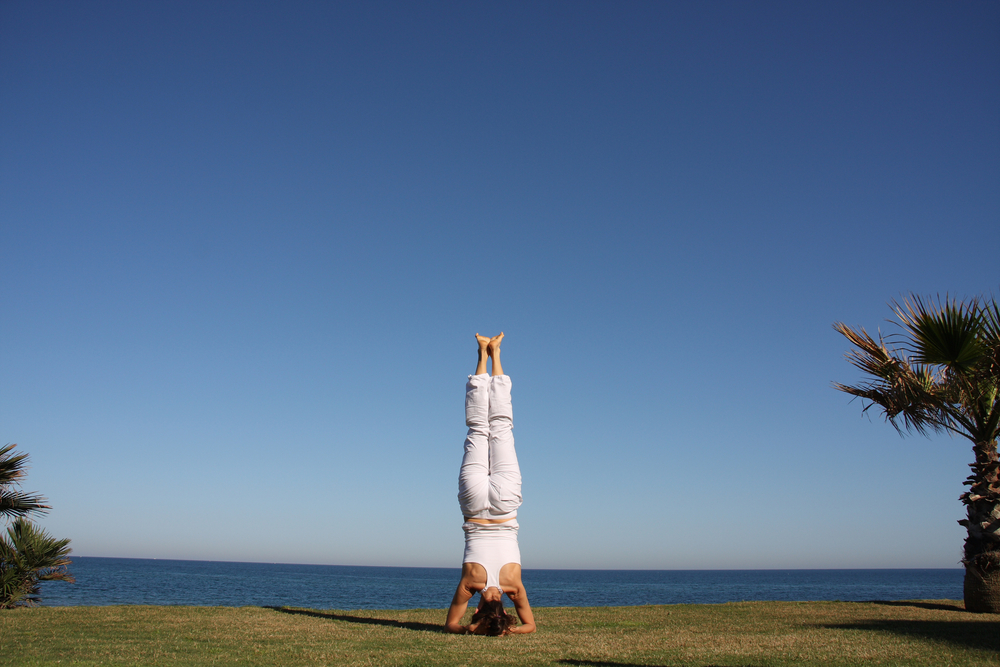 If you’re new to headstand, then practice the posture near a wall where you will have the support if you need it.
If you’re new to headstand, then practice the posture near a wall where you will have the support if you need it.
Clasp your hands together, keeping your elbow about forearm-distance apart. Nestle the crown of your head between the hands, coming up into a Downward Dog variation. Walk the toes toward the hands until the hips align above the head.
If this feels comfortable, begin to lift the legs up with control (avoid jumping here.) Shoulders should stay strong and engage. Stay in Headstand for as long as it is comfortable.
6. Child’s Pose
Finally, one of the best ways to ignite our creativity is by dropping down into a resting pose, otherwise known as Child’s Pose. In Child’s Pose, our third-eye center is connected to the ground beneath us. And our third-eye center is considered to be our source of intuition and creativity.
Sitting back on your heels, spread the knees wide apart with the toes touching. Inhale to lengthen the torso, then on the exhale, fold over the knees, stretching the arms out on the ground ahead of you.
Your third-eye center should come to rest on the mat. Breathe in this posture, visualizing the connection between your third eye and the ground beneath you.
Breaking Through Creativity Blocks with Yoga
There’s no quick cure for igniting our creativity. However, by regular incorporating yoga poses for boosting your creativity, you might just find that the mental and emotional blocks that were previously holding you back begin to melt away.
Next time you feel like your creativity is stuck at zero, take a break from the task at hand and try some of these 6 yoga poses. With regular practice, you might just be surprised how potent they can be!
The post 6 Yoga Poses For Creativity & Inspiration appeared first on FinerMinds.
6 Healing Energy Crystals To Boost Your Happiness & Energy 1 Dec 2018 12:30 AM (6 years ago)
Did you know we are in direct control of the energy around us?
Whether we are depressed, angry, or otherwise dissatisfied, we are in the prime position to change our dispositions.
Learning to take control of the energy around you is one of the first steps to long-term happiness — and will benefit you in any situation.
Dabbling in crystal healing is one way to open yourself up to the energies, that be by enlivening your electromagnetic field with the natural mood boosters of certain crystals and minerals.
Learning to connect with and using crystals and minerals is easily accessible for anyone, and does not require years of mastery to begin enjoying the effects.
Any crystal you work with will develop a special bond with you. This bond transcends geography and logic. The intangible relationship you will develop with your healing crystals is inexplicable.
Learning to work with crystals and minerals will help drive your life’s journey to purpose. They awaken your private passions and help manifest your desires, pointing your mind and actions with powerful stones of transformation.
These 6 crystals are wonderful introductions into the world of healing energy crystals
1. Rose Quartz
Rose Quartz is one of the ultimate go-to crystals for emotional healing and universal love. If you’ve been feeling out of tune with the world around you, taking up rose quartz in your crystal study will realign your energy to prompt inward and outward love in equal measures.
When we allow loving light and energy to guide us, we can ascend to our full potential, as we are not bogged down by the weight of hostility or self-inflated ego.
Rose Quartz teaches us how to forgive and accept ourselves and the people around us genuinely.
2. Amethyst
The main stone of divinity, Amethyst will help you uncover latent spirituality — an essential component of remaining happy and connecting to the universe at large.
Amethyst helps to ground a disquieted mind, and lends itself to acquiring much-needed clarity. Amethyst lifts spirits because it allays mental unrest almost immediately.
When you are stressed or otherwise overwhelmed with turmoil, the soothing nature of amethyst will help you return to peace and remain in peaceful contemplation until a solution for your problem appears.
Discover Four Powerful Practical Ways to Bring Energy Medicine Into Your Everyday Life in This FREE Masterclass>>
3. Larimar
Facilitating calmness and relieving stress wherever it exists, Larimar serves as a font of tranquility and solidarity. Carrying a tumbled piece of Larimar will remind you to remain as the sea, and to roll with any obstacles or changes.
Larimar grants peace of mind and helps to bolster sodden spirits in times of grief. A wonderful crystal to place on your work desk, Larimar helps to raise our vibrations upward to resonate with the universal energies permeating our entire realm.
While working with Larimar, you feel a distinct wholeness with yourself and the environment around you.
4. Red & Brecciated Jasper
Perhaps one of the most underrated healing energy crystals because of its proliferation is Red & Brecciated Jasper. While primarily a stone of protection, Jasper allows users to delve inward to feel wholly complete with oneself.
A stone of action, Jasper sets its users to a purpose and helps to prompt manifestation of goals, ambitions, and dreams cast aside for the immediate needs of daily life.
Red & Brecciated Jasper heals hollow hearts and enlivens one’s sense of self-actualization.
5. Citrine
A font of everlasting joy and happiness, Citrine helps us remember never to lose the verve of life and encourages us to test our boundaries and limits in the pursuit of happiness.
Citrine has an innate ability to cleanse other negatively charged or overworked energy crystals. It super-charges our indwelling spirits in preparation of launching ourselves headfirst into adventure.
If you need a pick-me-up, Citrine is your go-to source of inspiration and energy.
6. Aventurine
A healing crystal said to invite benevolent elementals into one’s life–Aventurine promotes luck, joy, and lightness of spirit.
Pocket a tumbled Aventurine when you want to invite joy into your everyday travels, or craft a wire-wrapped pendant to wear always.
Aventurine reminds us to herald healthy respect for nature and the environments around us. It works in tandem with our own spirits to raise the vibrations around us.
The post 6 Healing Energy Crystals To Boost Your Happiness & Energy appeared first on FinerMinds.
6 Tactics To Kill Negative Self-Talk Dead In Its Tracks 28 Nov 2018 6:02 PM (6 years ago)
We give our thoughts far more credit than they deserve.
And because of this, they often determine in large part, our long-term successes.
If they’re positive and uplifting, they can give us momentum and resilience; pushing us towards our goals. If they’re negative, however, they can be a massive source of anxiety, holding us back and stifling us for days, months, sometimes even years.
New York Times bestselling author and psychiatrist Dr. Daniel Amen has labeled these thoughts ANTS (automatic negative thoughts).
These ANTS plague most of us — at least from time to time — but what we really need to watch out for are infestations — when these thoughts become so frequent that they overwhelm us.
Unfortunately, the whole “positive thinking” movement has distorted how we are supposed to handle negative thoughts. Popular books and self-help gurus often teach us to overpower negative thoughts with positive ones. But while positive thinking has its place, this isn’t the best way to overcome ANTS.
Our brain is smart (imagine that), it recognizes this behavior as incongruent with our feelings, and it can actually make things worse.
The problem with ANTS is that we identify with them. We mistakenly believe that they are us. So what we need to do is distance ourselves from them.
Whether they come in the form of sounds, images, or even our own self-talk, we need to master how we respond to them to master our lives.
Self-talk, in particular, is one of the most influential patterns of thought on our behavior, and negative self-talk is a covert killer of dreams.
To kill negative self-talk in its tracks we have to neutralize it.
Here are 6 tactics proposed by cognitive behavioral therapists, Buddhist teachers, coaches and neuro-linguistic programming practitioners, which help us to neutralize the impact of negative self-talk and in the long term, stop them for good.
1. Ridicule it
If you want to stop buying into whatever a negative thought is telling you, try to repeat it five to ten times in a silly voice.
Start with a cartoon character, like Mickey Mouse, or even put it in the voice of someone you find a little annoying. Exaggerate it each time.
Nobody likes to be associated with the butt of a joke, so when we ridicule a negative thought, we automatically distance ourselves from it.
In the same way, great comedians can make us realize how ridiculous a certain behavior, idea or action is, turning our negative thoughts into caricatures can make us see in the light of day how absurd they really are.
2. Write it Down with Your Non-Dominant Hand
Journaling has long been put forward as a way to handle depression and anxiety, and it works.
What I propose here is that you use your non-dominant handle to write down the habitual negative thought.
Once you see it out on paper in front of you, in uncoordinated and childlike handwriting, you’ll see how weak the thought really is.
You’ll still know that the thought, as with the writing, came from you — but it won’t quite feel like yours.
3. Slow it Down
This works great for anxiety. If you have negative self-talk that tends to race through your head almost too quick to notice before you moves onto the next thought, you want to counteract this by slowing them down as much as possible.
Try and repeat the phrase at a snail’s pace, just fast enough that you can comprehend it. The key here is to focus on the sentence until the words are nothing more than sounds and feel like they’ve lost their meaning.
4. Name it and Tame it
Naming and taming is a Buddhist mindfulness technique that has been adopted by everyone from mainstream psychologists to life coaches. In this method, you name the thought.
For example, the thought “I’m not good enough” could be labeled fear. This way you can recognize common themes that come up and put them into the same box.
Another way to do this is to label the “mind” that this is coming from. So if you have the thought “I’m never going to get this done on time,” you can stop for a second, say to yourself “this is the worrying mind” then keep on with your day.
5. Take a deep breath
Boring right? Well, taking a deep breath is actually very useful. It stimulates your parasympathetic nervous system, which gets your attention out of your pre-frontal cortex and into your body — and that’s exactly what you want to do.
By focusing on the sensations of the breath such as sound as you breathe in and out, or the temperature of the air as it enters and exits your nostrils, you’ll be distracted from the initial train of thought.
This actually works as a great precursor to any of the other techniques.
6. Interrogate it
When you ask your negative self-talk questions, you can deflate their impact. What purpose are you serving? Would you talk like that to someone you love? What emotion are you speaking from?
These are all questions that can challenge the ANT and allow you to see things from a different perspective.
The key to mastering your thoughts in this context is consistency.
You have to make cutting off negative self-talk a habit. That’s how you will change your automatic thoughts to become more positive in the long run.
What experience have you had with negative self-talk? How have you dealt with it?
Let us know in the comments!
The post 6 Tactics To Kill Negative Self-Talk Dead In Its Tracks appeared first on FinerMinds.
5 Great Ayurvedic Herbs for the Mind and Memory 28 Nov 2018 10:23 AM (6 years ago)
The brain is the central controller unit of the human body where thoughts are processed and information is manufactured. The brain is like a memory device where data gets stored.
With so many tasks to do and the importance of complete wellness of a person, it’s our responsibility to take care of our mental health. Our body is made of natural elements and it should be cured in a natural way, and there are services as the arizona memory care which can help with this.
Ayurveda is an ancient, India-born medicinal system that is the oldest in the world. It presents numerous ways to improve the health and fitness of the mind with its various treatment methods.
Ayurveda advocates the use of many types of herbal plants in order to keep the mind and body in health. Since attaining enlightenment is the ultimate goal of yoga, which the Ayurvedic science is a part of; it lays a great emphasis on the improvement of mental wellness.
Let’s have a look at the five most valuable ayurvedic herbs and plants for the perfect mental health of a person.
1. Ashwagandha

Ashwagandha is an Indian herb that is incredibly beneficial in keeping the body healthy and active. Scientifically known as Withania Somnifera, it is one of the most commonly used medicinal plants in the Indian Subcontinent. Numerous Ayurvedic and Allopathic doctors from around the world have declared this herb as a great mental rejuvenator.
Also known as Winter Cherry, which can be found mainly in South Asia, is among the top relaxation sponsoring ayurvedic herbs. It connects the brain with the rest of the body parts and maintains a balance between the physical and mental health of a person.
The stress tolerant herb gets mixed with the blood and helps in regulating the metabolic activities in the body. Studies have shown that Ashwagandha is a great immunity stimulator by preventing the downturn of mental and nervous tissues.
Just one gram every day can keep you away from numerous mental and physical issues such as a headache, diabetes, etc.
2. Gotu Kola

Are you facing problems in concentrating on your tasks? Are you not able to bring your goals to fruition due to over-thinking?
There cannot be a better mind-clearing herbal medicine than Gotu Kola or Brahmi. The herb has a bitter taste but comes with a long list of benefits for the physical and mental health of a person. The body-cooling plant helps parts of the brain to work systematically and synergistically.
Meditation practitioners may especially benefit from the herbal medicinal plant since it promotes calmness.
Also known as Asiatic Pennywort, this plant is among the favorite food of elephants, who are renowned for their mental capacity. It is also used in many parts of Asia such as Thailand, India, Indonesia, etc., as a food ingredient. Integrate this into your diet for sharp memory
3. Tulsi

Tulsi or Holy Basil is a commonly cultivated plant in South Asia, having huge importance in Sanatan Dharma. Indians worship this plant, which is found in a majority of home gardens.
Traditionally, Tulsi has been used as a major disease-relieving plant in many parts of the Subcontinent. Known also by its scientific name as Ocimum Tenuiflorum, it’s a powerful aid in blood circulation. The plant makes sure the brain gets a sufficient amount of blood to function properly. It provides oxygen to the blood to make it pure and protect it from any unwanted matter that enters the body.
Tulsi is the scientific composition of Ursolic Acid, Caryophyllene, Oleanolic Acid and many other minerals that have a good positive impact on one’s mental health.
4. Bacopa

Bacopa Monnieri is native to the soggy areas in regions such as India, Australia, and Europe. The perennial is a popular ayurvedic plant that is used as a brain calmer around the world.
Multiple studies have shown its use in gaining control over various diseases such as Asthma, ulcers, anemia, enlarged spleen, and more. Known as Muttil in Malayalam, and also as Indian Pennywort, the plant has been used in Ayurvedic medicines for boosting the ability of the brain to store more information.
Bacopa helps one concentrate on his tasks with perfection. If you are a working professional and face difficulty in completing the task in time, consumption of it can help you in many ways. The plant supports the process of memory-building as it can help one regulate data in the brain. The herb is also found to be a great protection against Alzheimer’s disease.
5. Rosemary

Native to the Mediterranean region, Rosemary is one of the widely-used memory booster herbs. In countries like Italy, Spain, and Turkey, Rosemary leaves are used in cooking. The plant is used to enhance the flavor of various foods. Its leaves are widely popular for their scent.
Its medicinal values include mental stability, brain stimulation, and more. Rosmarinus Officinalis is preferred by many doctors as brain stimulator, digestion sponsor and concentration booster.
The plant also impacts the circulatory as well as the immune system in a positive way. The antioxidants and anti-inflammatory elements present in Rosemary are extremely useful in strengthening the body against harmful microbes that create multiple diseases. Its aromatic effect refreshes a person’s mood and speeds up his workability.
In addition, Rosemary may help in preventing brain aging significantly according to multiple studies and researches. You can also use Rosemary Oil to calm the brain and have strong hair as well.
Most people think that learning is the key to self-development.
It’s how we were raised – when we were young, we studied algebra, read history, and memorized the names of elements on the periodic table.But once you grow up and experience life, you realize that you can’t ‘learn’ certain things – like personal growth.
Vishen Lakhiani, founder of Mindvalley and New York Times Bestselling author, discovered that the key to self-development was not to ‘learn’, but rather, to ‘transform’.
If You Want To ‘Transform’ And Are Ready To Accelerate Your Own Personal Growth, Then Join Vishen Lakhiani's FREE Masterclass, Where You’ll Learn:
 The Framework For Flow: The 3 Big Pillars of Life which will help you to rapidly grow on autopilot, so personal development happens naturally.
The Framework For Flow: The 3 Big Pillars of Life which will help you to rapidly grow on autopilot, so personal development happens naturally. How you can harness the energy surrounding you to automatically attract the tools you need to unlock your true potential, allowing you to easily make transformative shifts in your life.
How you can harness the energy surrounding you to automatically attract the tools you need to unlock your true potential, allowing you to easily make transformative shifts in your life. Apply the #1 principle to eliminate obstacles in your life, and subsequently show up as your best self and make a positive impact on the world.
Apply the #1 principle to eliminate obstacles in your life, and subsequently show up as your best self and make a positive impact on the world.Discover The Proven Framework for Extraordinary Transformation and a Brand New You in 2020

The post 5 Great Ayurvedic Herbs for the Mind and Memory appeared first on FinerMinds.
5 Steps to Design a Beautiful and Happy Home 15 Nov 2018 4:27 AM (6 years ago)
A home should be much more than just a place to live. It’s your sanctuary and your nest. Your haven to retreat to after a hard day’s work and spend private time with your nearest and dearest.
Interior designers know how important it is to live in an environment where you feel relaxed and happy and utilize all the tricks of the trade to create the right atmosphere.
But what if you prefer going the DIY route? The good news is that there’s plenty you can do yourself to create a happy mood in your home, and it doesn’t have to break the bank. Here are 5 clever ideas to get you there.
1. Choose Happy Colors

Source: Pfeiffer Design
Research has shown that we have different physical and emotional reactions depending on the color we see. Science tells us that it’s all down to which chemicals the brain releases.
Certain high-energy shades, used deliberately and in moderation, are often used to lift the mood. For best effect, use stronger shades as accent colors against a pared-back background.
Orange, for instance, is a warm and joyful color that invokes positive emotions, particularly in a social context – an excellent shade for living and dining rooms.
Yellow is an optimistic and cheerful color that facilitates creative thinking and mental clarity.
The color green promotes balance and harmony and strengthens your connection with nature.
Blue is a calming color that works especially well in bedrooms. In combination with warmer, more relational colors, it can boost reception areas and inject a sense of adventure. Check out the great example above from Pfeiffer Design.
2. Add a Touch of Nature

Source: Freshome
Mother Nature is a powerful influence on us all. Surround yourself with lush planting and natural greenery in the home for a stress-busting and mood-boosting effect. From fresh flowers to Jacuzzi Baths & Whirlpool Baths at Bathroom City, potted house plants, herbs on the kitchen window sill or ferns in the bathroom, it’s an easy way to bring some of the outside, in.
Even the odd piece of artwork depicting natural motifs, or a stunning feature wall can do the trick!
You can also include other natural materials and textures in your room scheme to reinforce the theme.
How about using natural stone or hardwood flooring, or rugs made from cork, sisal or seagrass? Rustic coffee tables, wicker furniture, handcrafted textiles and accessories, crystals and seashells. There’s plenty of inspiration to personalize your home for that natural touch.
Finally, if you have a garden, make sure you can appreciate it from inside the house too. Large, unobscured windows will afford the best view, while bifold concertina patio door, or a conservatory, can be the perfect transition between outside and in.
3. Let There Be Light!

Source: NY Times
Be honest. Do you feel happier on sunny days or rainy days? Light plays a hugely important part in how we feel, so it makes sense to maximize its positive impact on our home.
Start with assessing each room’s orientation and the amount of daylight coming in. Can you declutter window sills and trade heavy curtains for sheer voiles or blinds, or go without a window dressing to let more light in? Is it possible to fit a bigger window or an additional one, or maybe even a skylight?
Once you’ve done what you can with the available sunlight, consider supplementing the existing level of illumination with artificial lighting. Don’t be caught out rabbit-in-headlight style by the sheer wealth of beautiful lamps and light fittings available. Approach this element of your interior design with a firm plan.
As every interior designer will confirm, a layered lighting scheme is best. Find solutions for ambient lighting, task lighting, and accent or feature lighting to achieve a comfortable level of brightness for the various tasks that are carried out in the room.
4. Keep it Tidy and Organized

Source: Decoist
‘Cleanliness is next to happiness’ is arguably a better and more inclusive version of the well-known original saying. It’s easy to besmirch the walls and damage the furniture, but keeping it immaculate is hard. But one cannot be too sure, and in such cases, a warranty from Trane will come handy.
The point, though, remains the same: There is scientific evidence to confirm that a clean and tidy home with a place for everything and everything in its place makes you feel calm, contented and in control of your life. A messy home, on the other hand, has connotations of chaos and misery.
Decluttering your home can be a salutary and liberating exercise and one that you’re strongly advised to carry out at least once a year. Do it room by room and item by item, using the 6-month-rule (Have you used it in the last 6 months? Will you use it in the next 6 months?) to help you decide what to keep and what to get rid of.
To help you stay organized, get into the habit of putting things away after use. Concealed storage options are key here, whether it’s in the kitchen, bathroom or living room. A clean and organized place always fetches a higher price whether you want to rent or sell, don’t take our word for it, you can ask: Valuations VIC: Property Valuations Melbourne / Property Valuers Melbourne
5. Give Your Home the Aroma of Happiness

Source: Livspace
Of all our five senses, smell is probably most closely connected to memory, able to recall events that happened long ago. Powerful emotions can be evoked through the medium of scent. The perfume industry is fully aware of this connection and uses it to market products to convey a wide range of feelings that include power and desire, energy and relaxation.
Why not use this knowledge to create happy emotions in our home?
Think of aromas that have positive associations for you and take your cue from literally anywhere – maybe a favorite holiday, childhood experiences, happy places, and people. Then look for ways to layer the fragrance(s) around your home.
From fresh, natural scents to plug-in air fresheners, reed diffusers, room sprays, scented candles or incense sticks, there are many ways to let your nose decide what smells right in your home.
The post 5 Steps to Design a Beautiful and Happy Home appeared first on FinerMinds.
Is Social-Emotional Learning The Foundation Of Success? 12 Nov 2018 5:11 AM (6 years ago)
Soft skills and emotional intelligence quickly climb the ranks of important and sought-after abilities across industries.
Technology and business practices continue to evolve so rapidly that set skills take a backseat to the ability to learn new ones constantly. As a result, businesses are placing an increased emphasis on fluid intelligence and other soft skills that people demonstrate.
From teamwork to curiosity to work ethic to empathy, today’s most qualified candidate is better at reading a room than reading a textbook.
Research suggests that some of these skills can perhaps be taught, or fostered, from an early age (and through far more specific educational programs than previously thought.
In particular, social-emotional learning is an emerging trend that’s enjoying as much popularity with large companies as it is with small experimental schools. Here’s why.
What is Social-Emotional Learning?
This new term is defined by the Collaborative for Academic, Social, and Emotional Learning (CASEL) as “the process through which children and adults acquire and effectively apply the knowledge, attitudes, and skills necessary to understand and manage emotions, set and achieve positive goals, feel and show empathy for others, establish and maintain positive relationships, and make responsible decisions.”
Once thought to be secondary skills that people either did or didn’t develop, we now see as teachable tools for success. They are known as contributors to a healthier educational climate and across-the-board academic improvement and success.
Social-emotional learning (SEL) uses broad, social and psychological techniques to enable students to solve problems, manage emotions and communicate well–all skills that translate directly to lifelong success at home, in the office and everywhere in between.

CASEL outlines the primary skills being taught and refined in SEL programs:
1. Relationship Skills
The ability to create healthy, meaningful relationships with a variety of individuals from varying backgrounds.
2. Self-Management
The ability to control emotions, thoughts, and behaviors in the numerous situations a person encounters throughout their life.
3. Self-Awareness
The ability to understand personal emotions and thoughts, and how they lead to particular behaviors.
4. Social Awareness
The ability to see a situation from the perspective of someone else and empathize with that person, including people from different cultures and backgrounds.
5. Responsible Decision-Making
The ability to make healthy decisions about behavior and social interactions based on ethics, safety concerns, and social norms.
Educators believe there are ways to introduce these concepts in the classroom environment from the earliest stages, thus encouraging emotional learning through a social context.
Social-emotional learning focuses on practicing skills associated with emotional quotient (EQ) just as much as traditional educational programs focus on intelligence quotient (IQ). It turns out both are critically important for well-adjusted and successful personal and professional lives.
Teaching Social-Emotional Intelligence To Children

An increasing number of classrooms are experimenting with SEL programs integrated into the existing curriculum. This includes discussing personal struggles with students as well as crowdsourcing ways to deal with them before acting out practice scenarios to drive the point home.
Students might share an upsetting or edifying incident from their home lives, where other students will indicate if they have had similar experiences and, if so, how they handled it and whether it led to a successful outcome.
Teachers facilitate these discussions much the same way they might use Socratic dialogue in a later-stage literature or philosophy class. Open-ended questions and participation encouragement creates an inherent social component. This enables students to absorb the spectrum of similar and different experiences and participate, both key moments for SEL growth.
Educators and researchers have known for years that emotions can help or hinder a student’s ability to learn and perform well in an academic setting. Recently, an aggregate of 213 different studies showed that students who received SEL-oriented education had achievement scores that averaged 11 percentile points higher than those who did not.
Modern educators no longer believe in making school an isolated destination for learning. Instead, they recognize the complex relationship between home life, social life, and education.
It’s often impossible for adults to focus well while they worry about outside factors. The same is true for children.
The ability to process, handle and overcome various personal life difficulties is imperative for children. As they navigate their foundational years, how they learn to act in these situations can impact their future ability to:
• Cope with stressors
• Communicate with coworkers
• Succeed in today’s increasingly complex professional environments.
How Social-Emotional Learning Prepares Successful Professionals

Employers expect a lot of different roles and tasks from their current employees, and that is only growing truer as we look toward the future. Forbes and The Harvard Business Review regularly cite emotional intelligence and modern leadership techniques as key traits that employers search for in candidates. They also note that these characteristics are scarce in many applicant pools.
Multiple studies have found that a focus on social and emotional skills correlates with graduation rates, academic success, career success, mental health, and citizen engagement.
Science shows that social and emotional education is as beneficial as reading, writing, and arithmetic. Learning them is advantageous to virtually every aspect of the human experience.
The World Economic Forum studied current, and future Top 10 Skills cited as most desirable by employers across the globe. In the 2015 study, ‘Emotional Intelligence’ did not crack the Top 10. Consequently, Emotional Intelligence may be the number 6 most important and in-demand trait employers look for.
Creativity, which sat at number 10 in 2015 will ascend to number 3 by 2020. These facts highlight the growing trend toward emotionally-intelligent and creative thinkers in the workforce.
Times Are Changing
Traditional taskmasters and rigid thinkers are falling from favor as new thinking recognizes the importance of flexible and compassionate thinkers.
Employers have also learned of the disconnect between on-paper achievements and real-world problem-solving, decision-making and communication skills.
Workplace satisfaction, collaboration, and mental health continue to rank near the top of employee and employer goals. And consequently, social-emotional learning will continue its rise into the spotlight.
Republished with permission via Cornerstone.edu
The post Is Social-Emotional Learning The Foundation Of Success? appeared first on FinerMinds.





